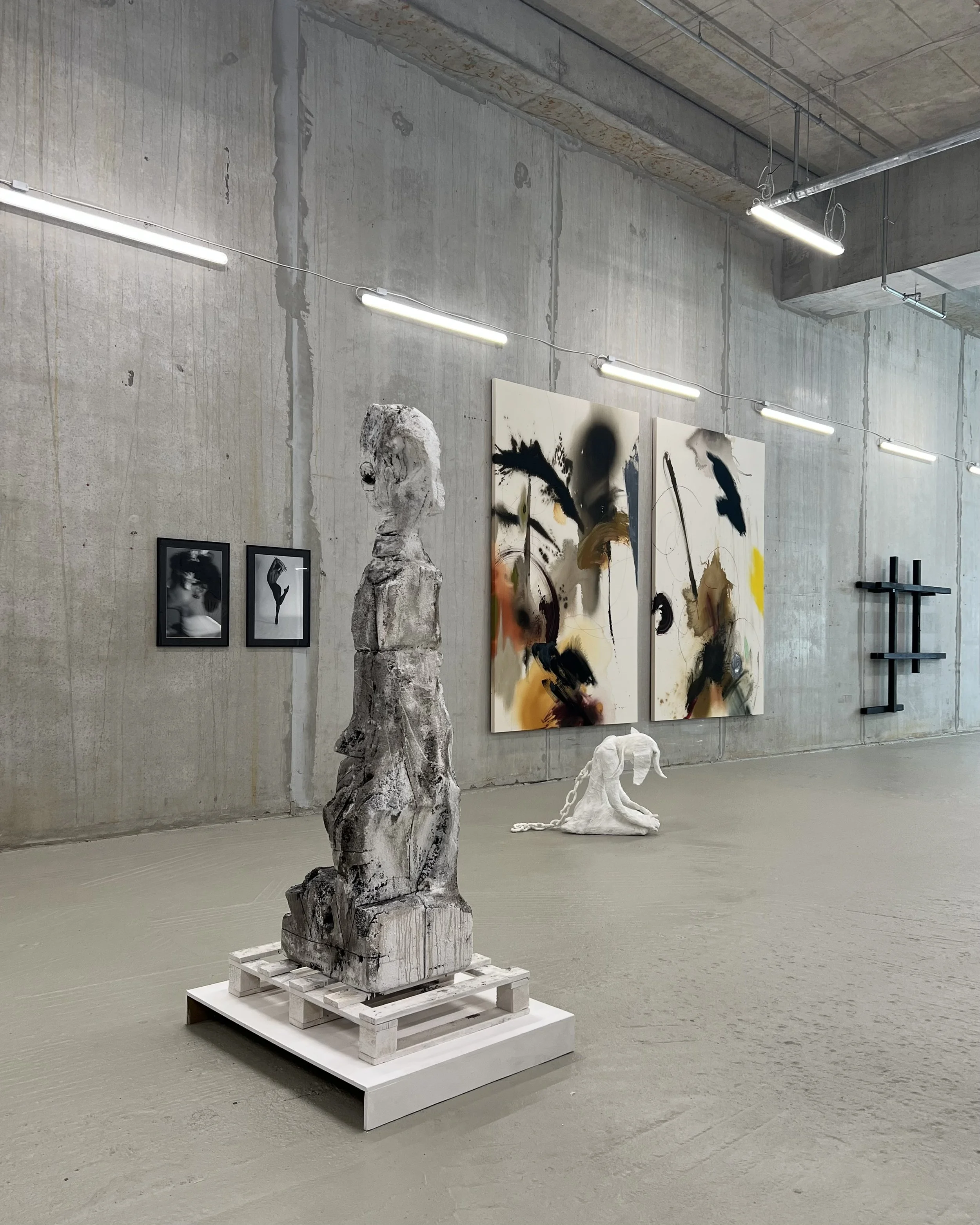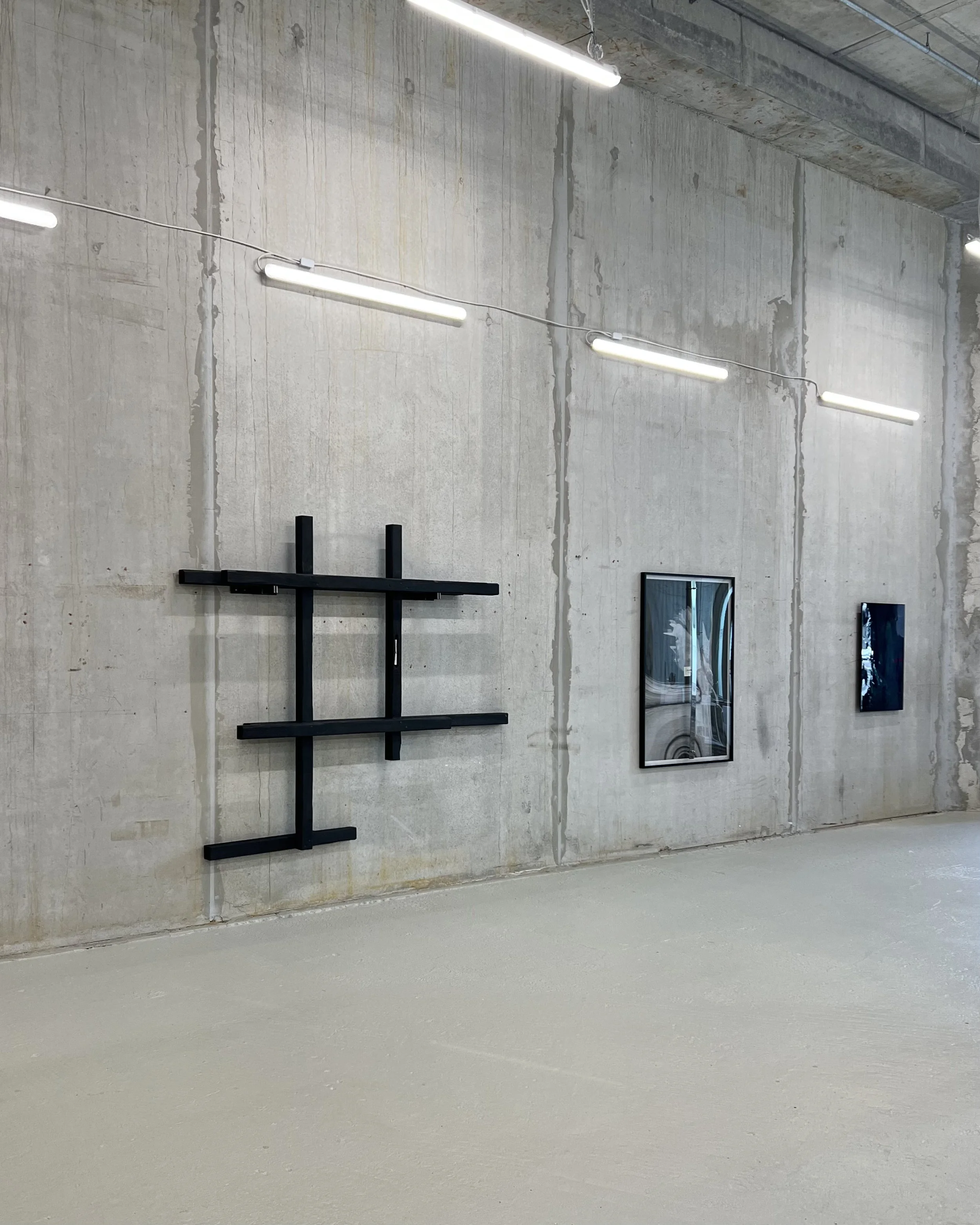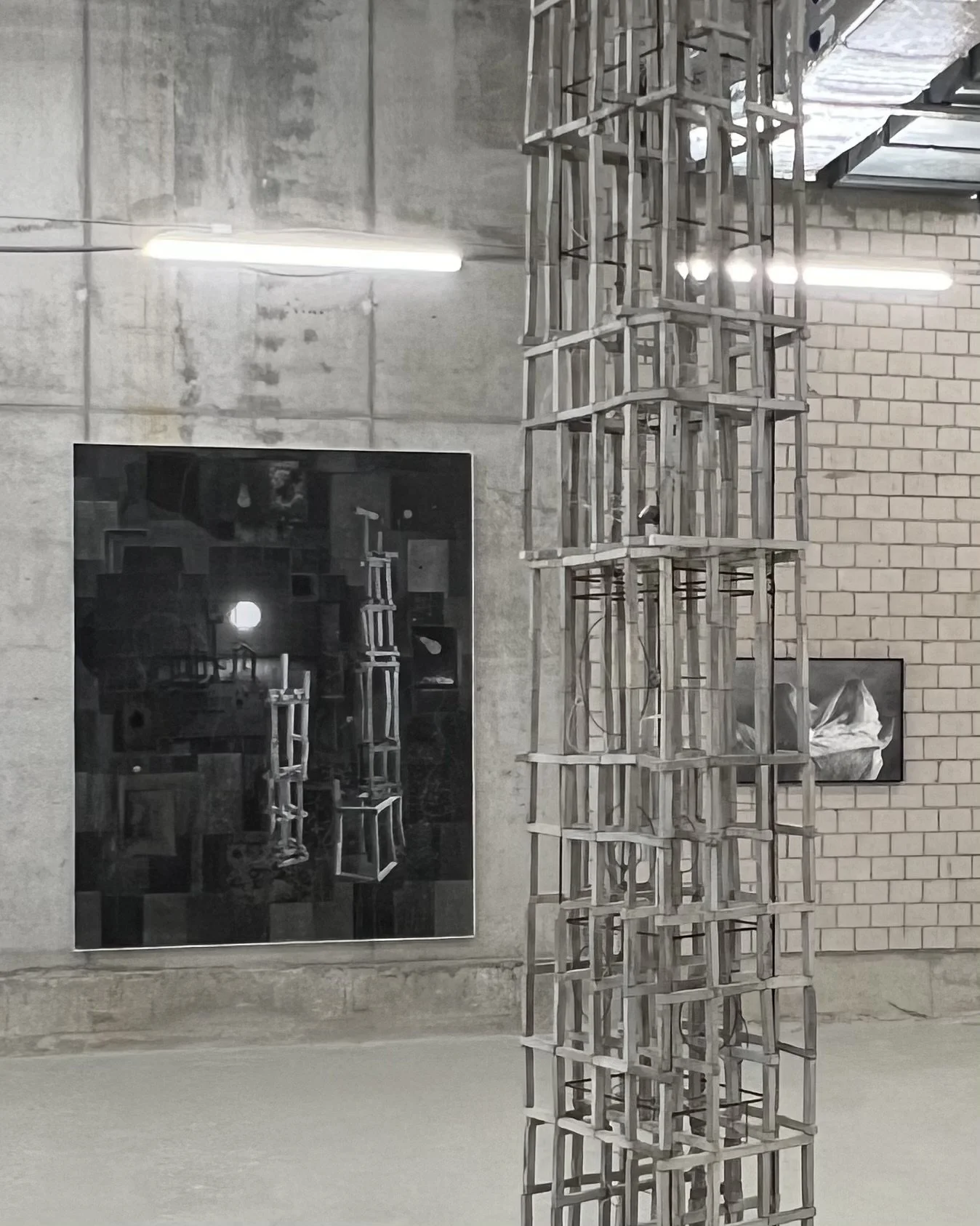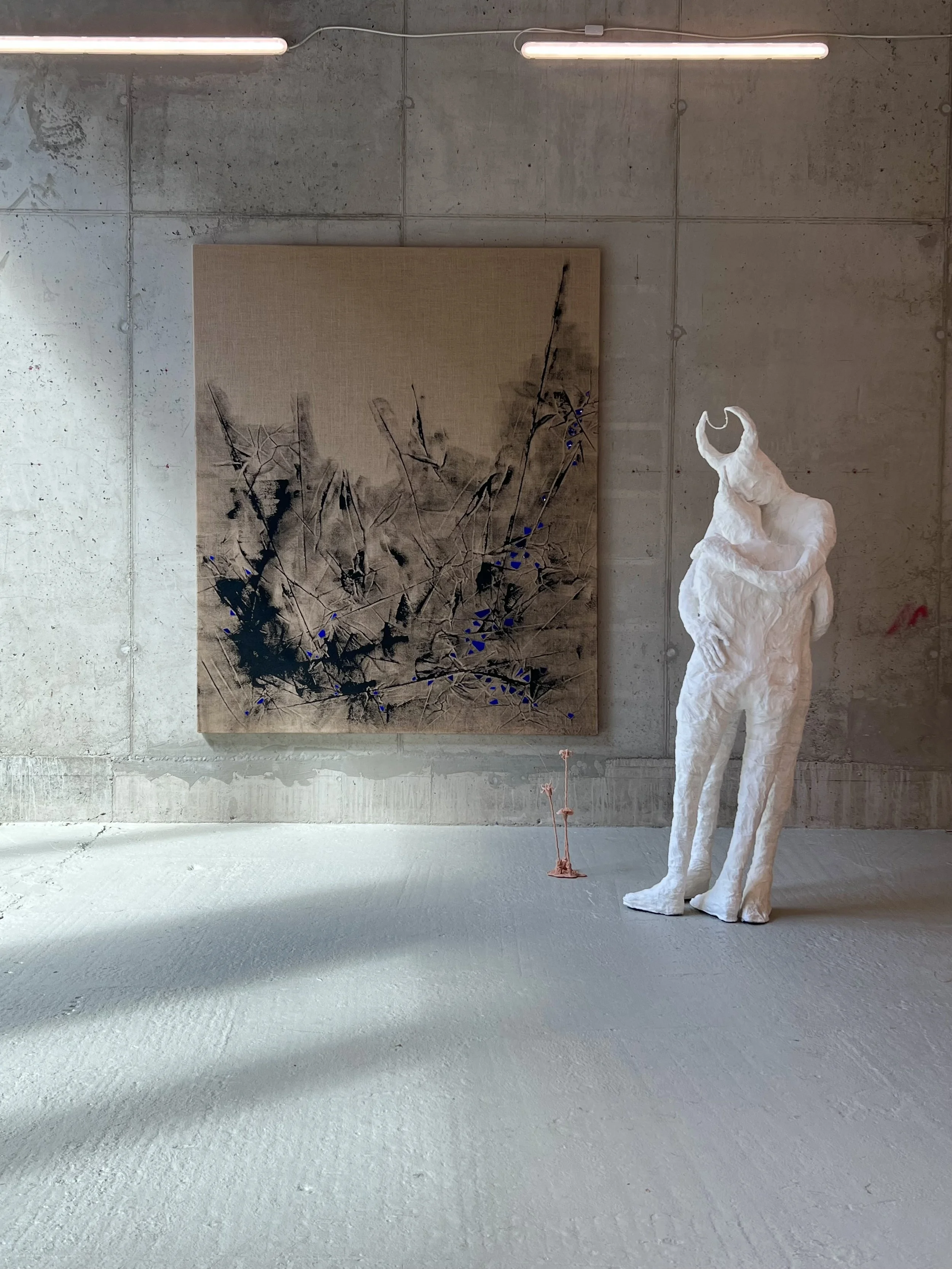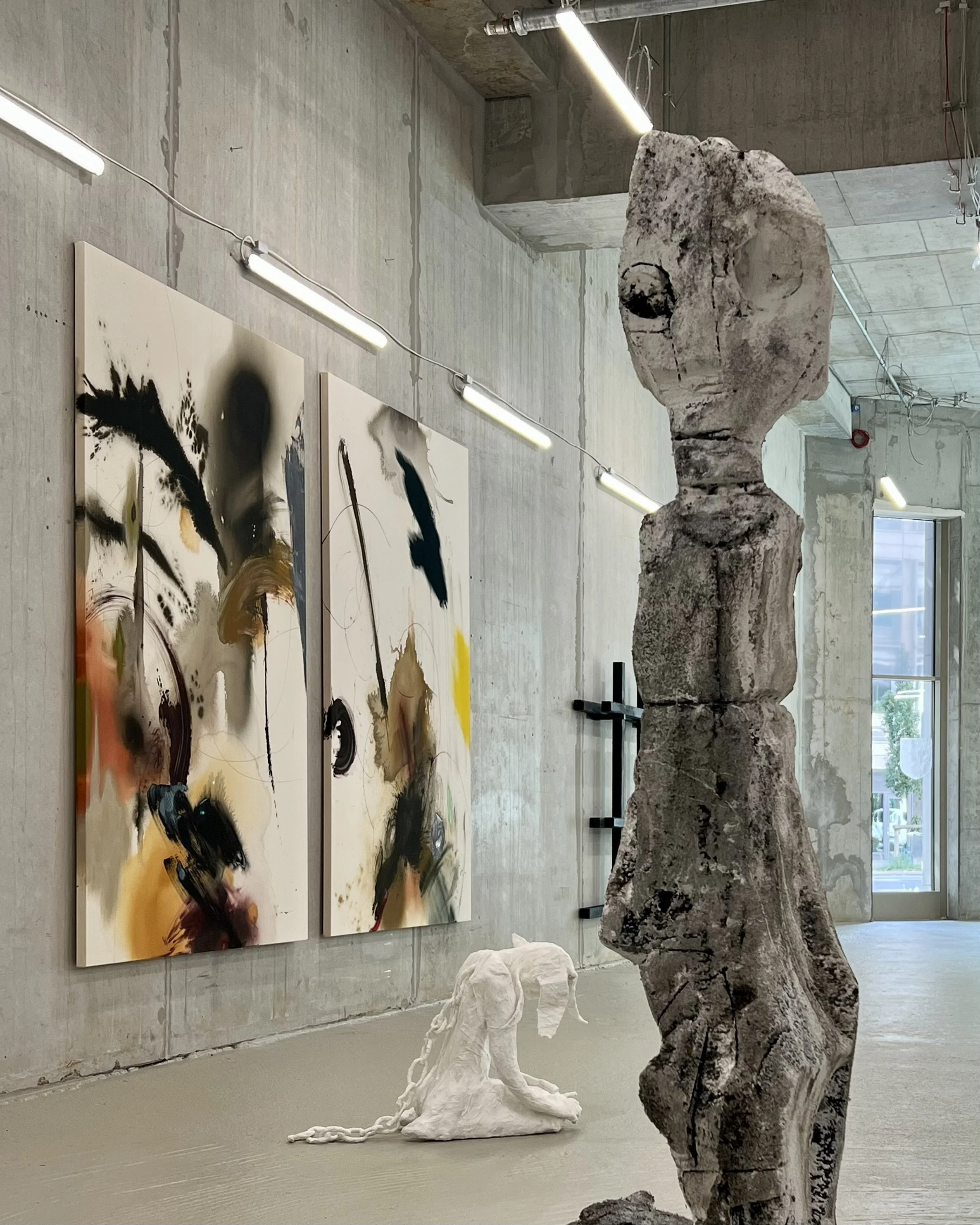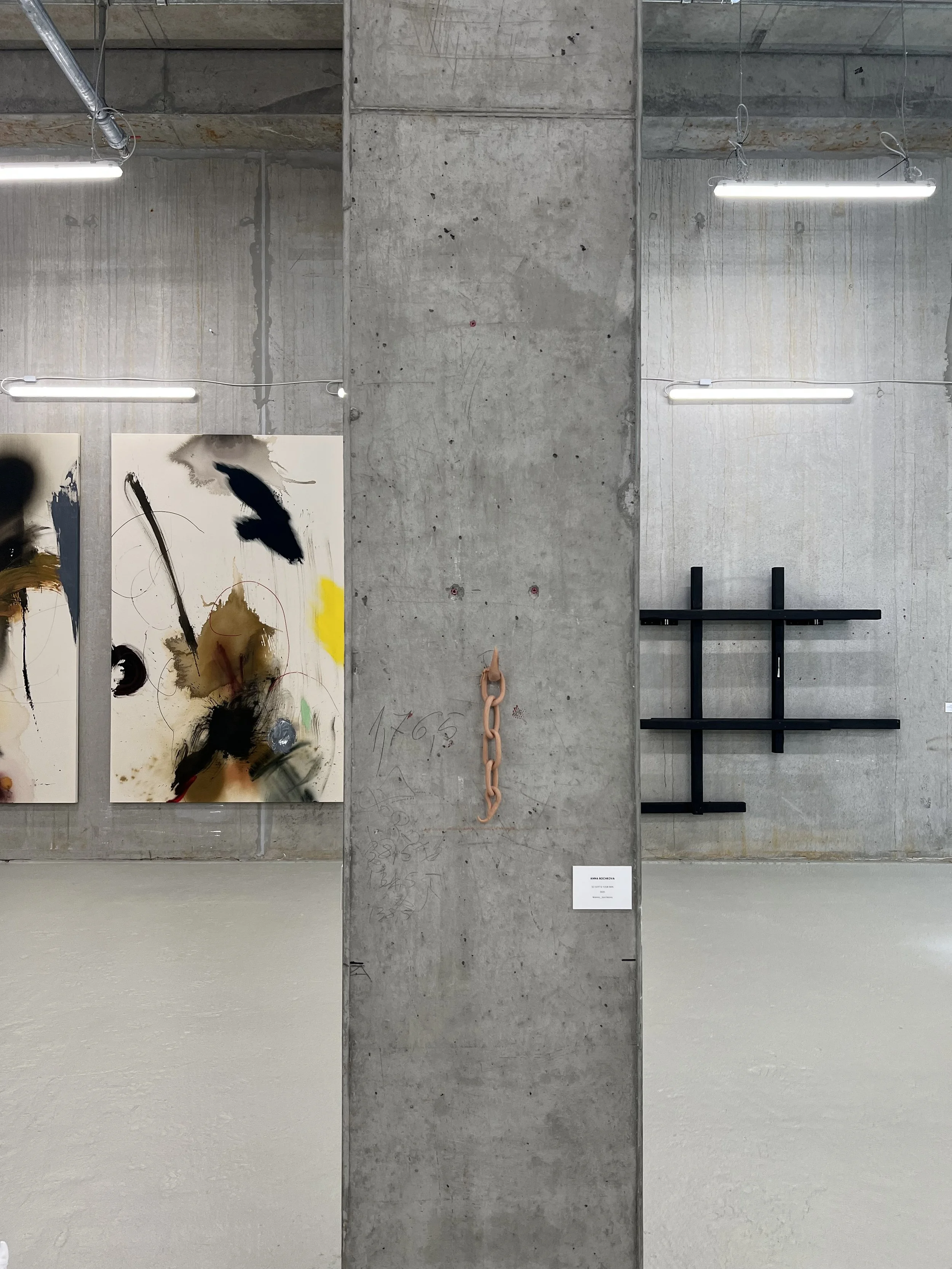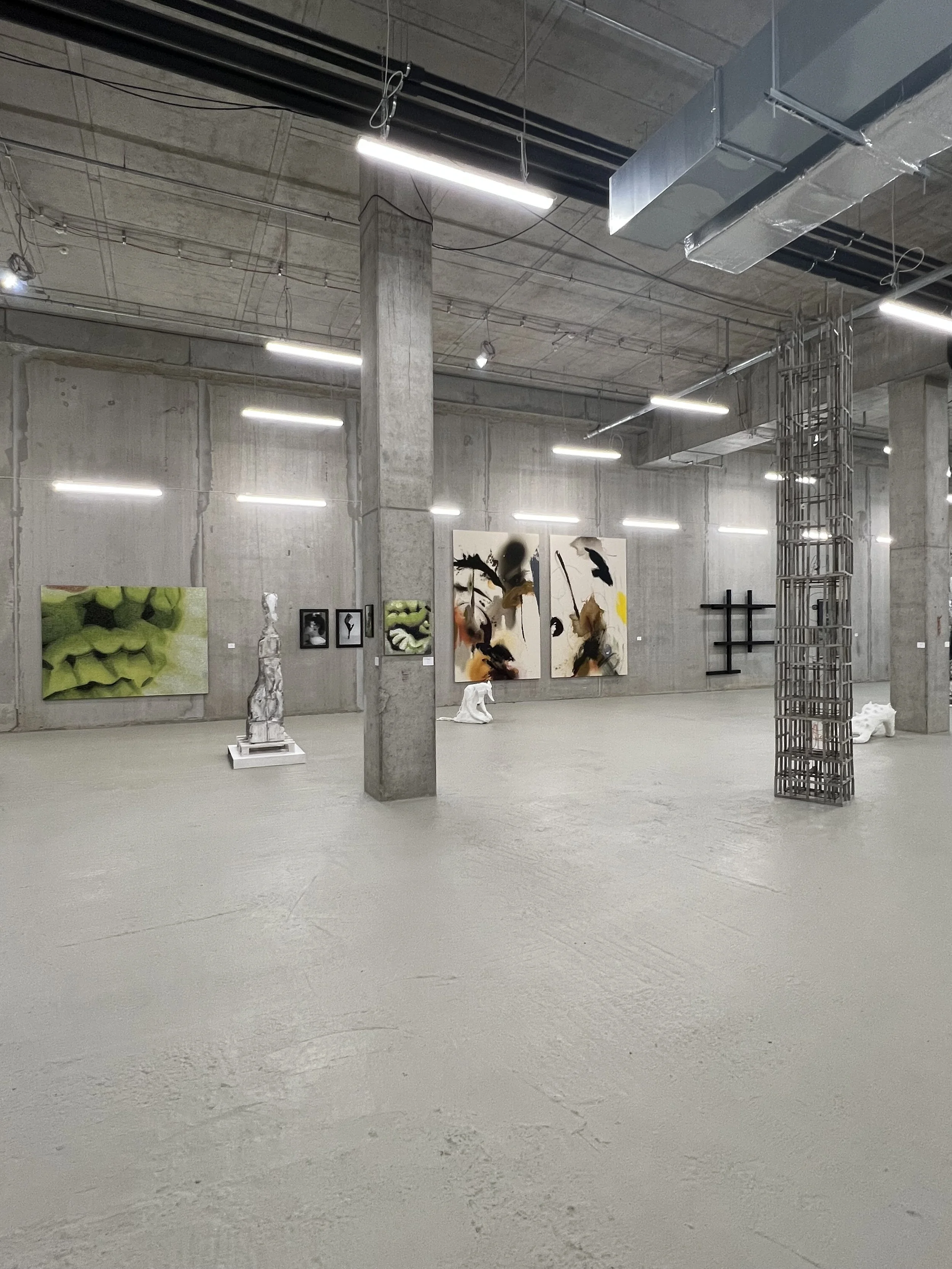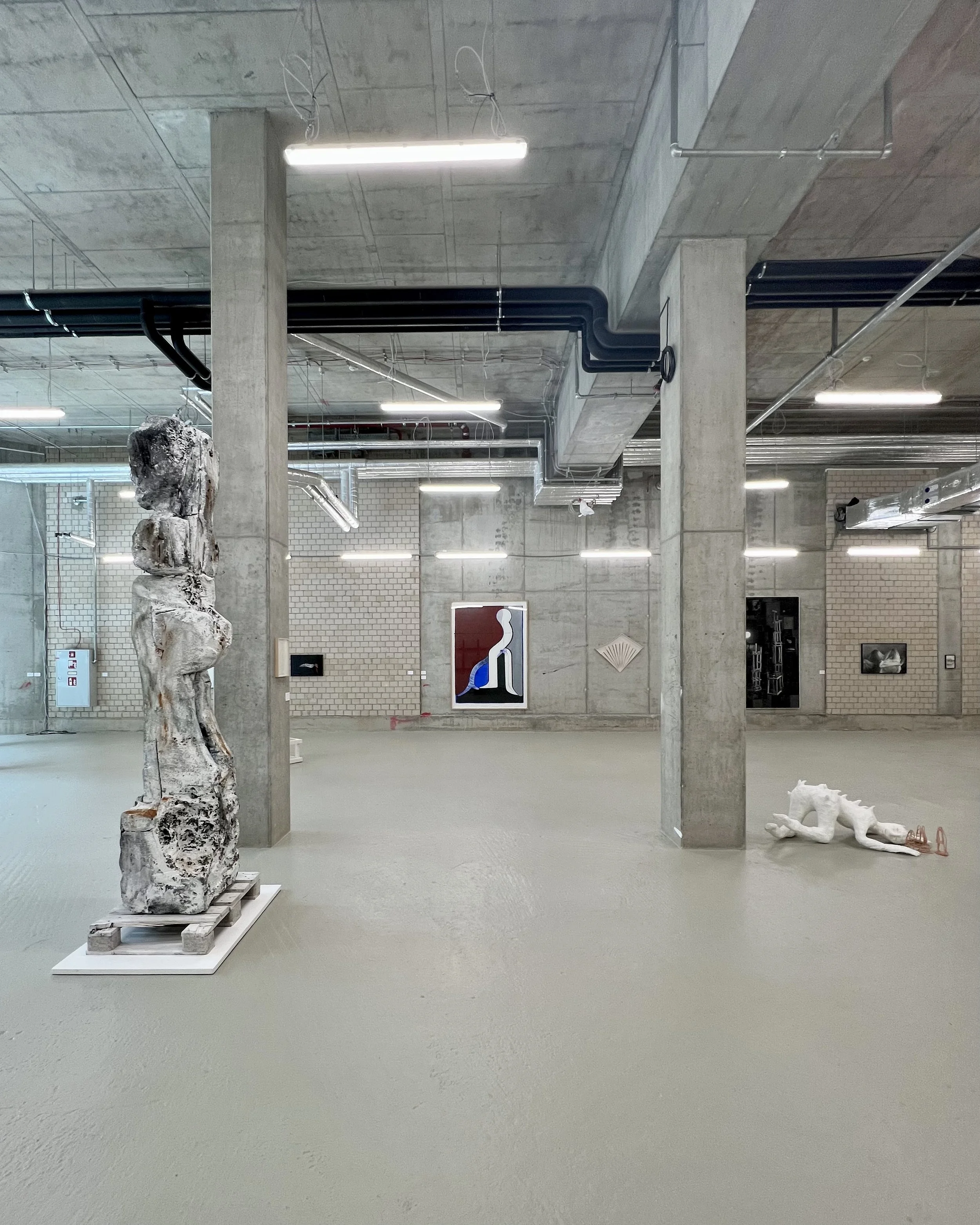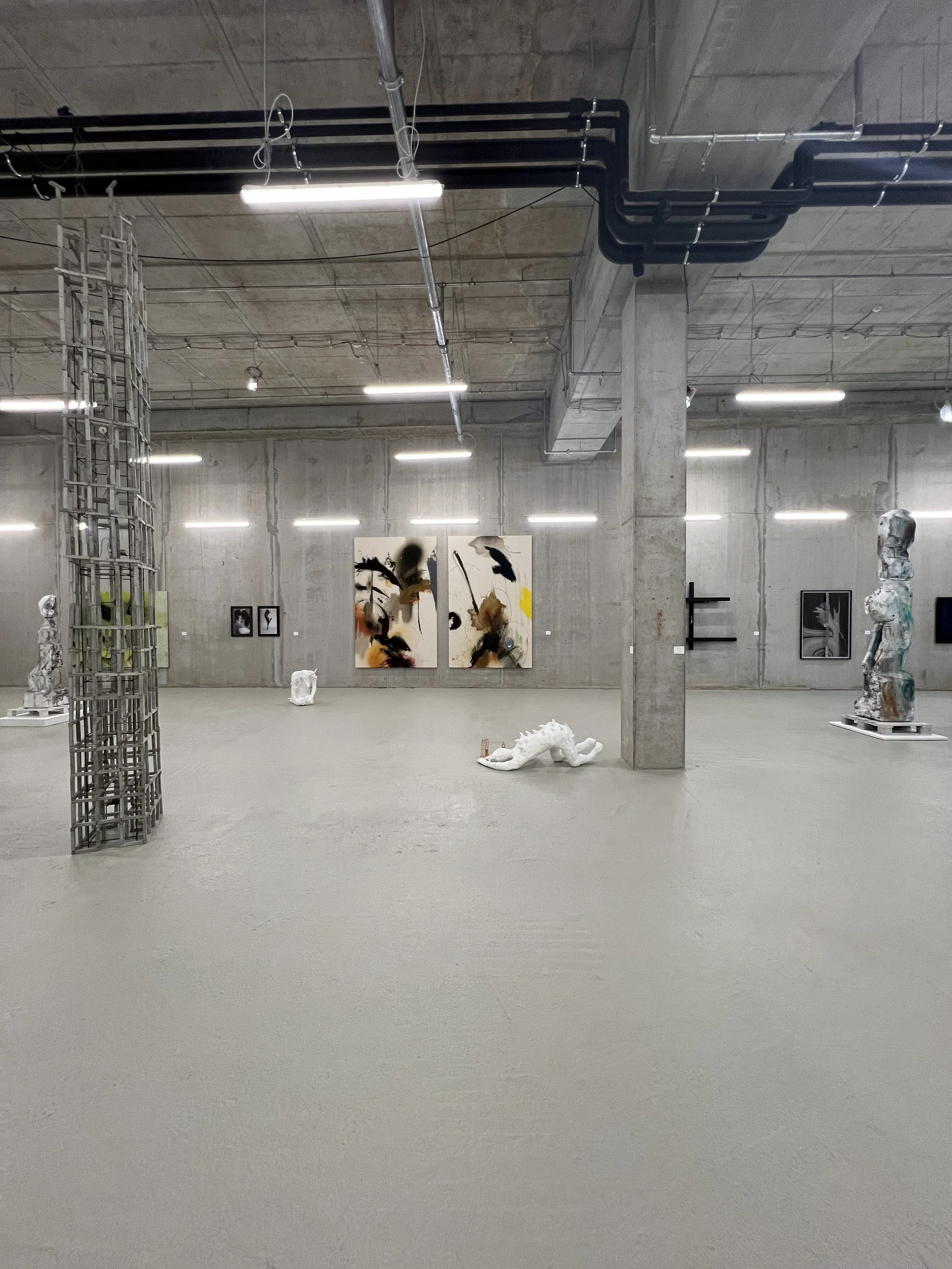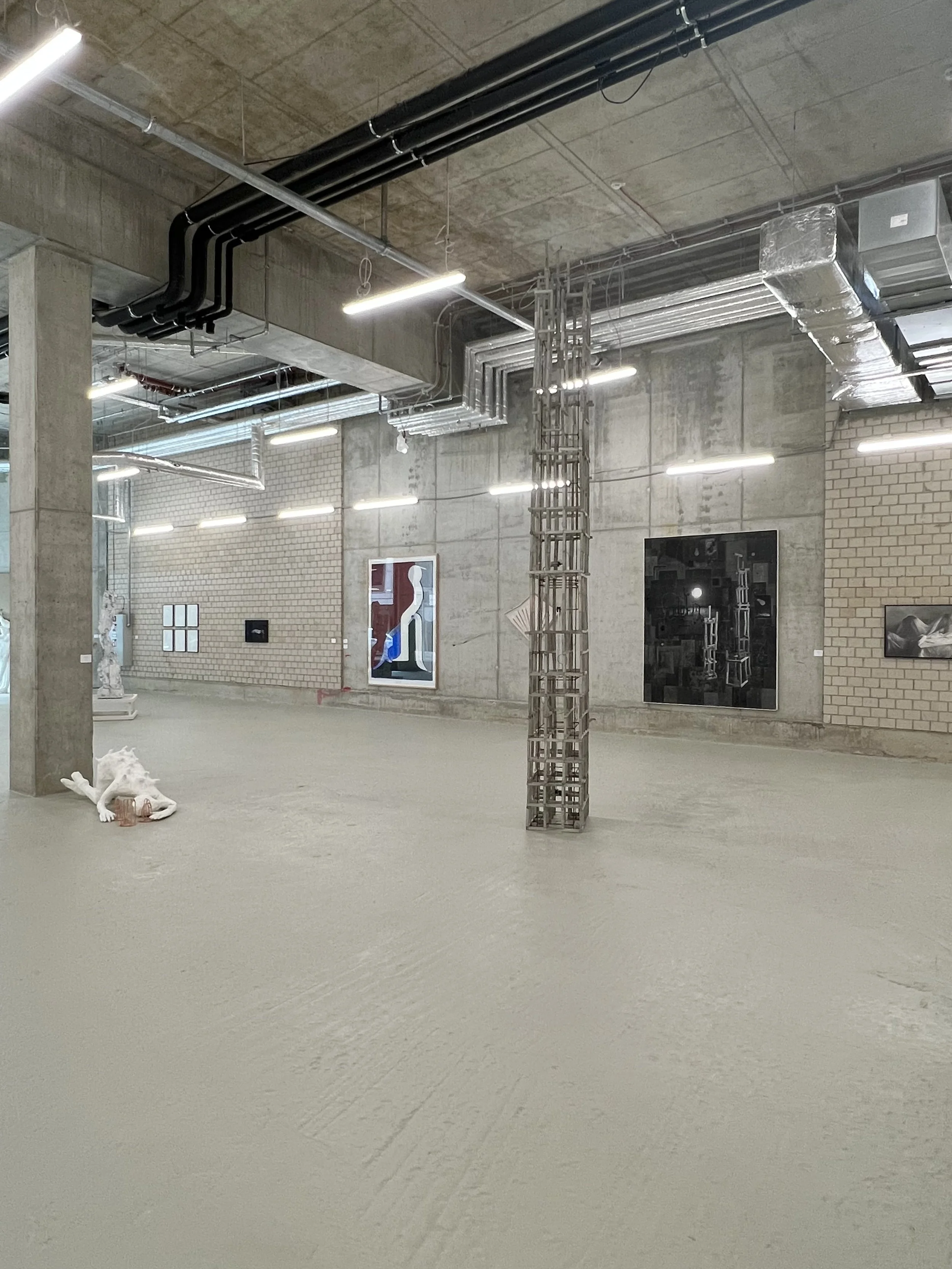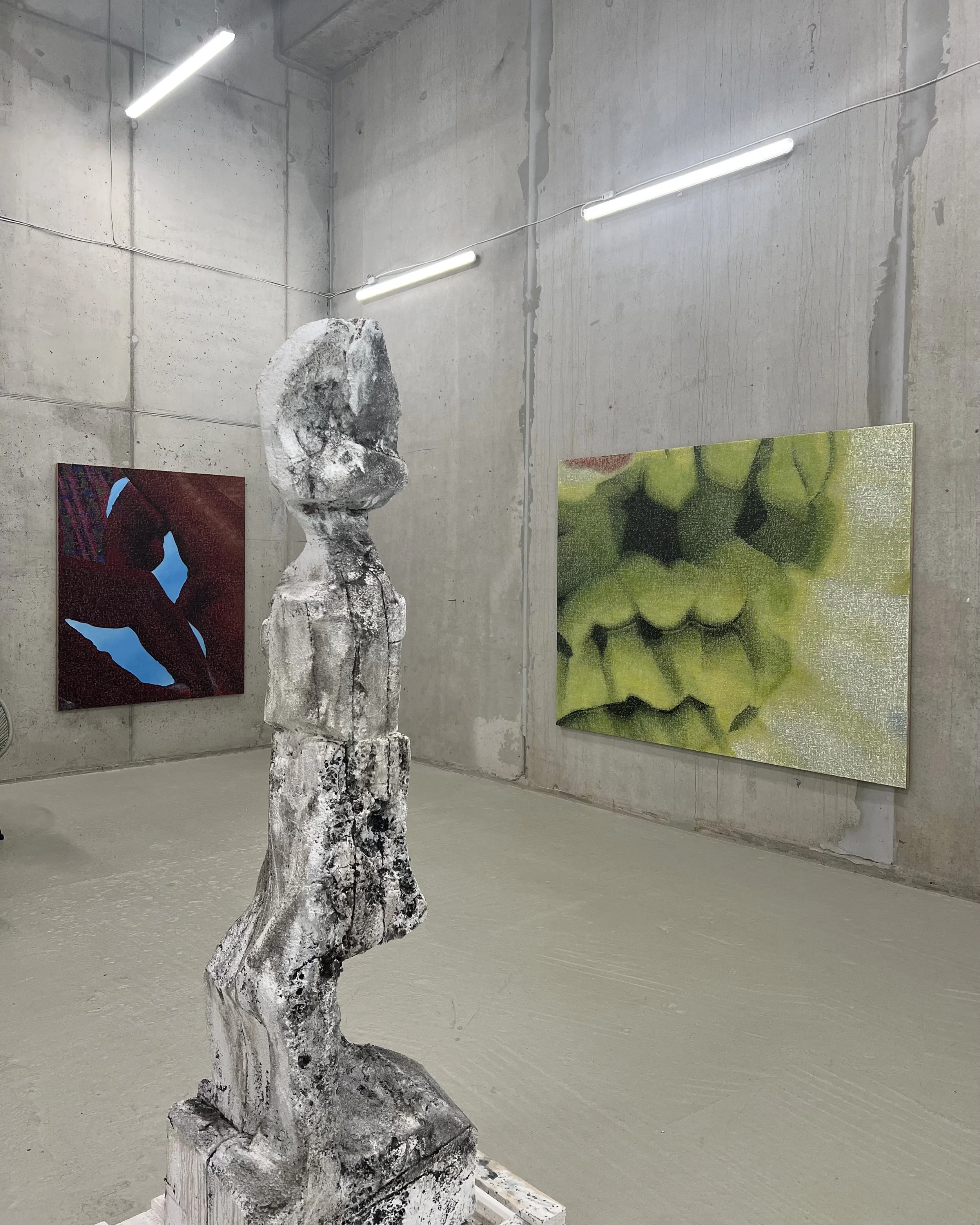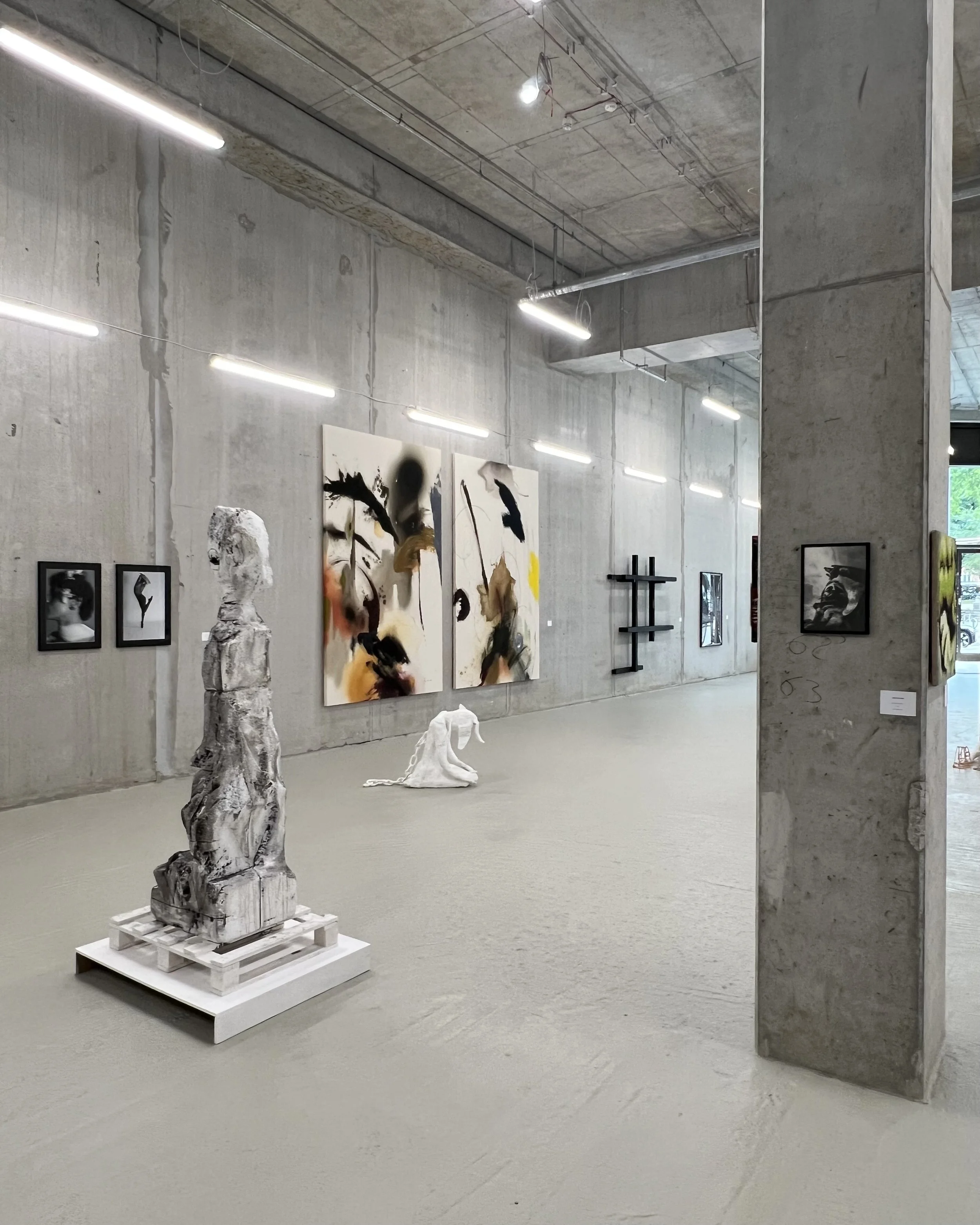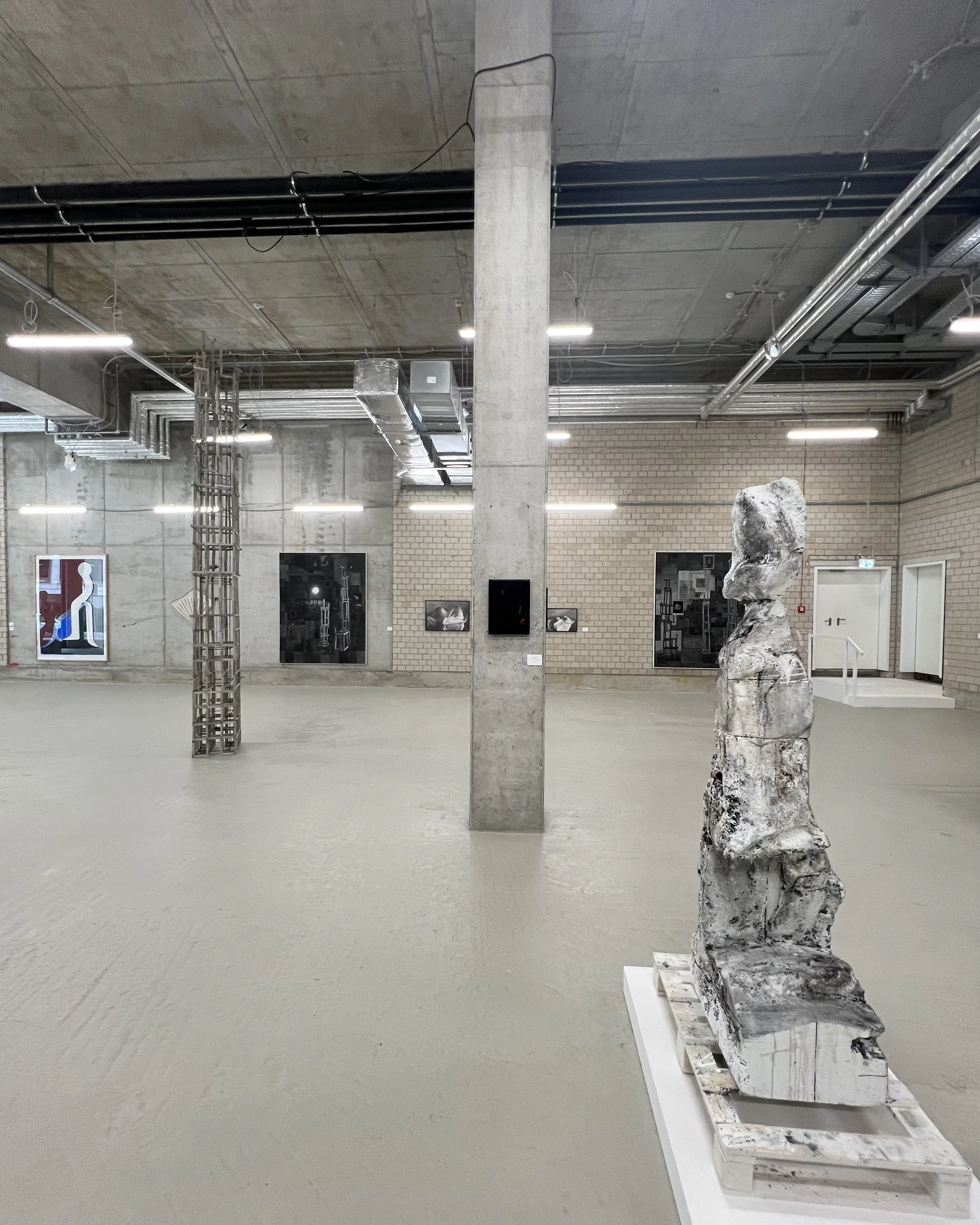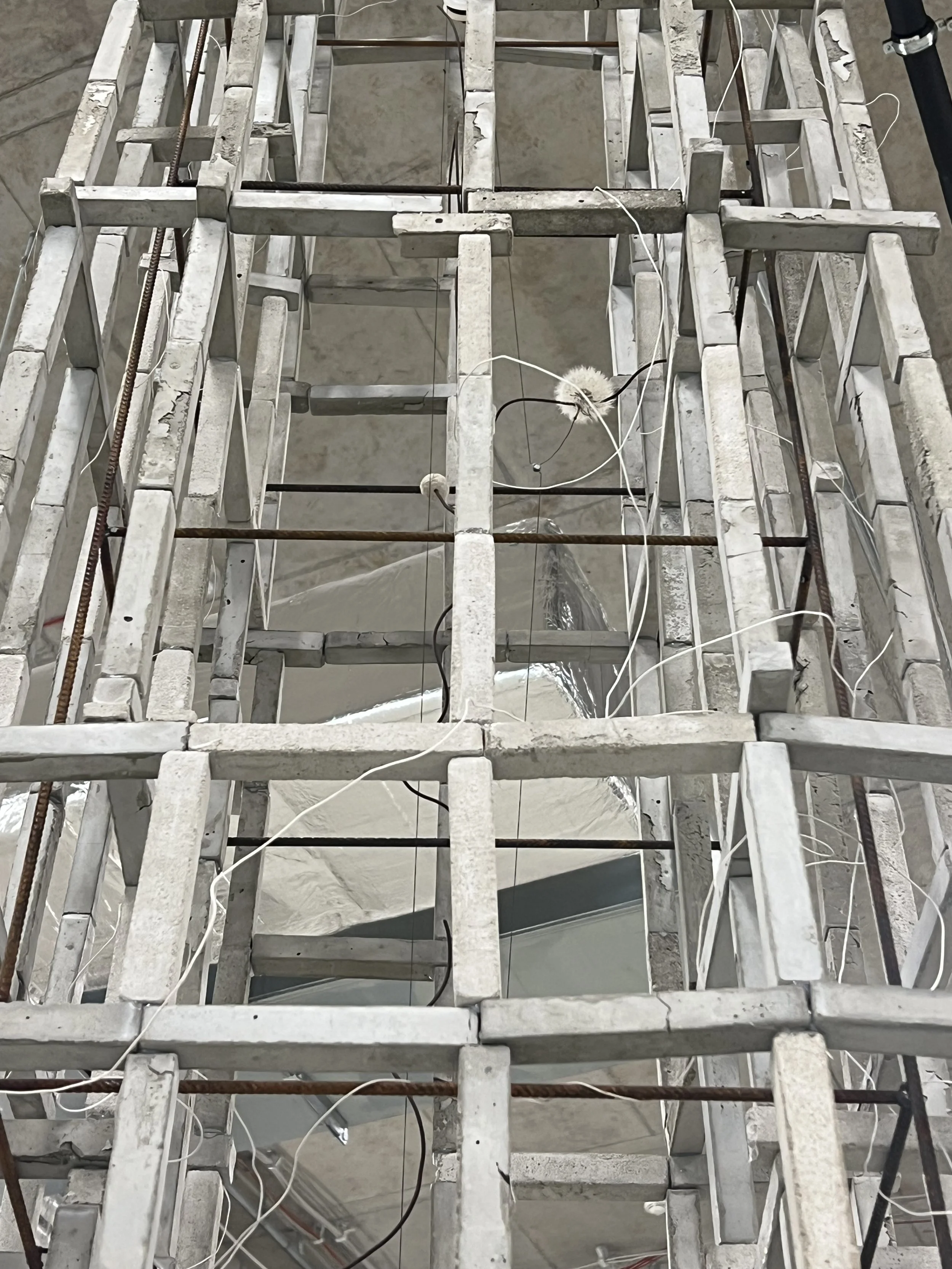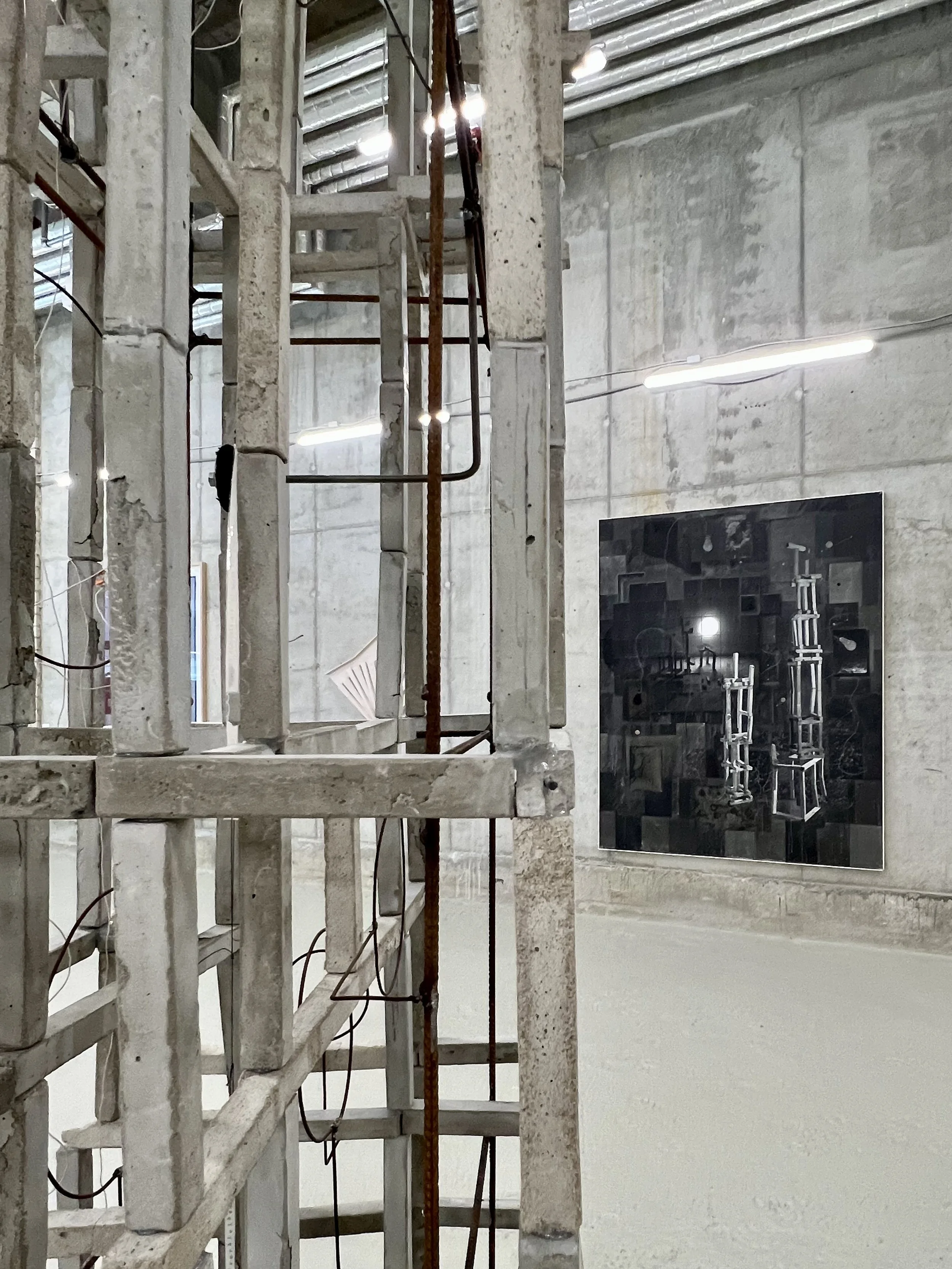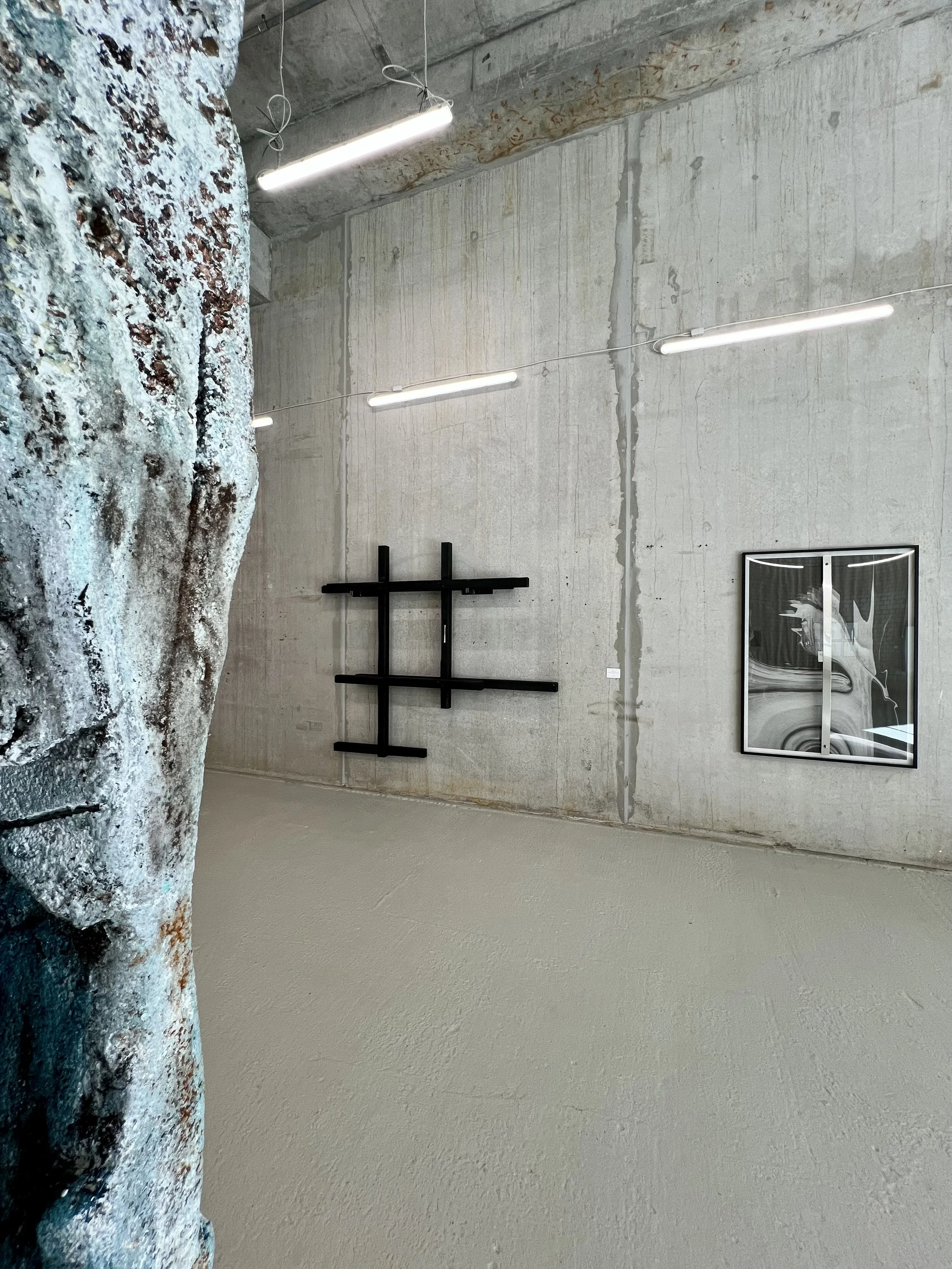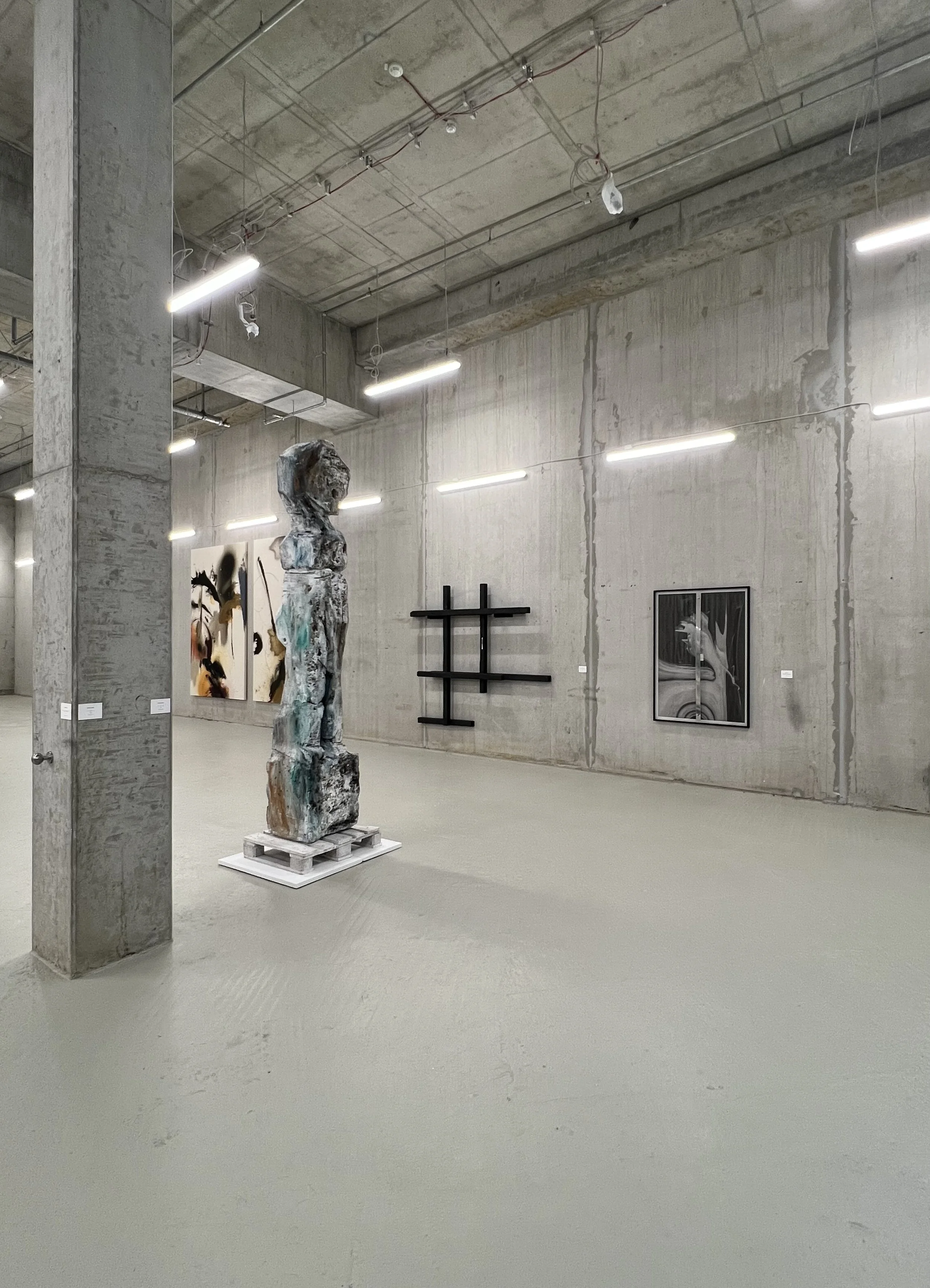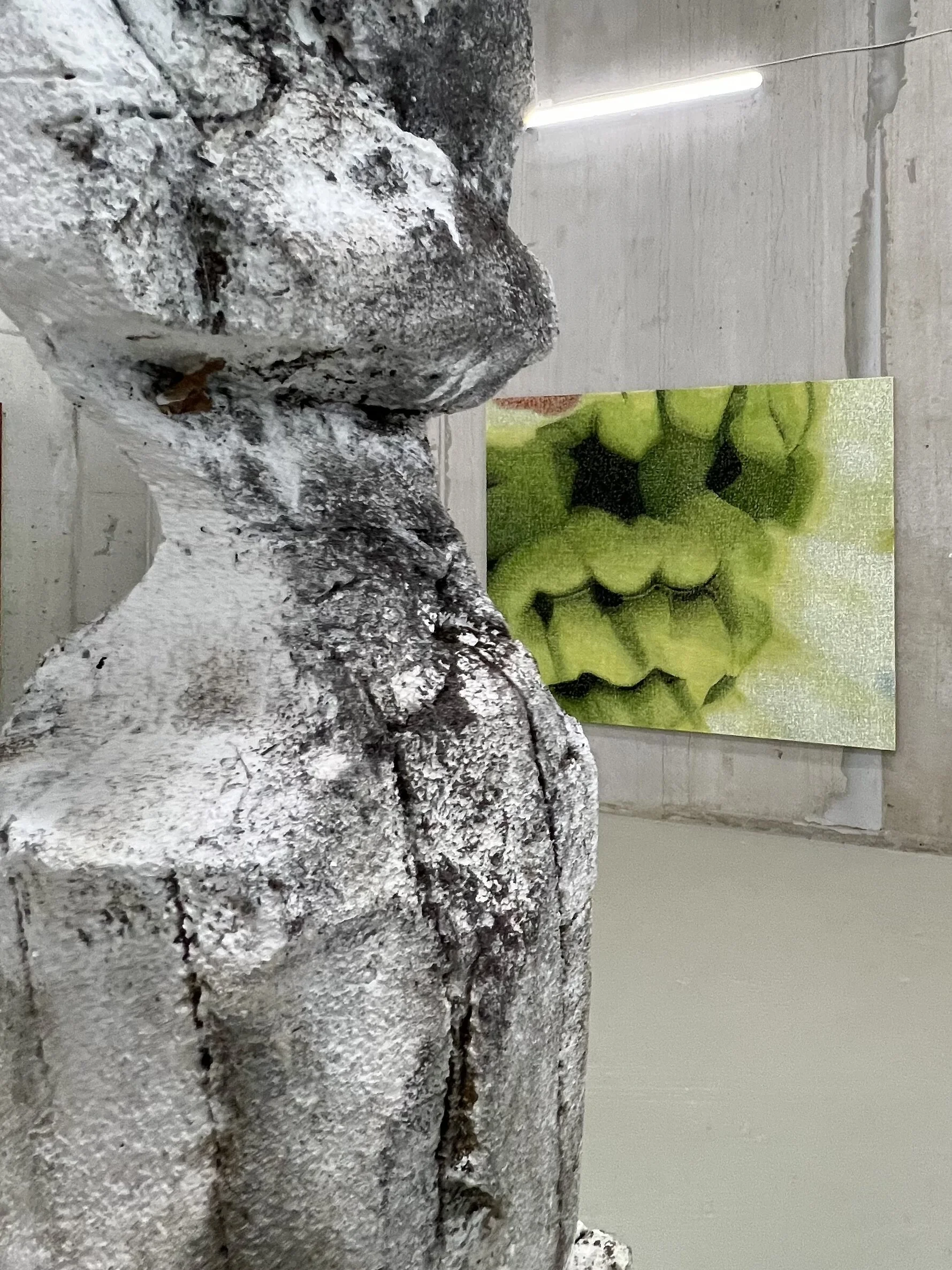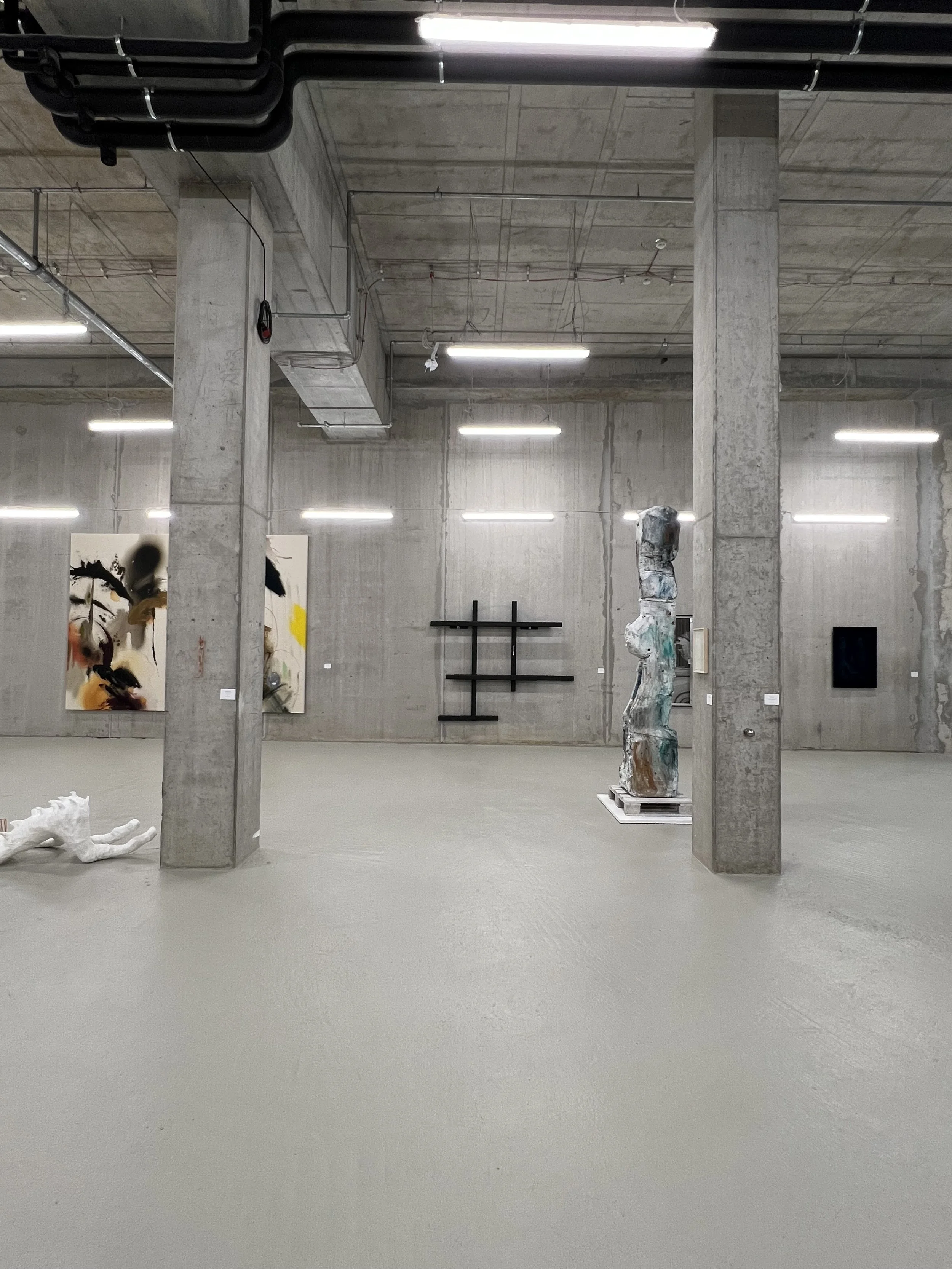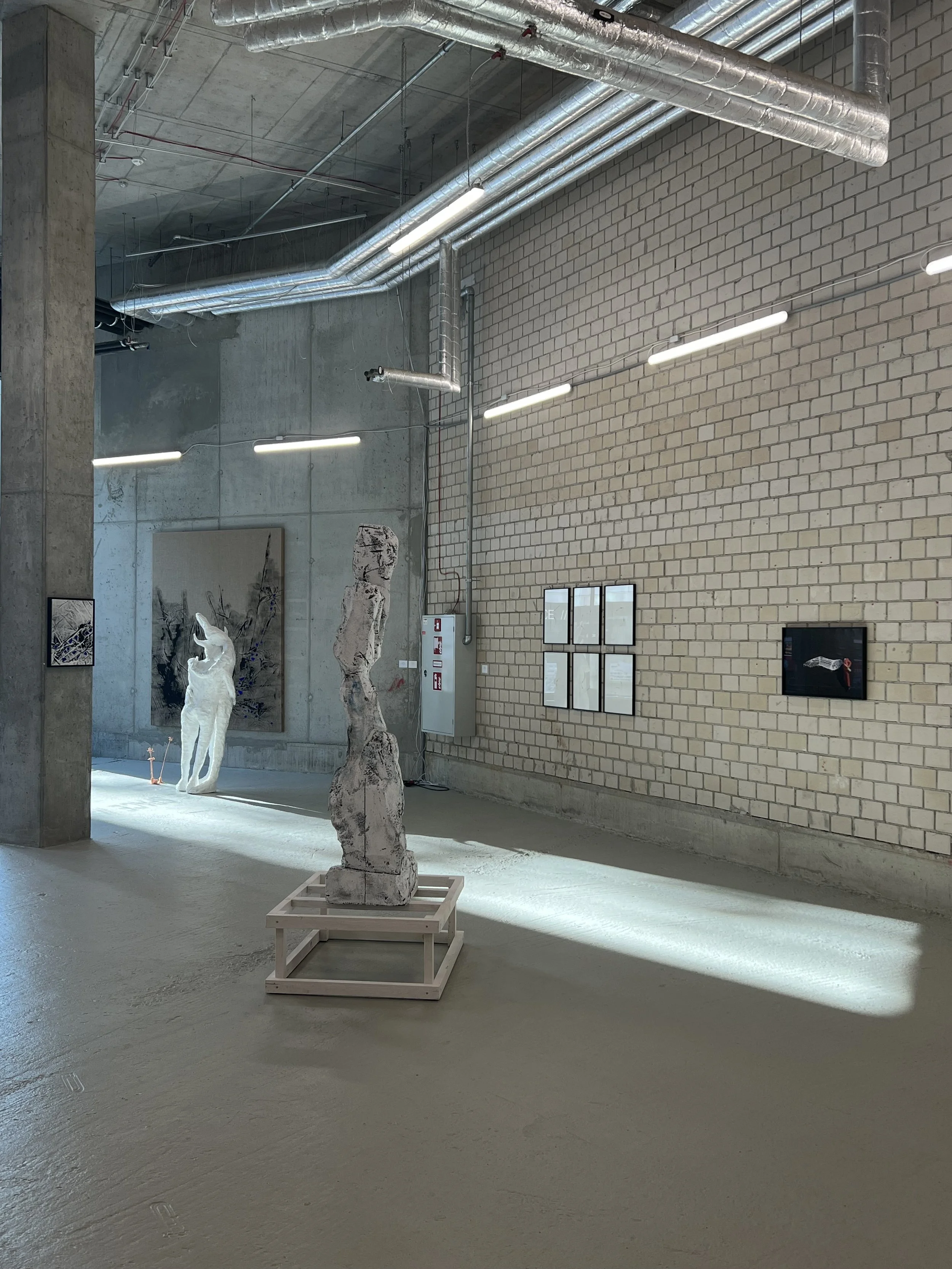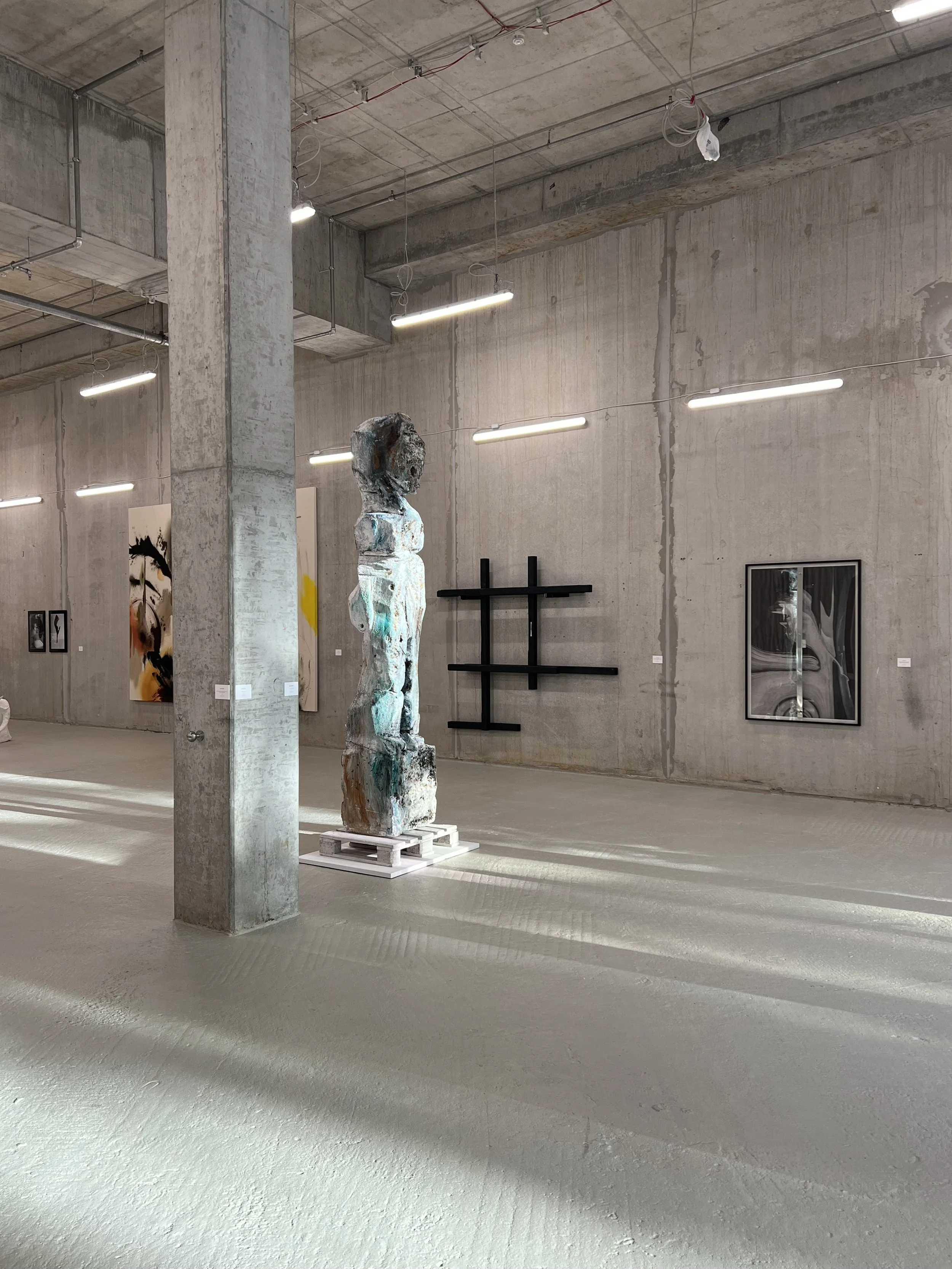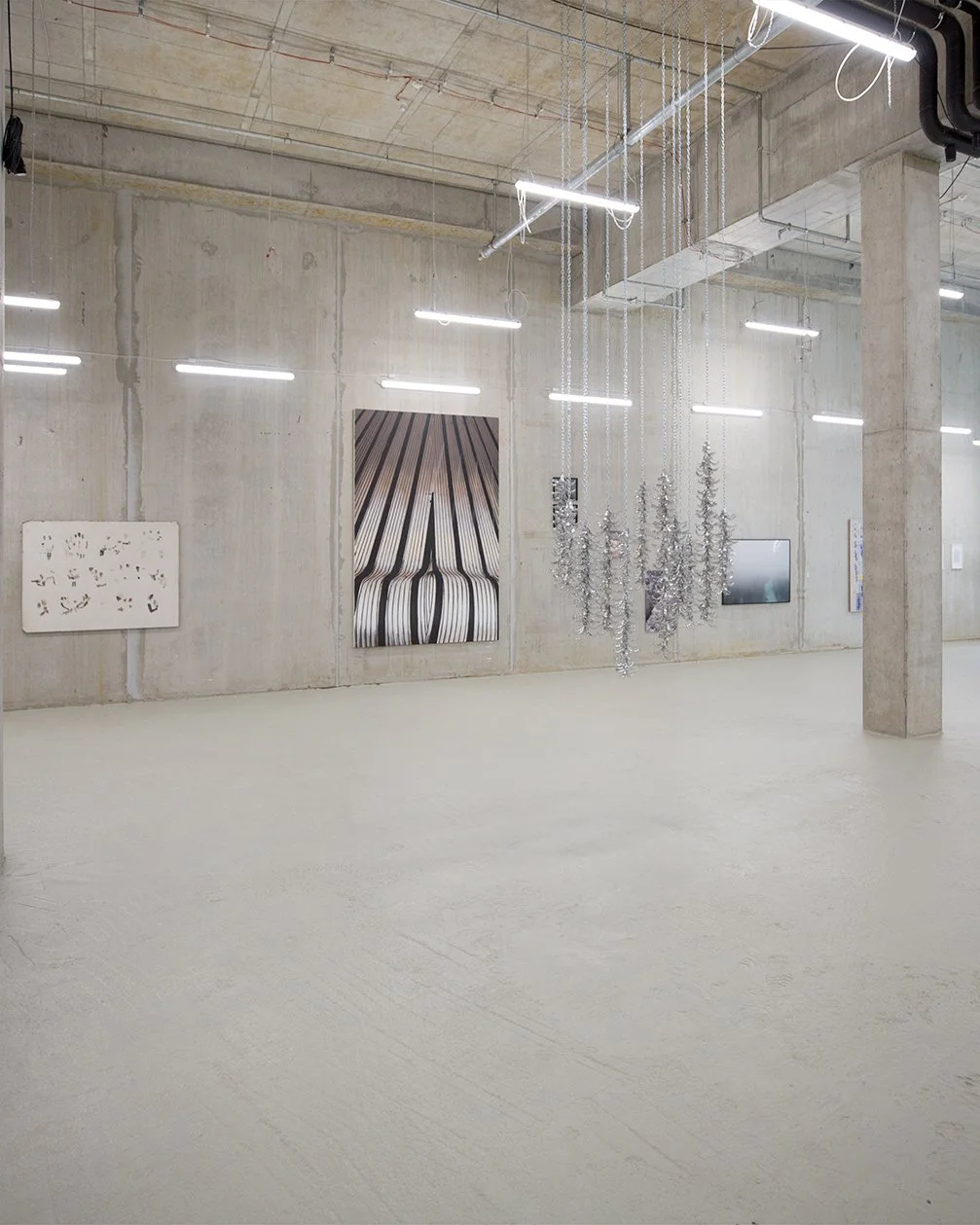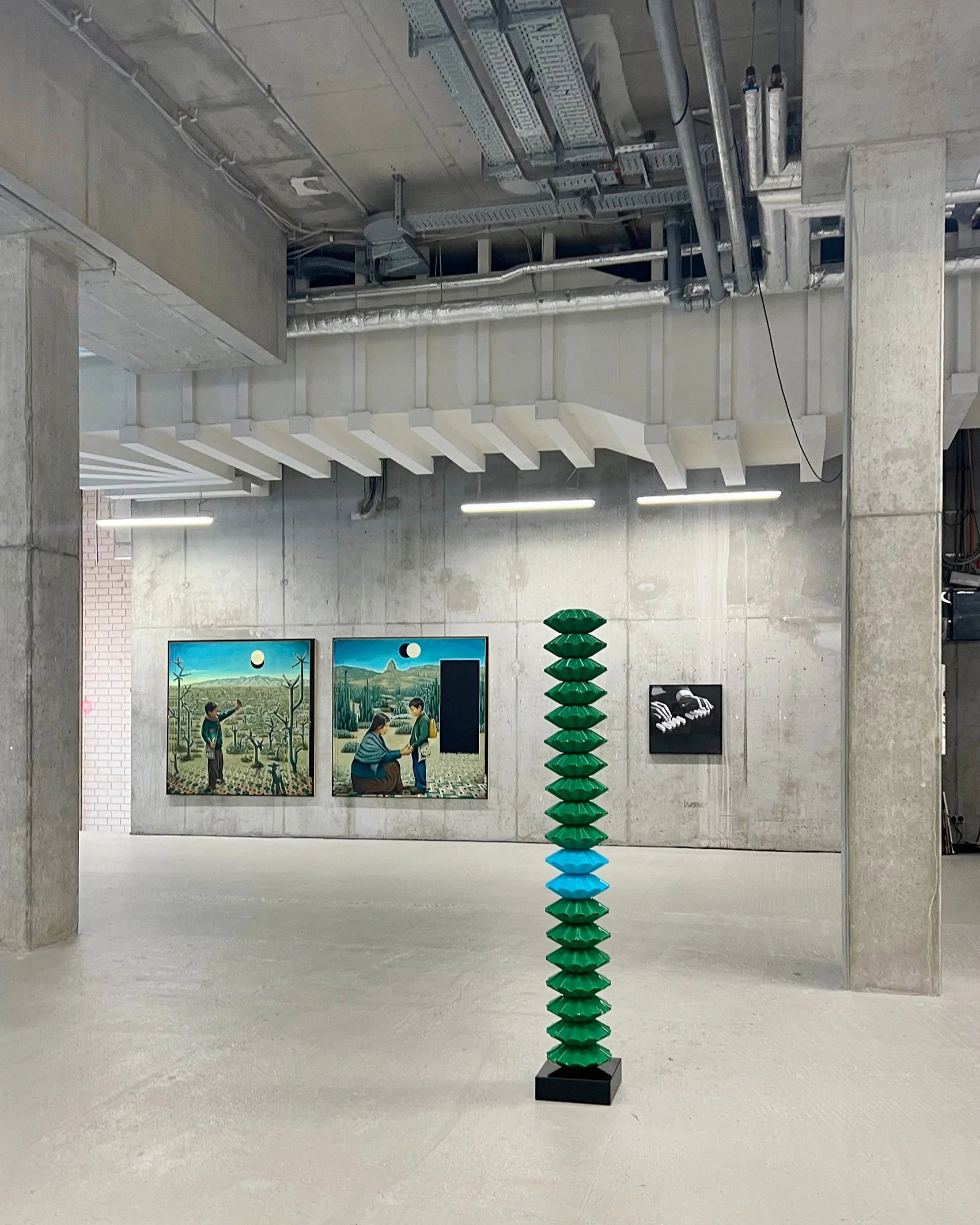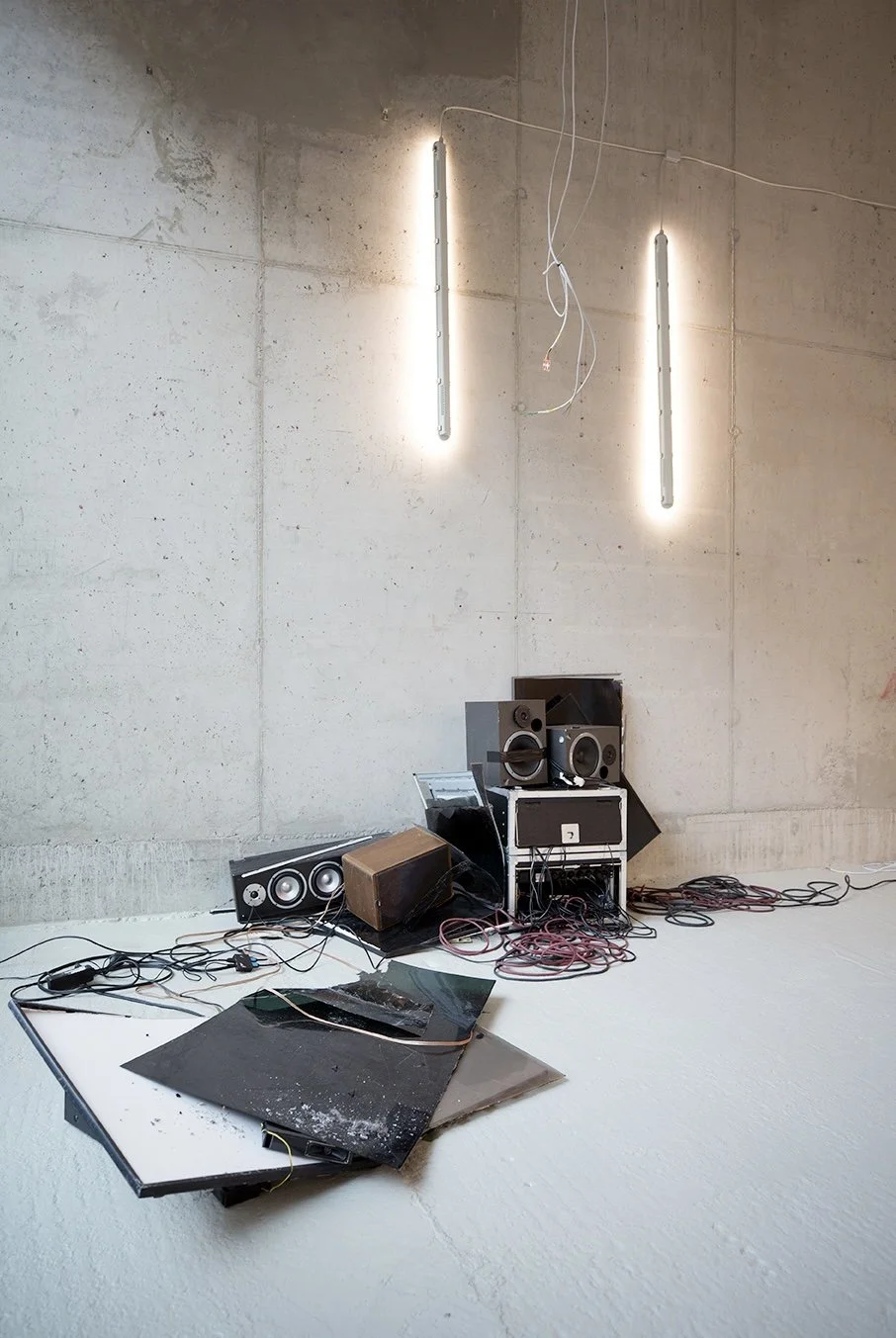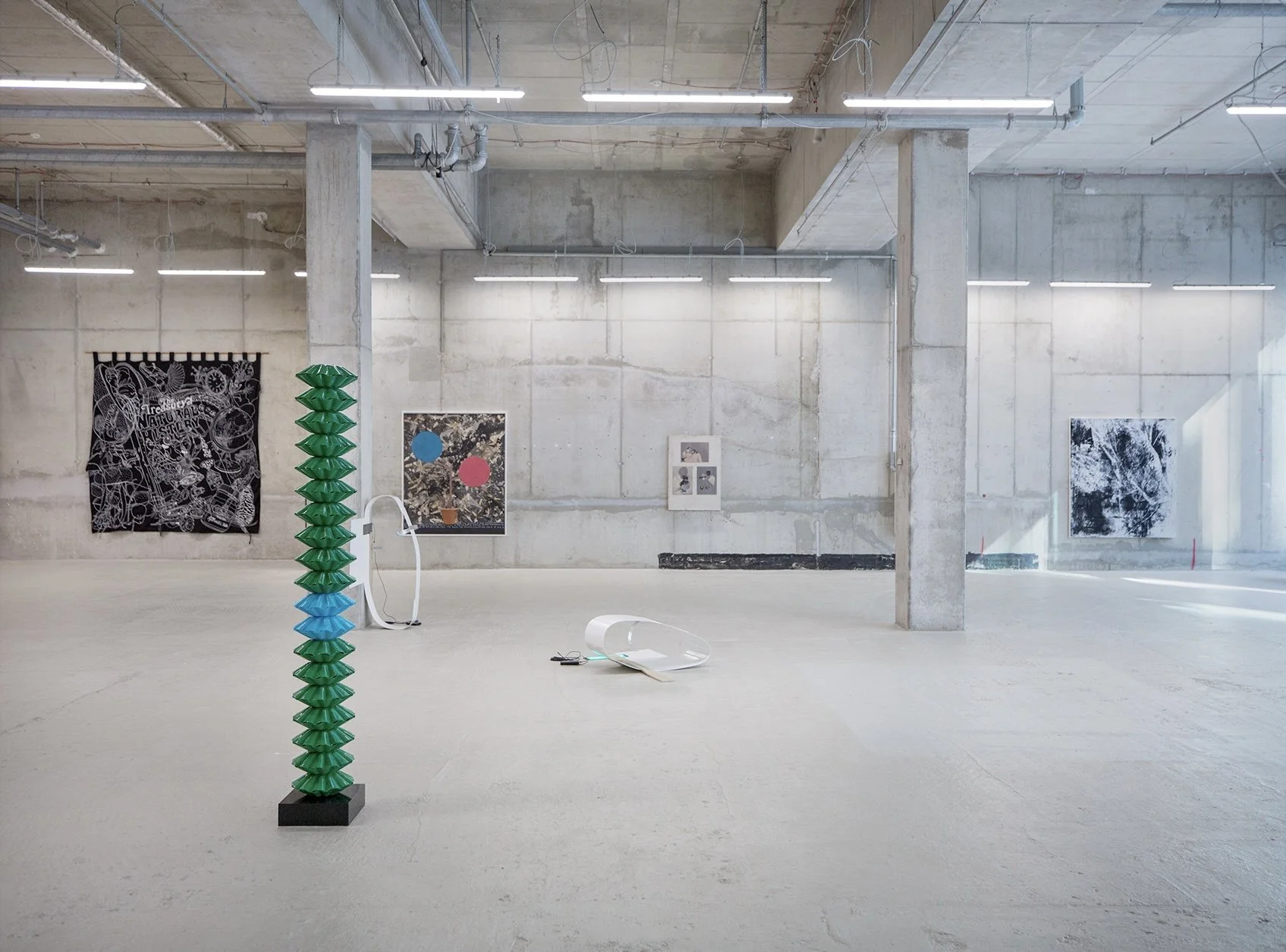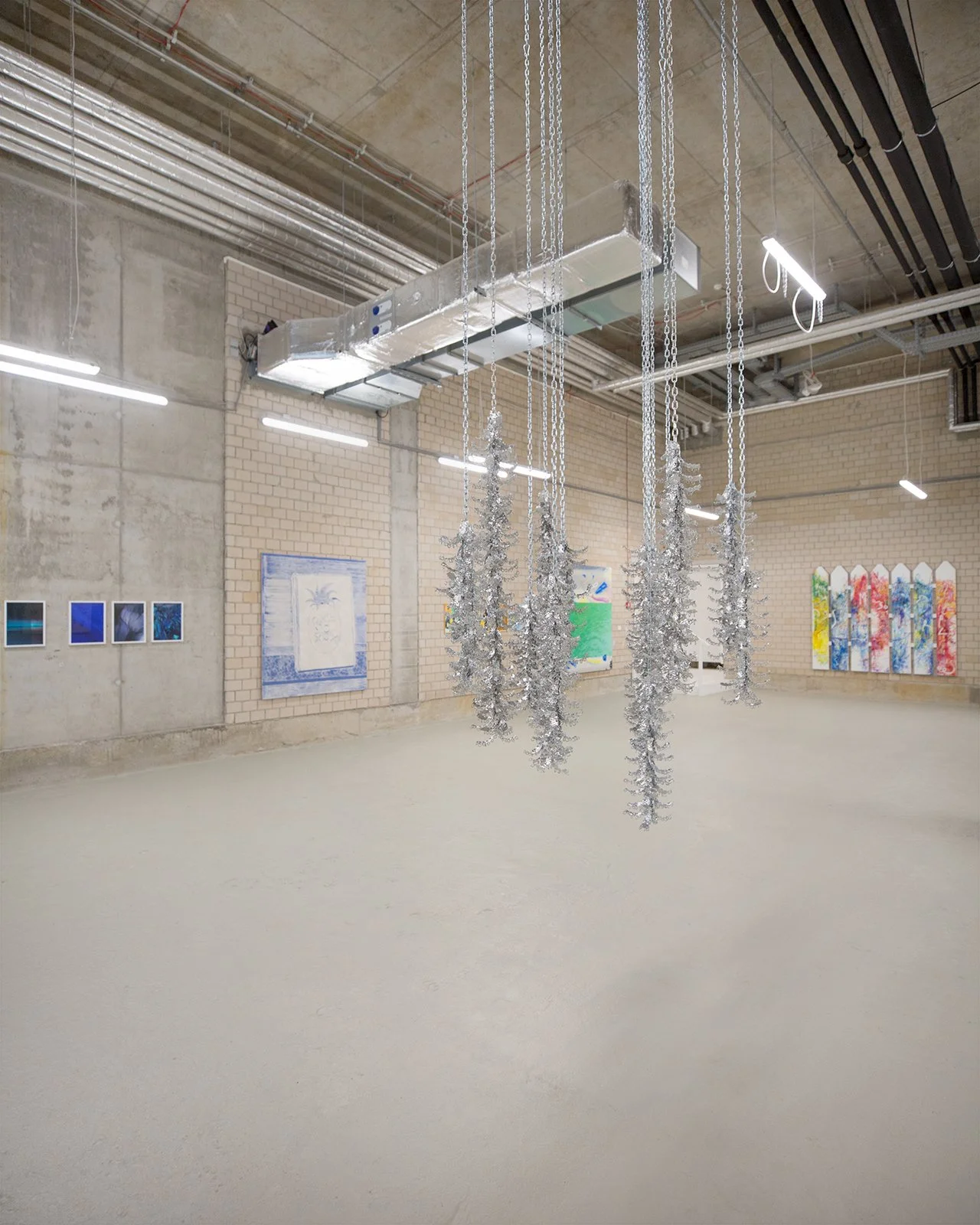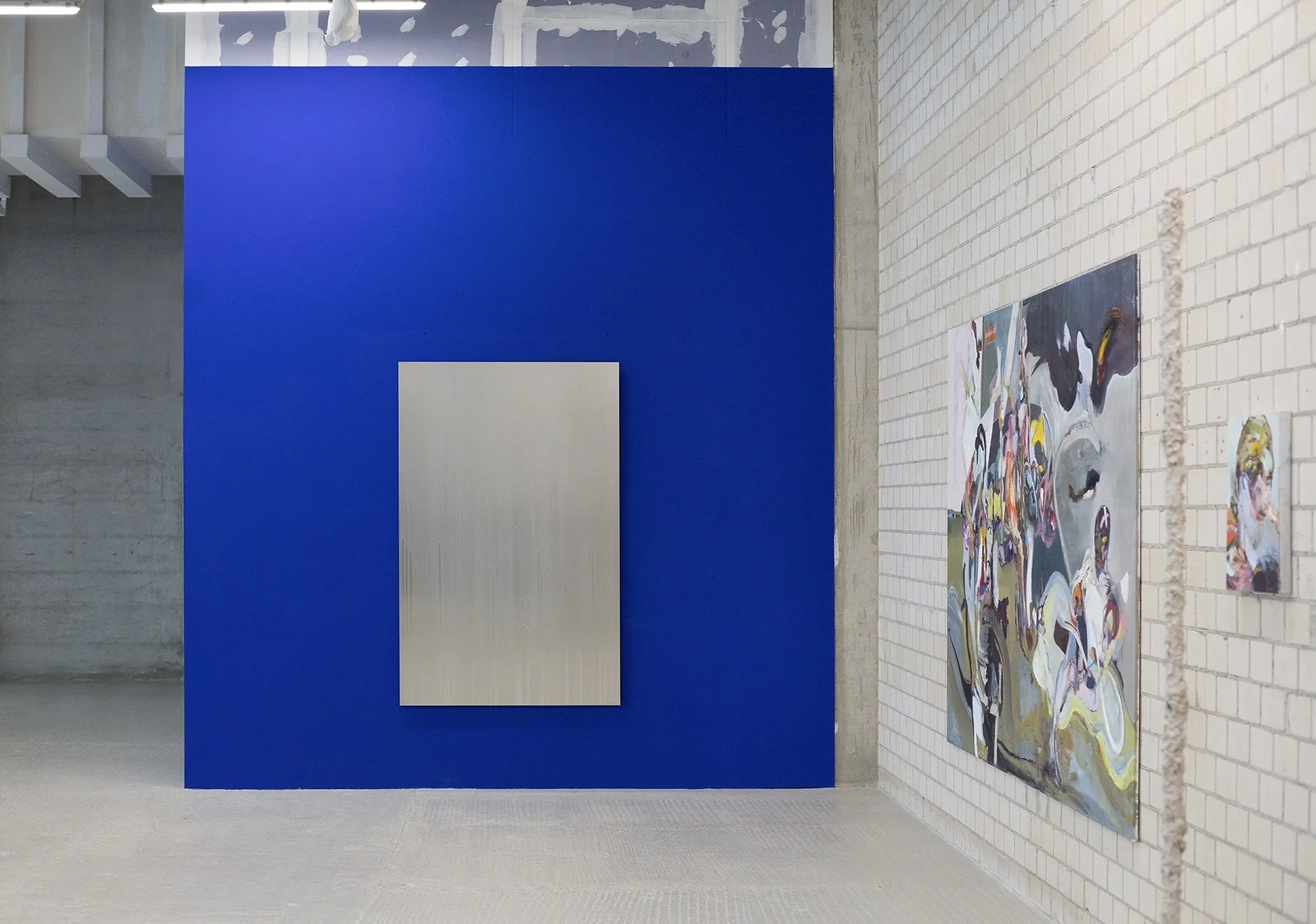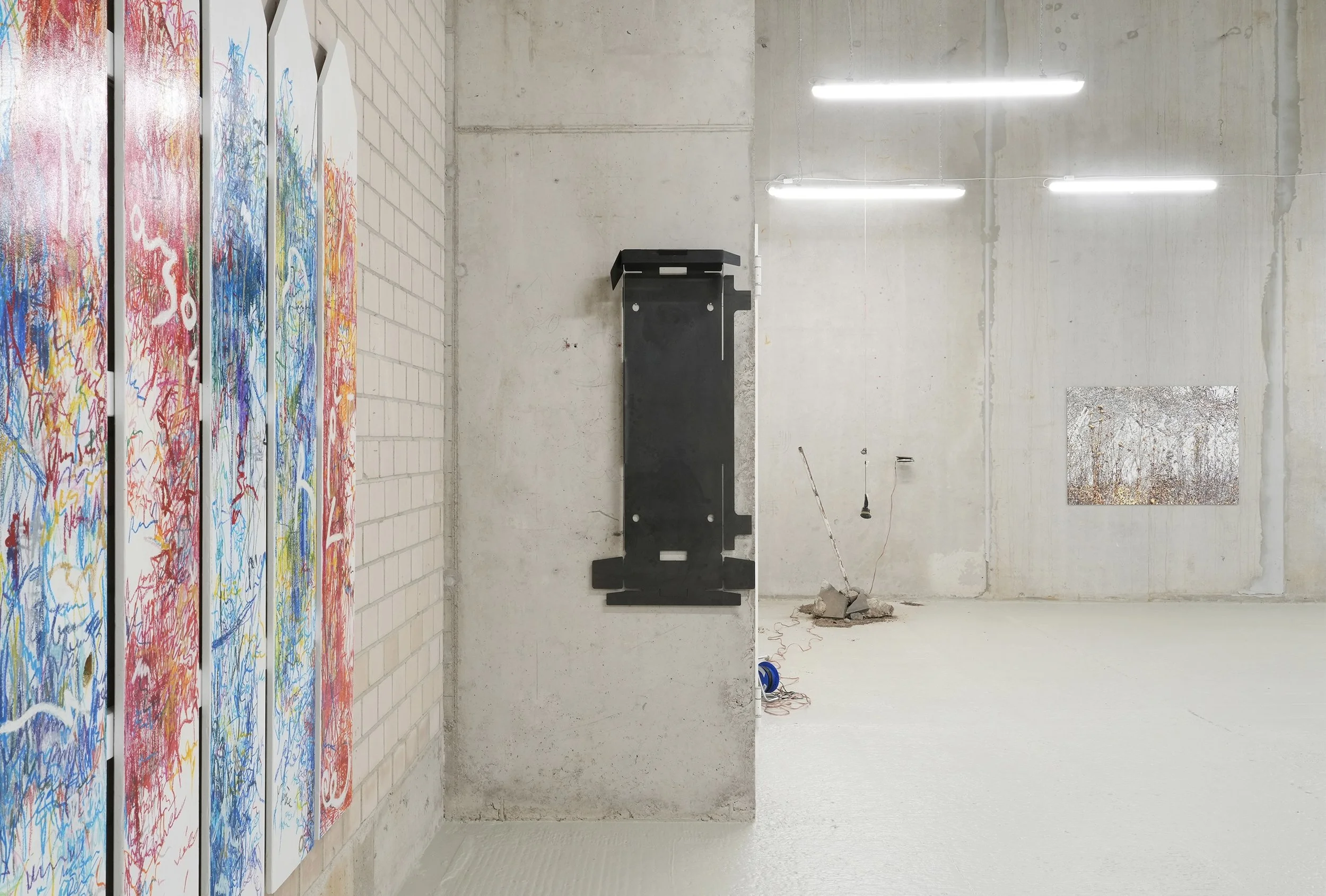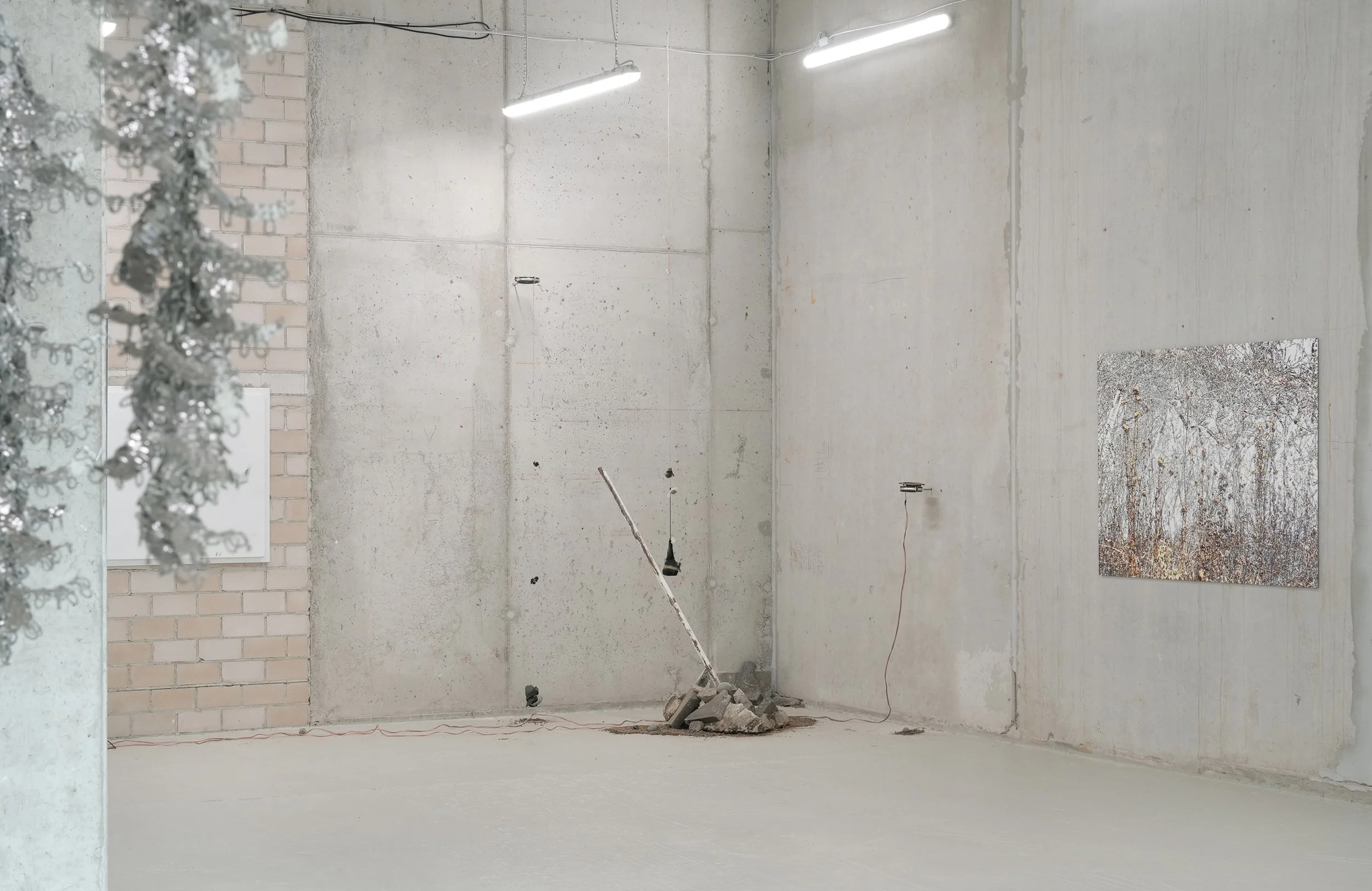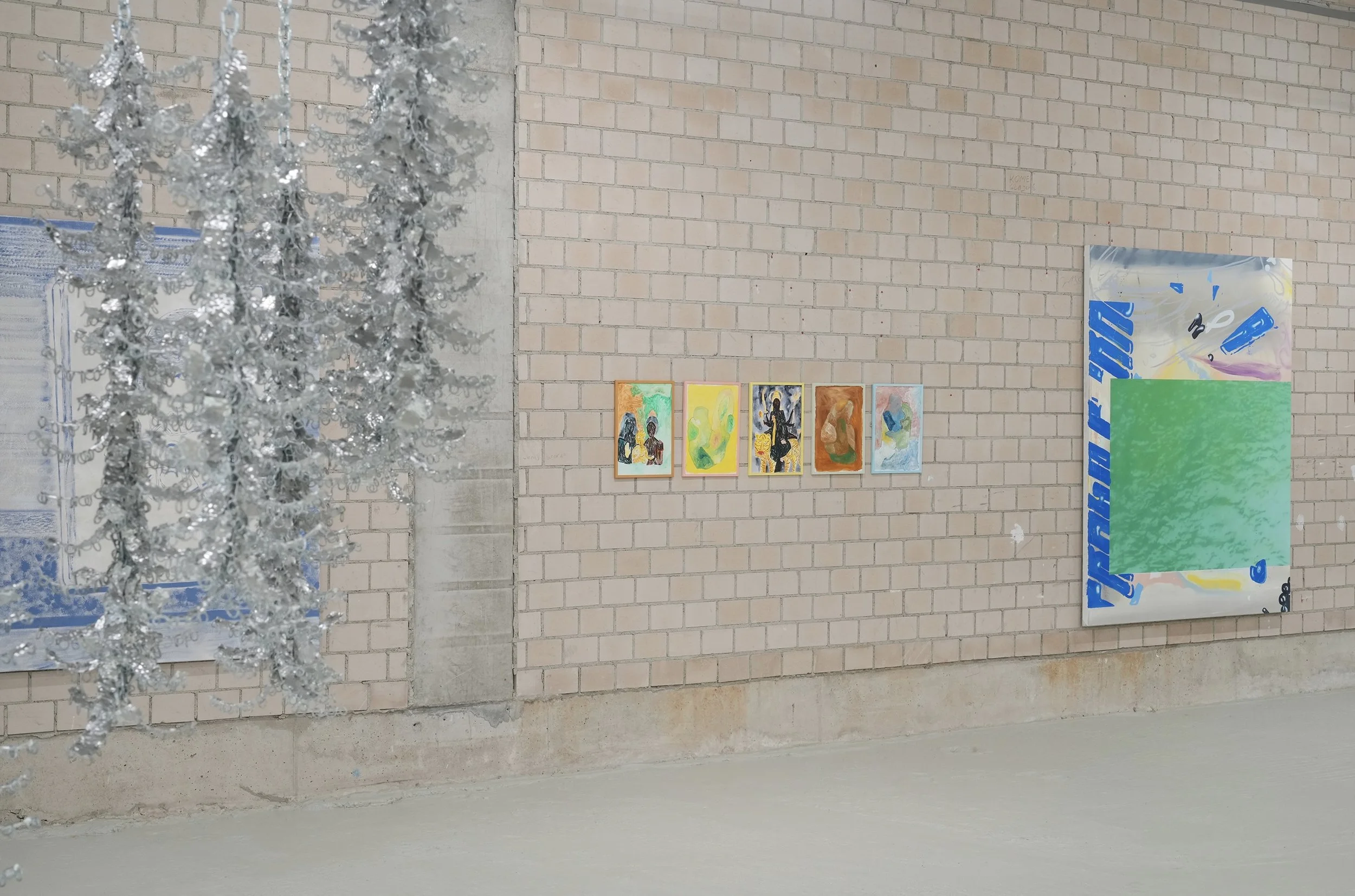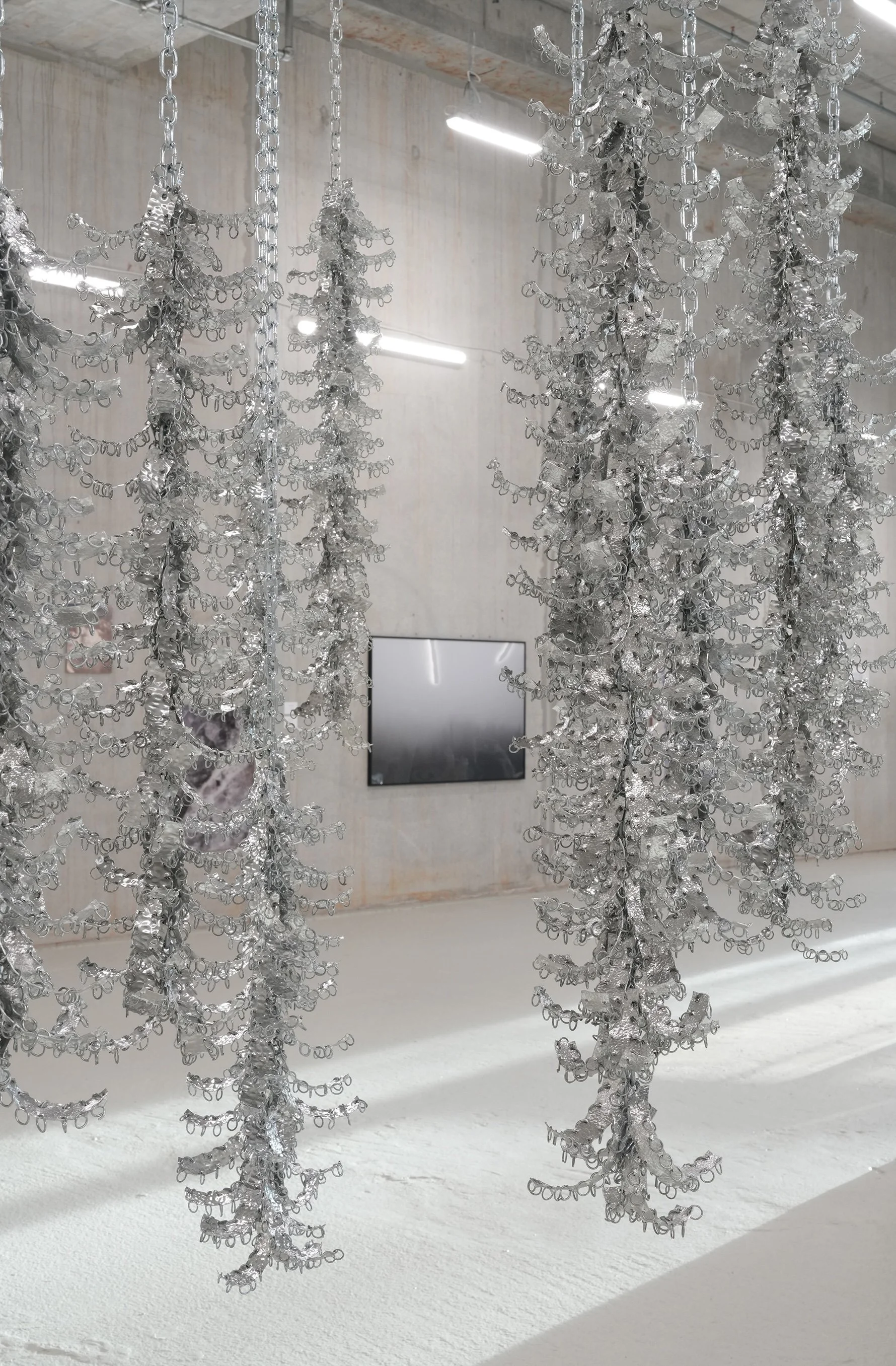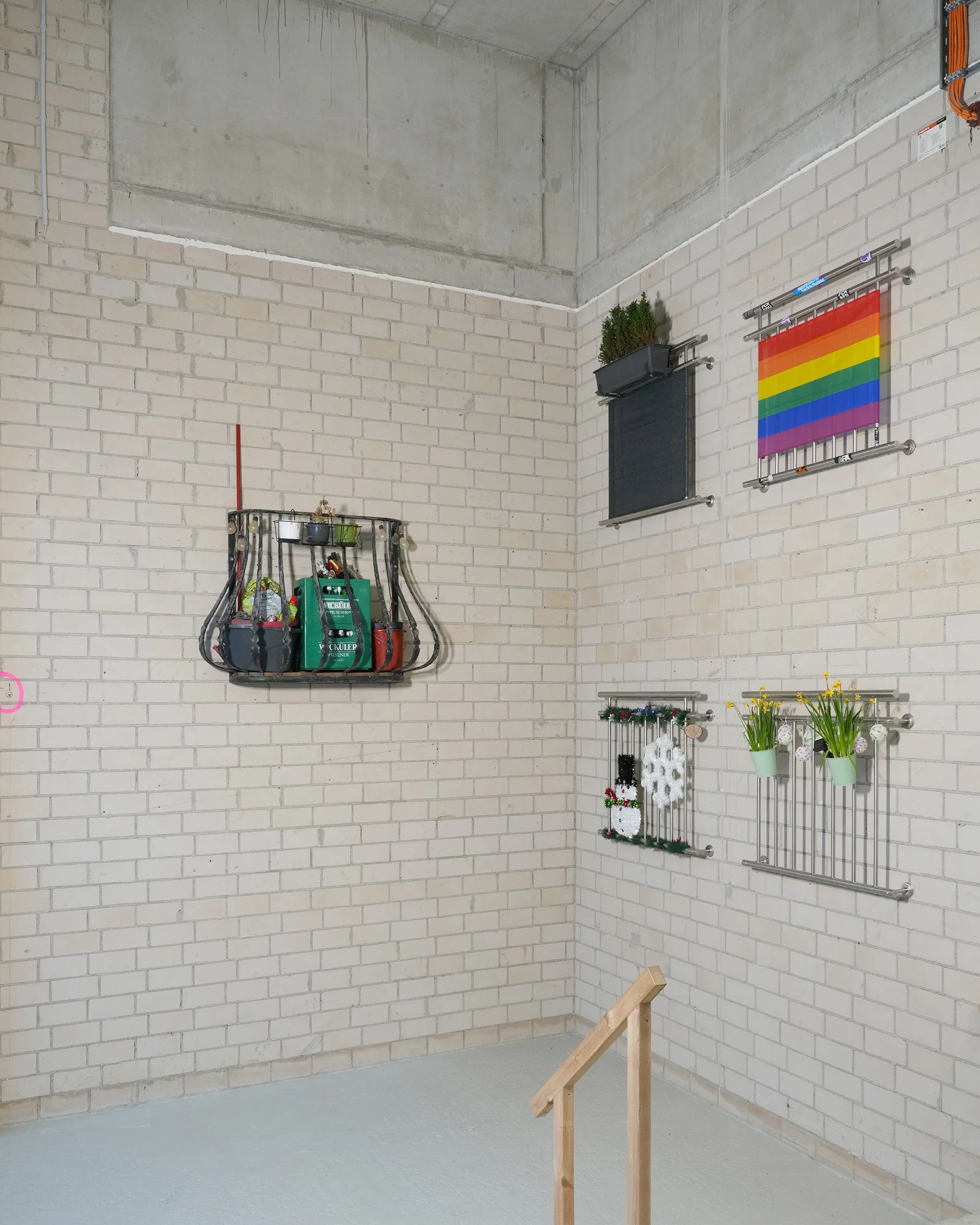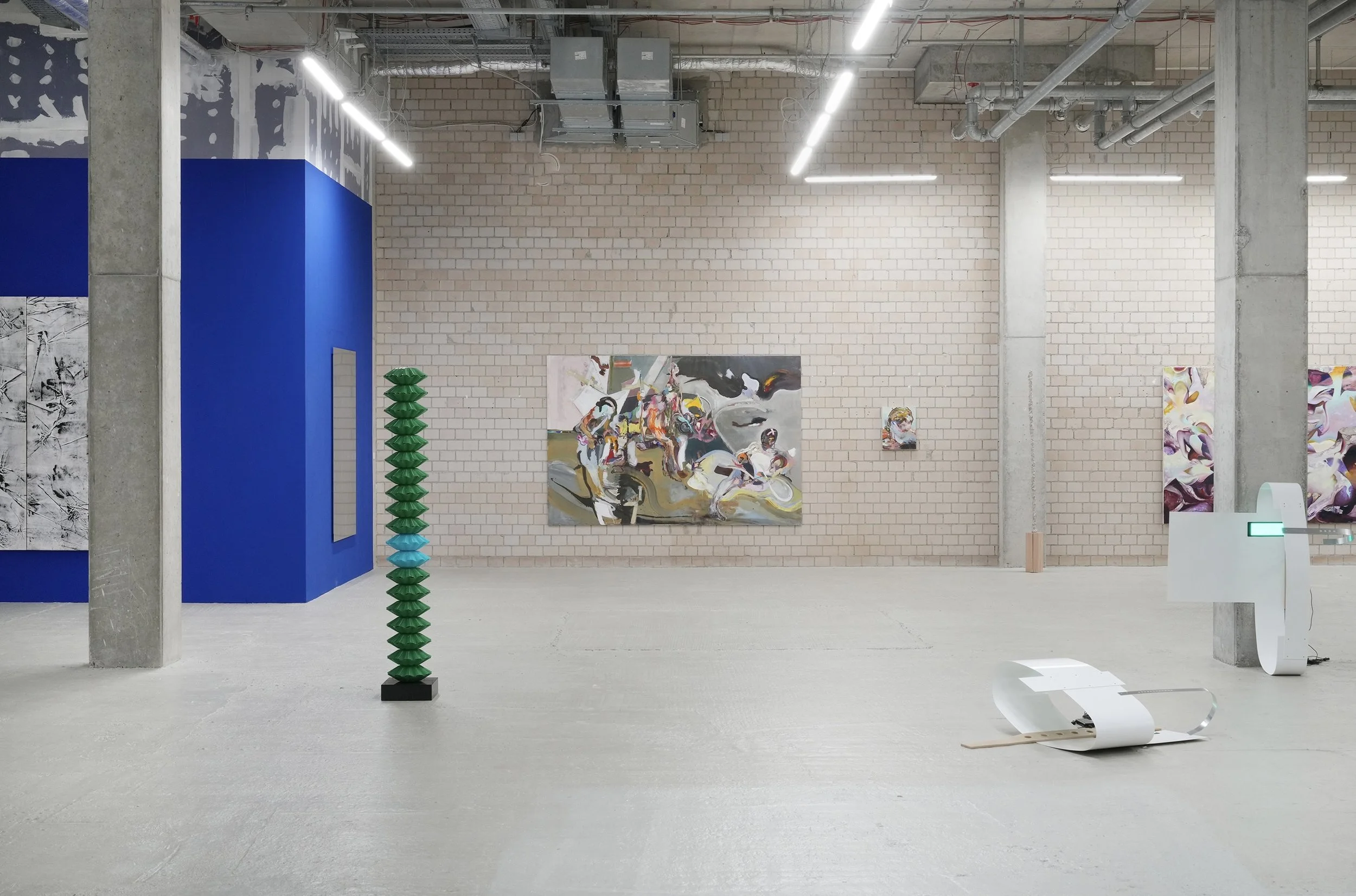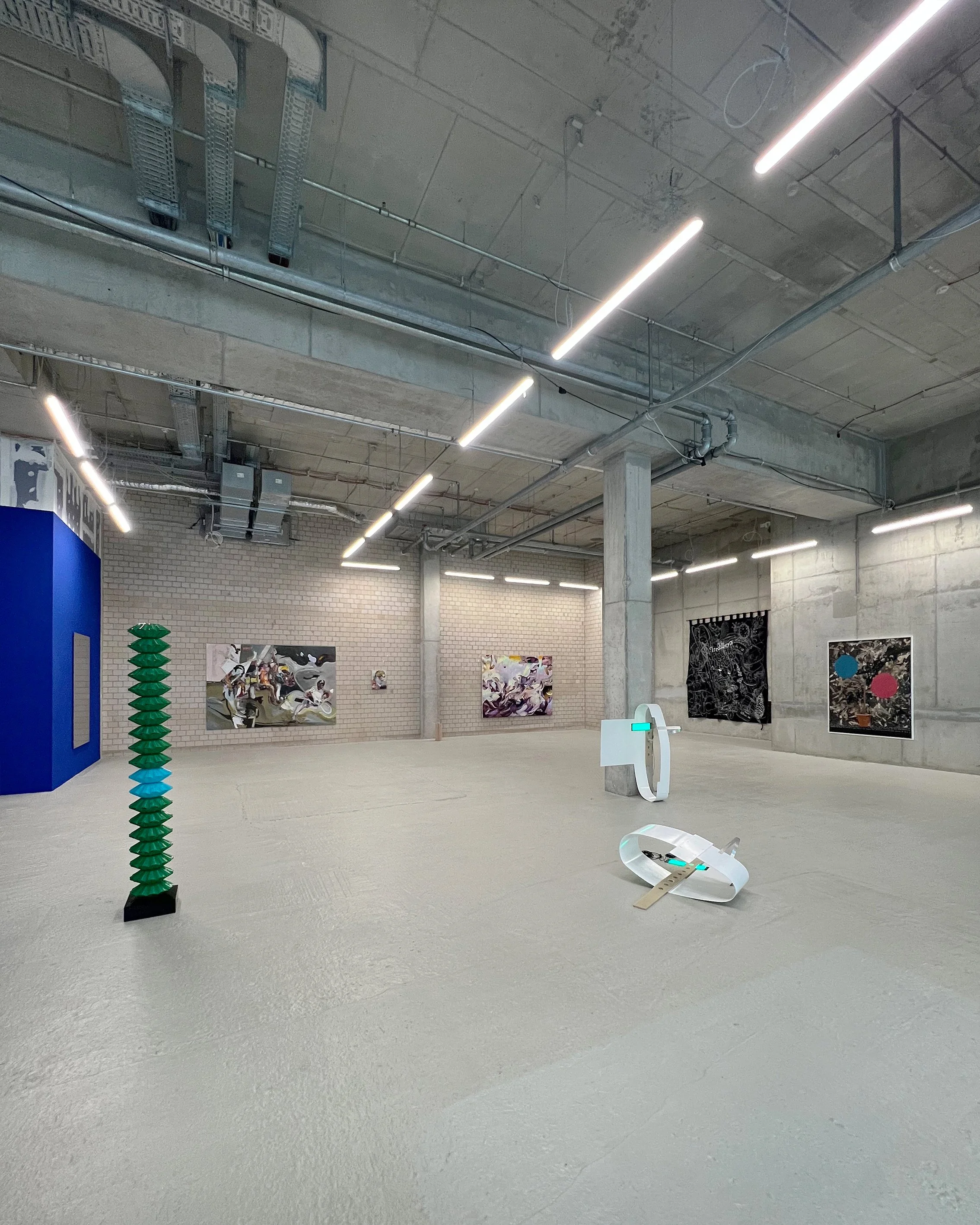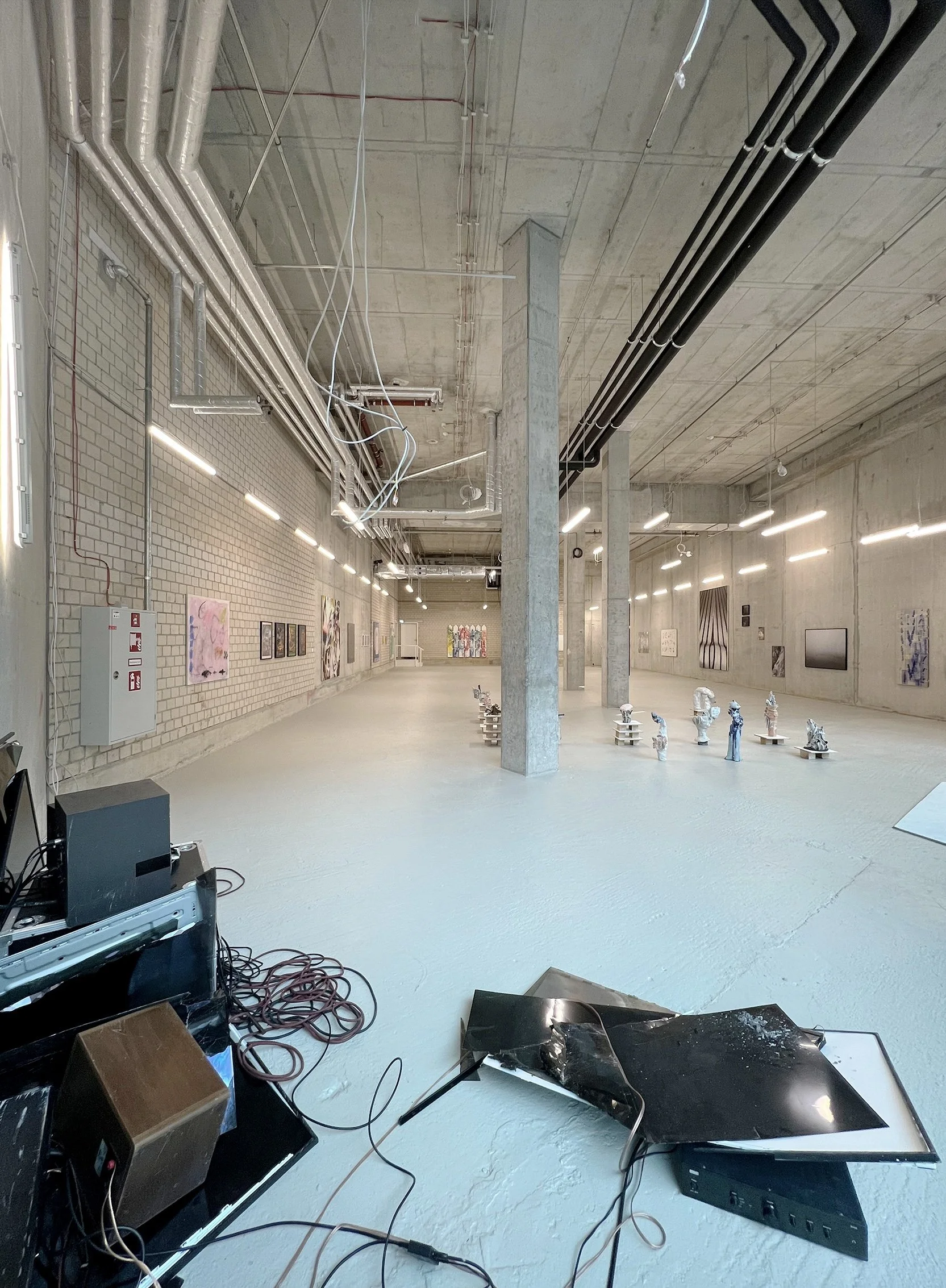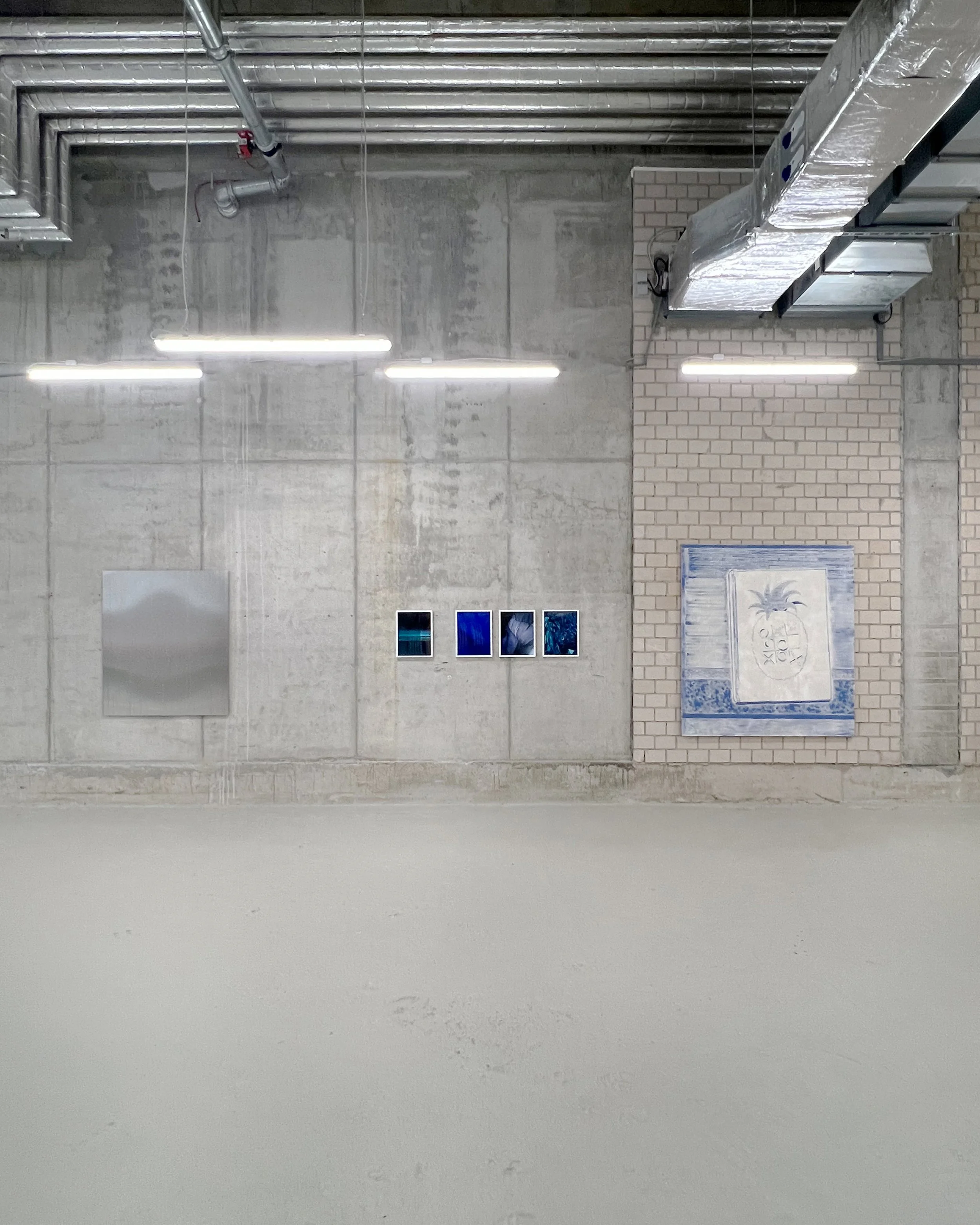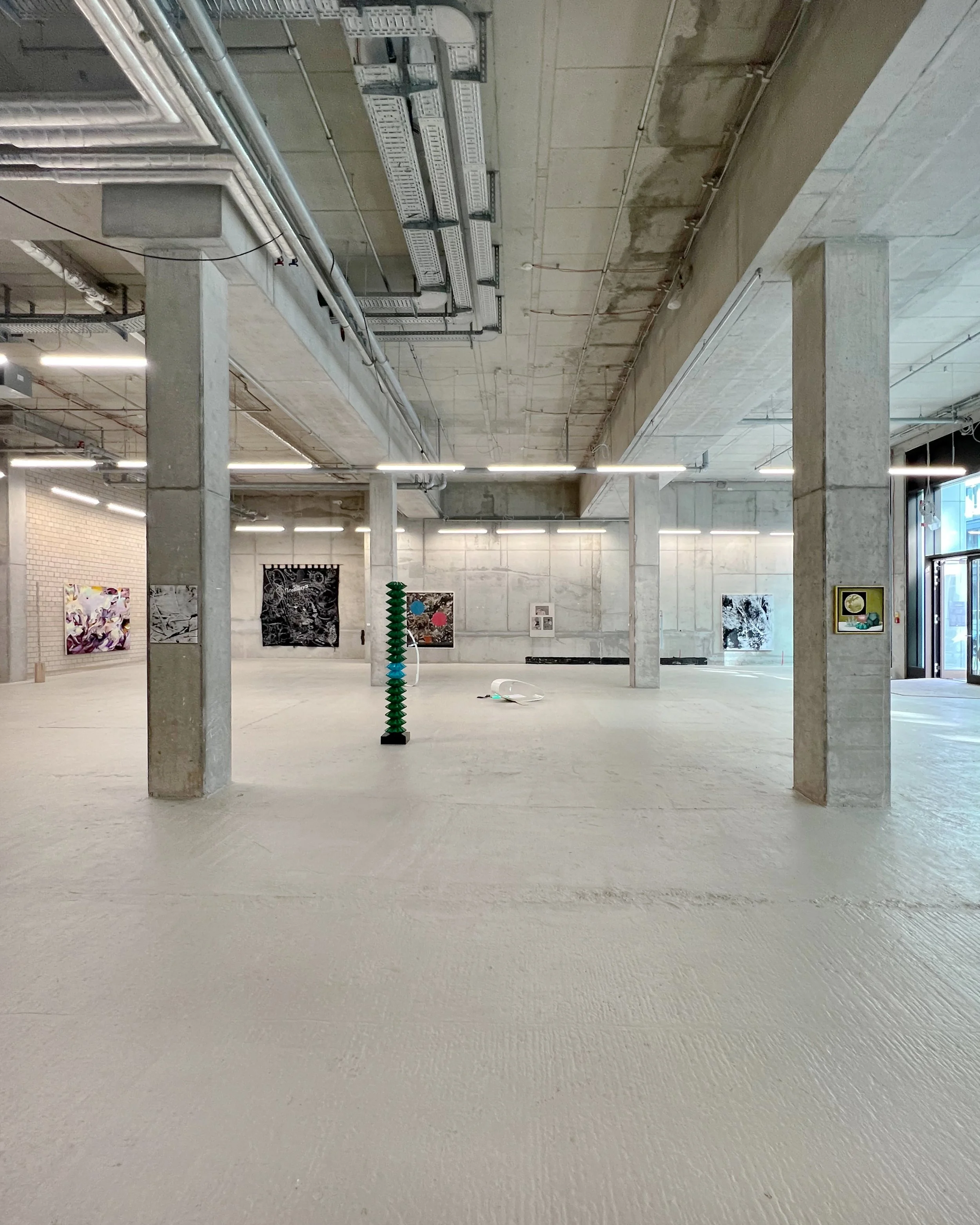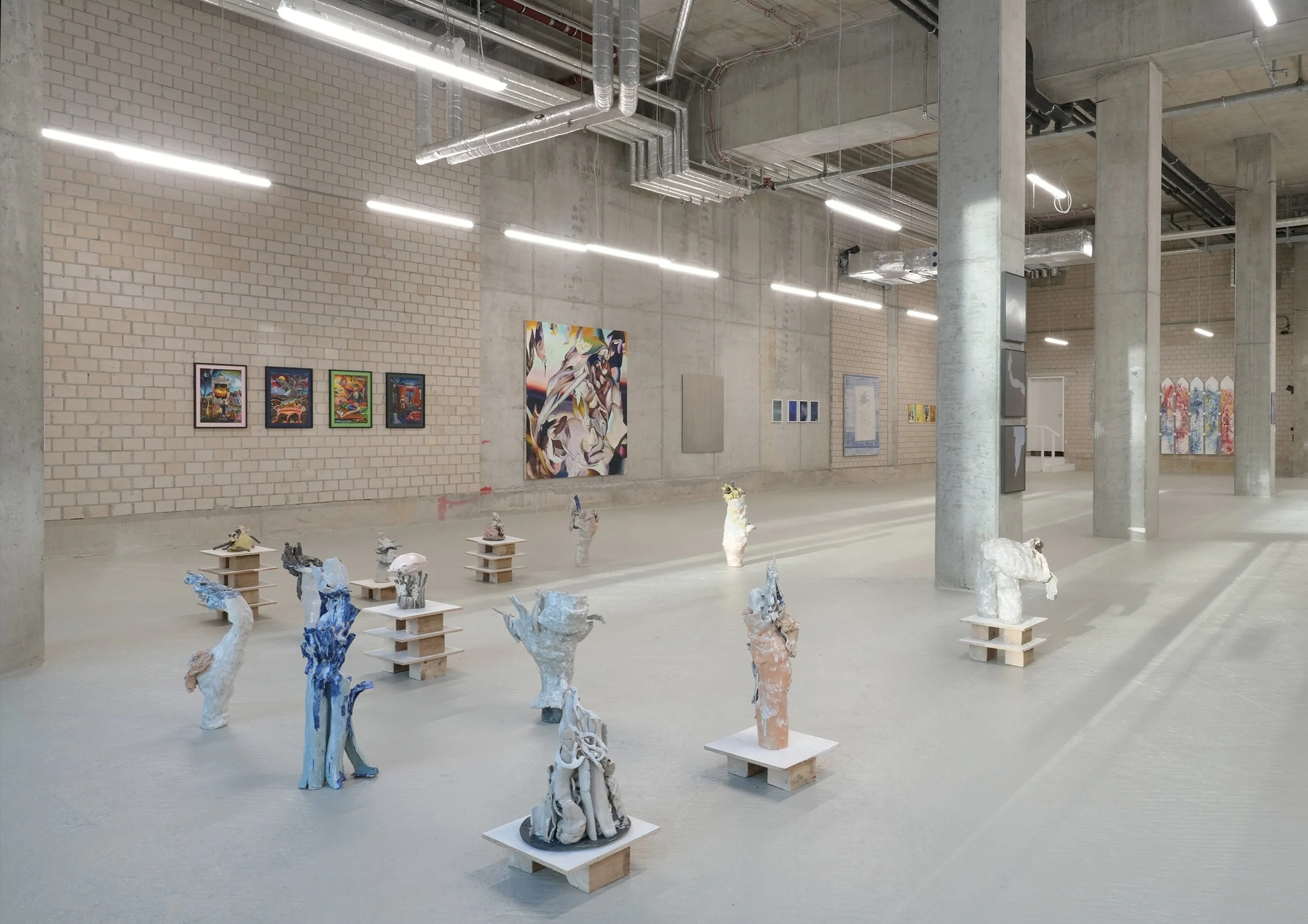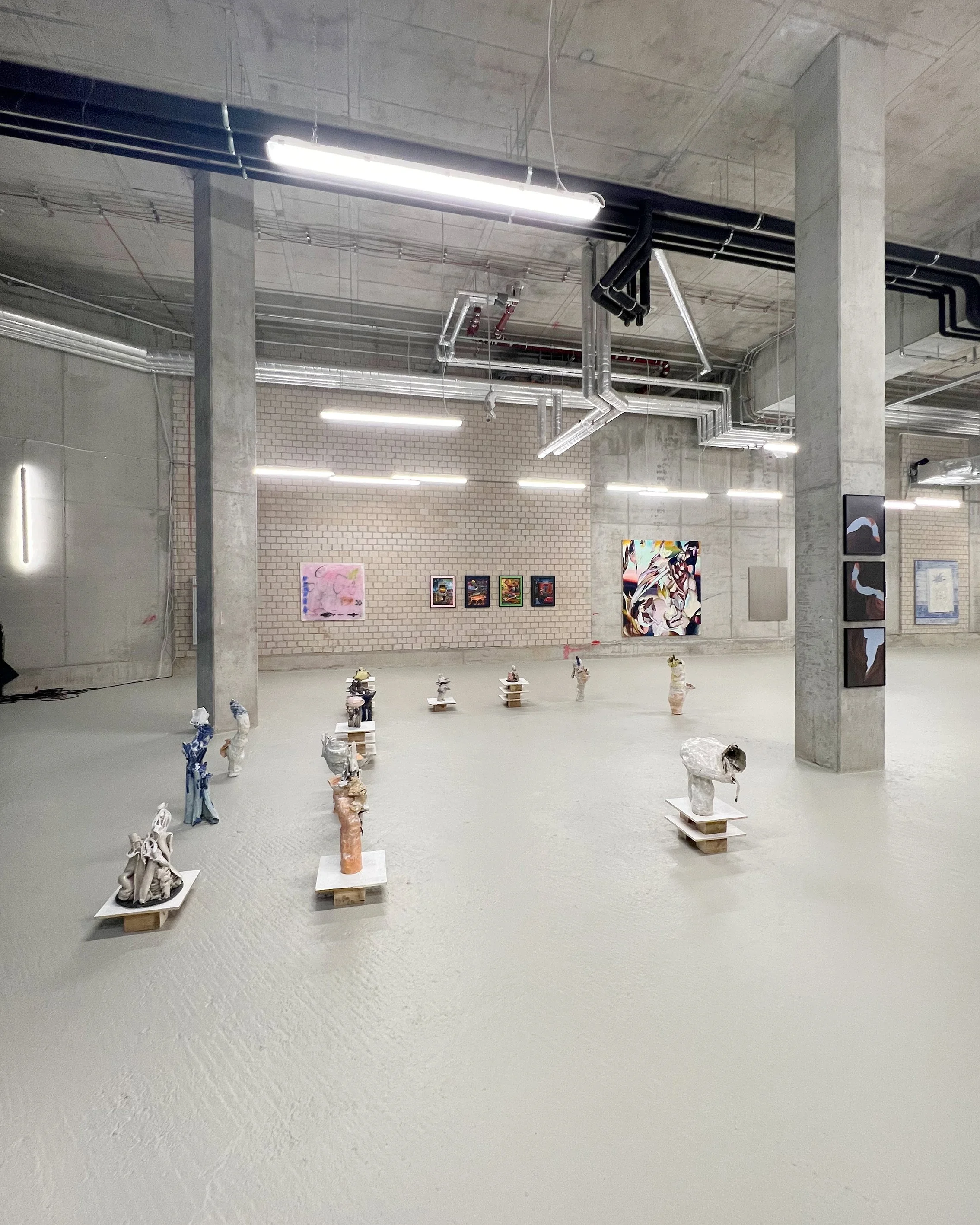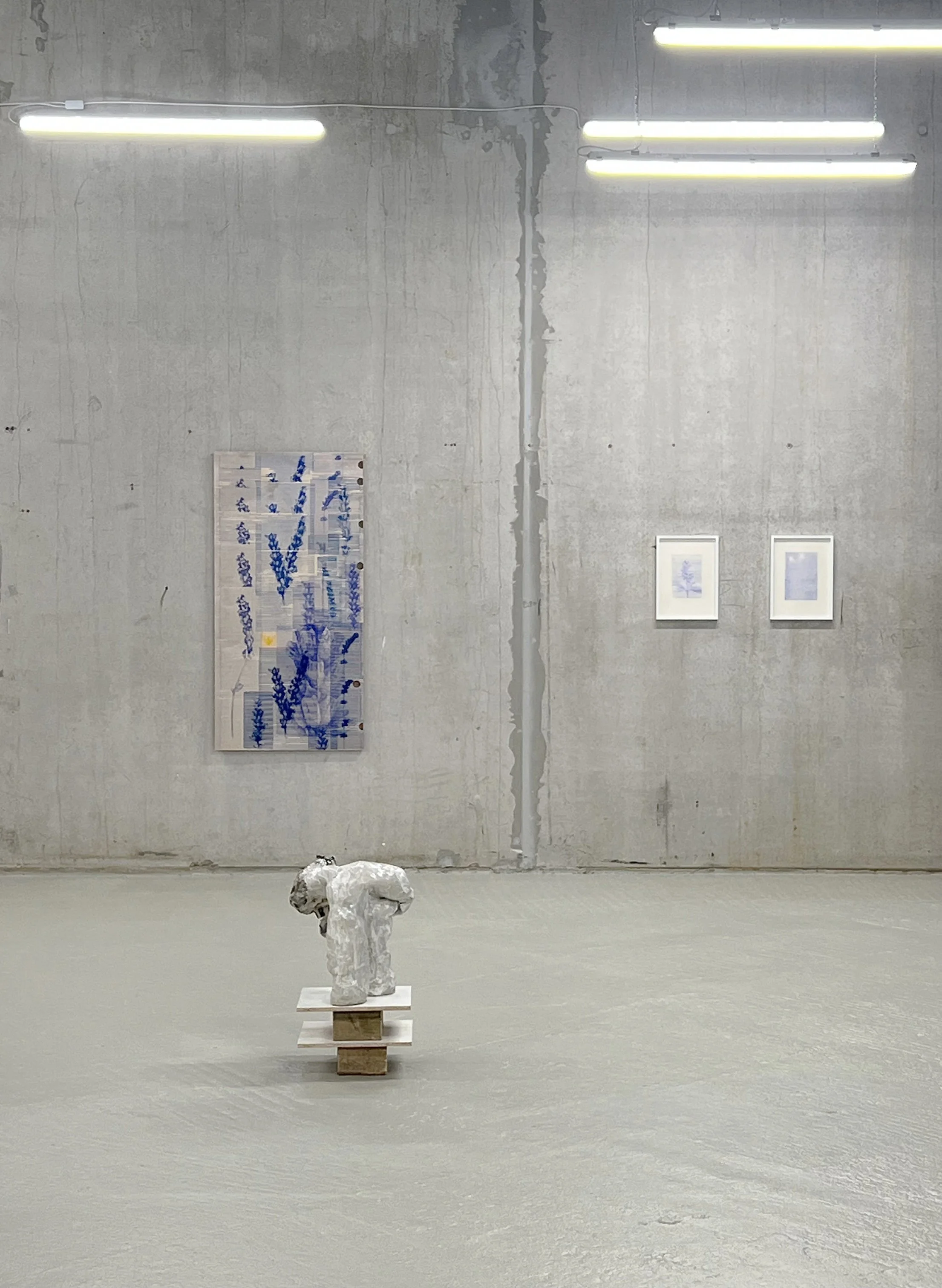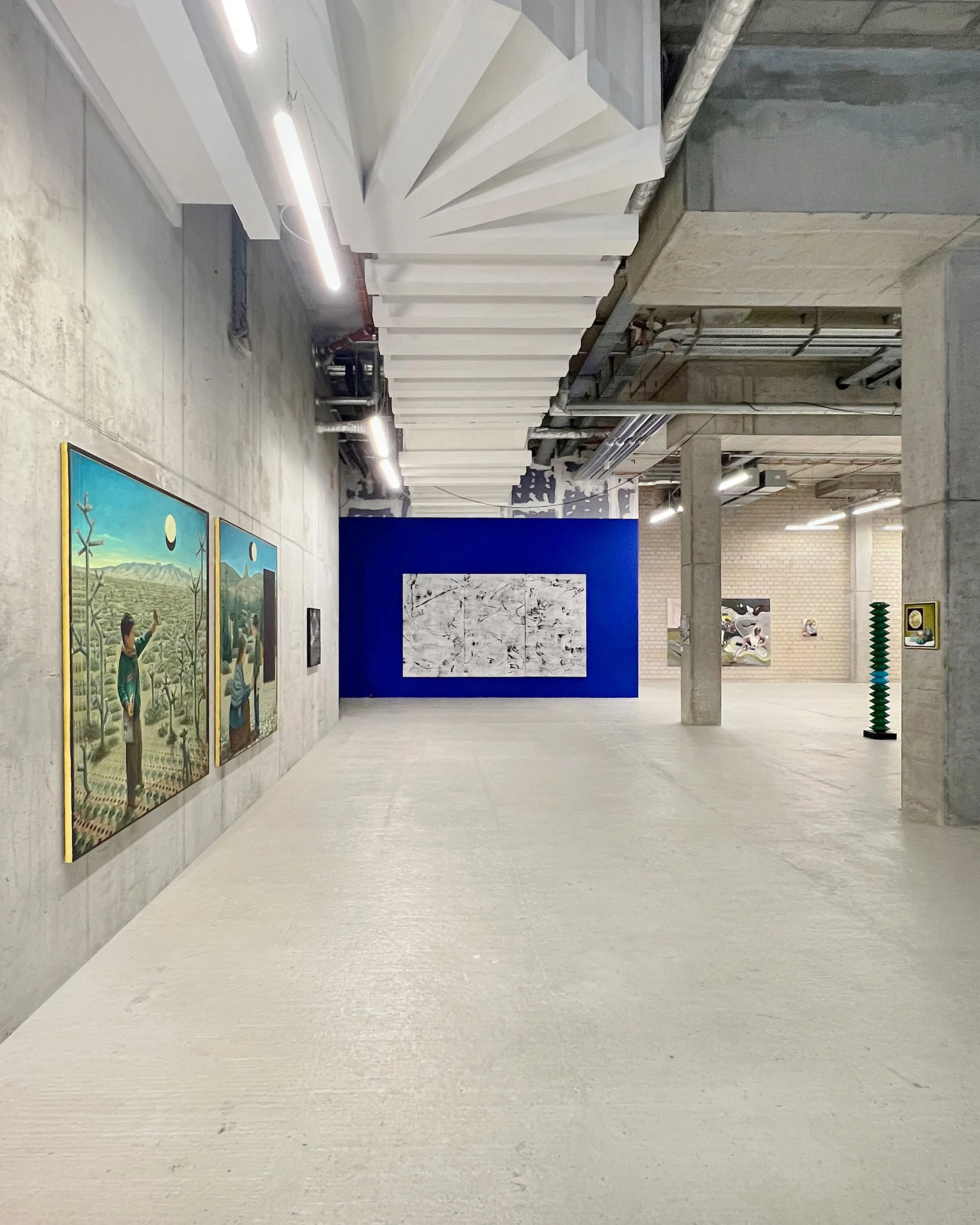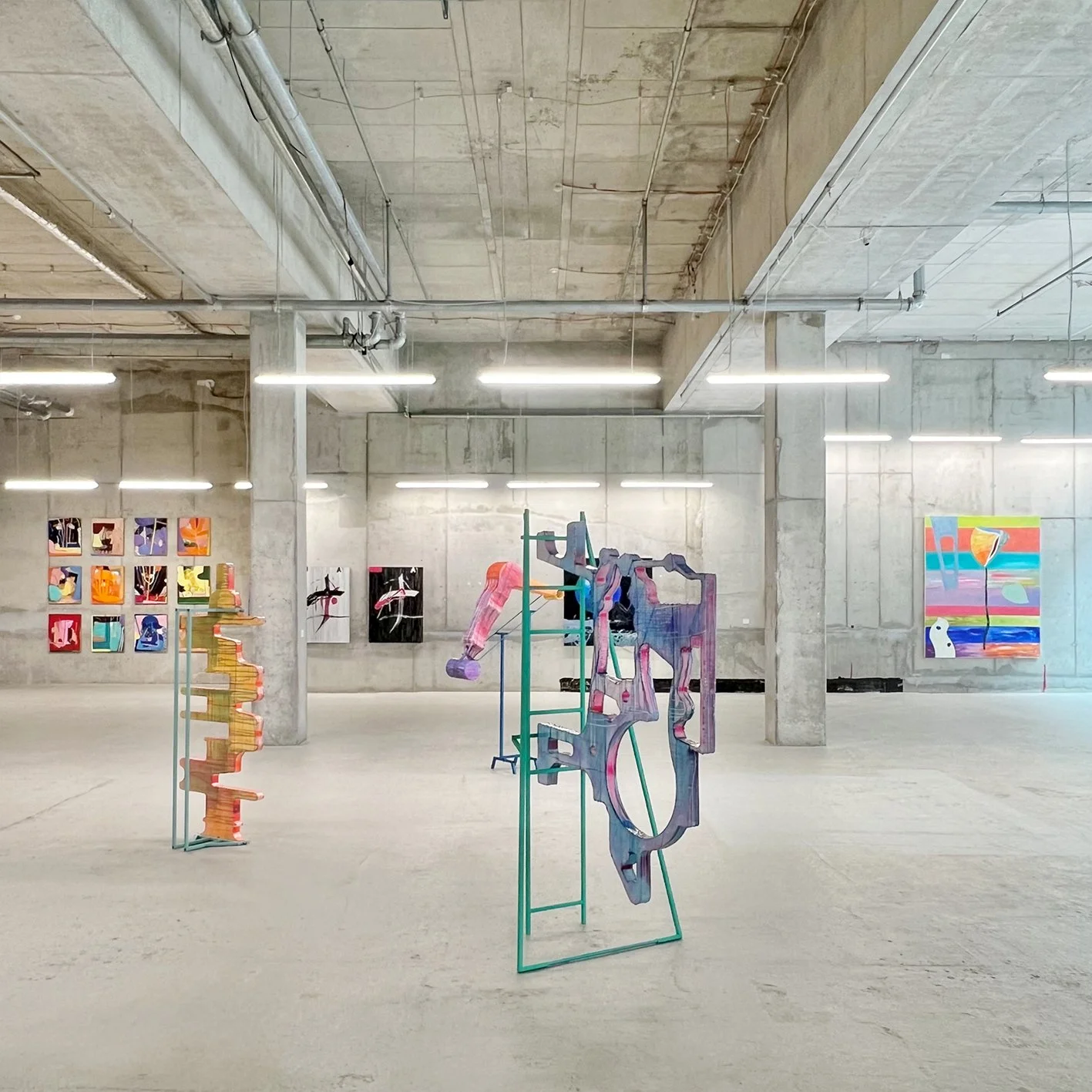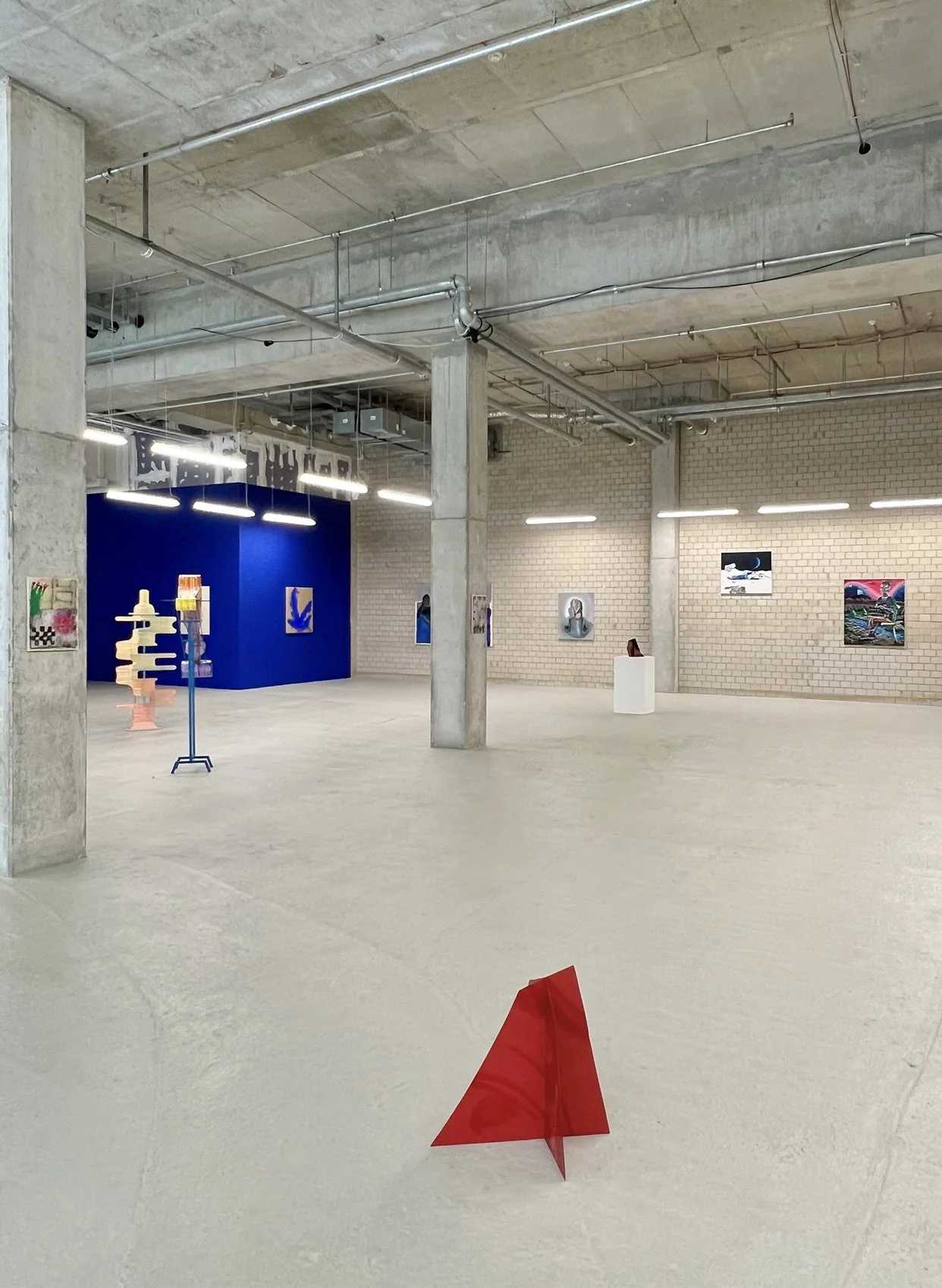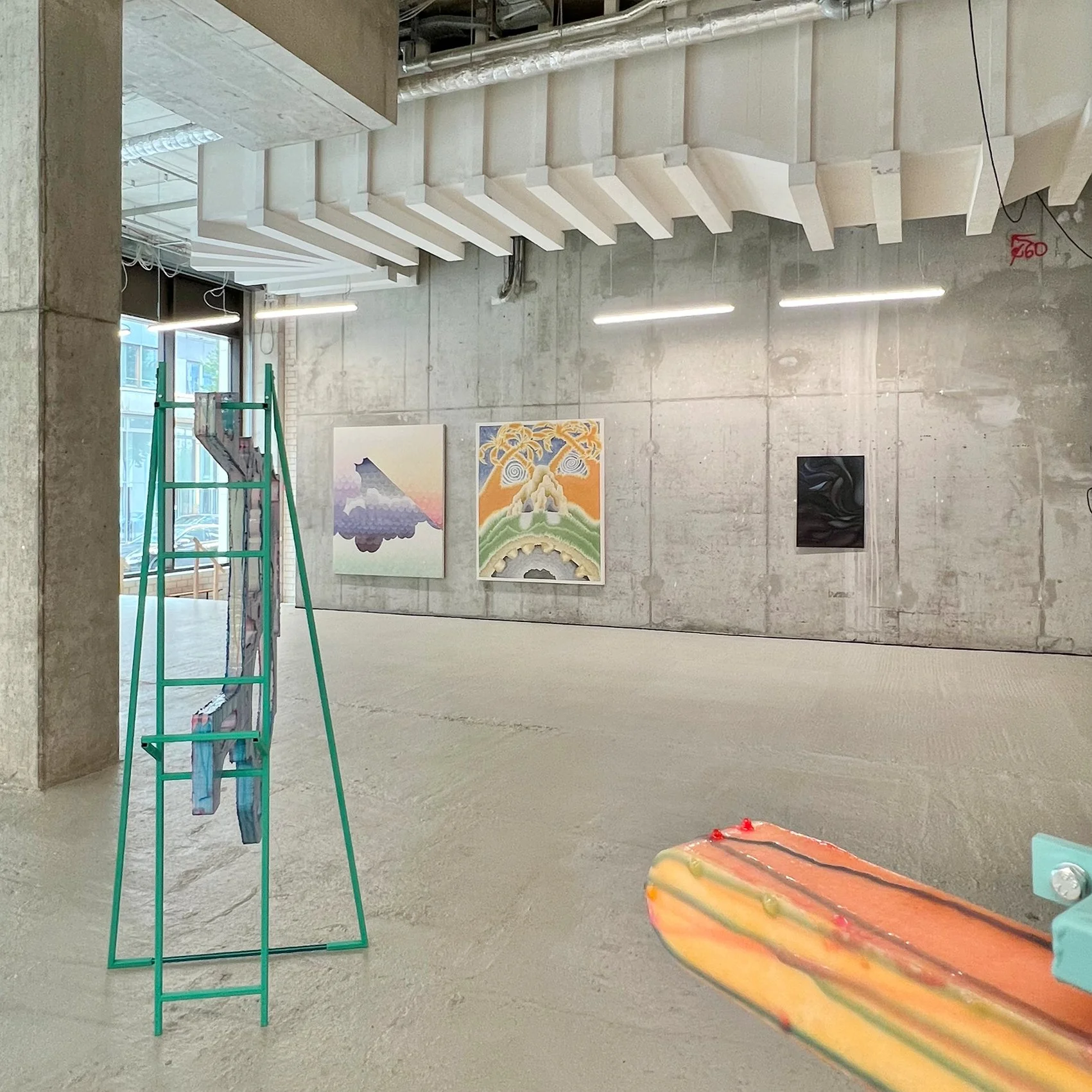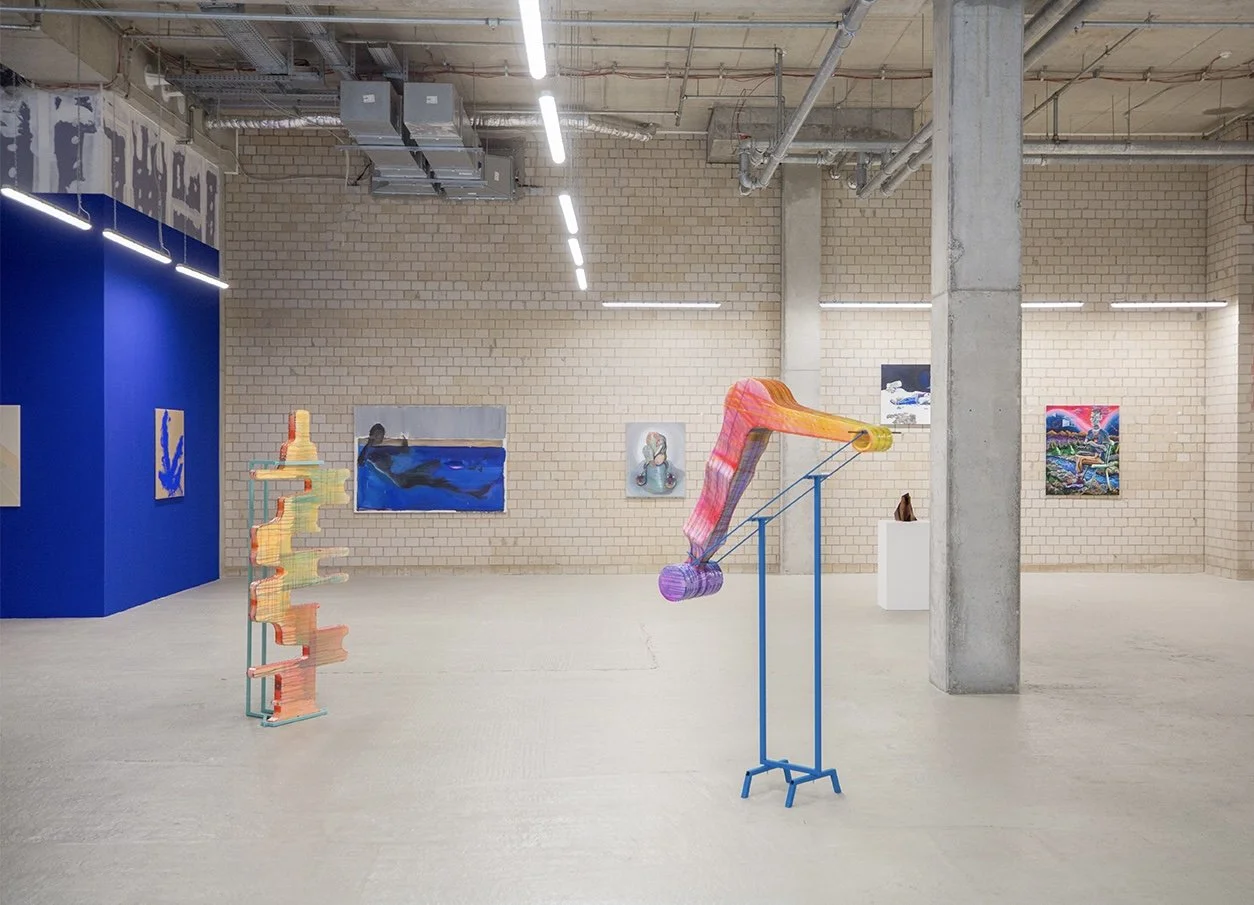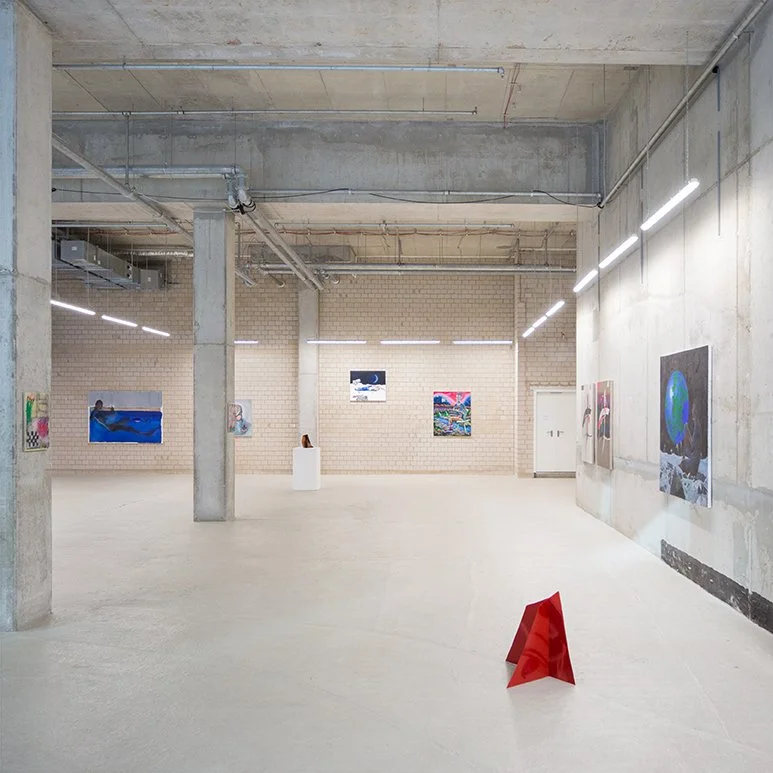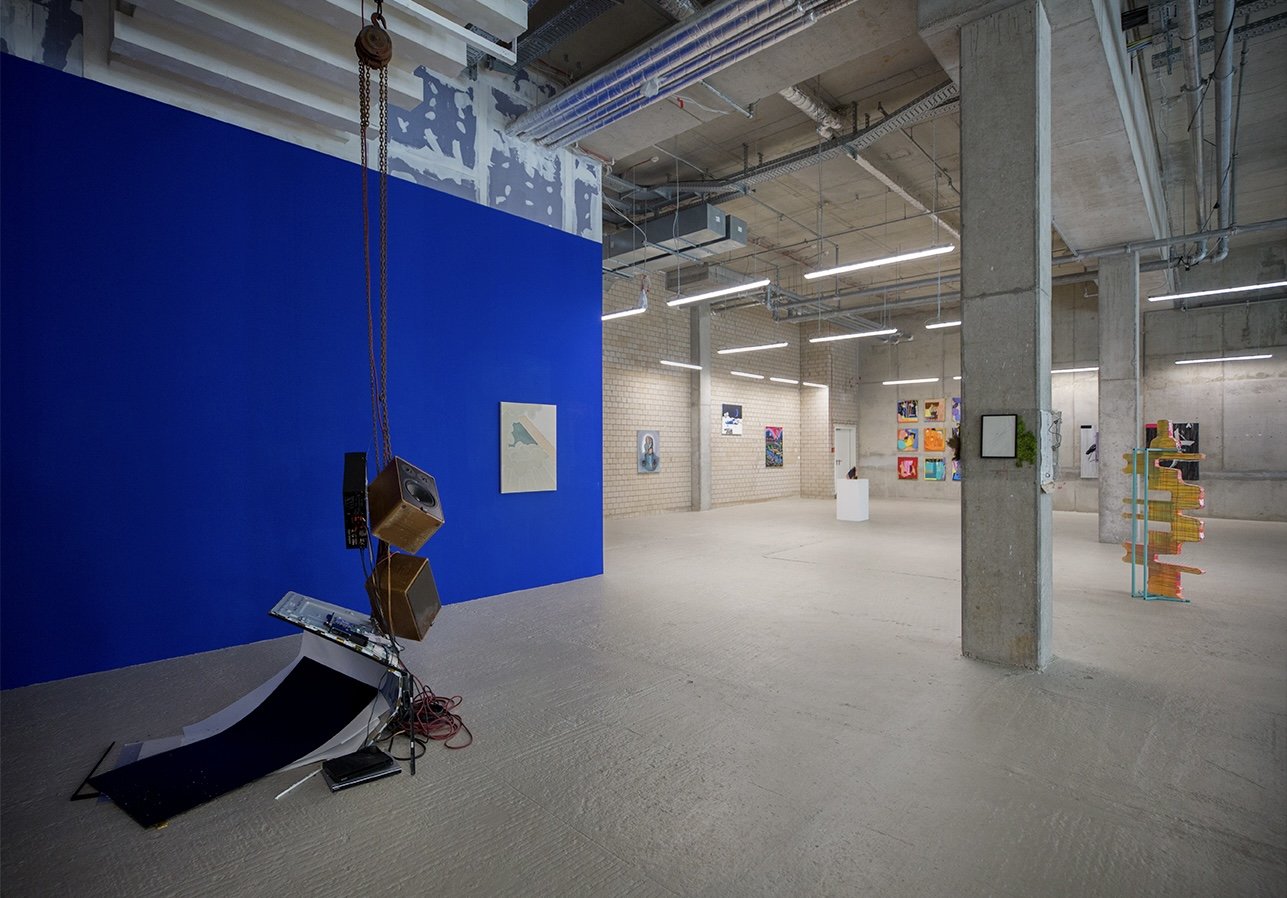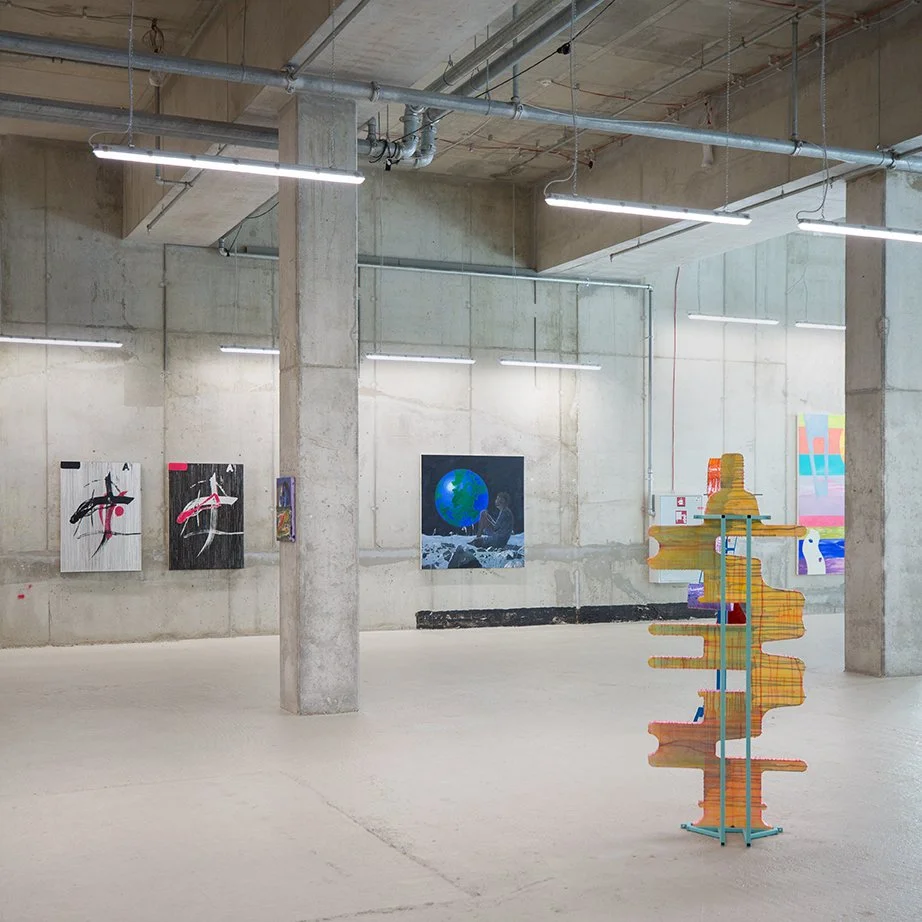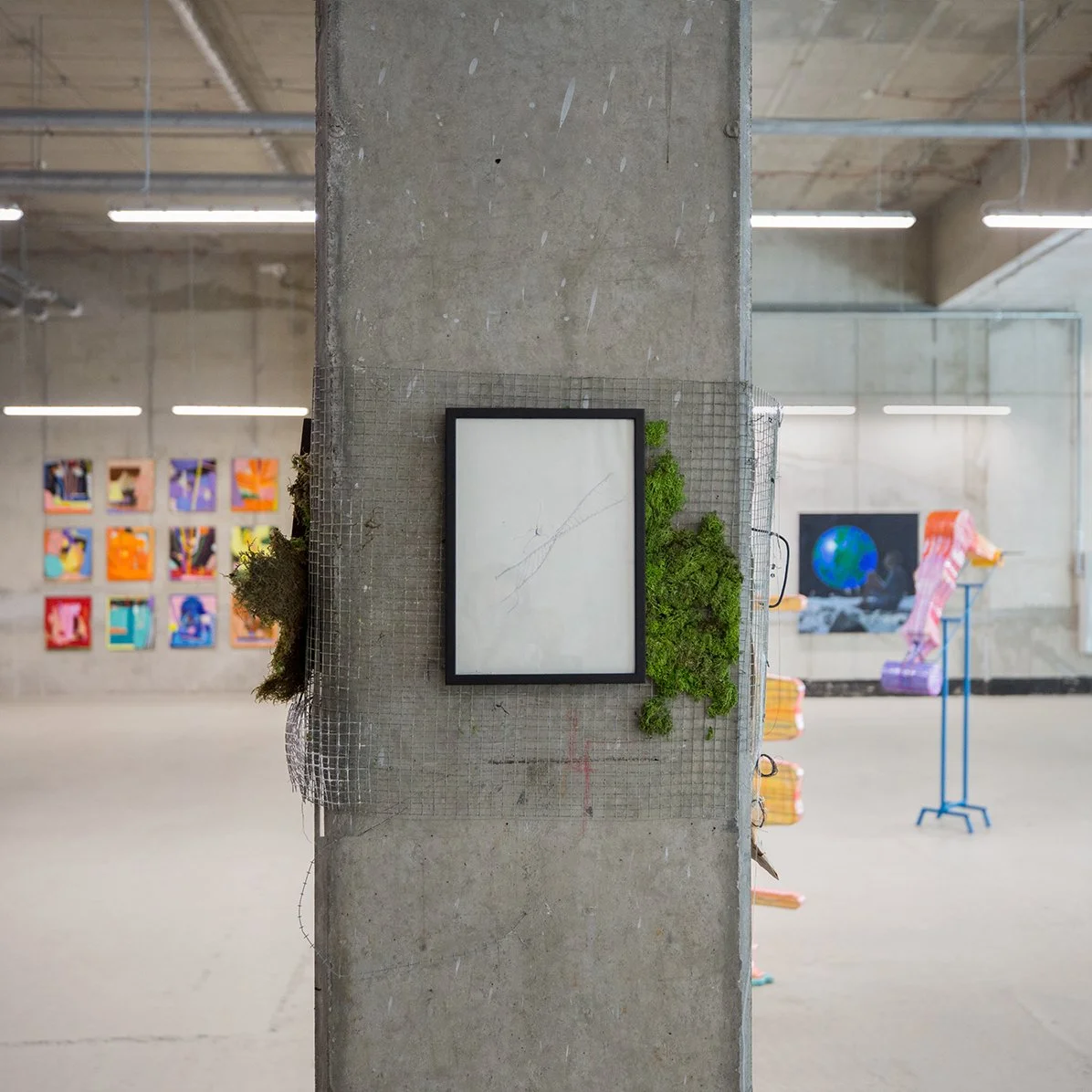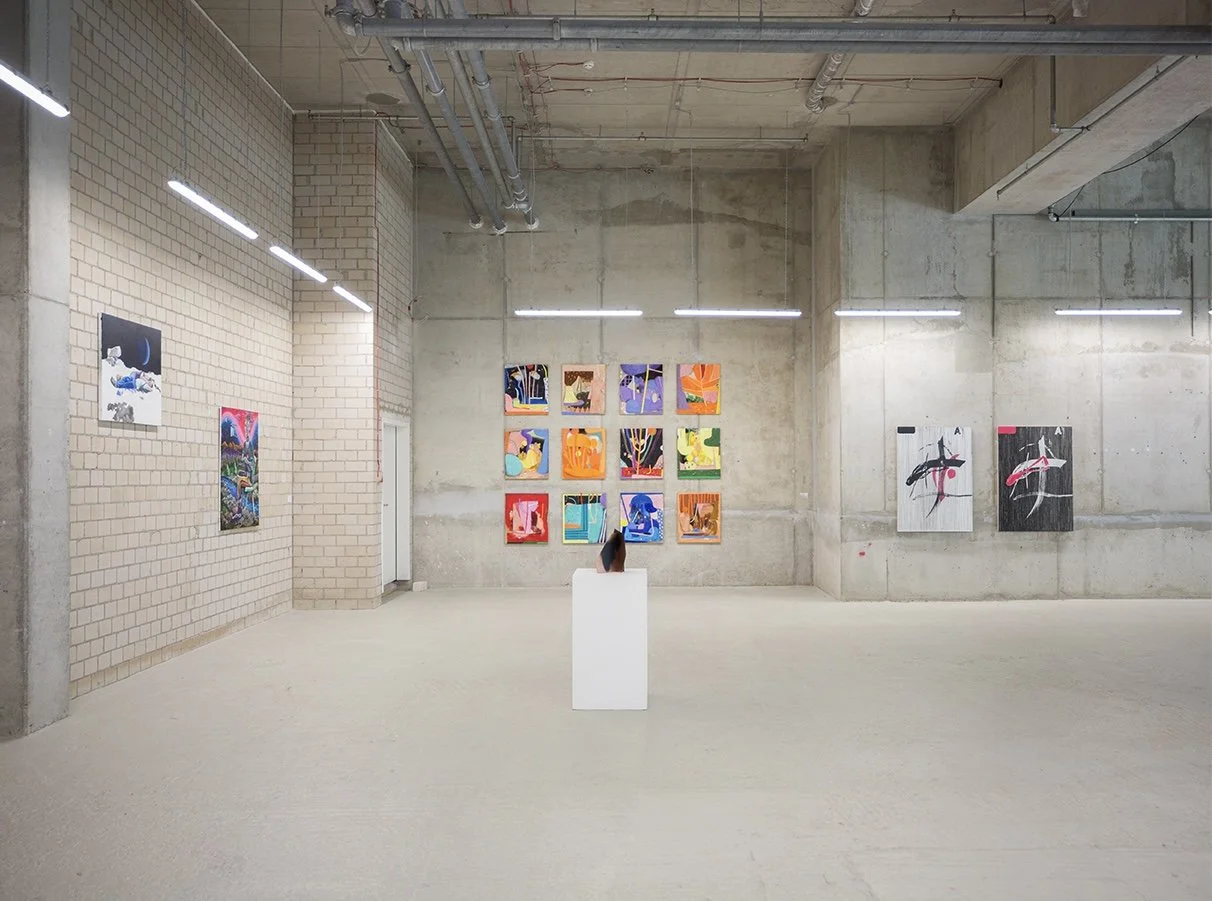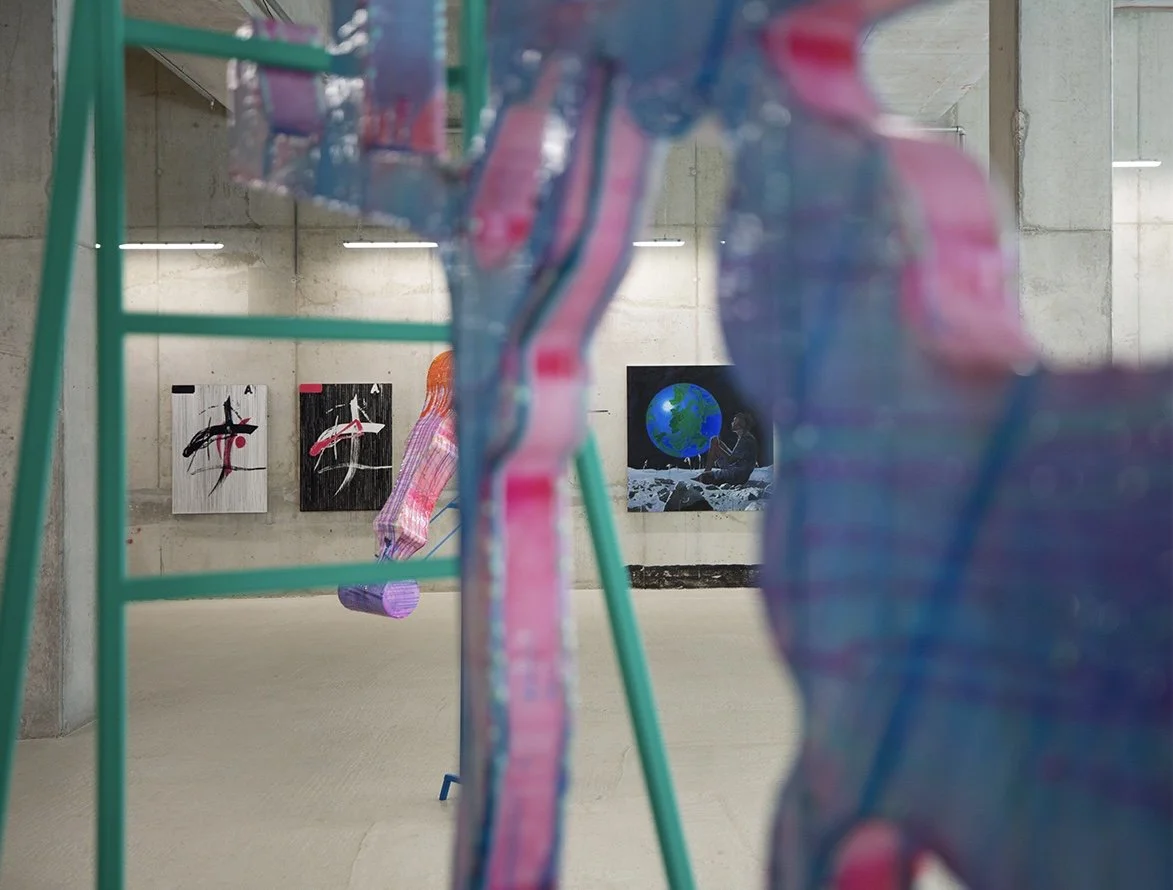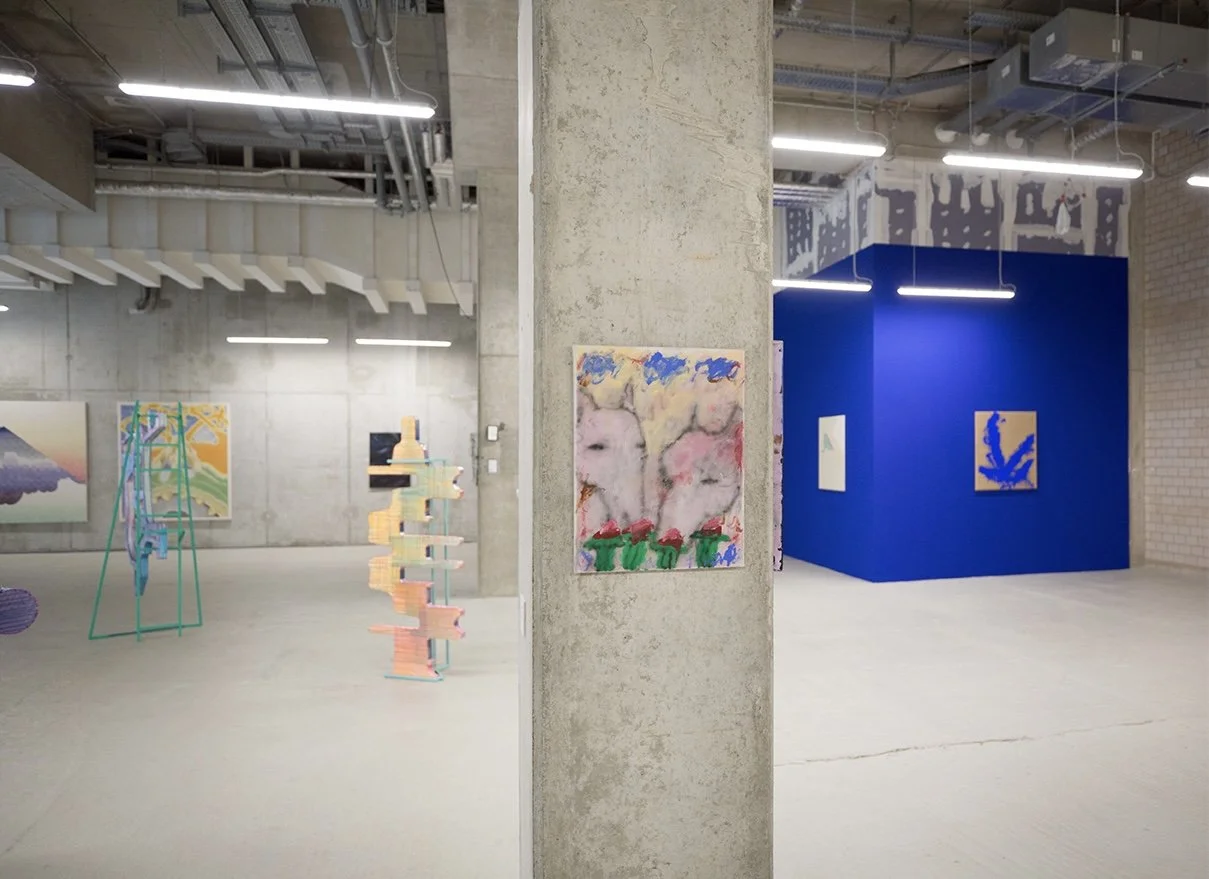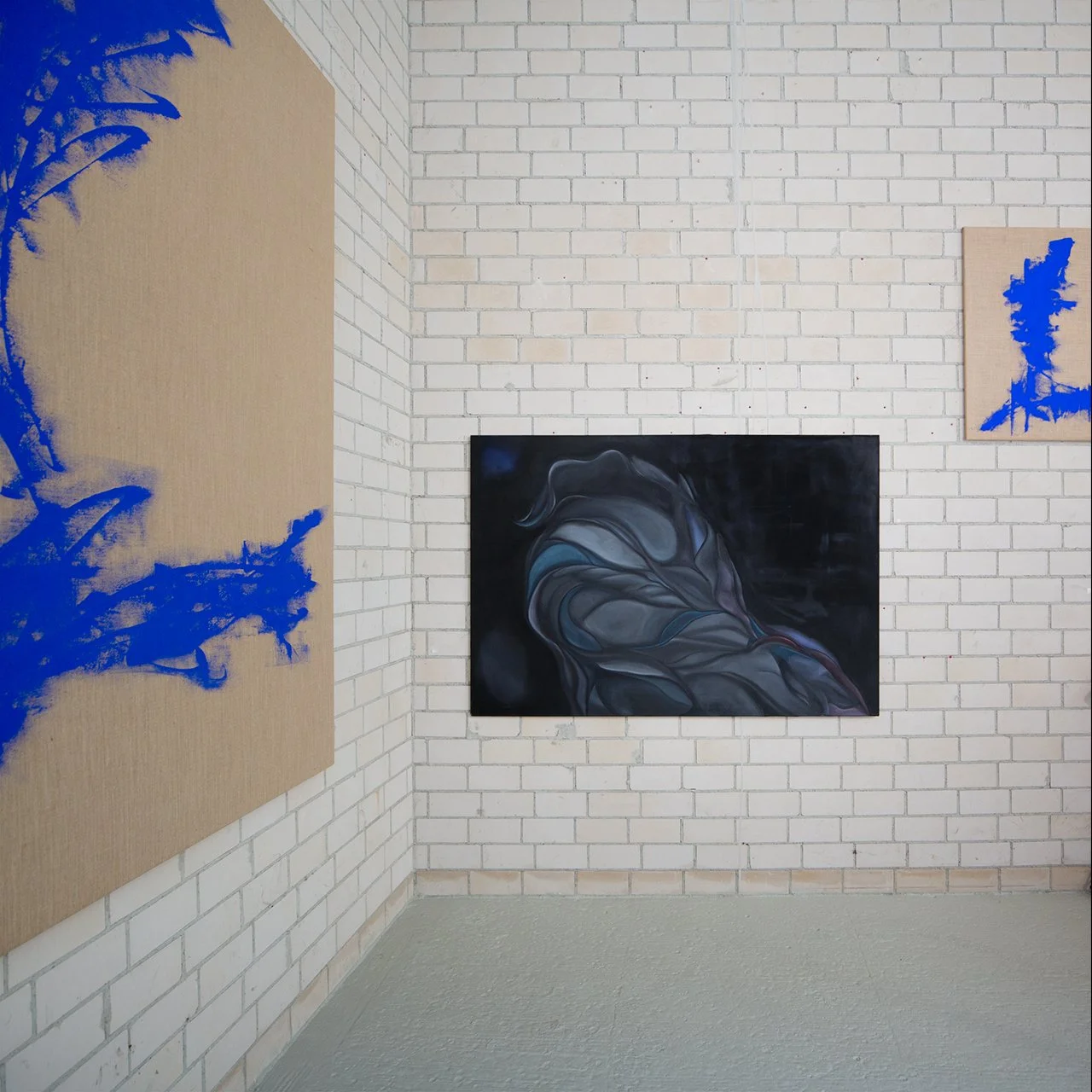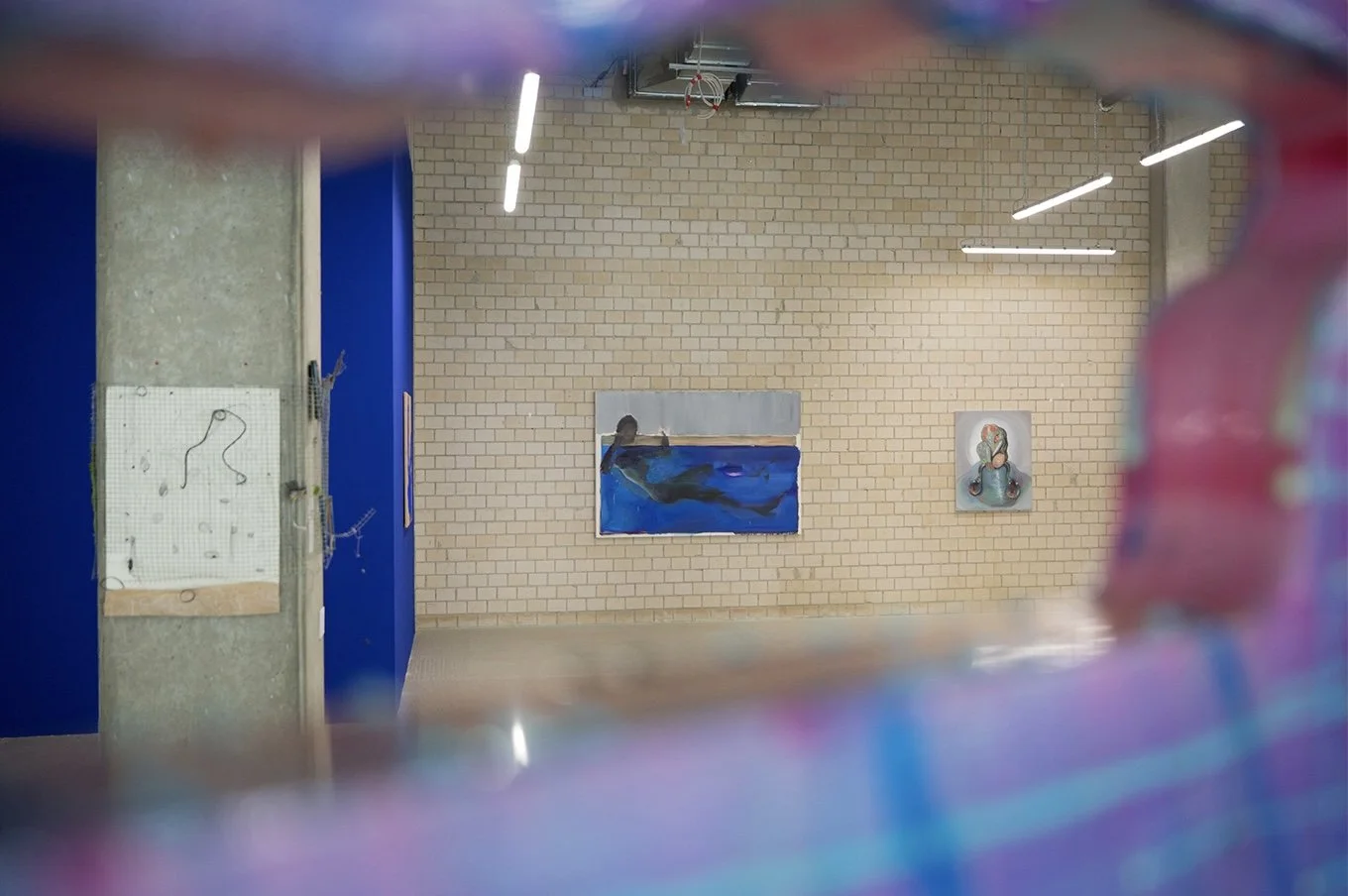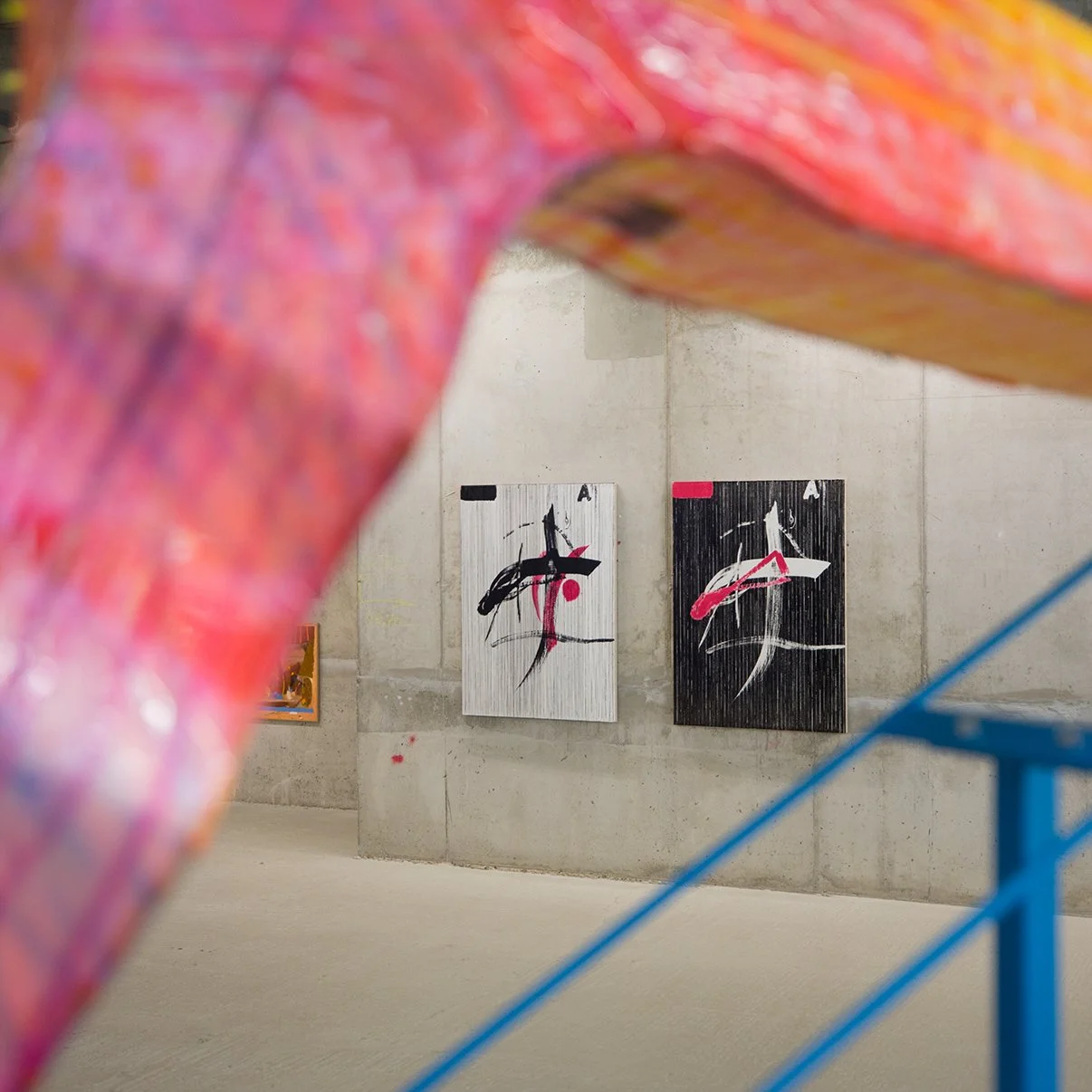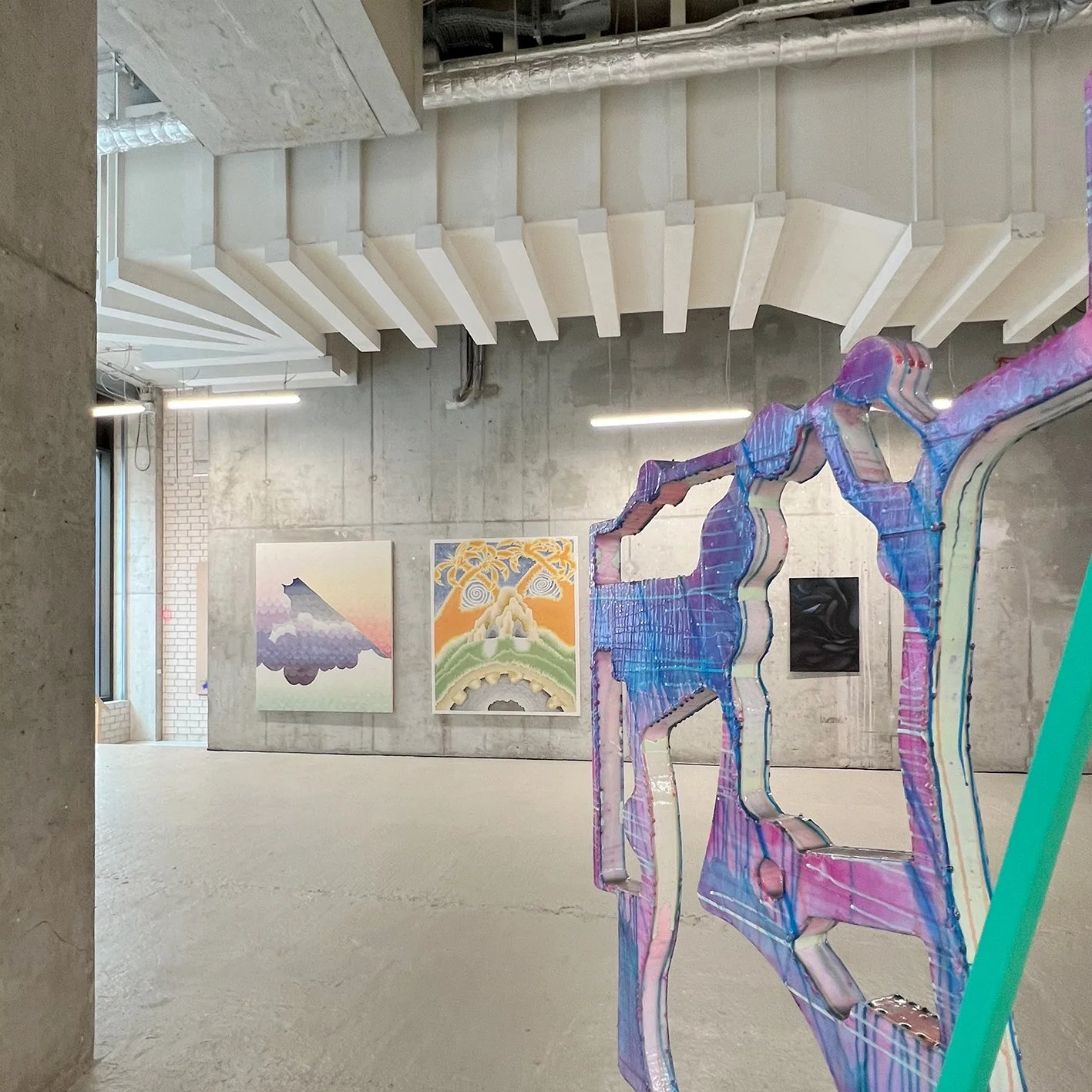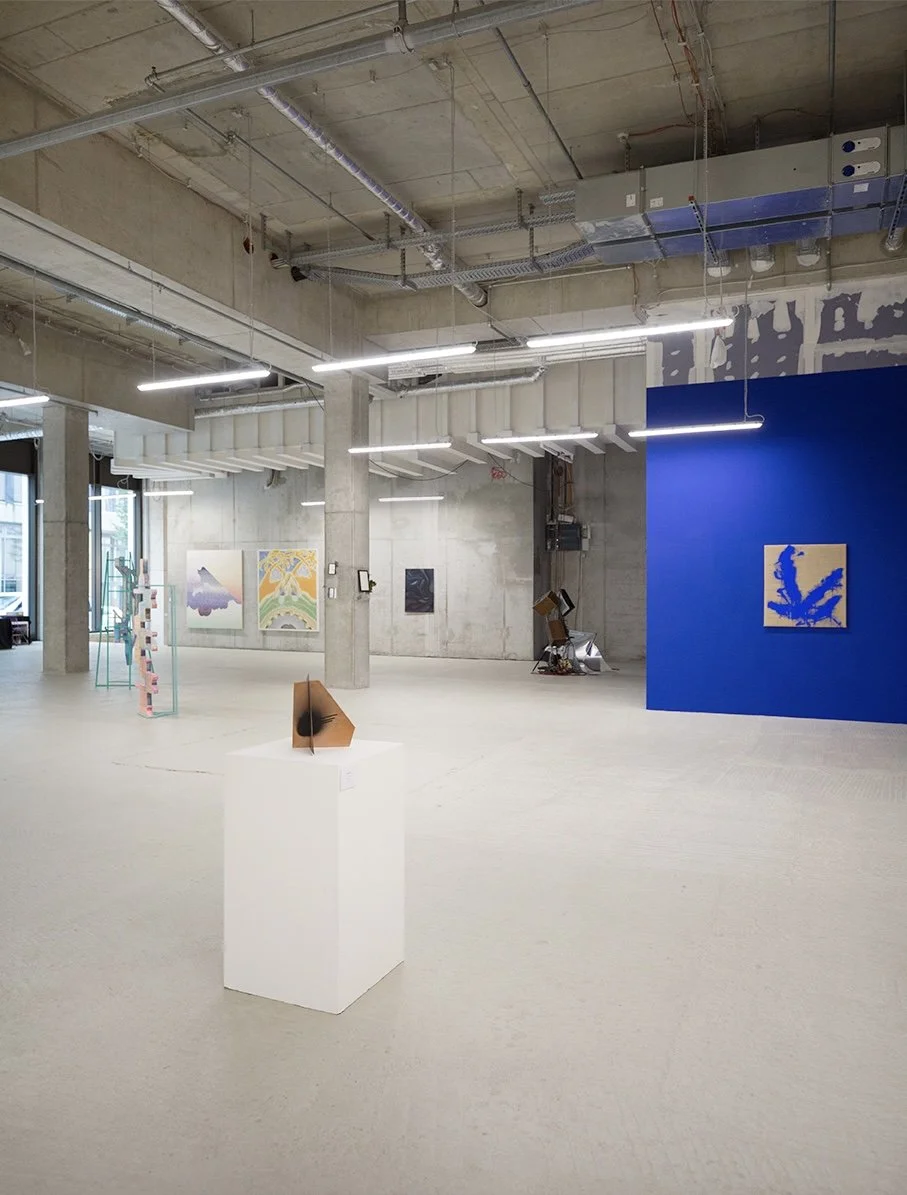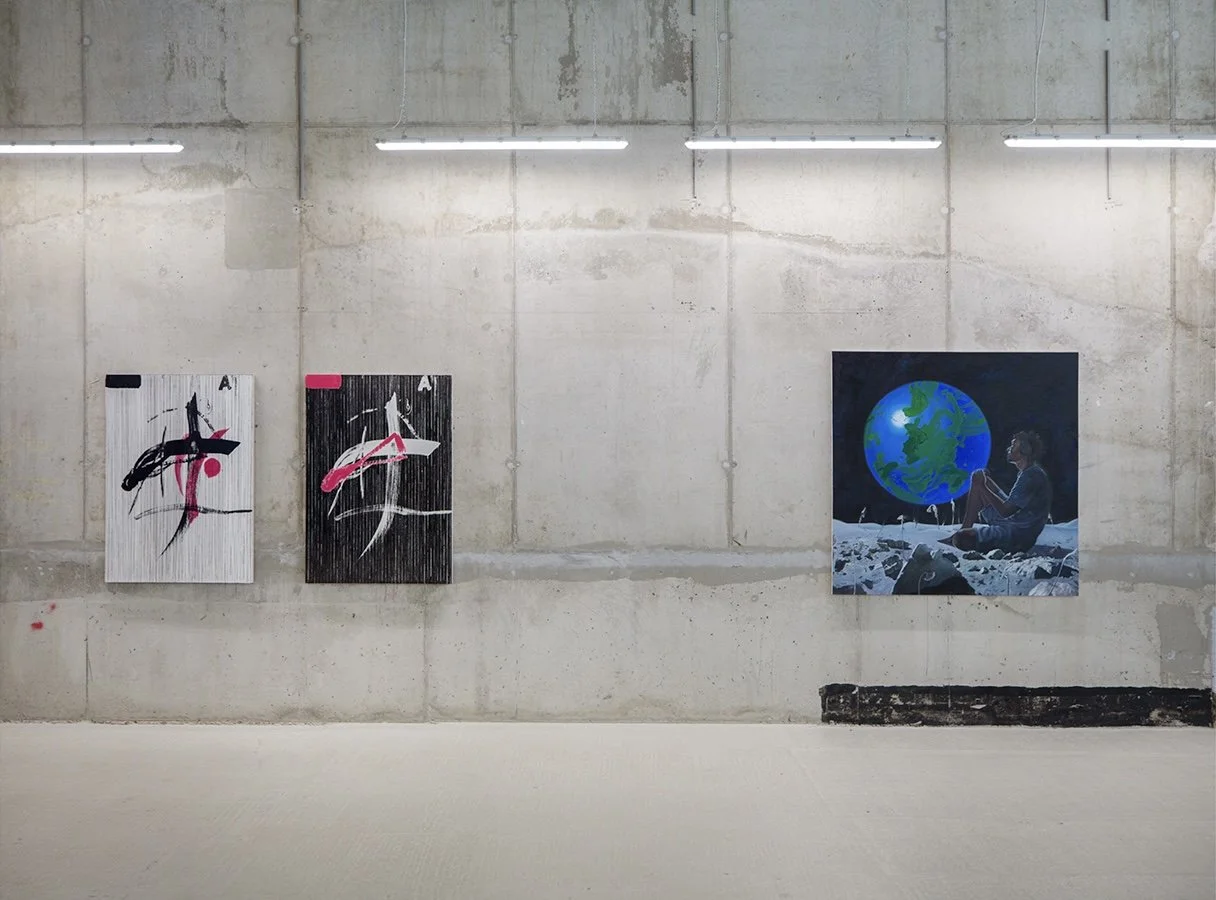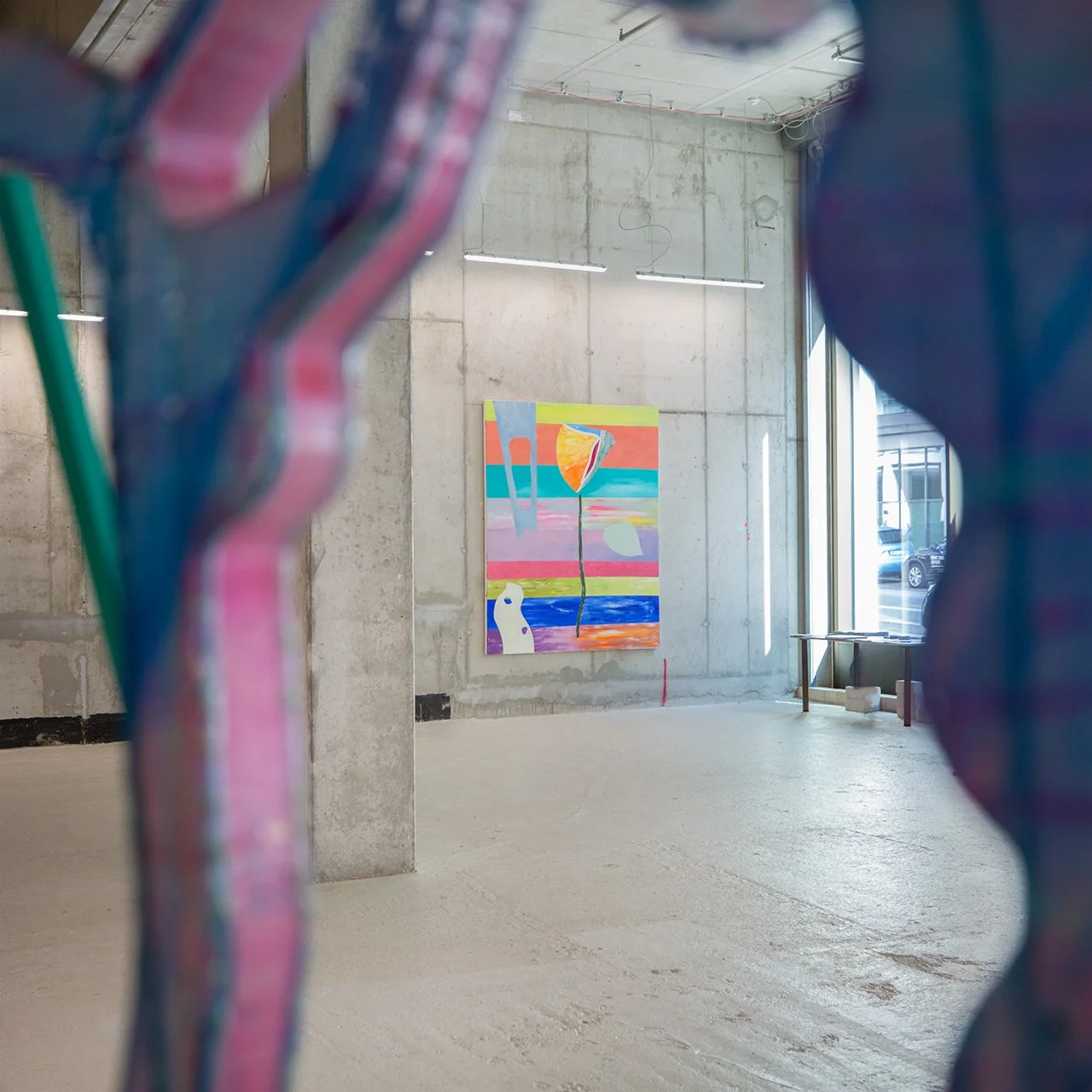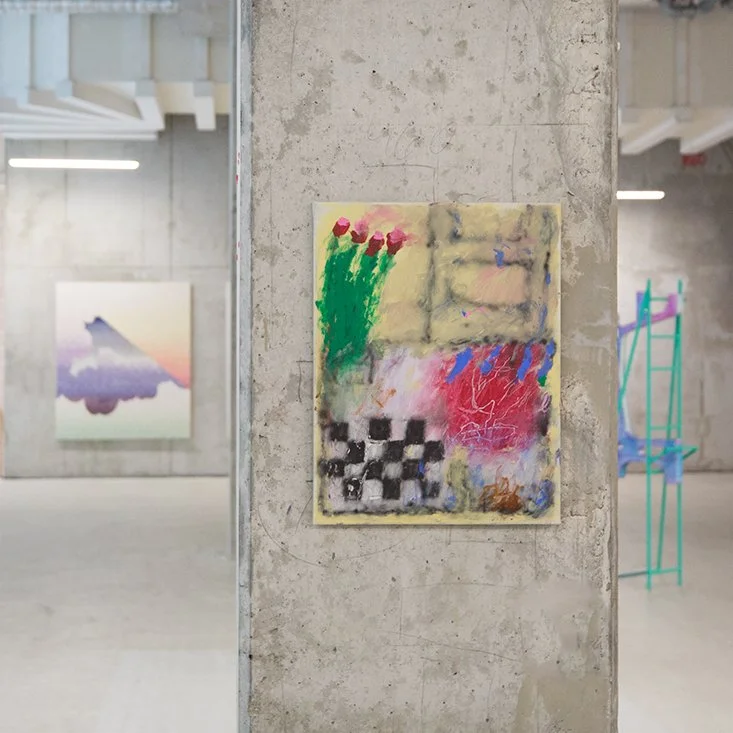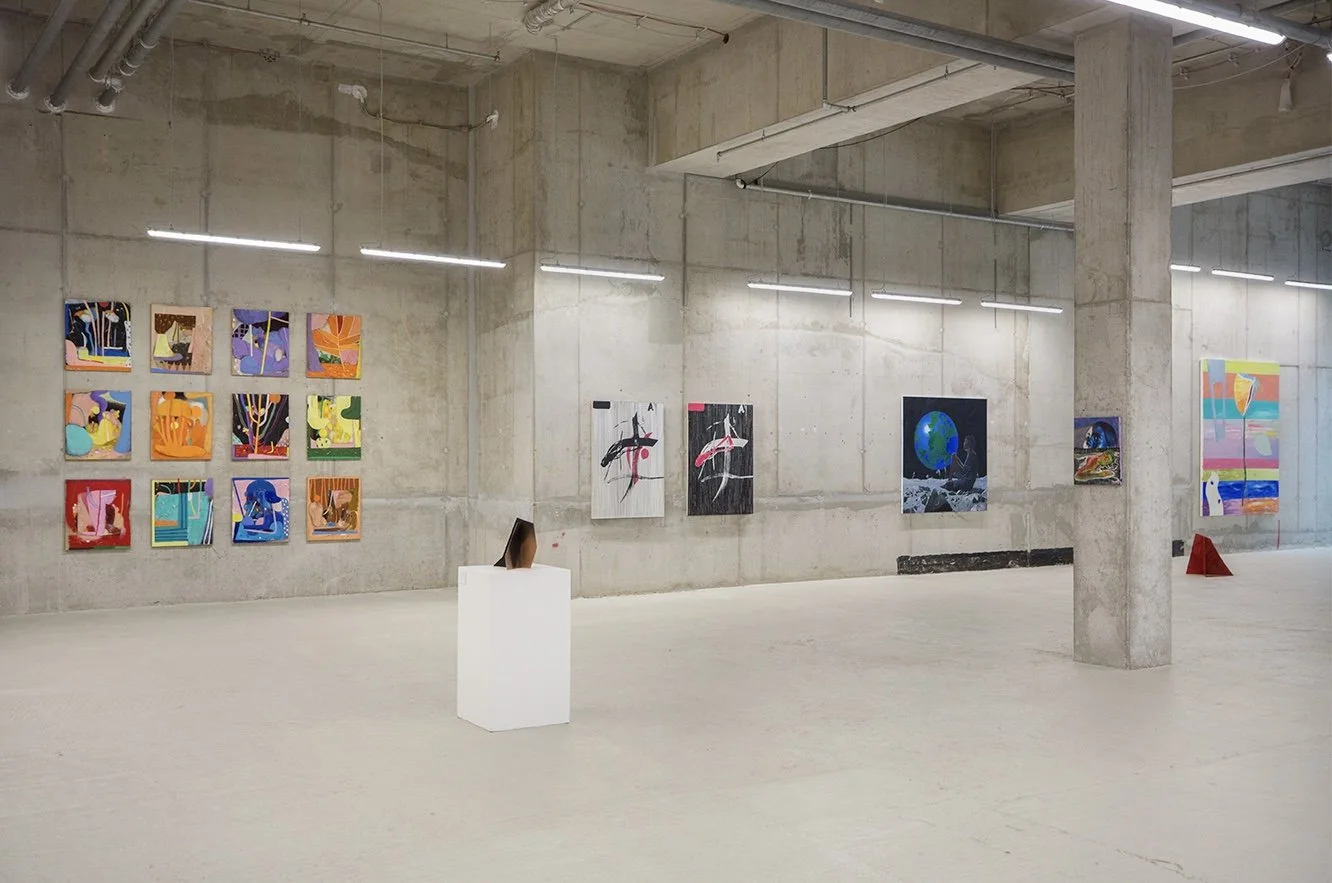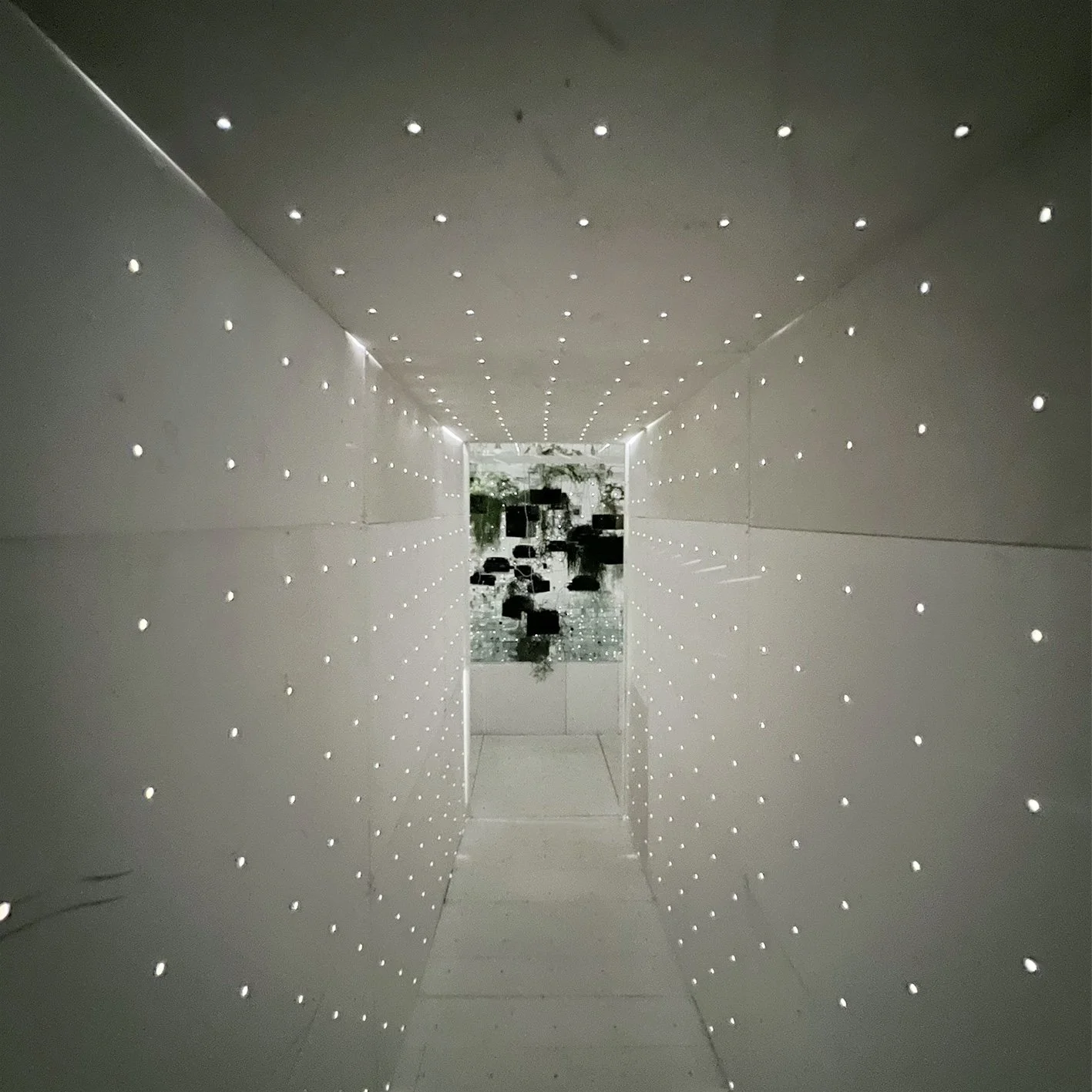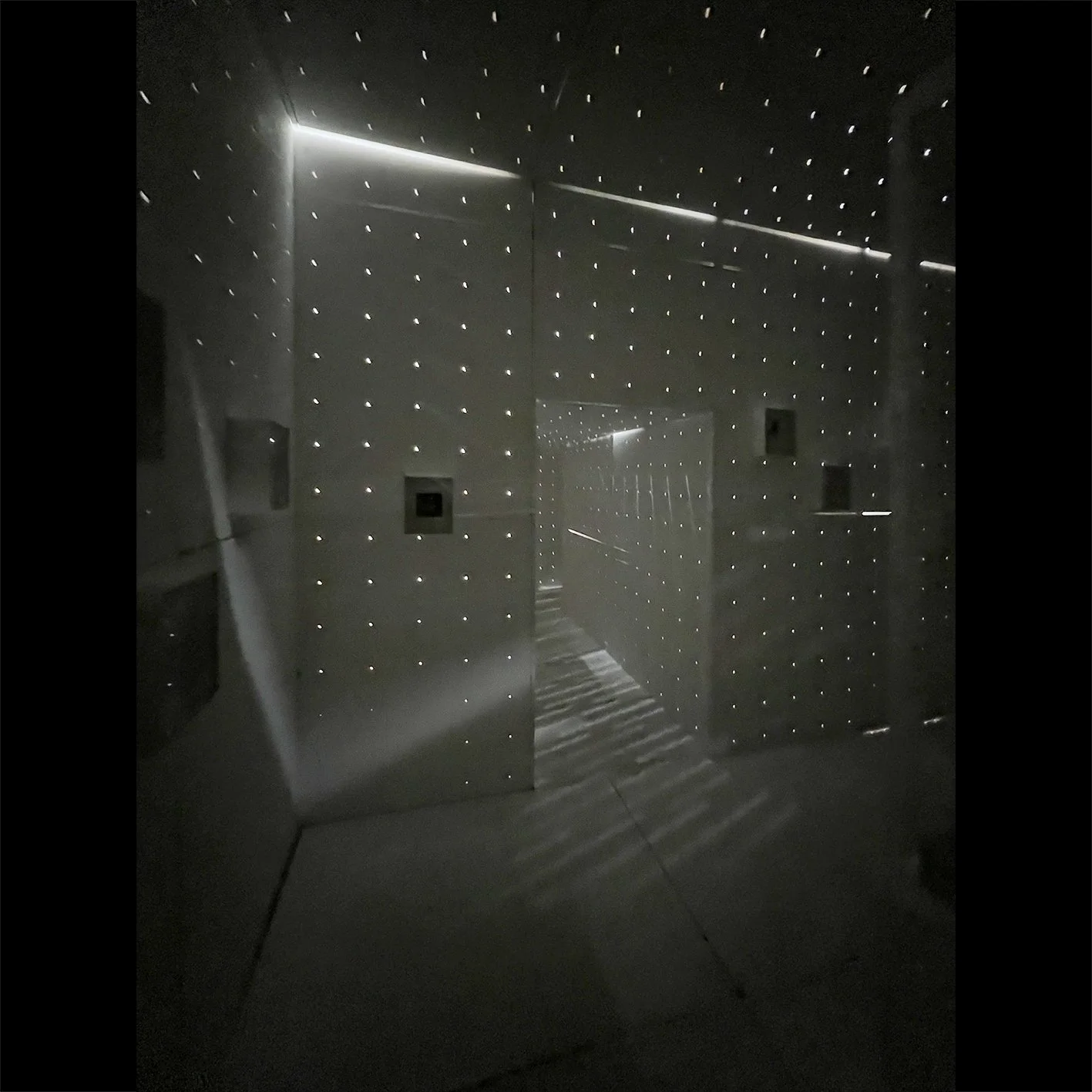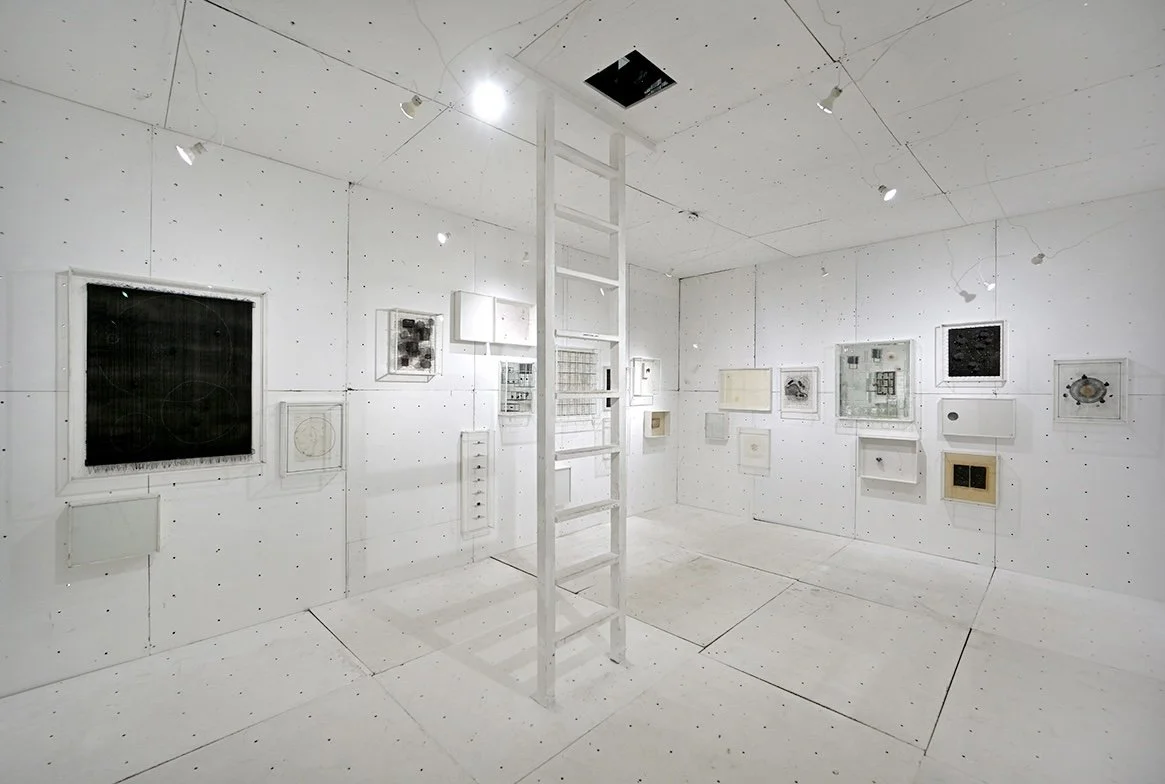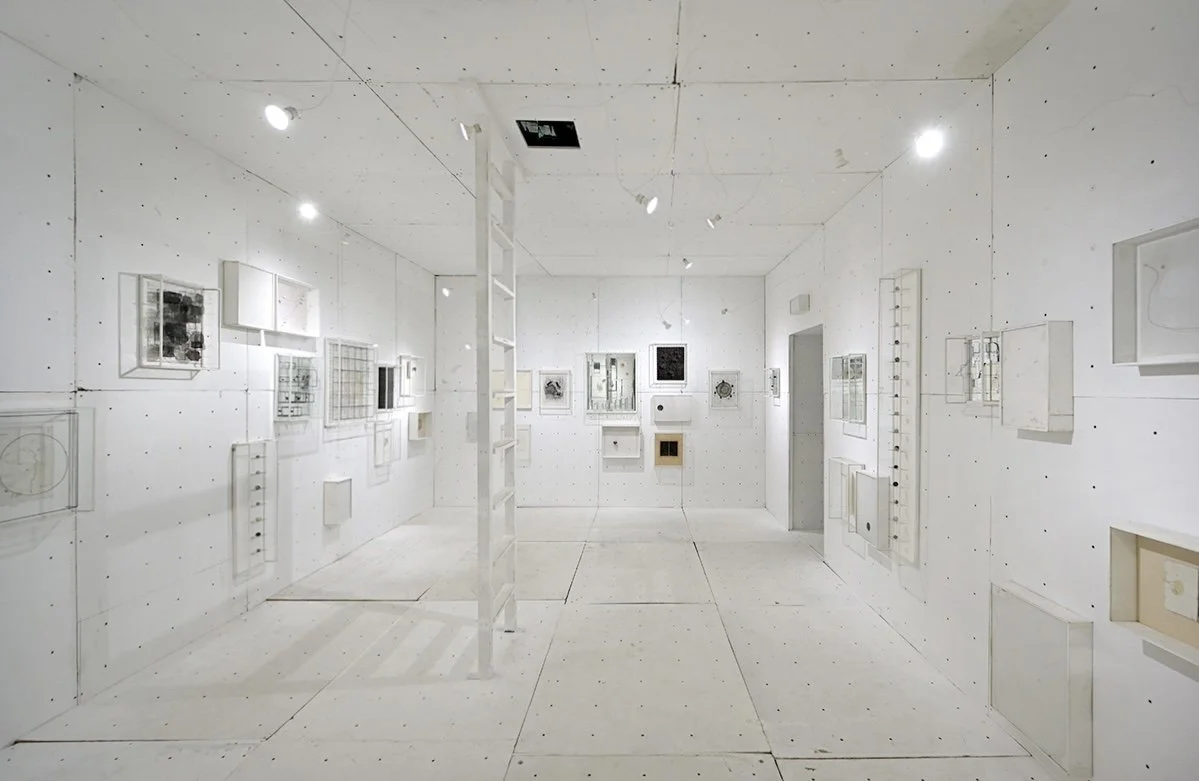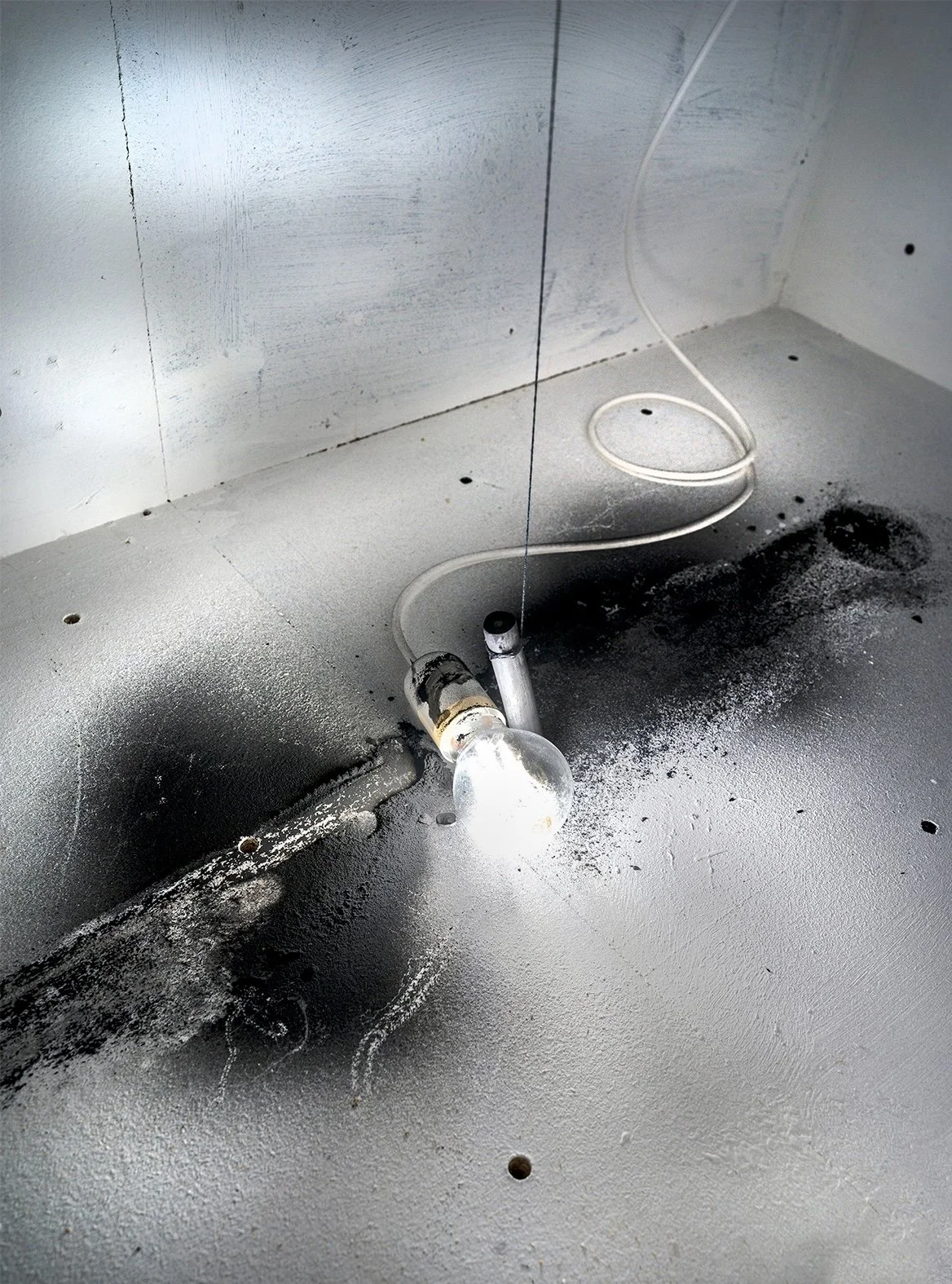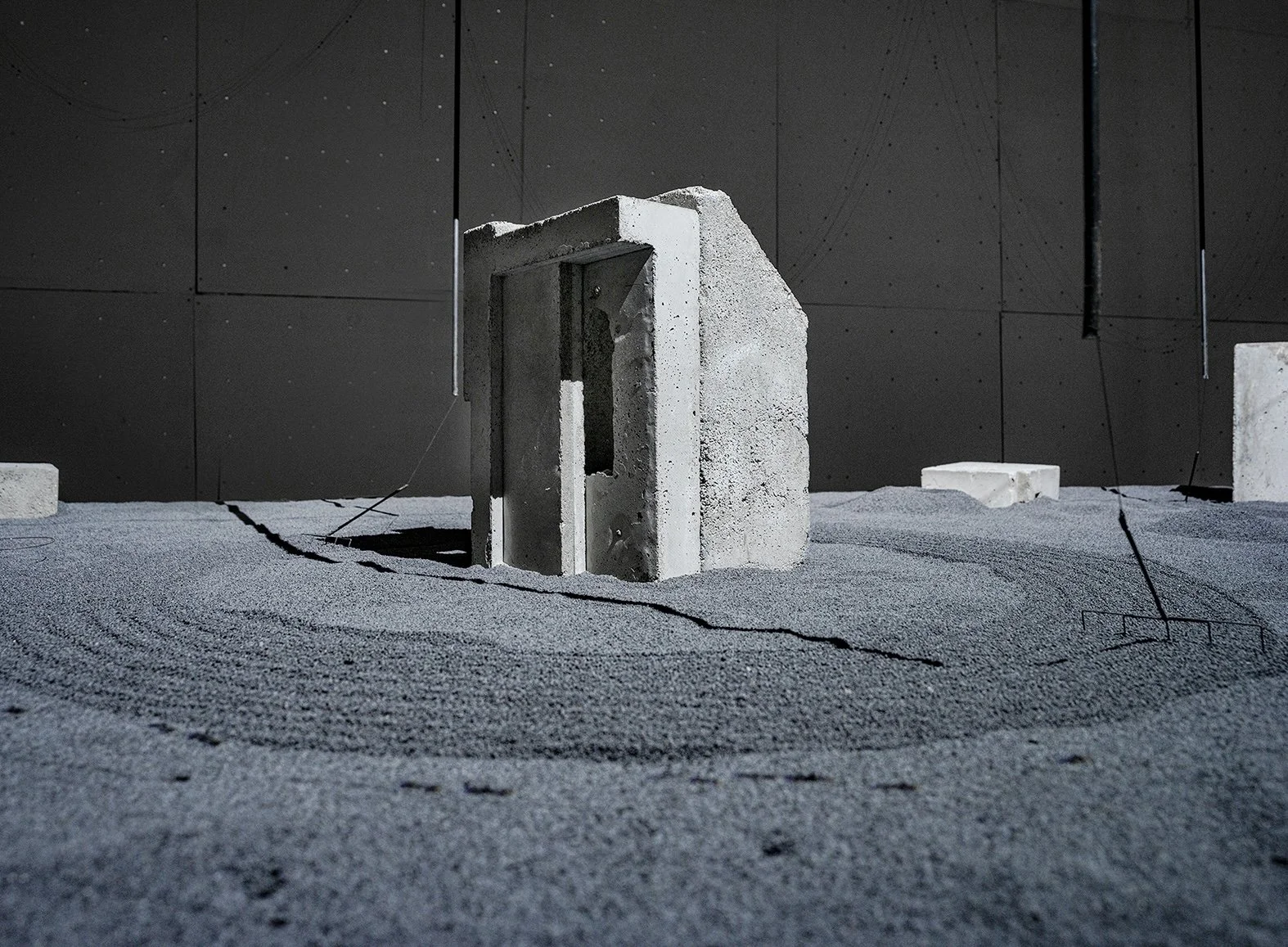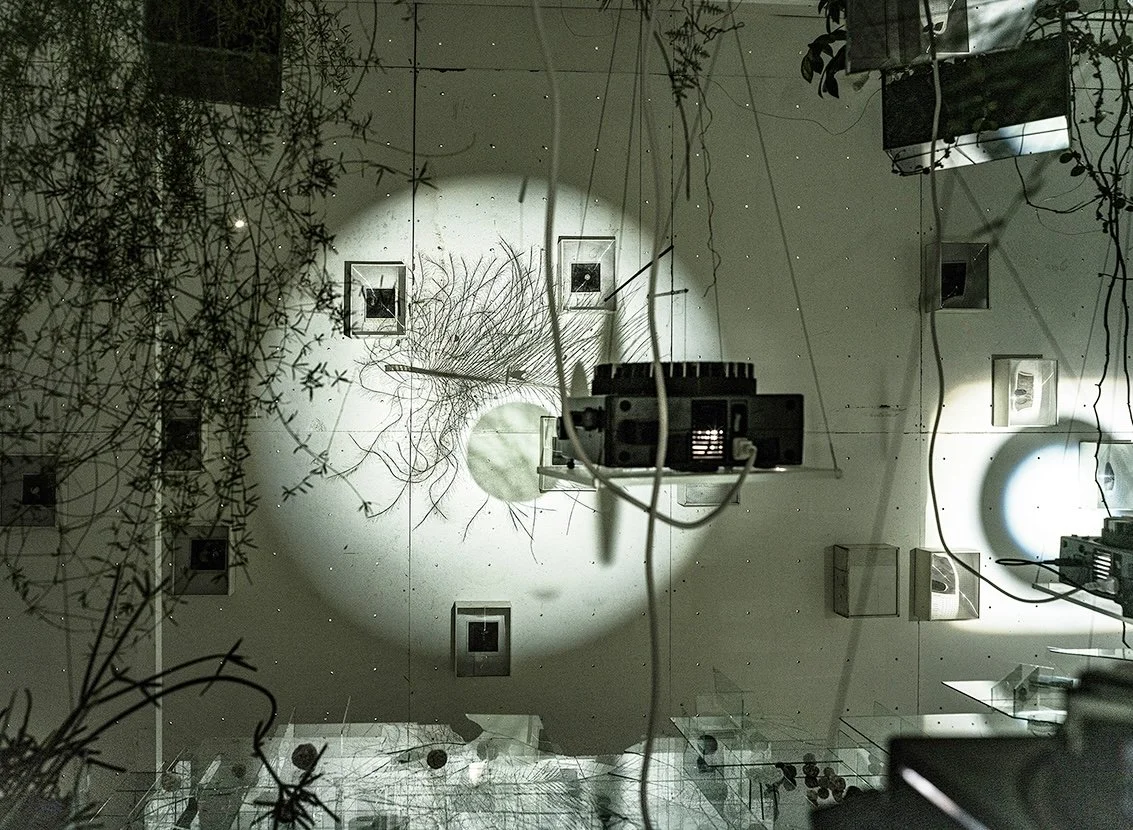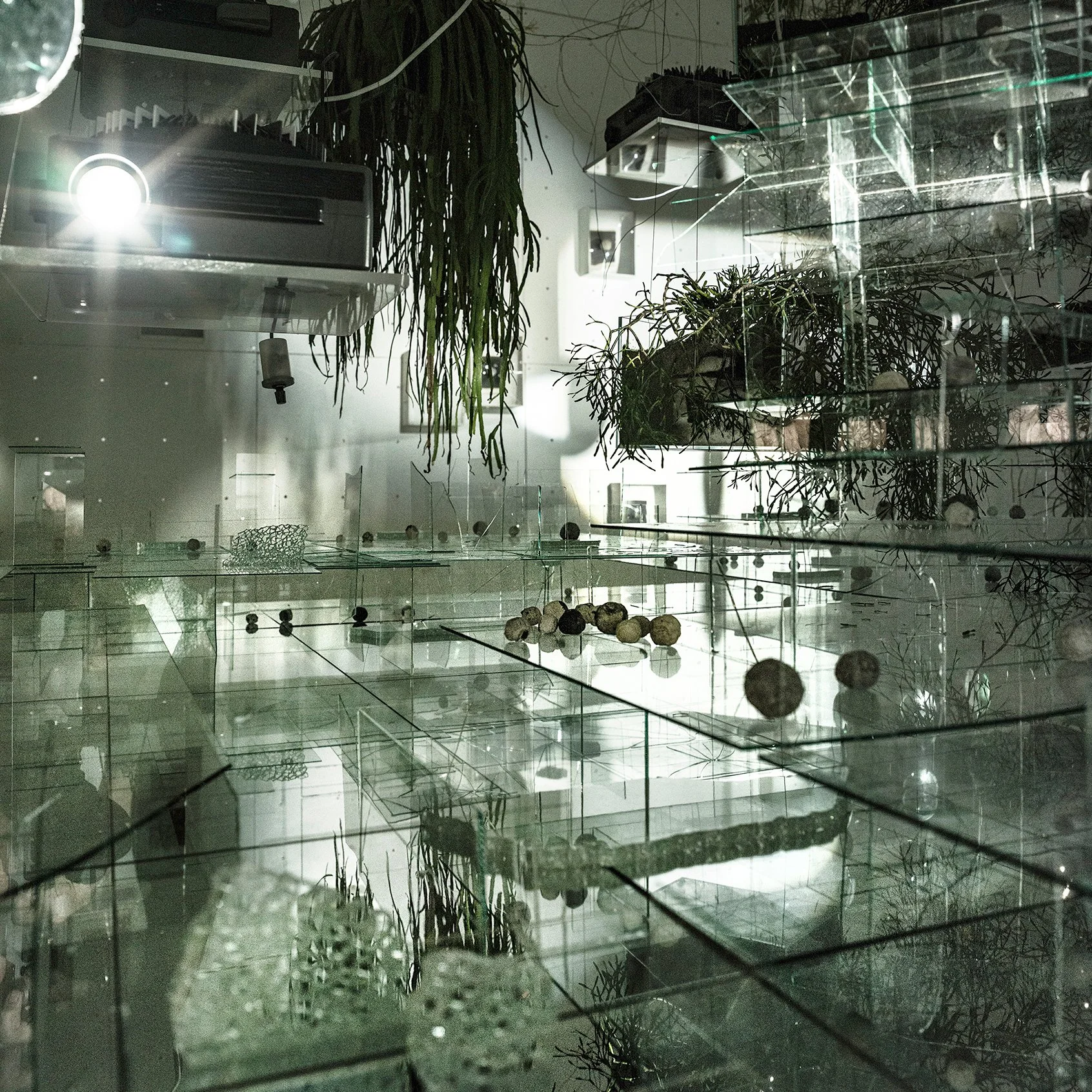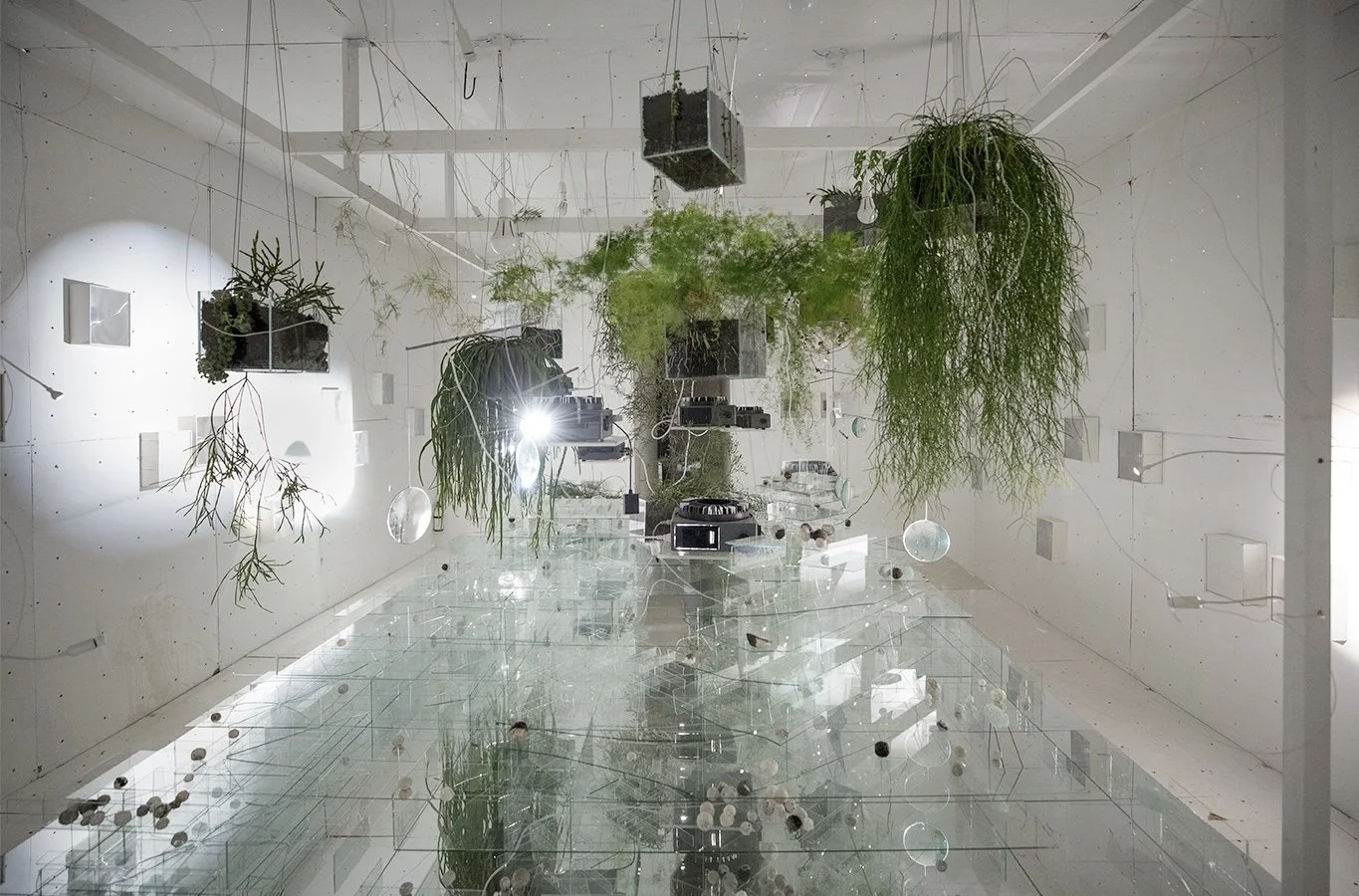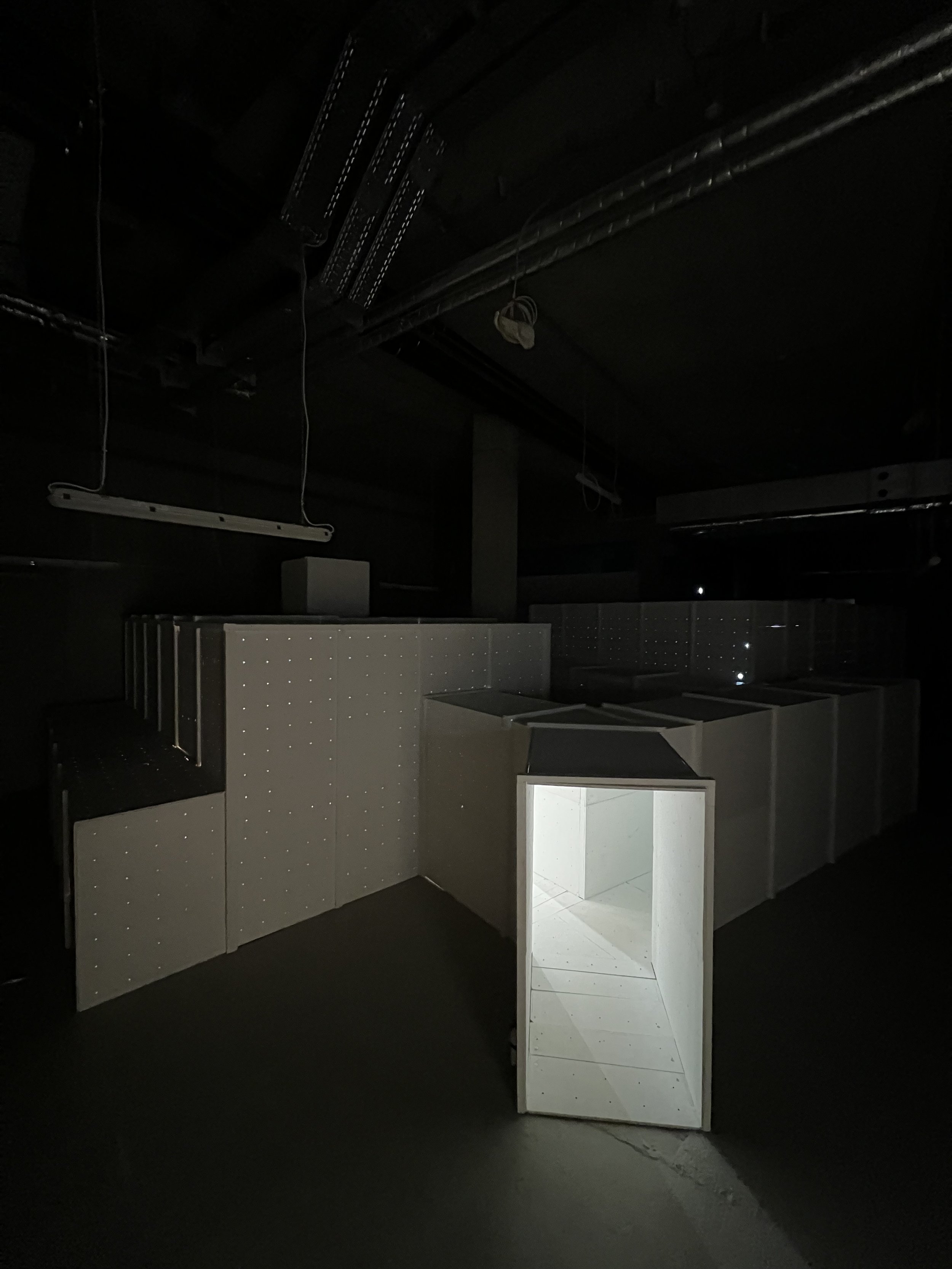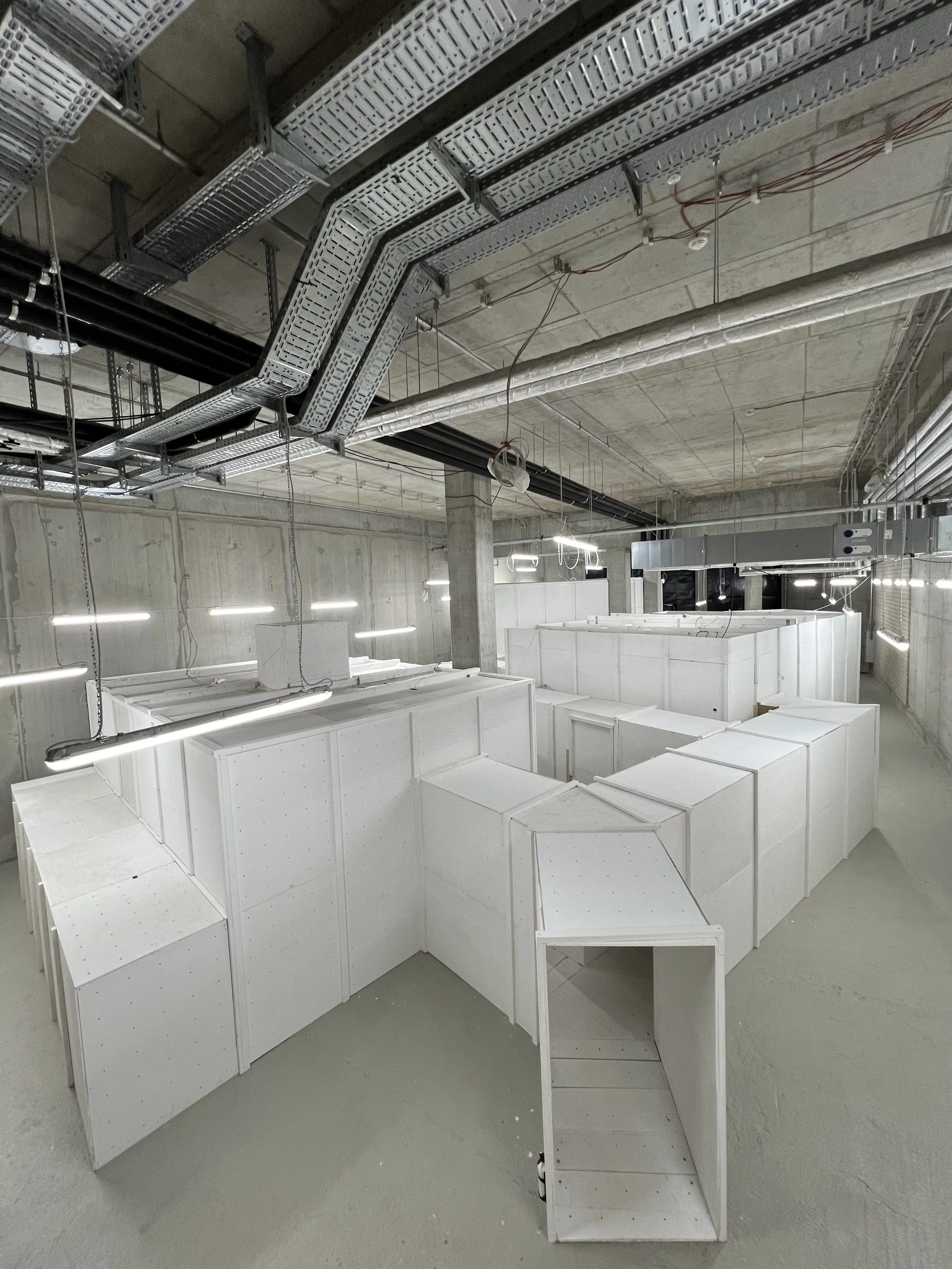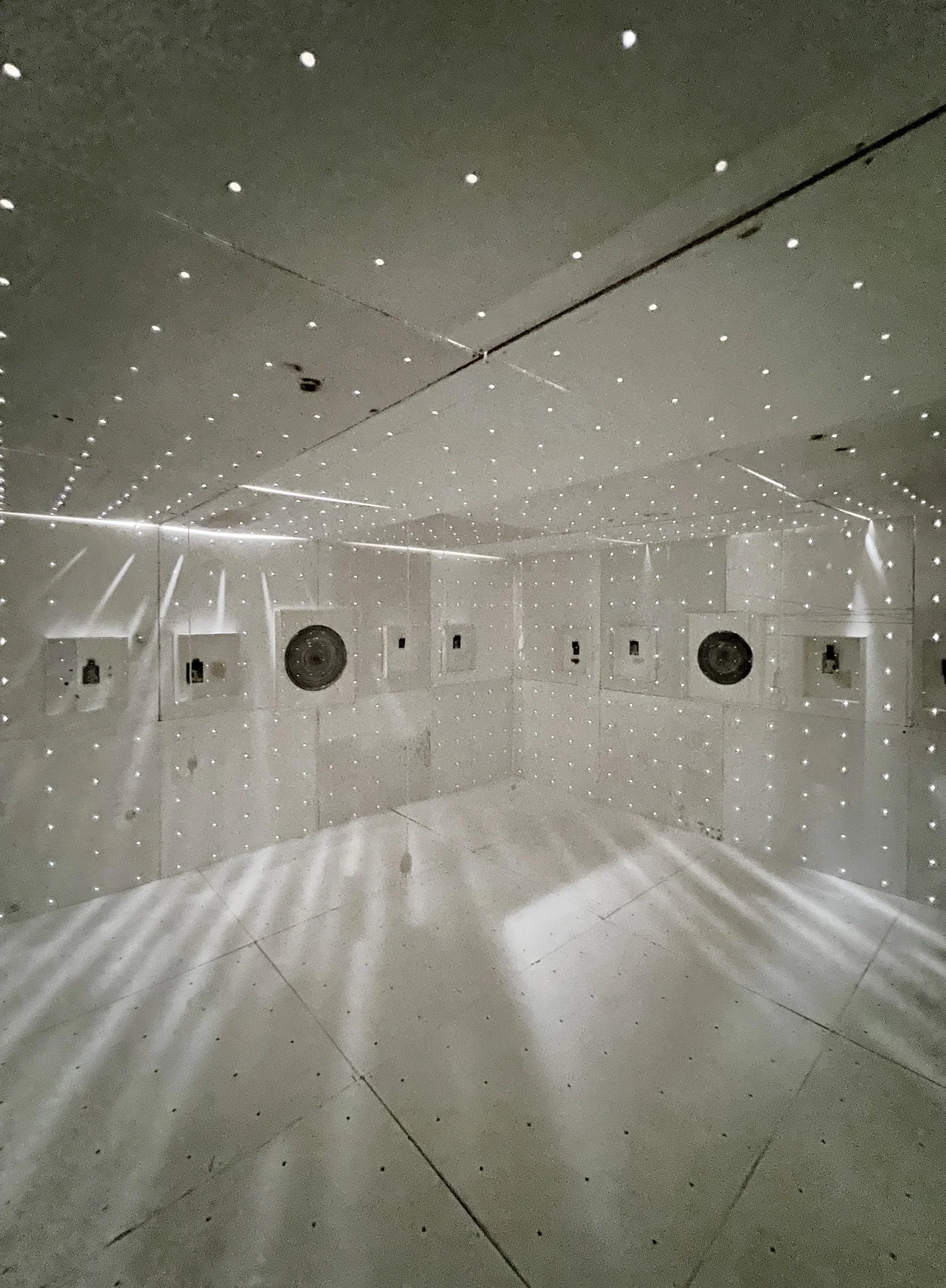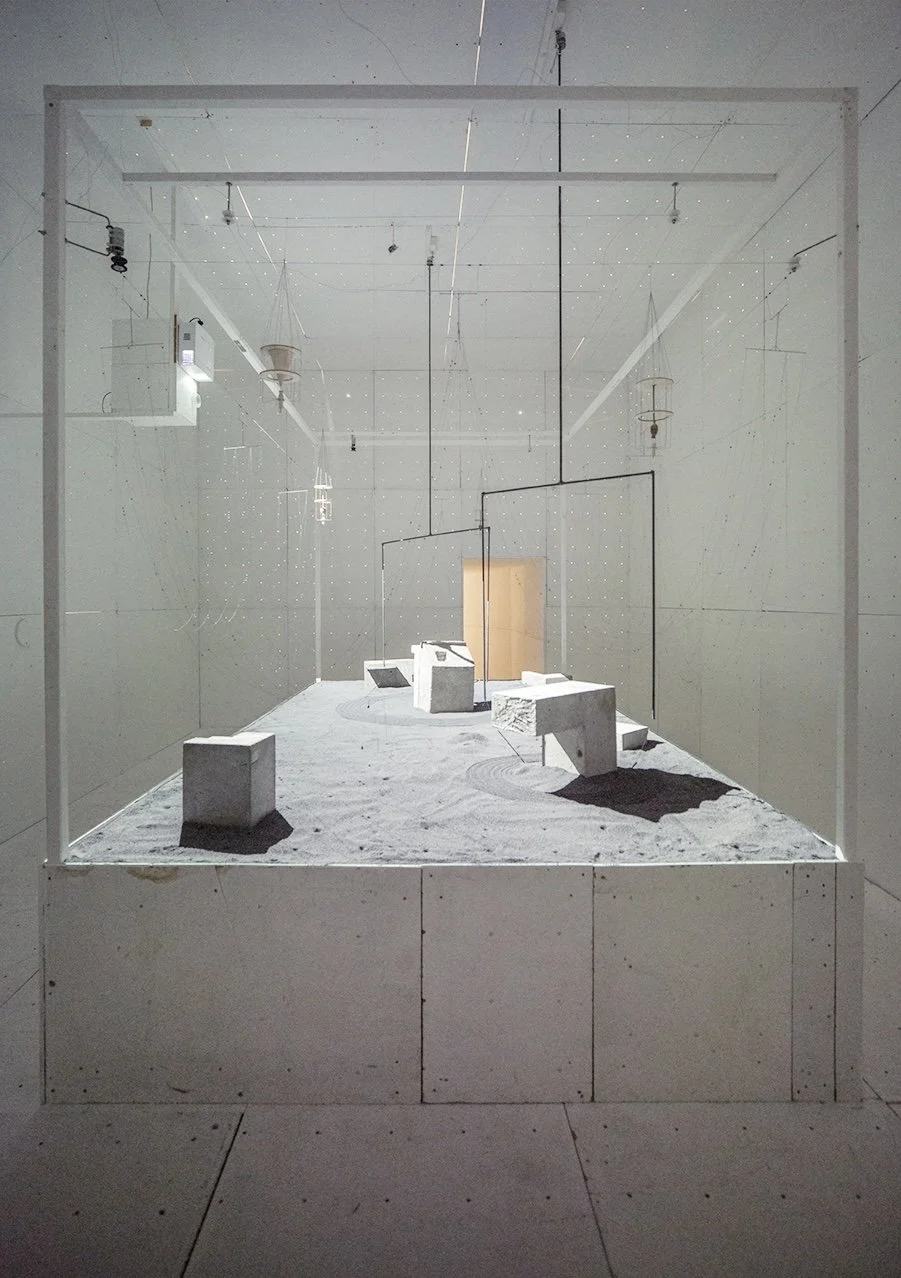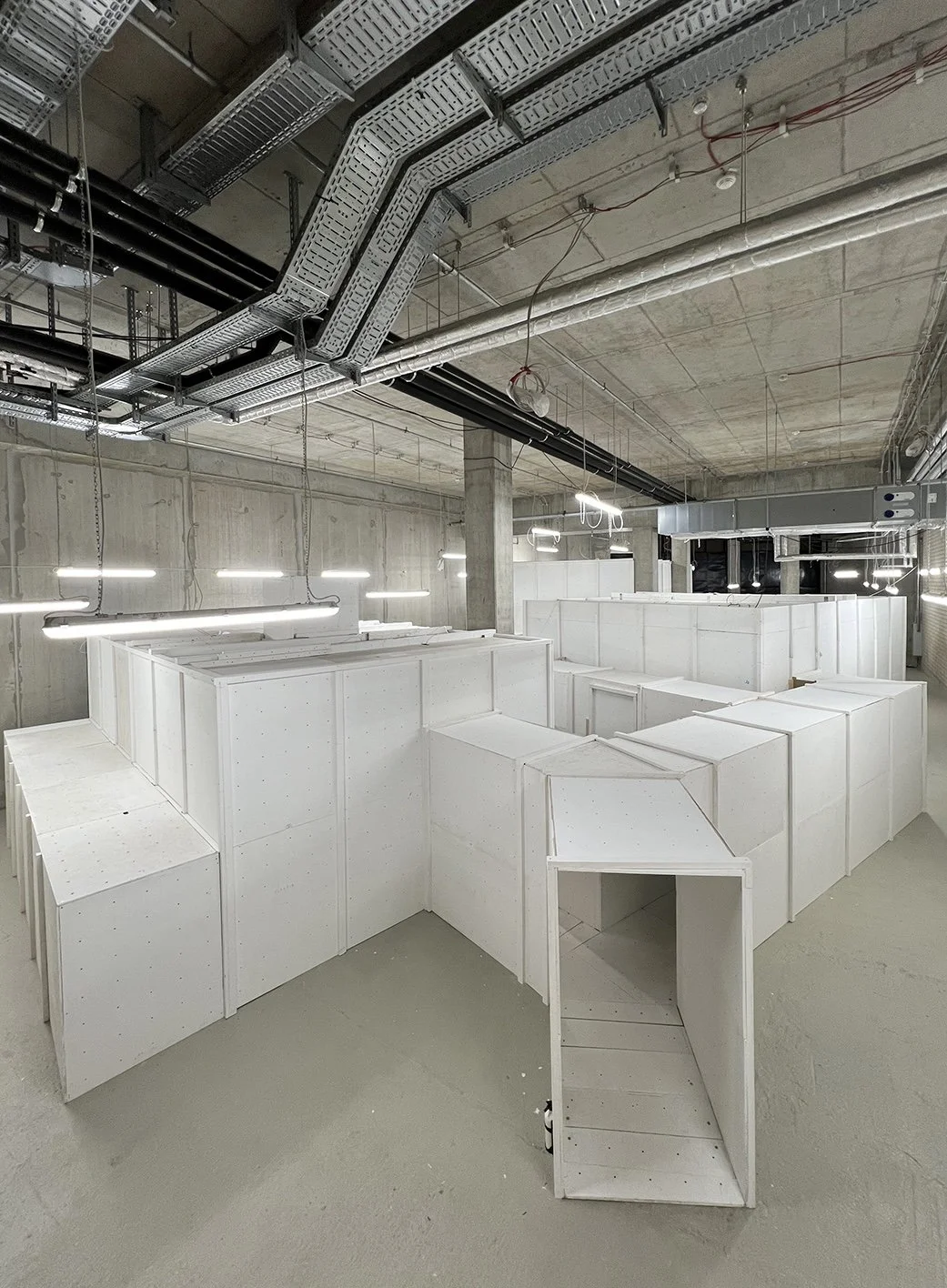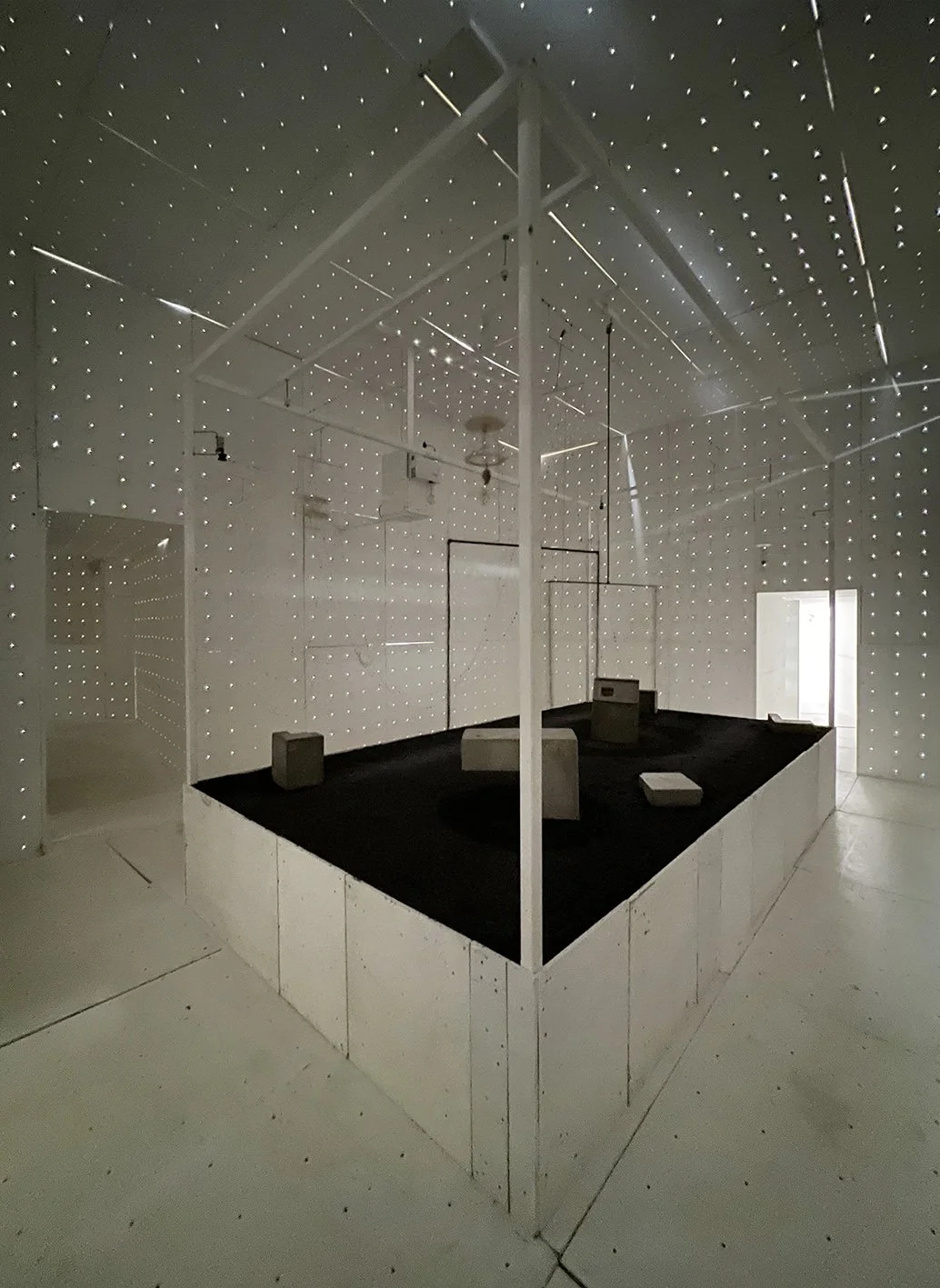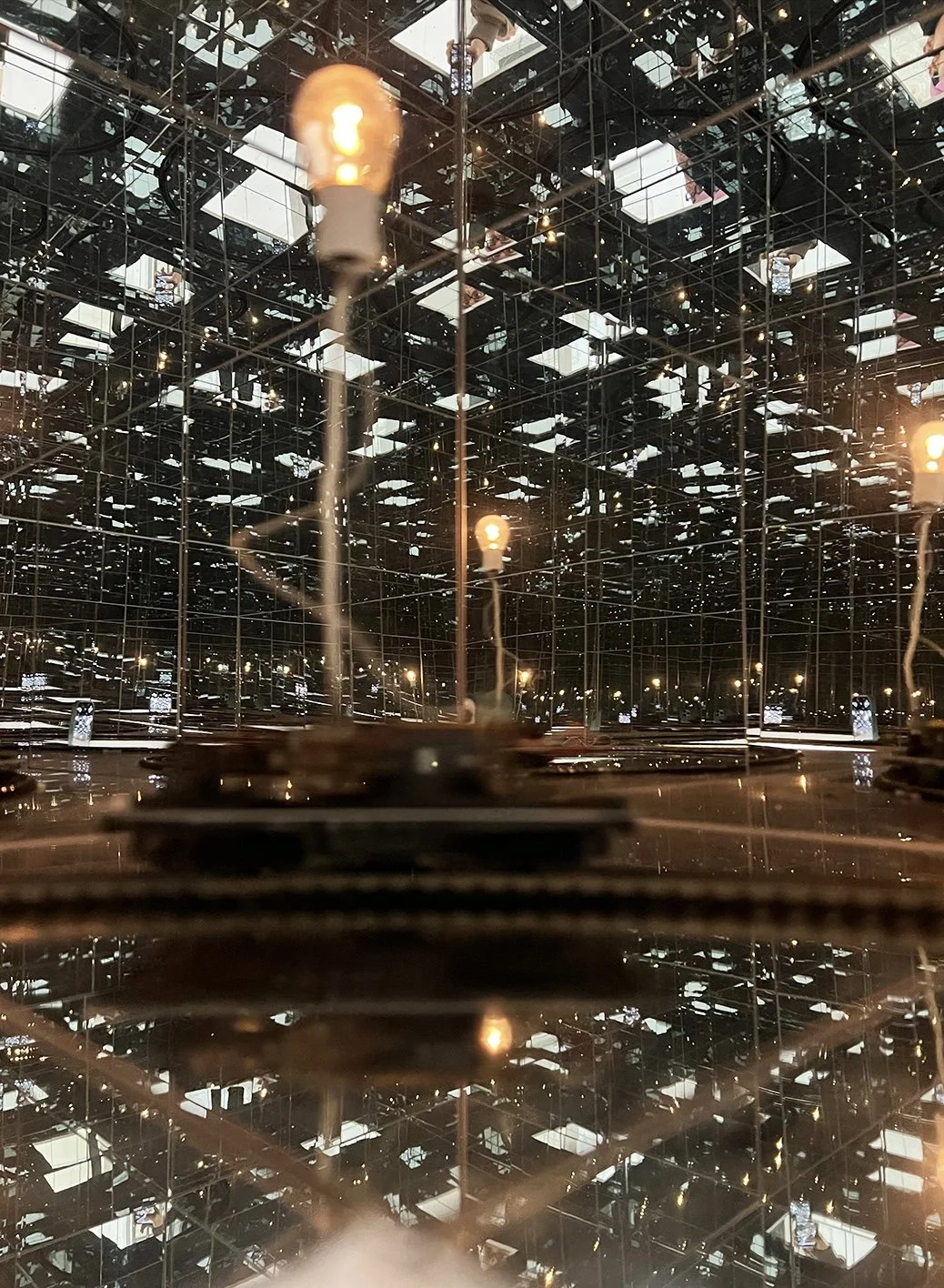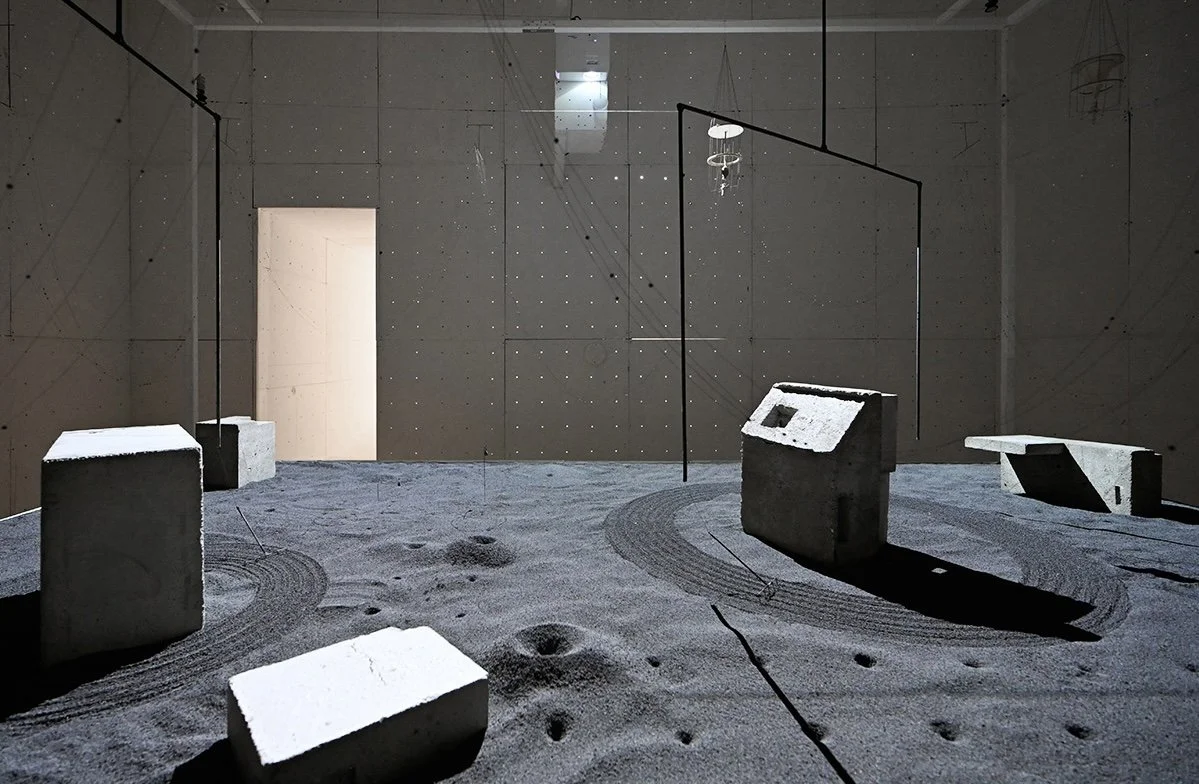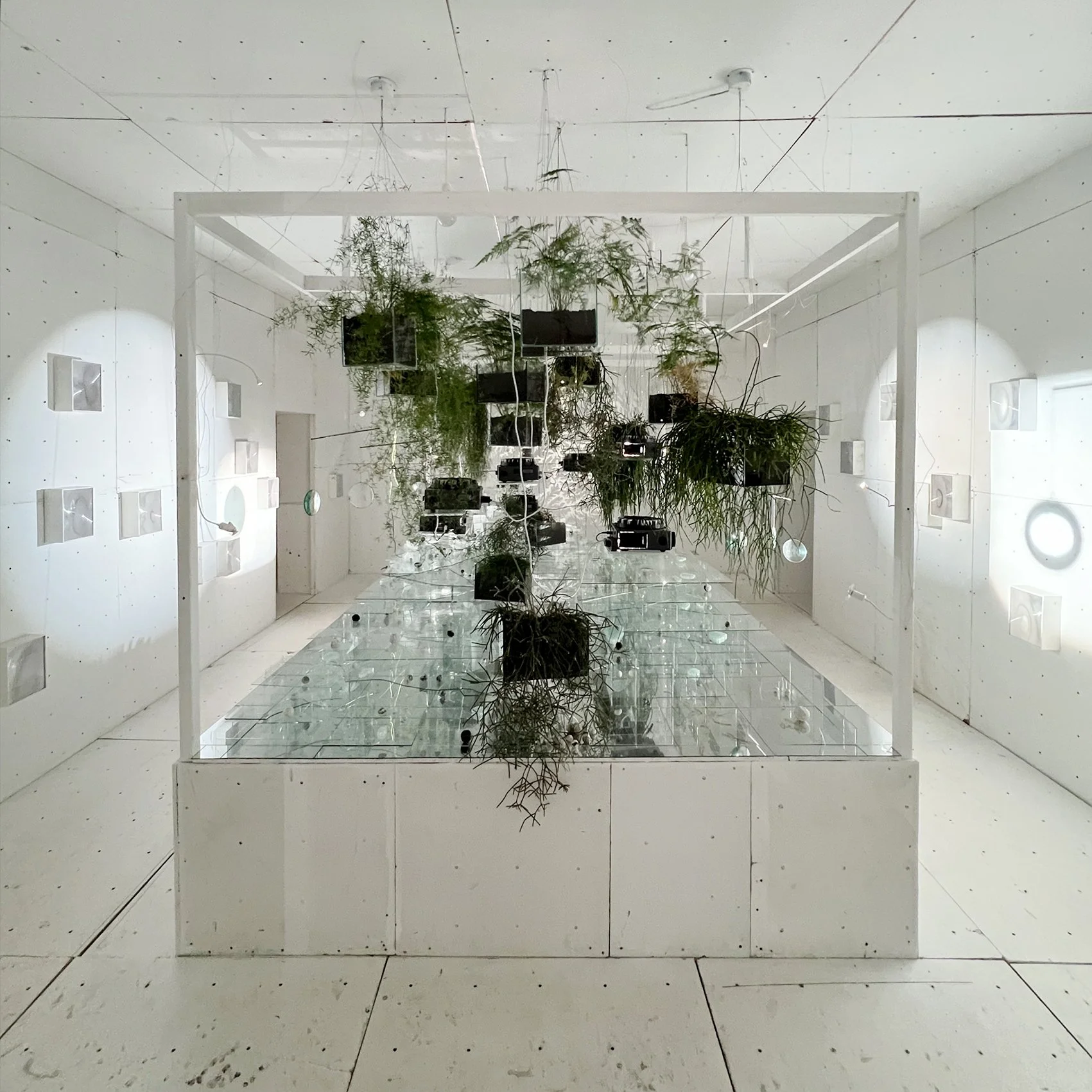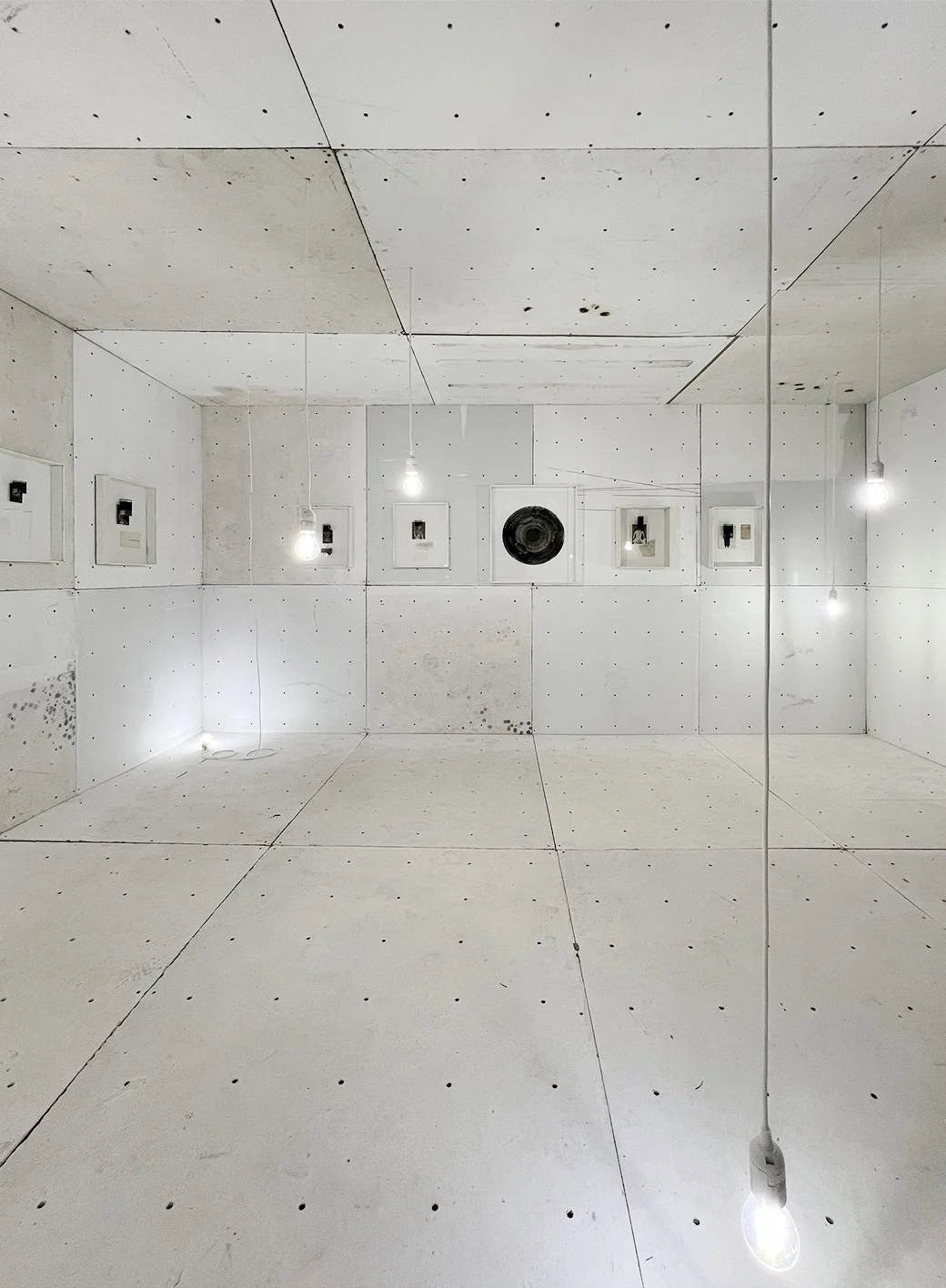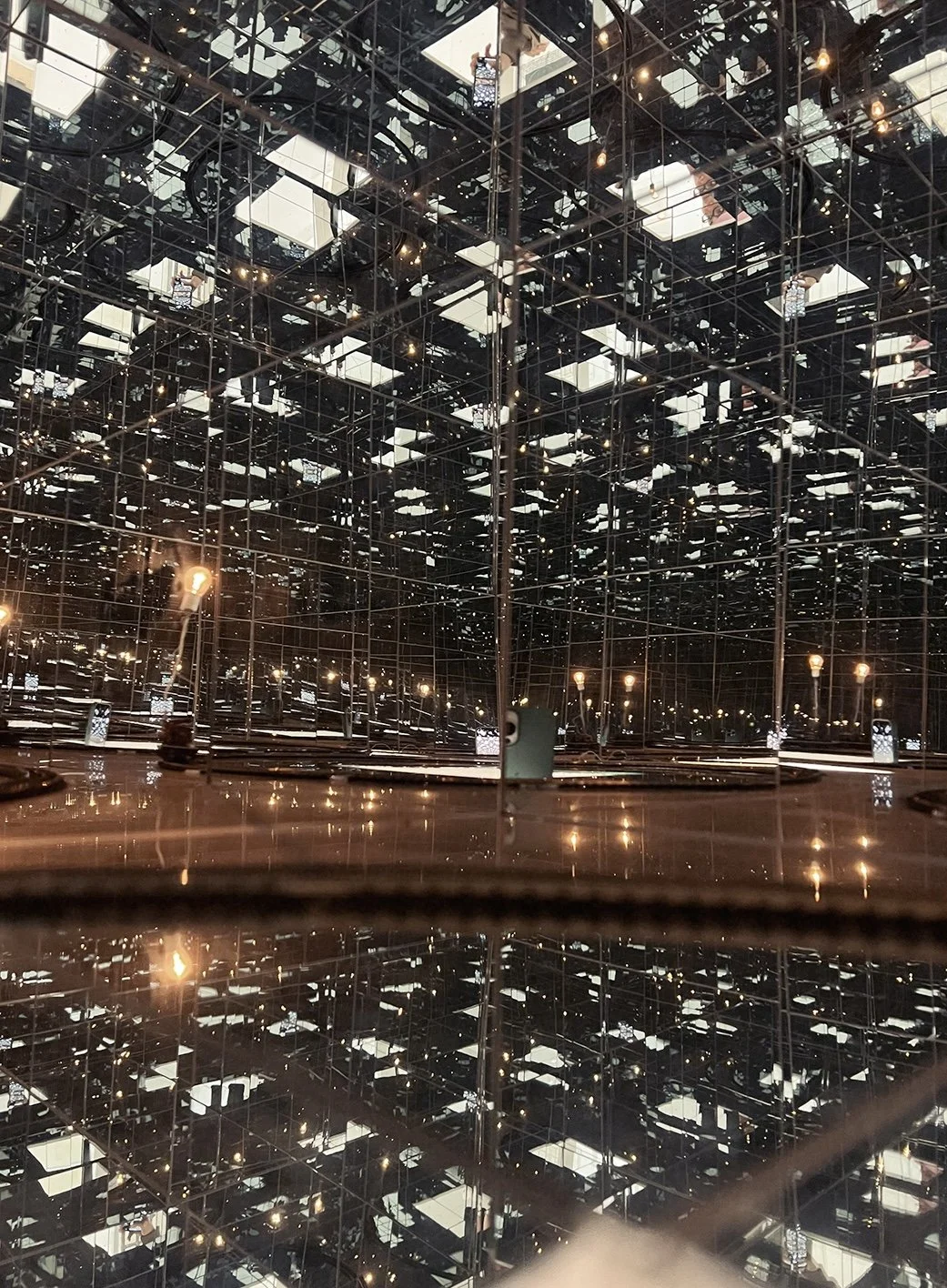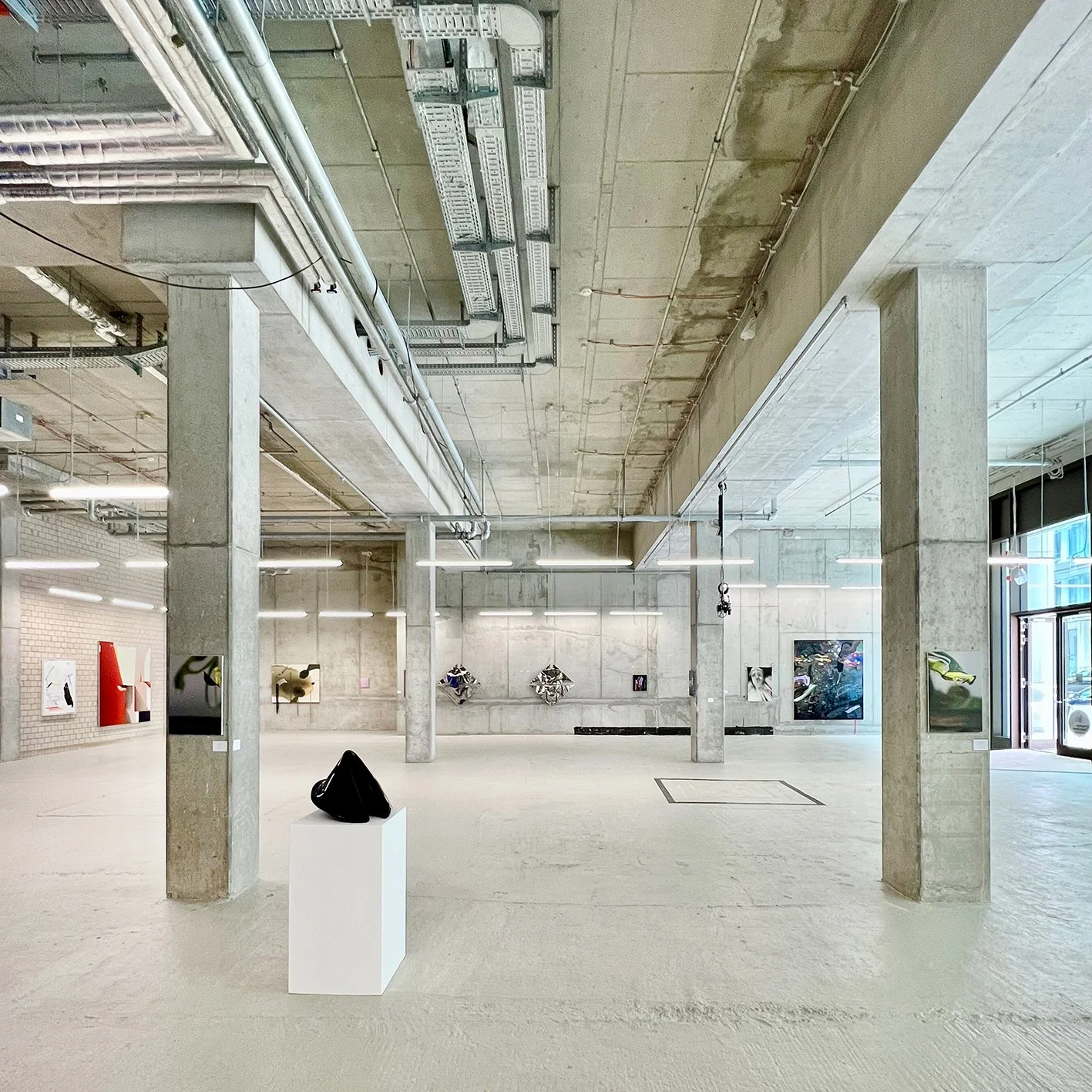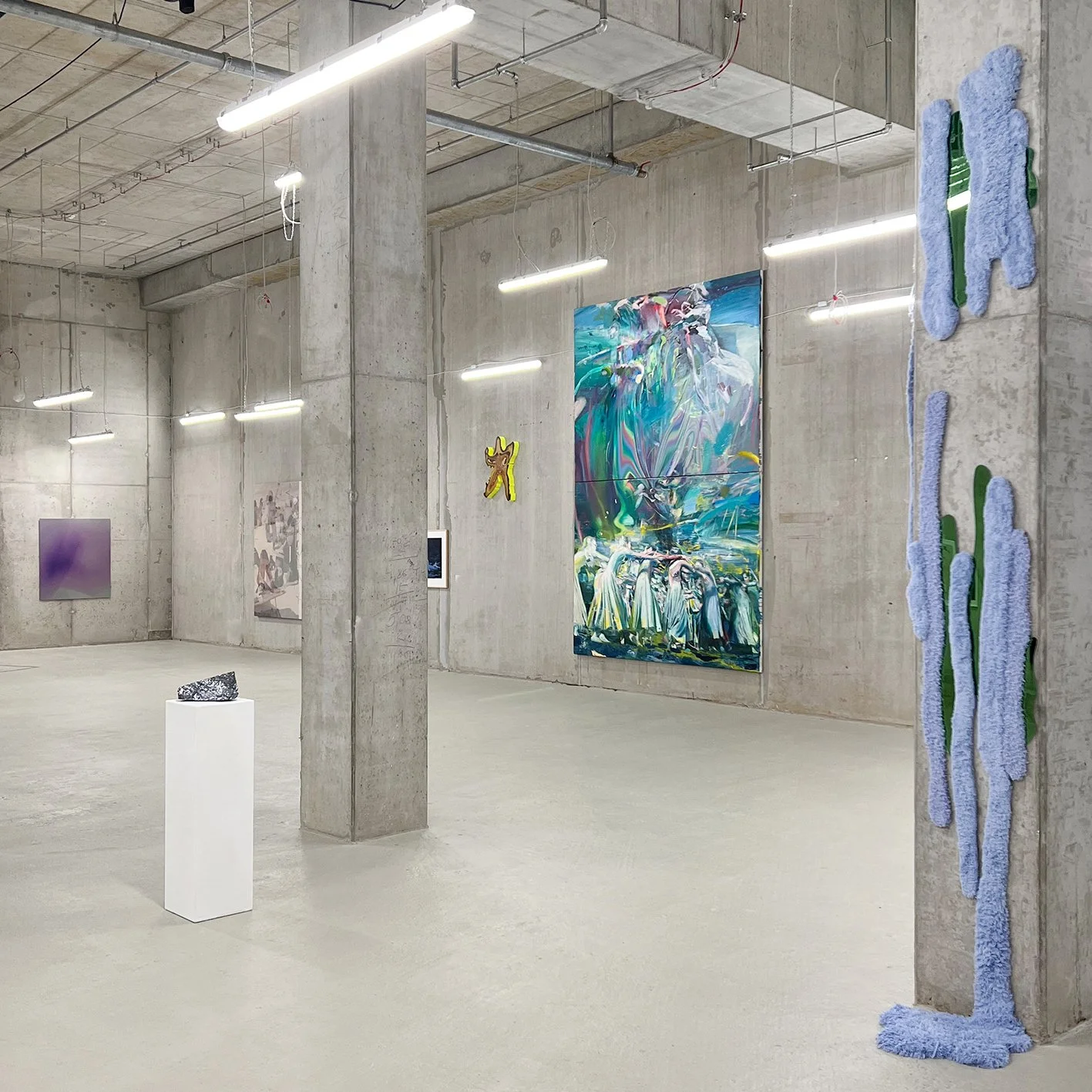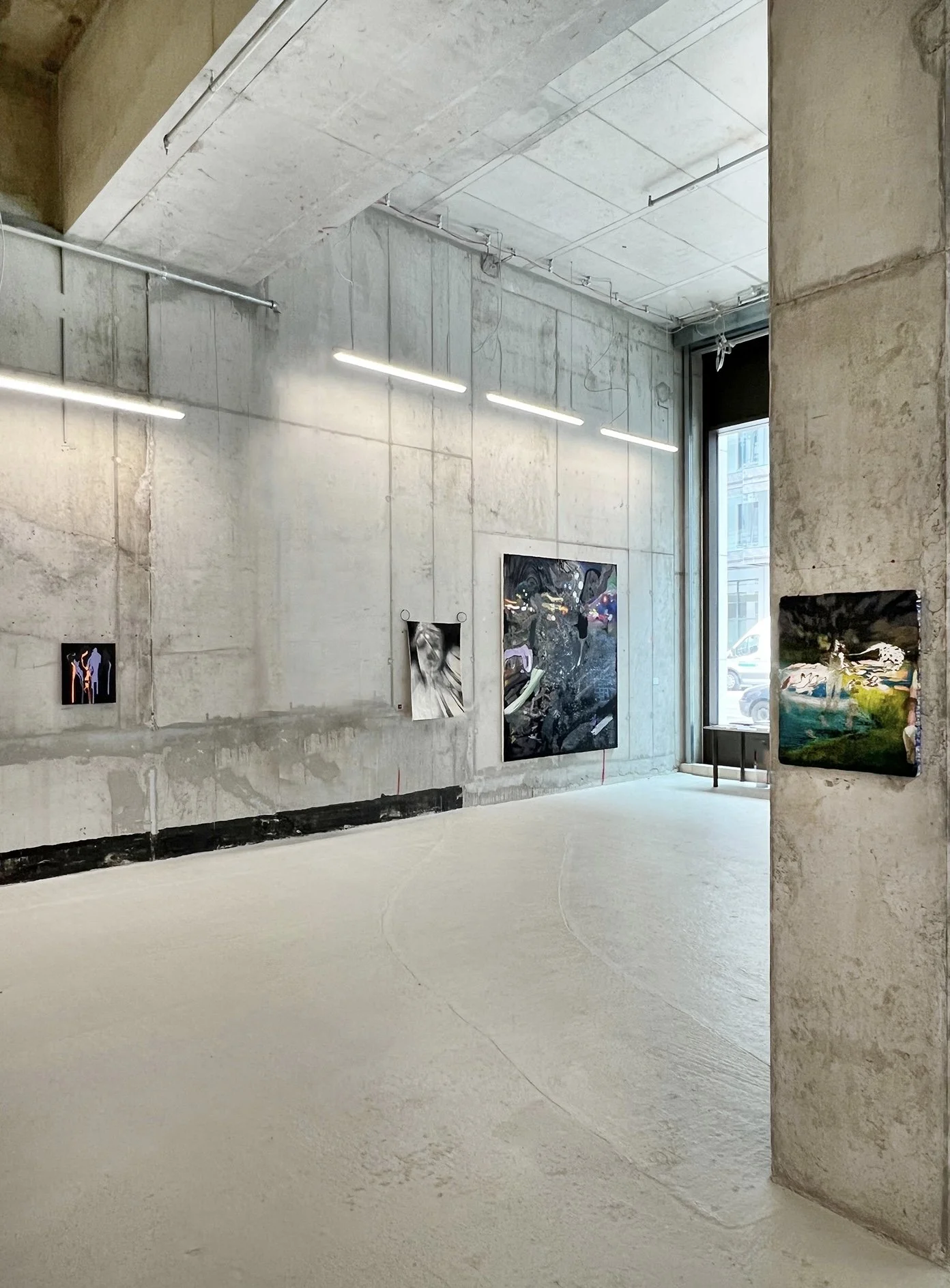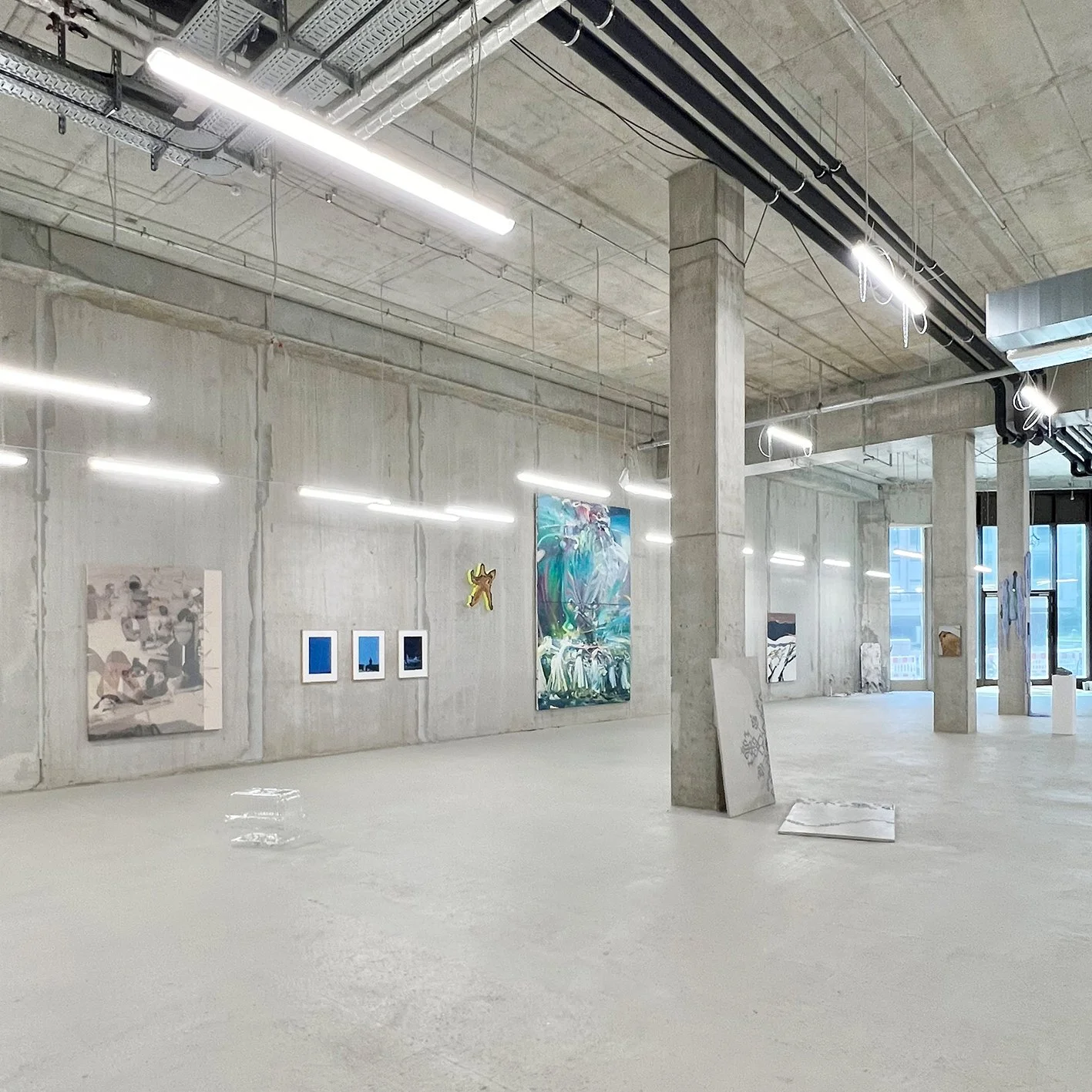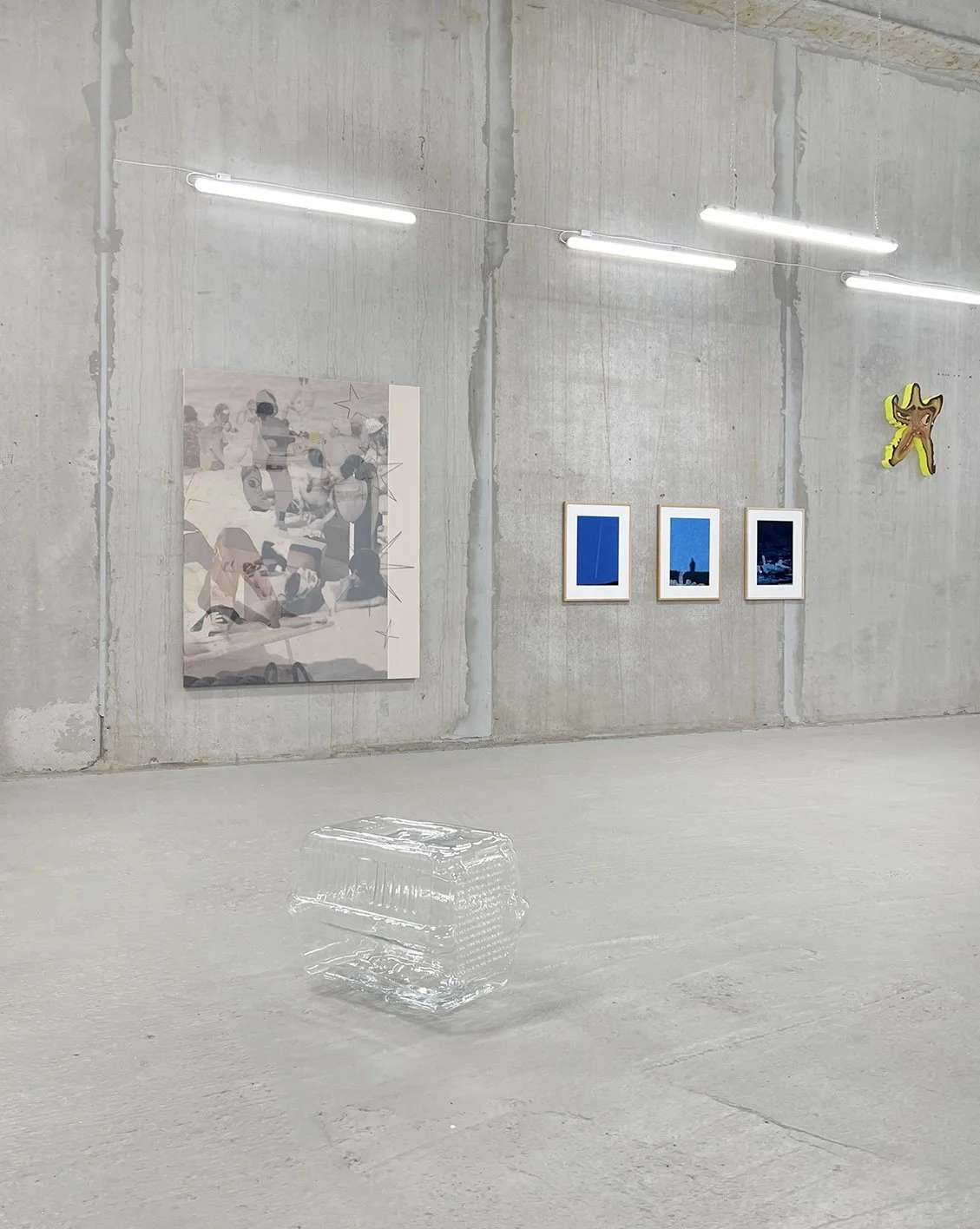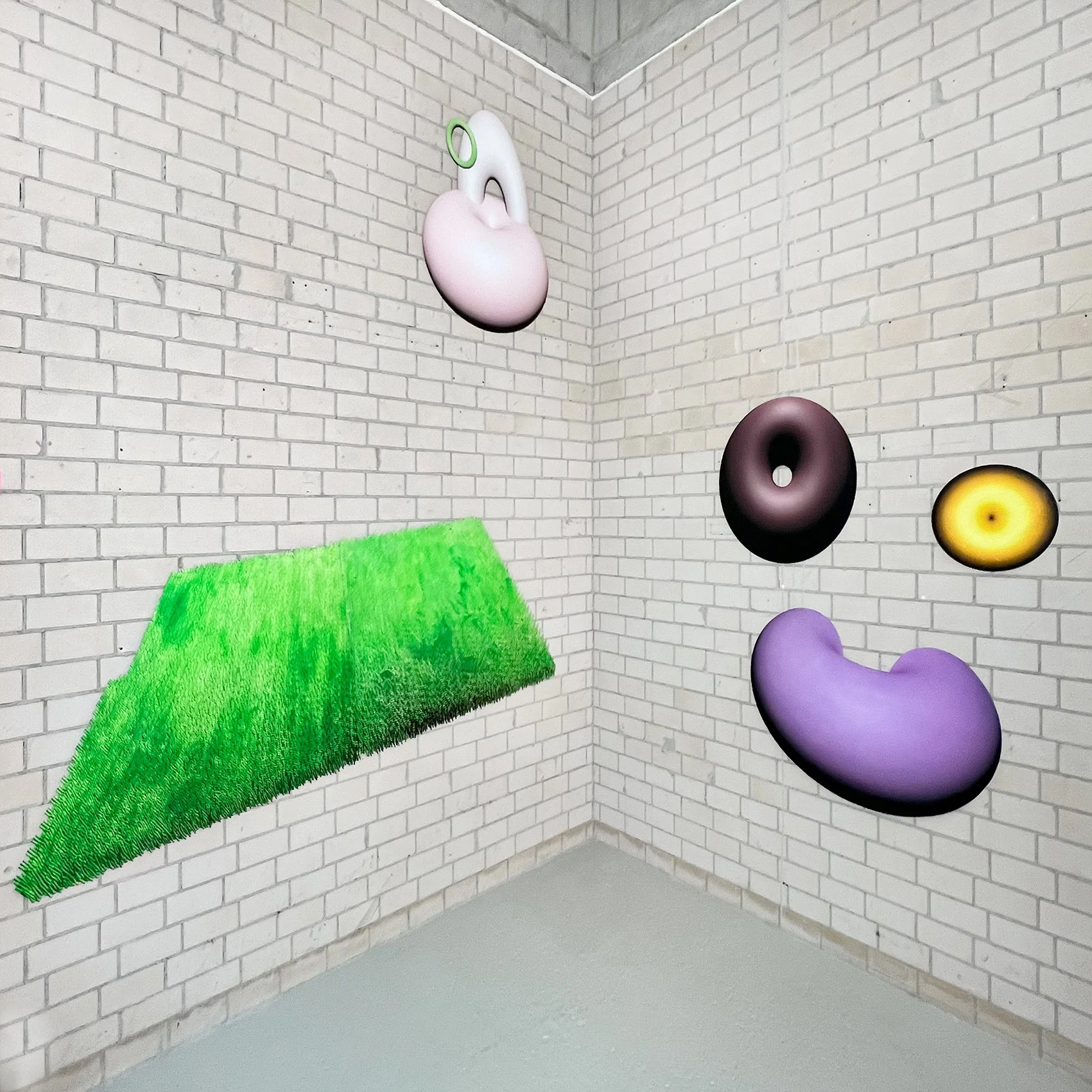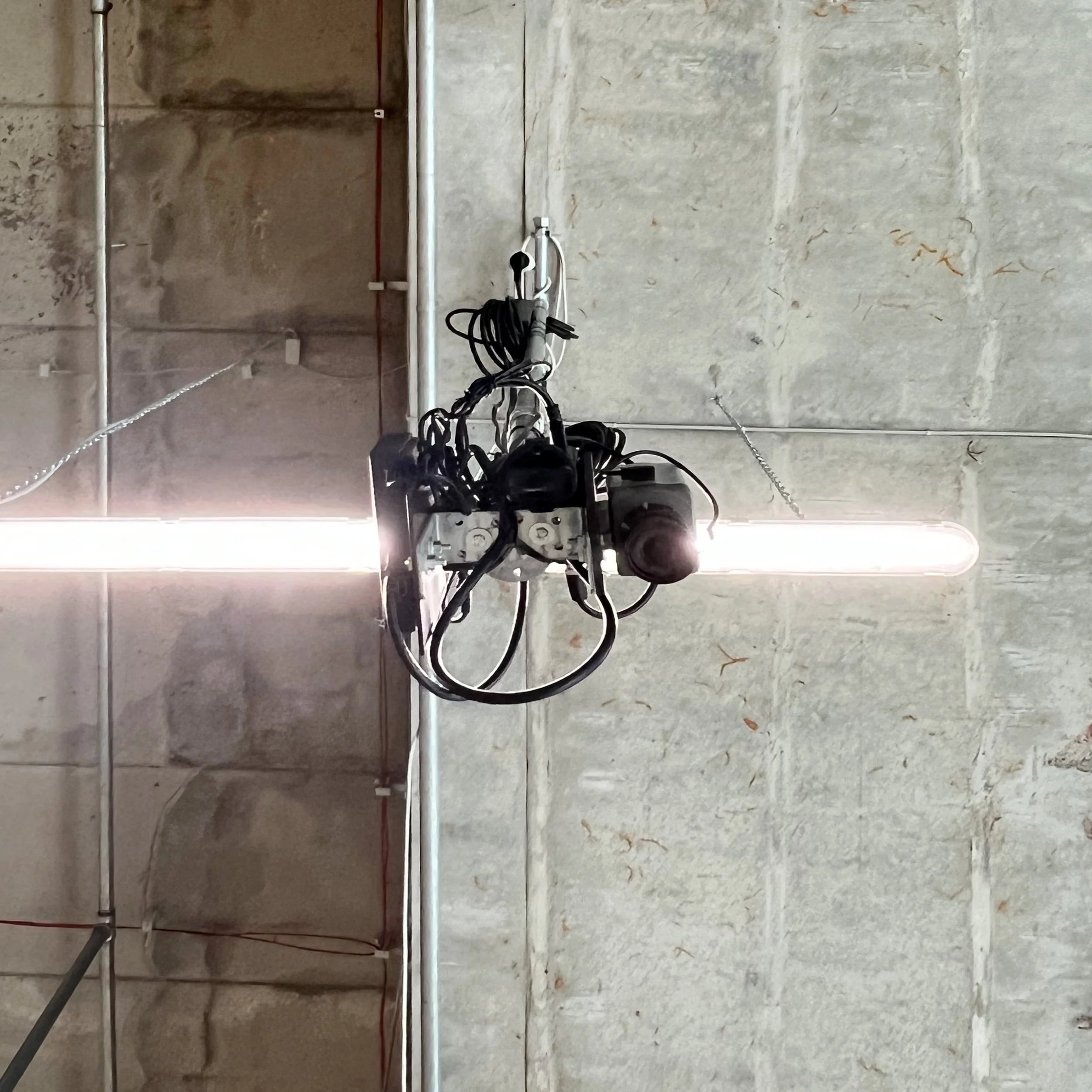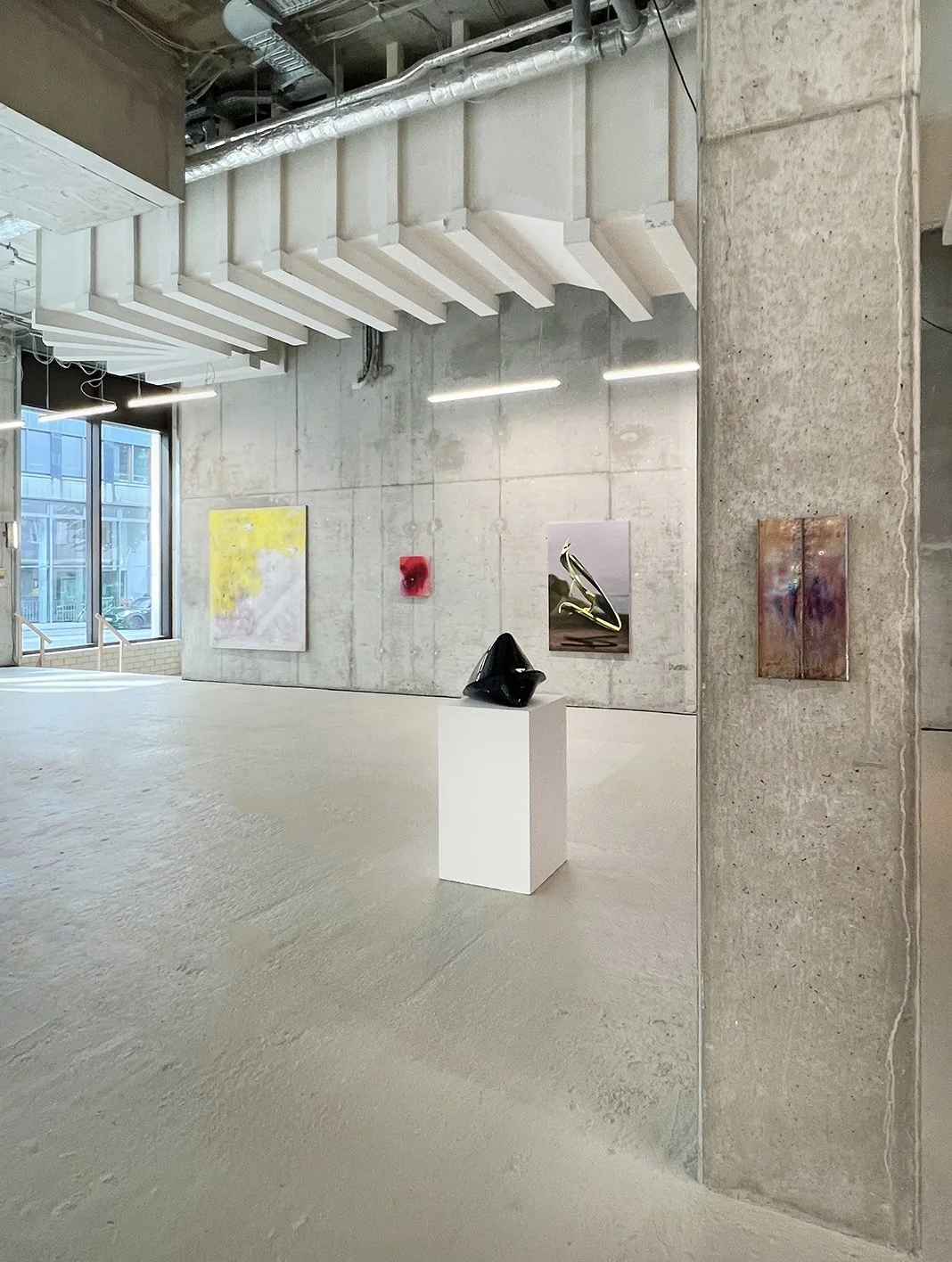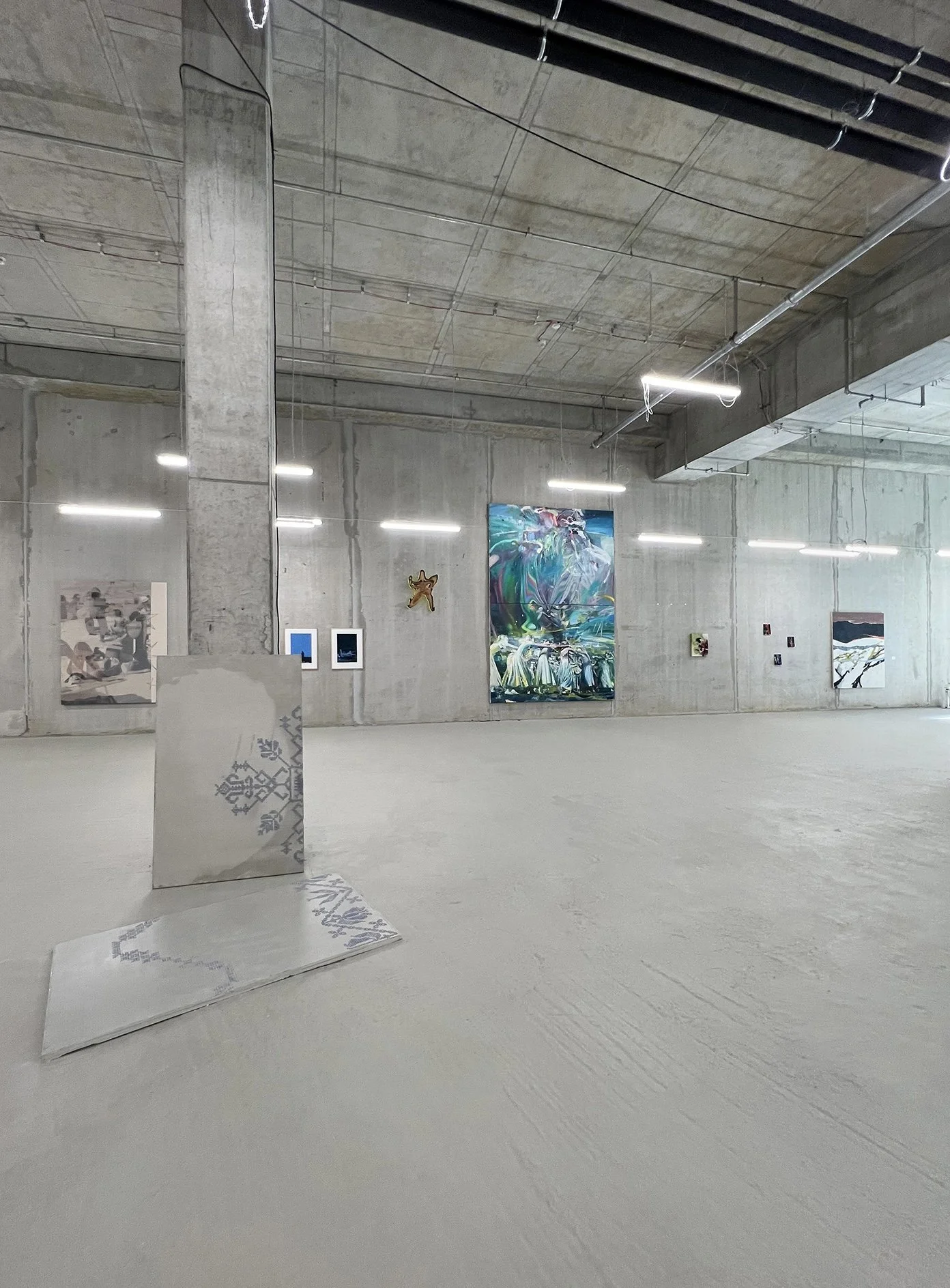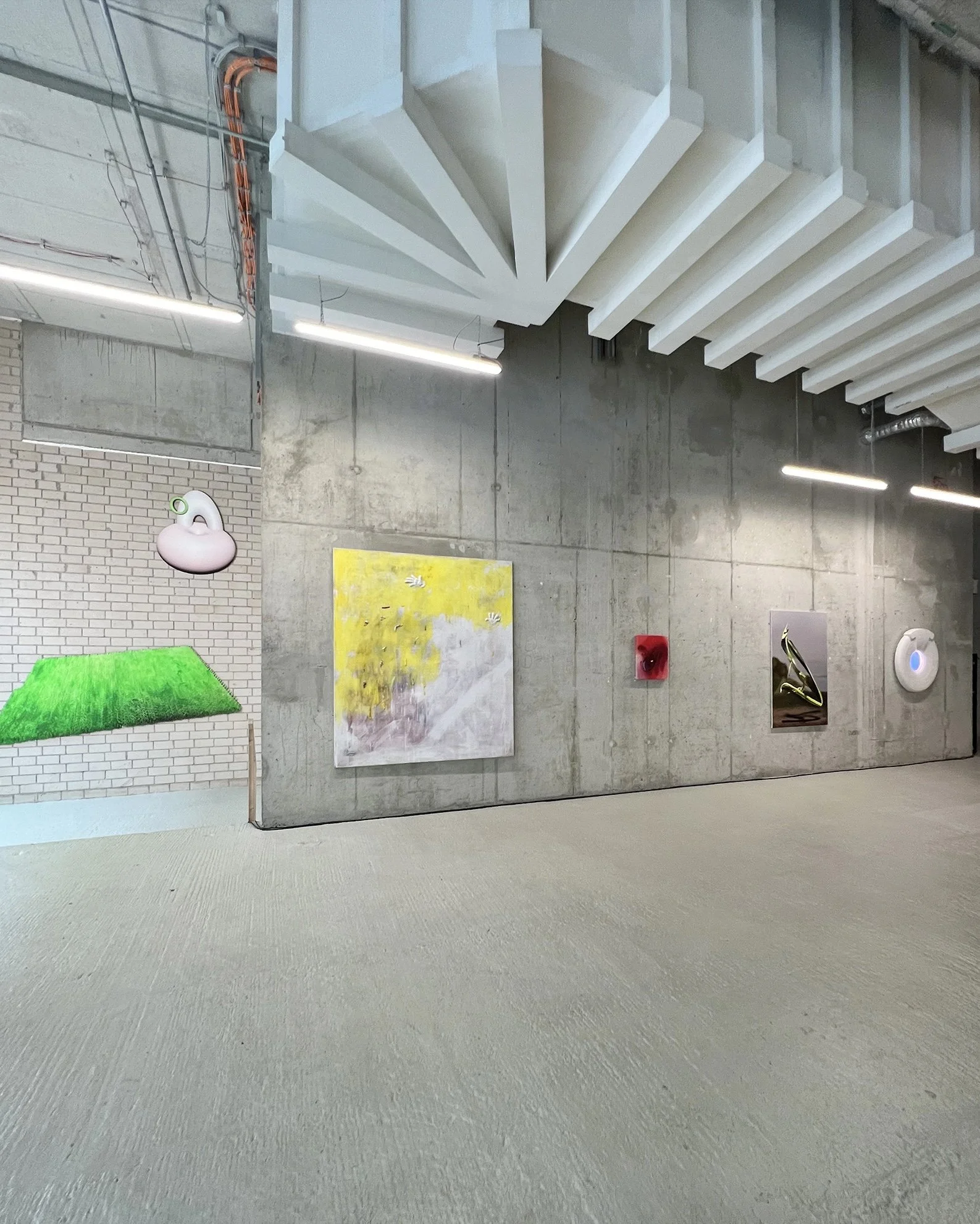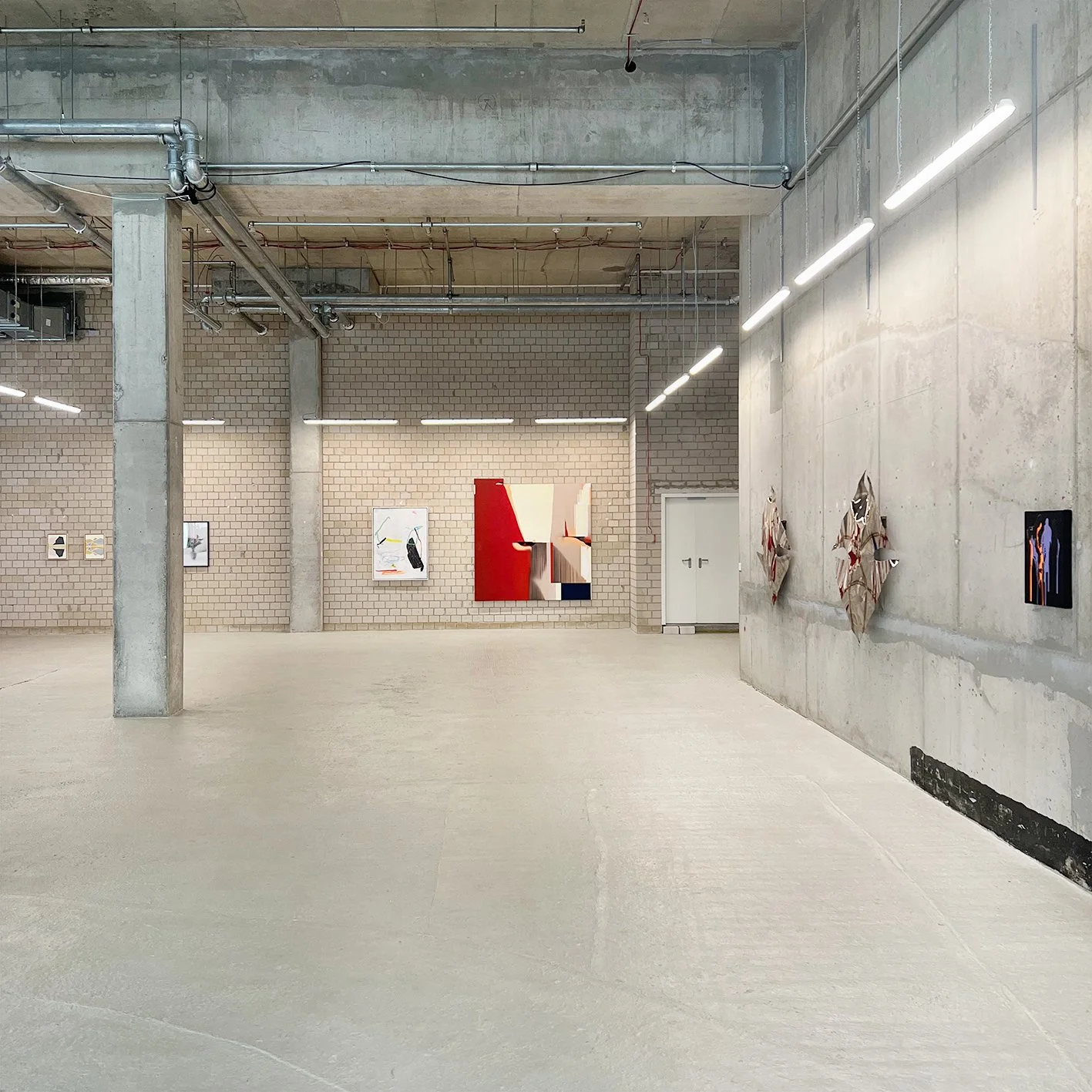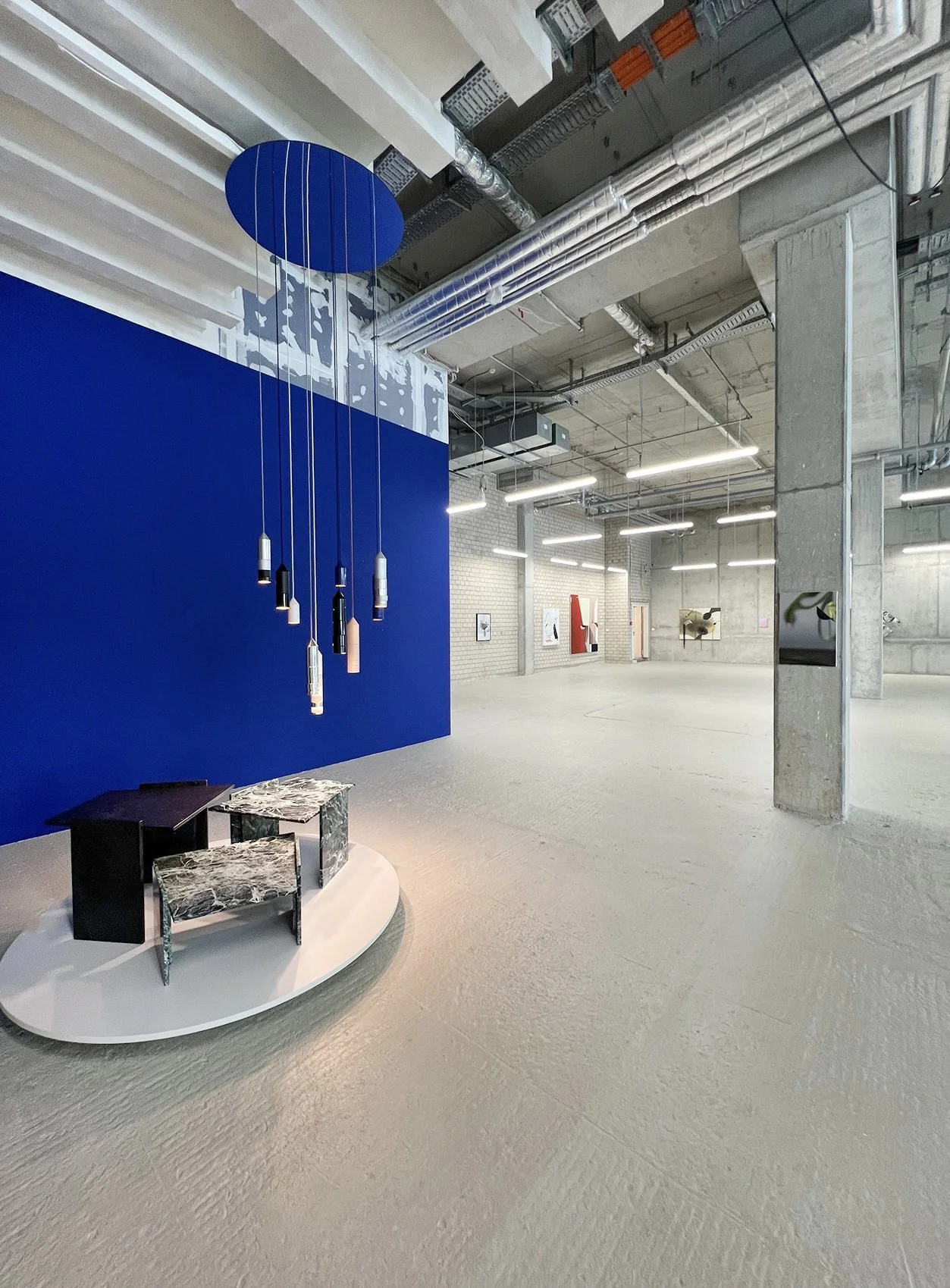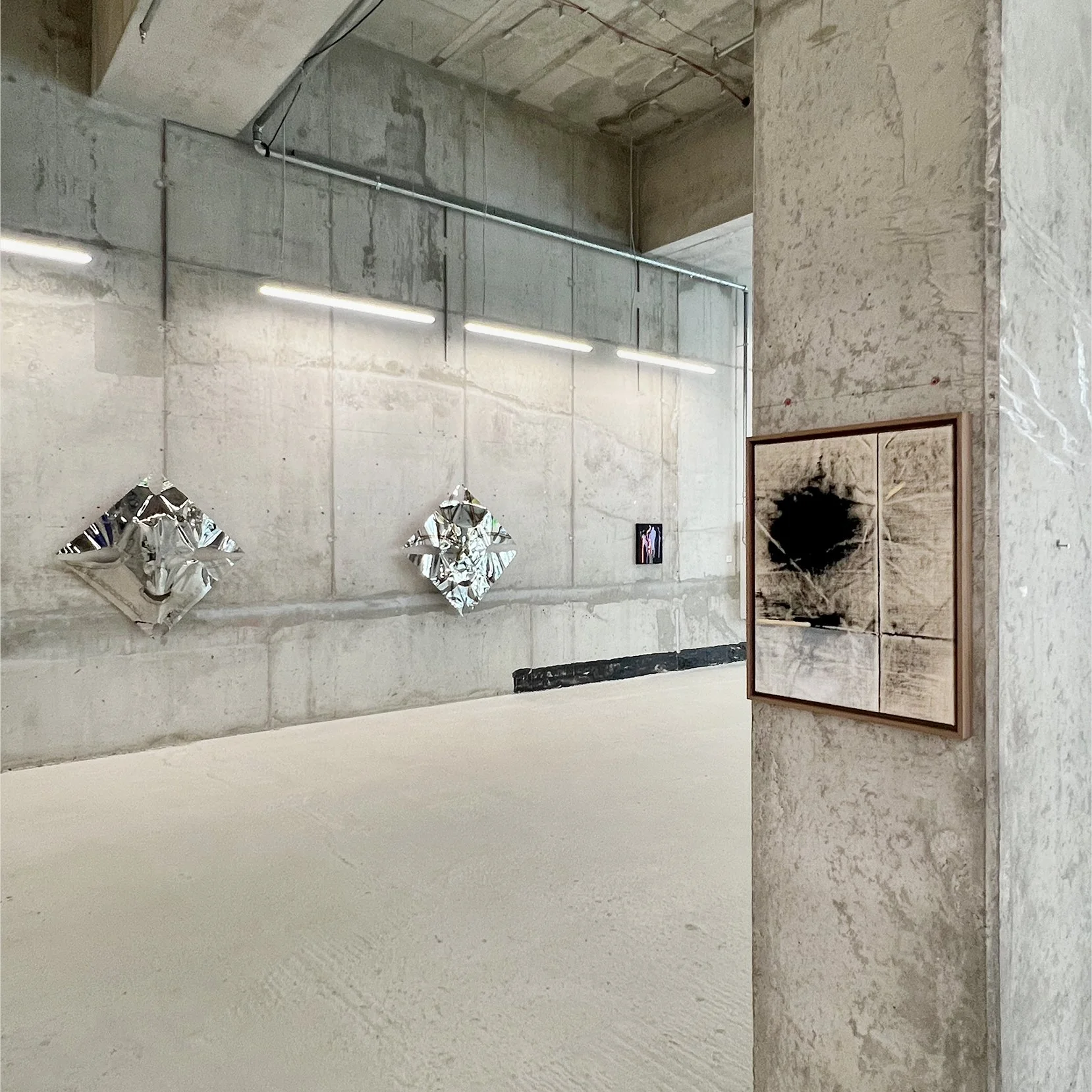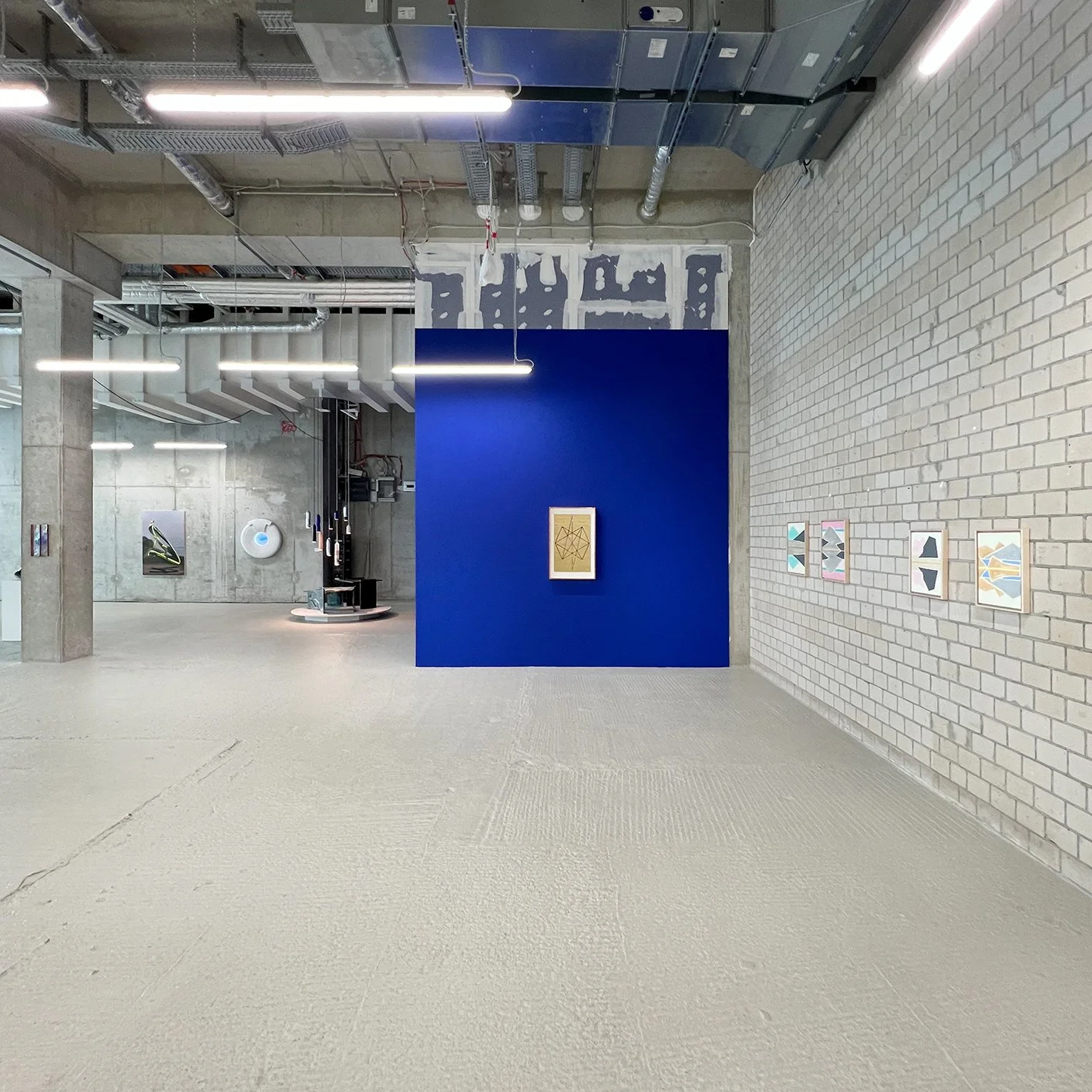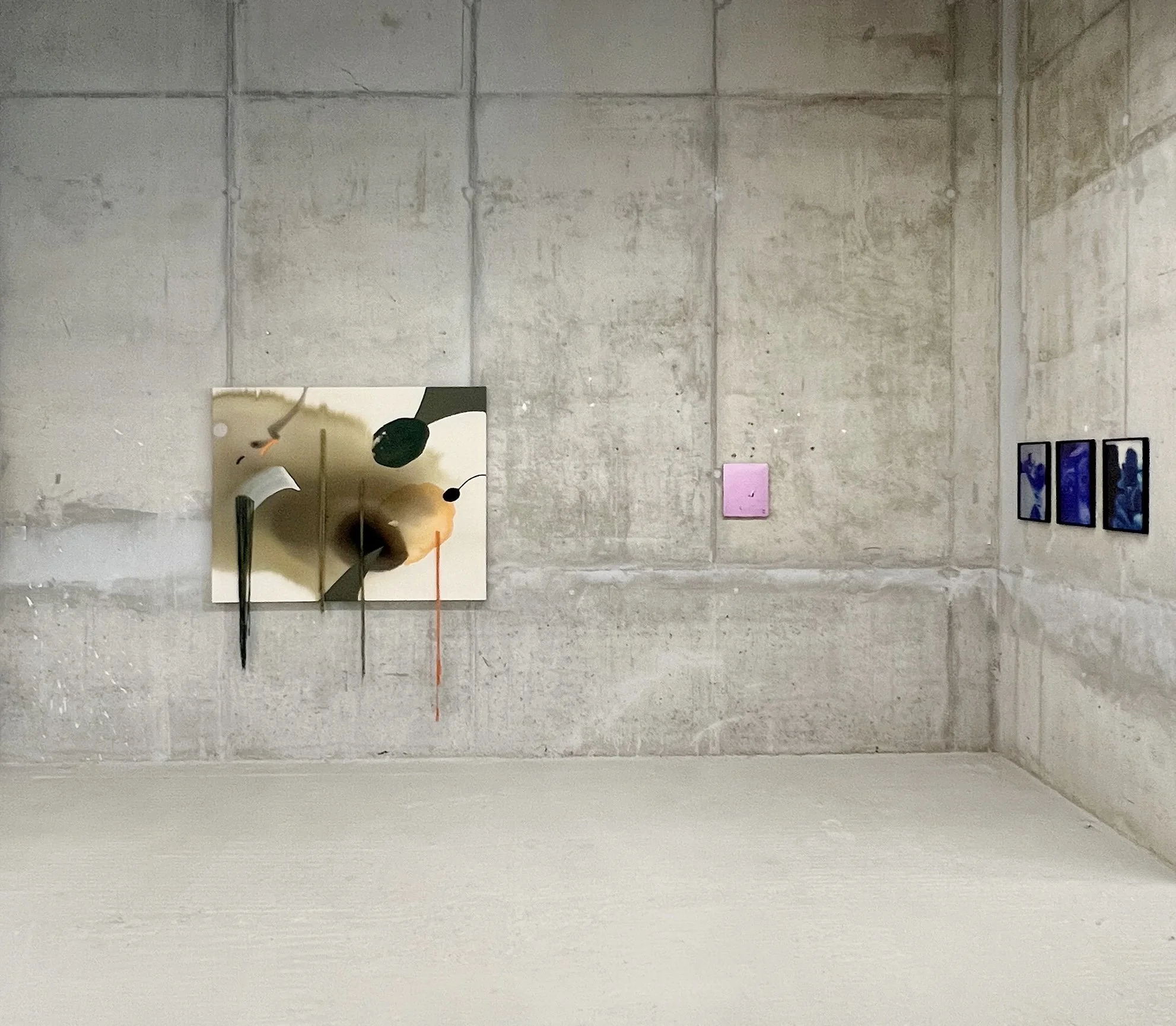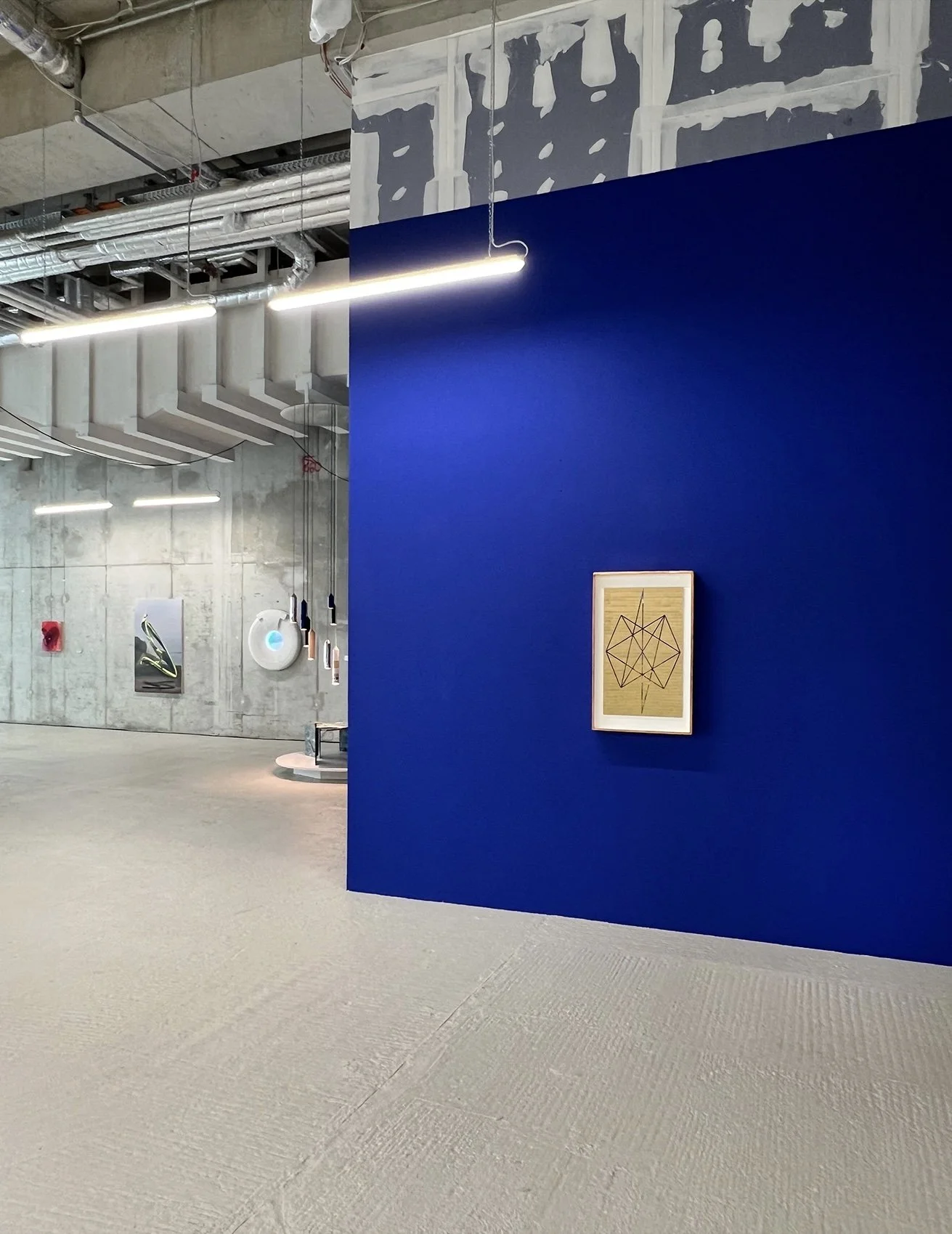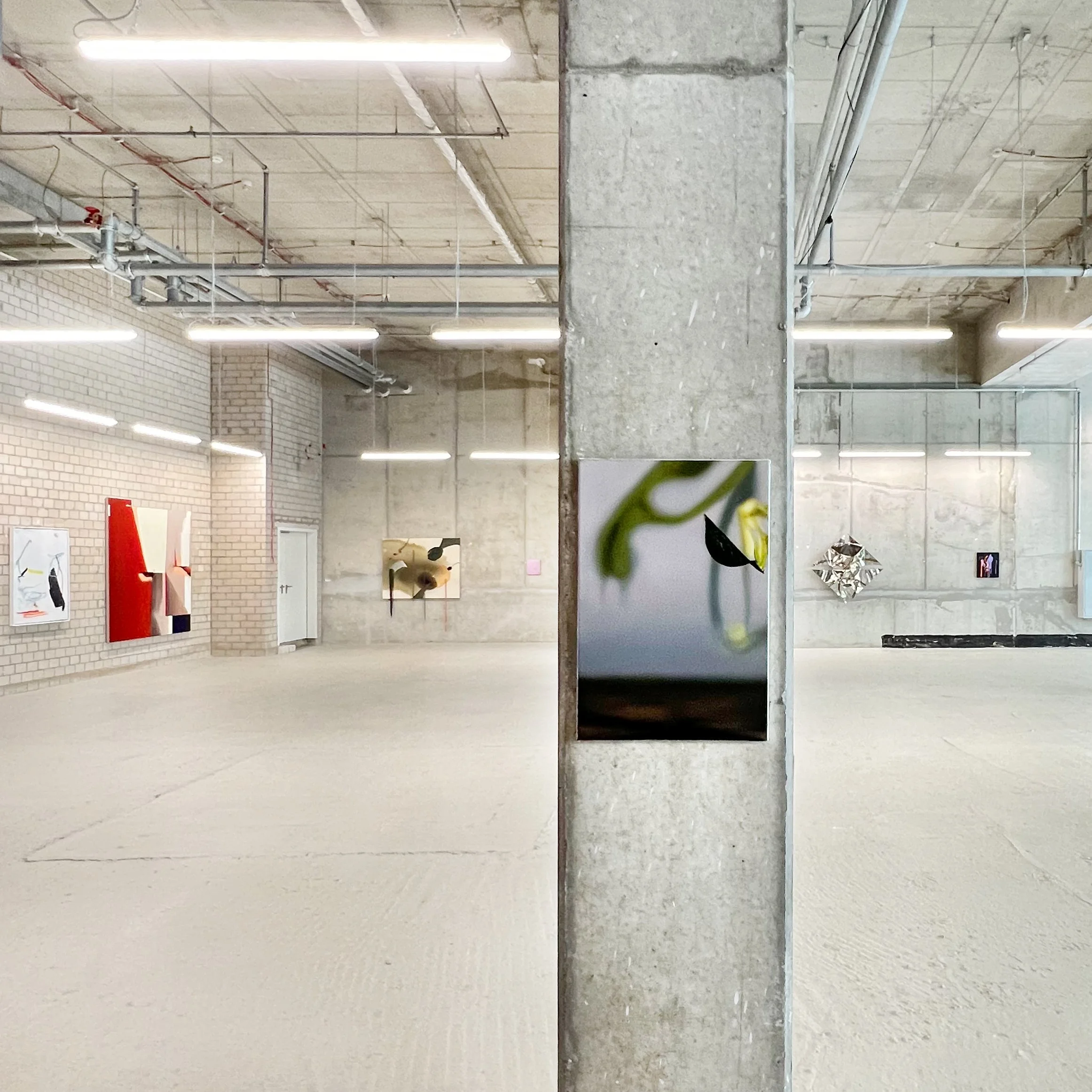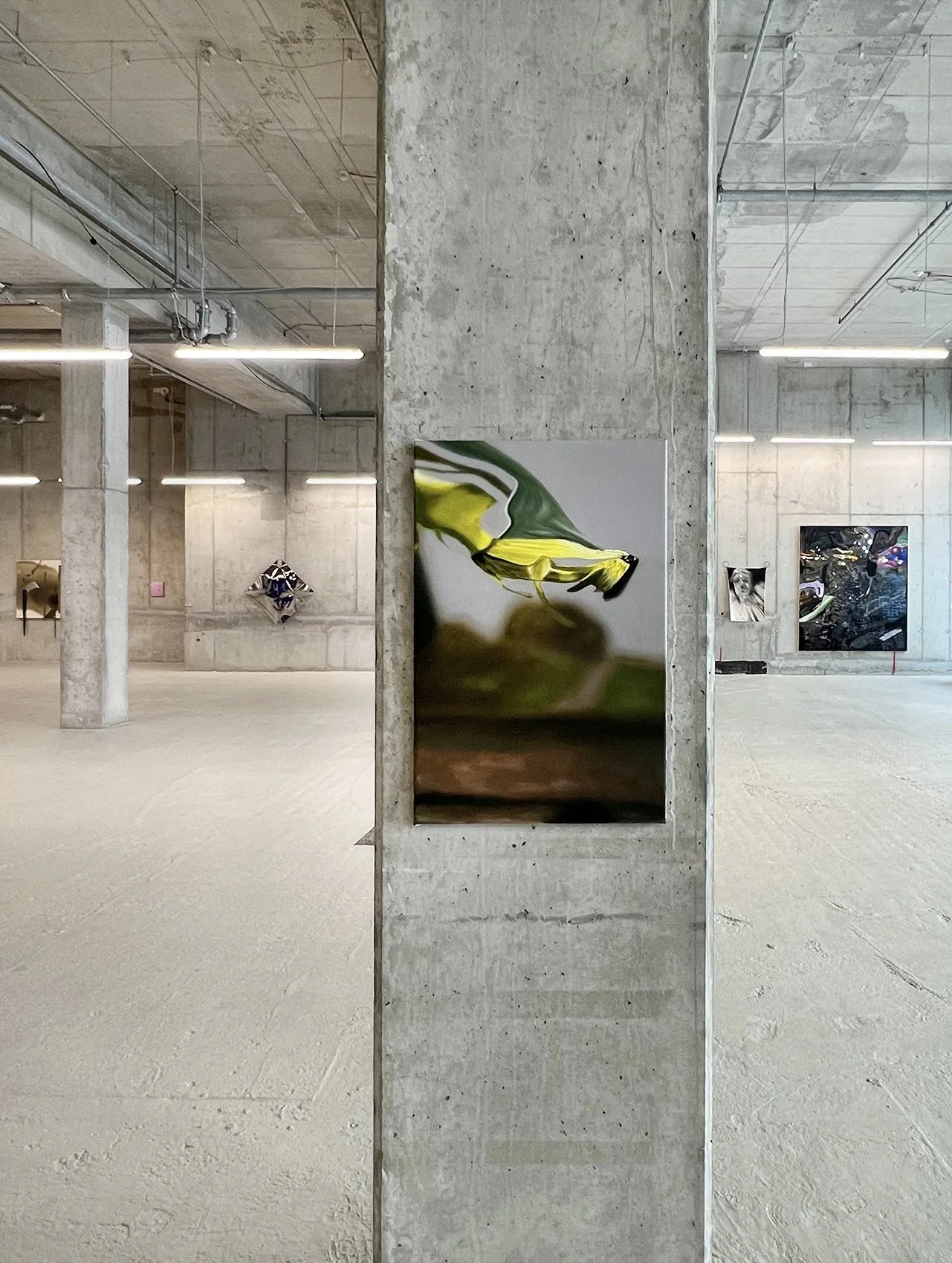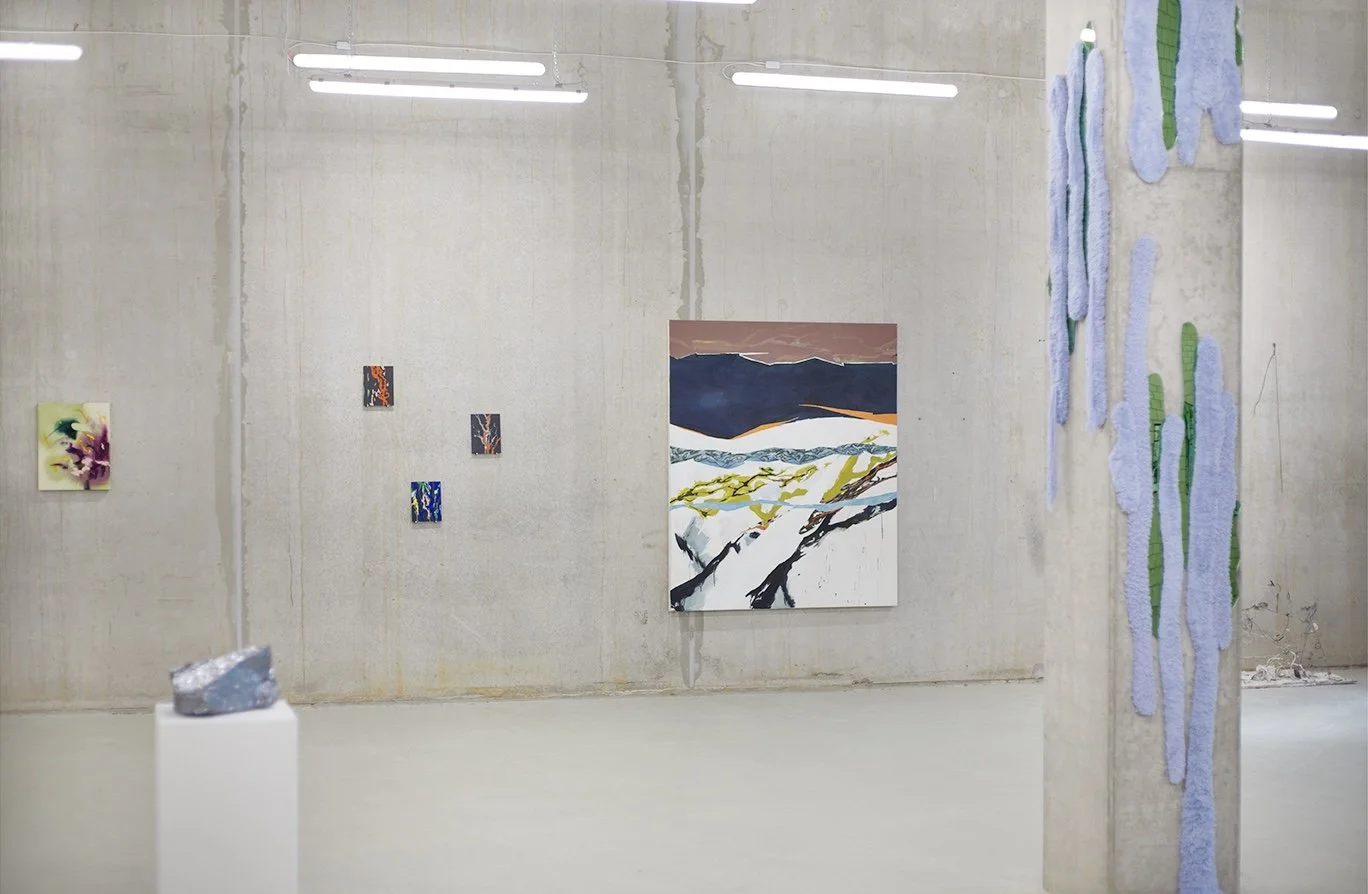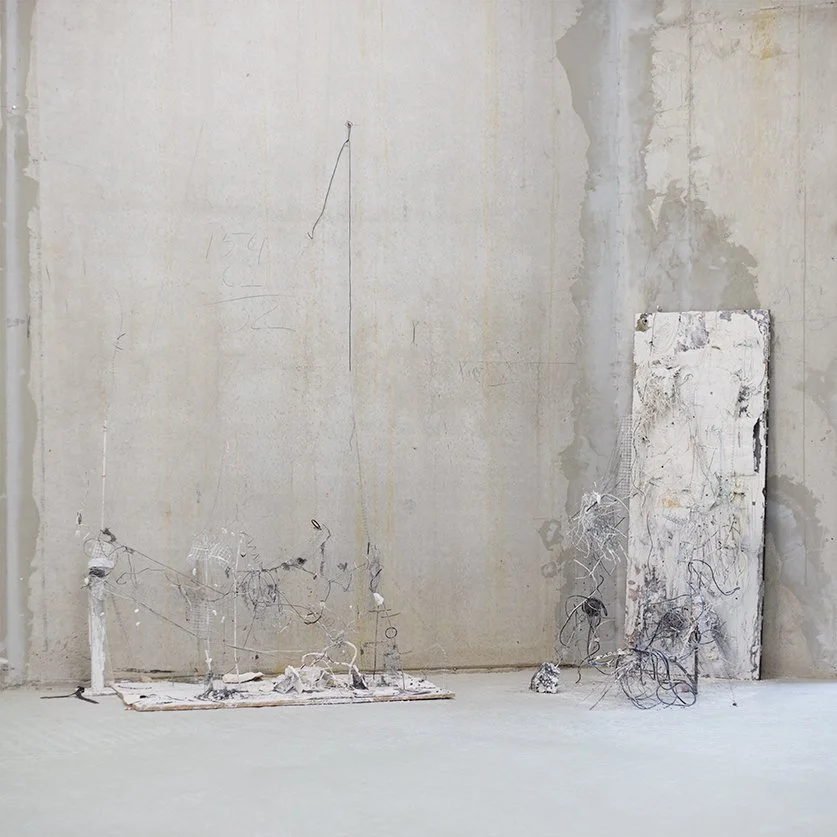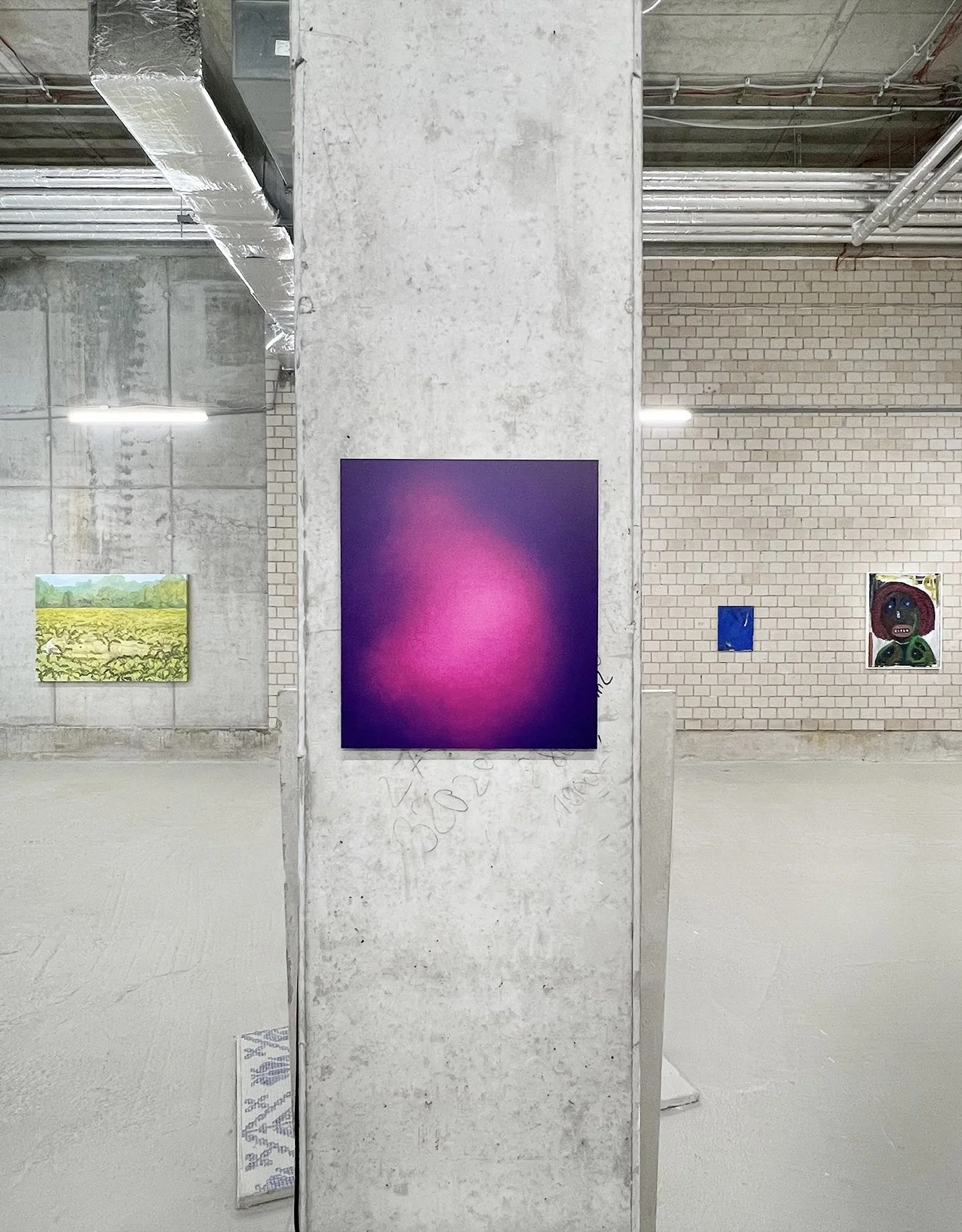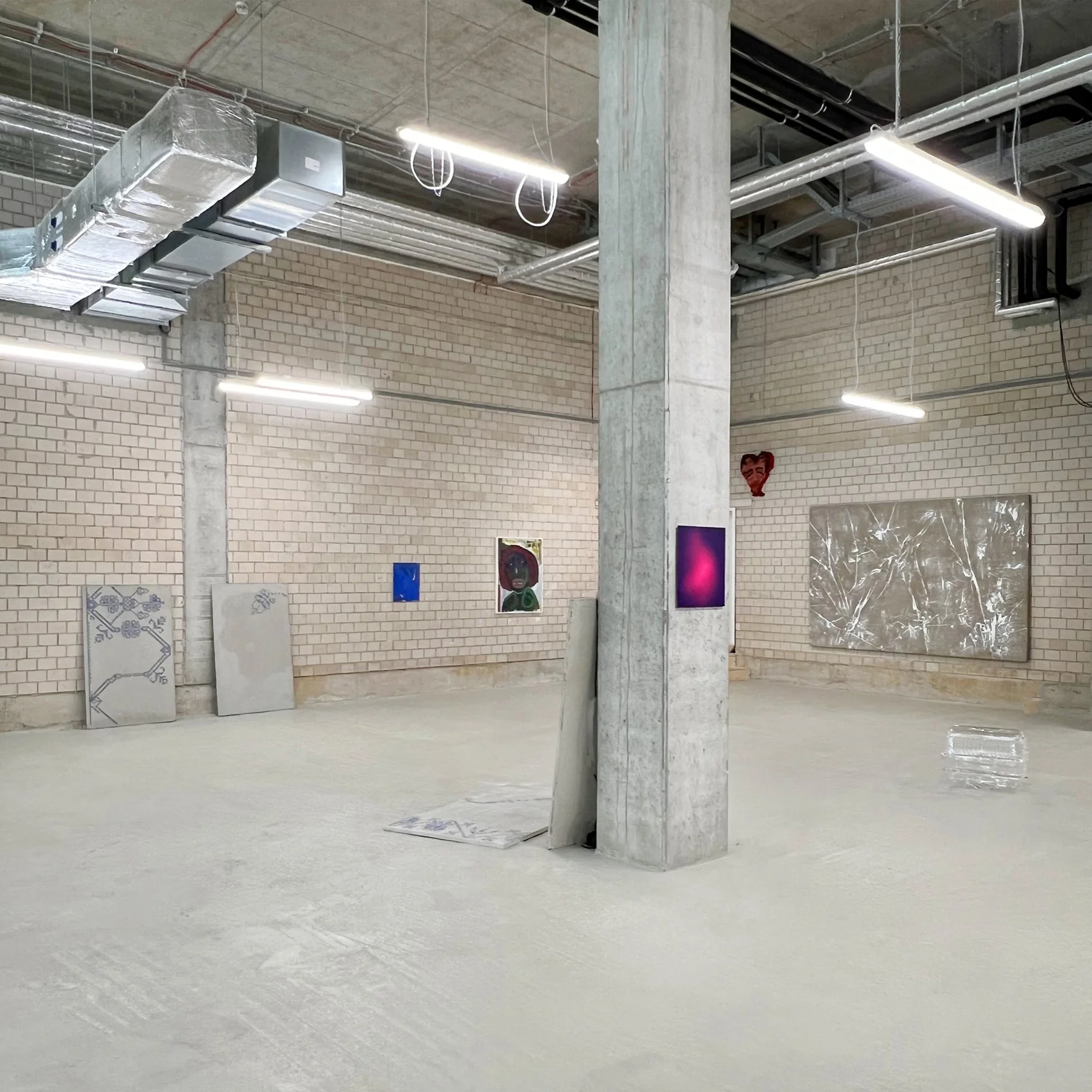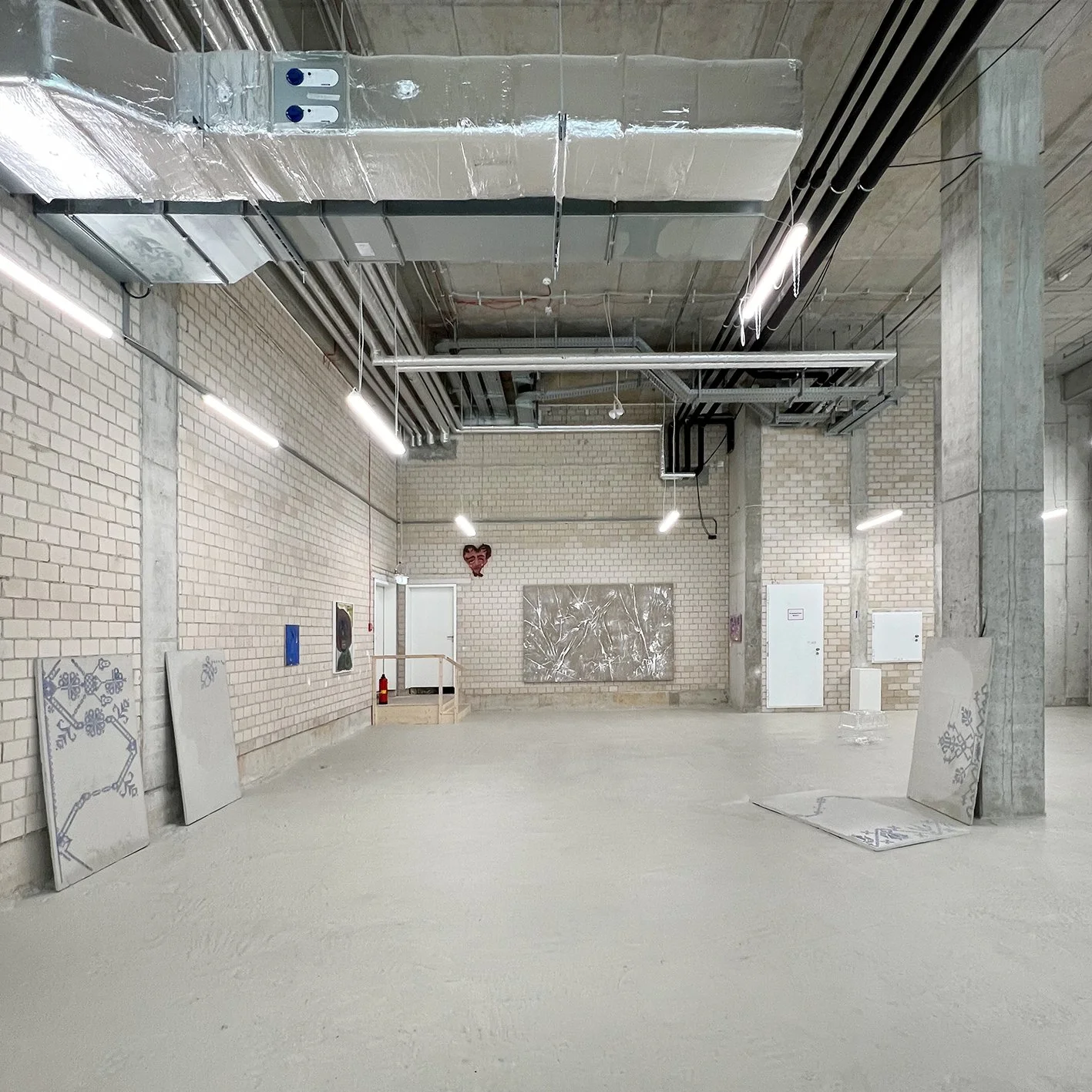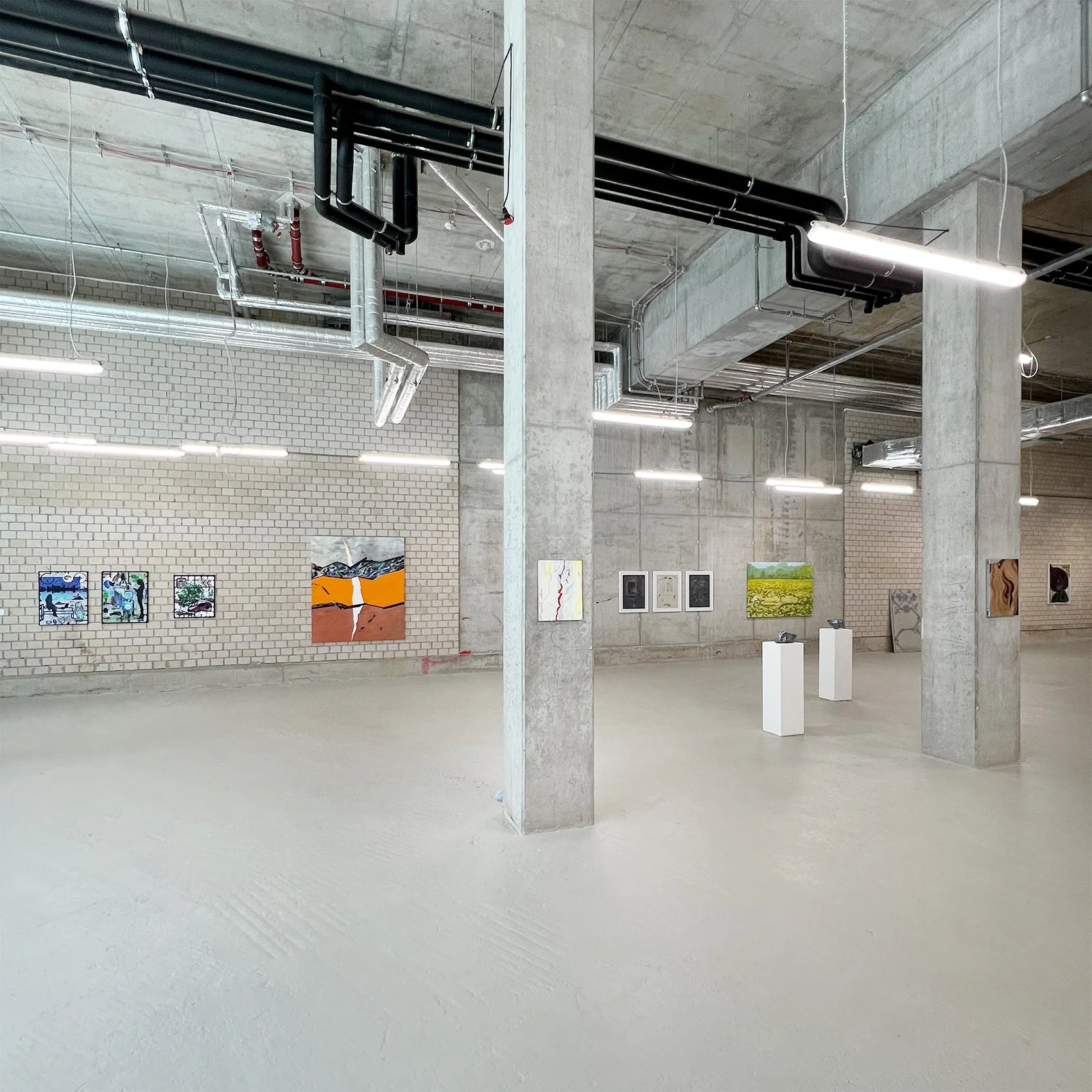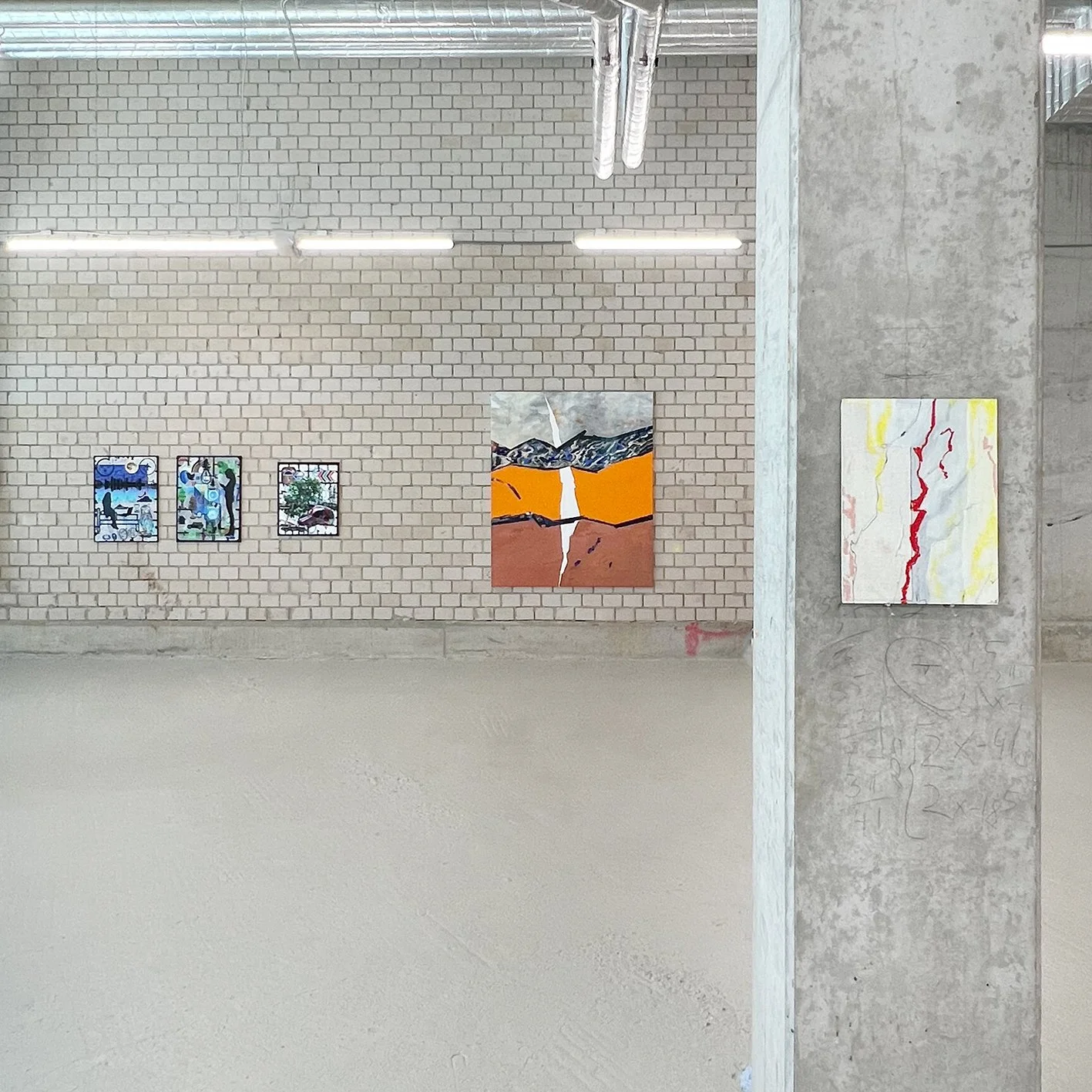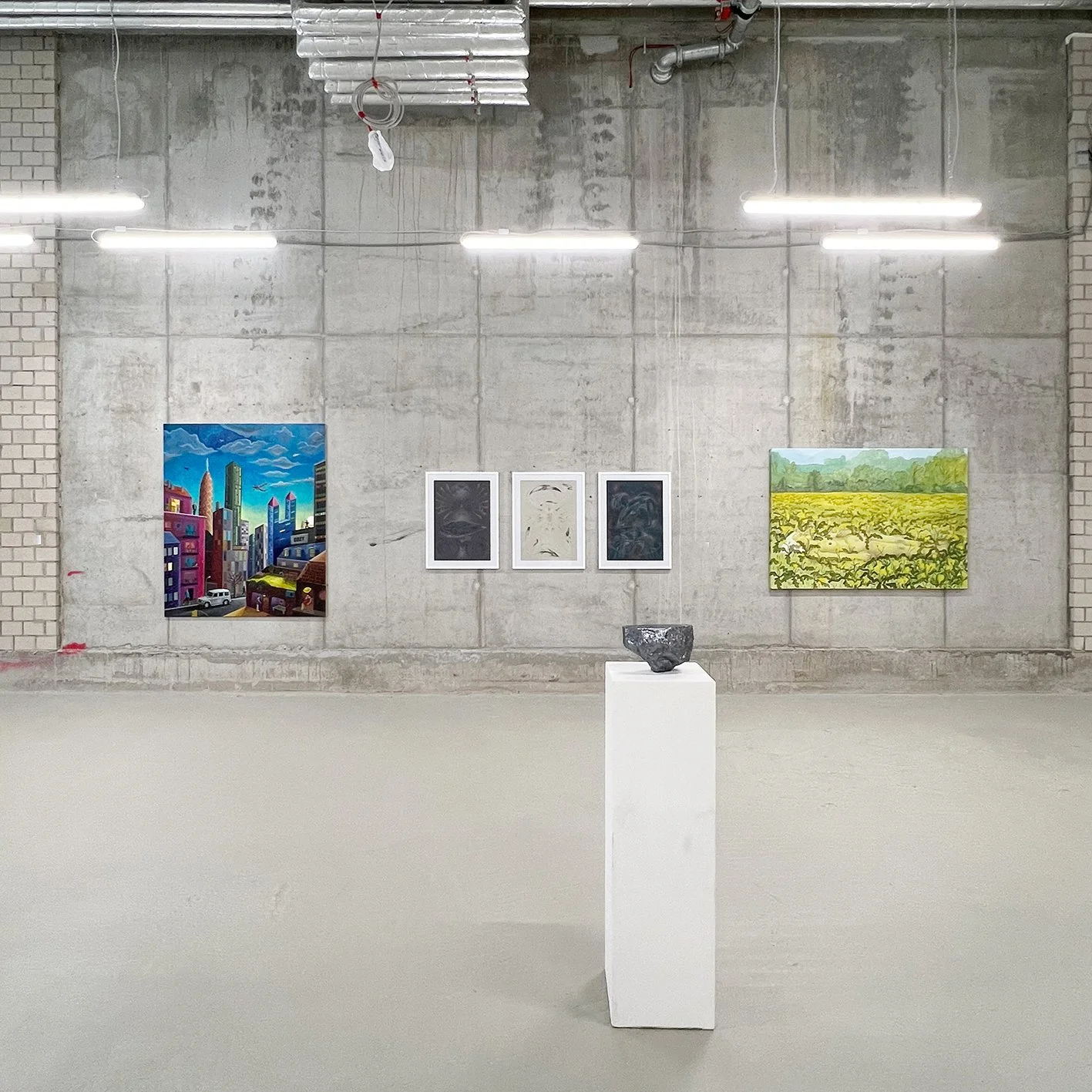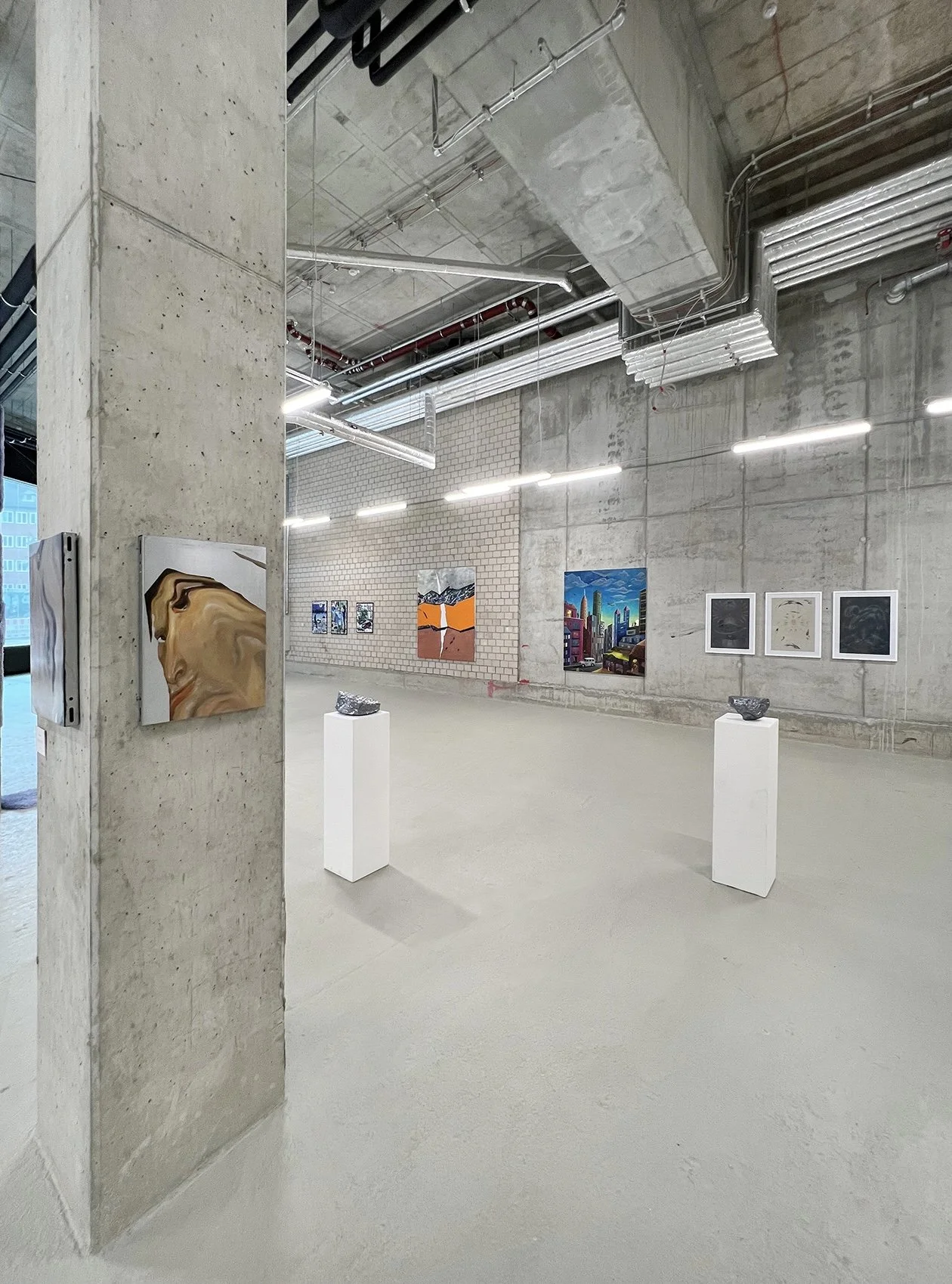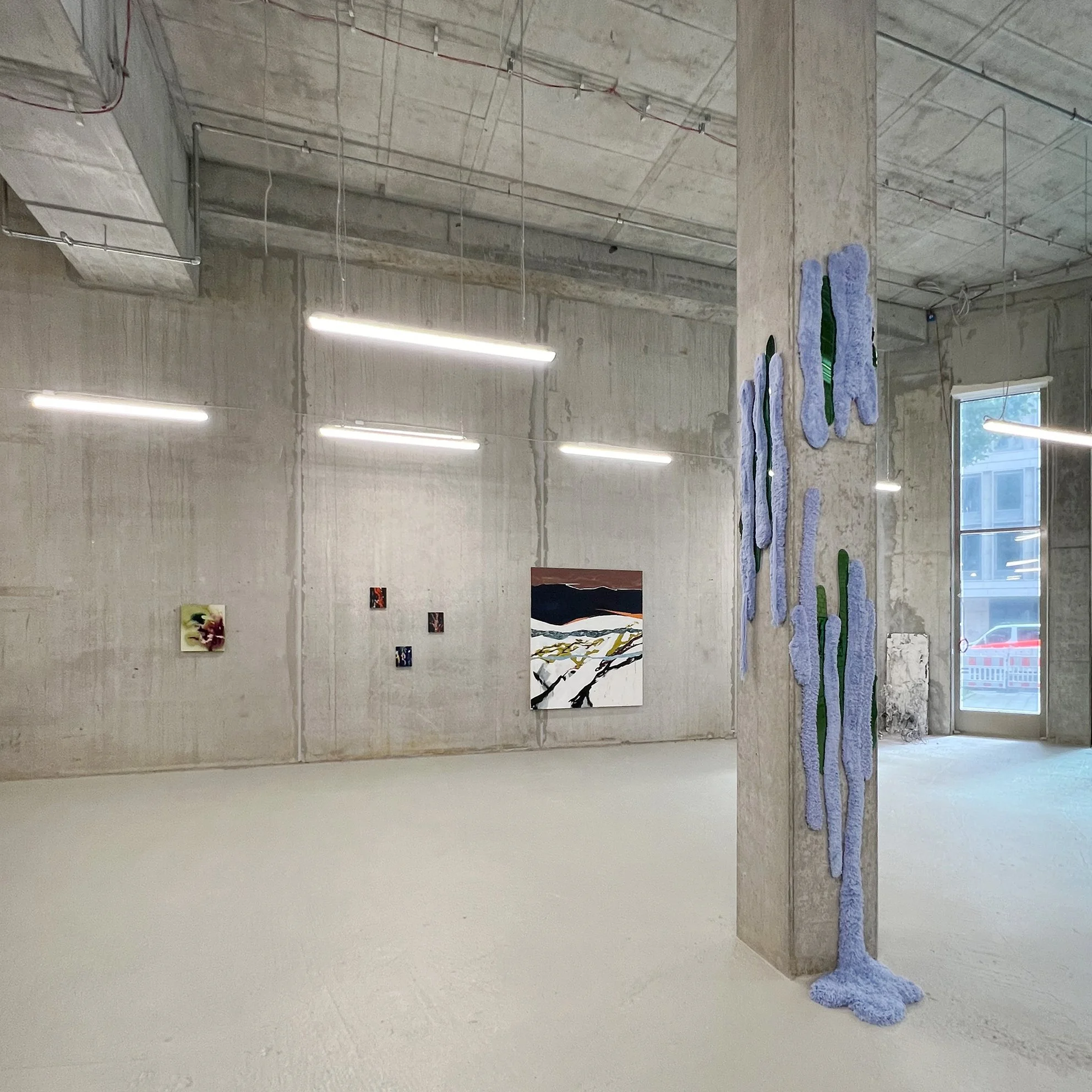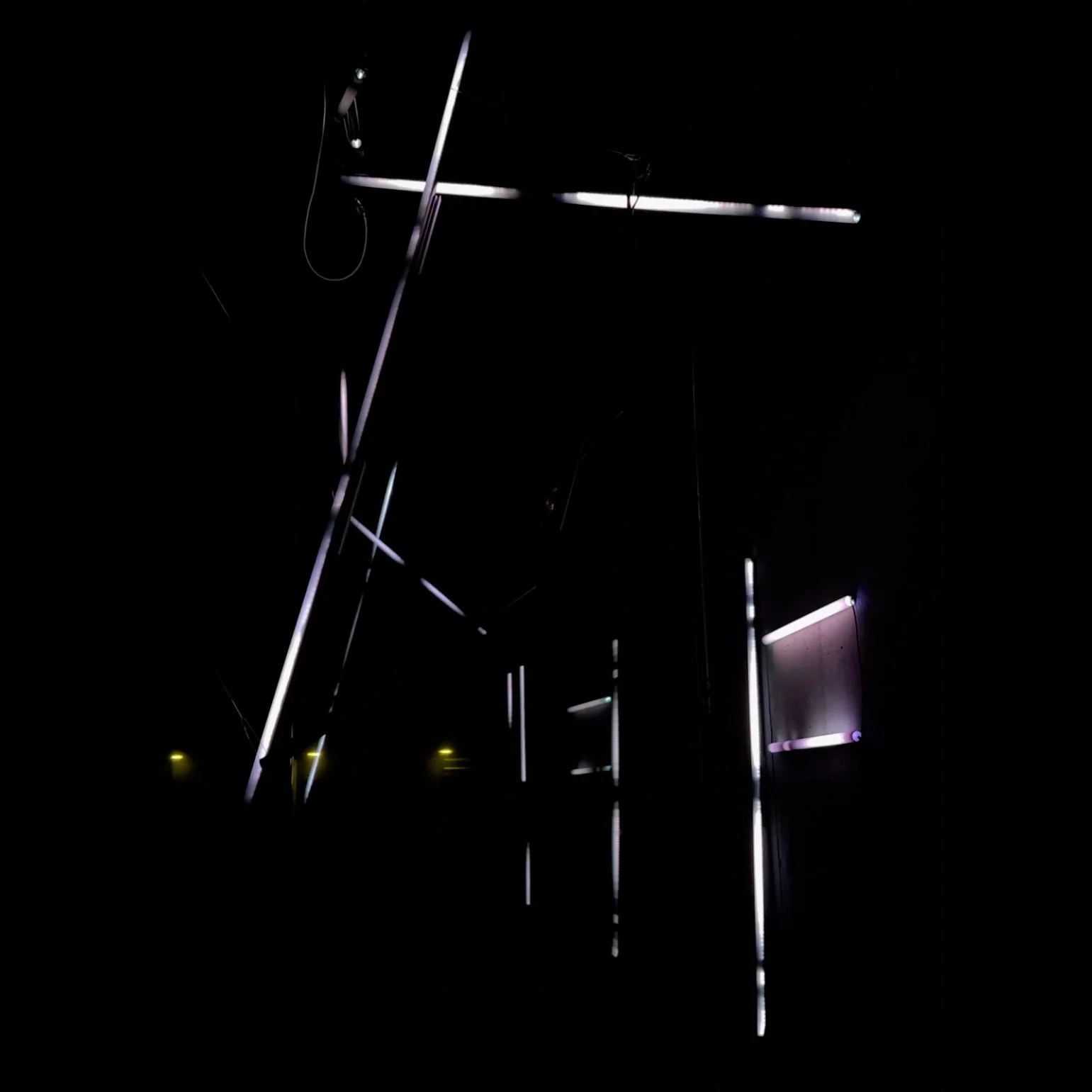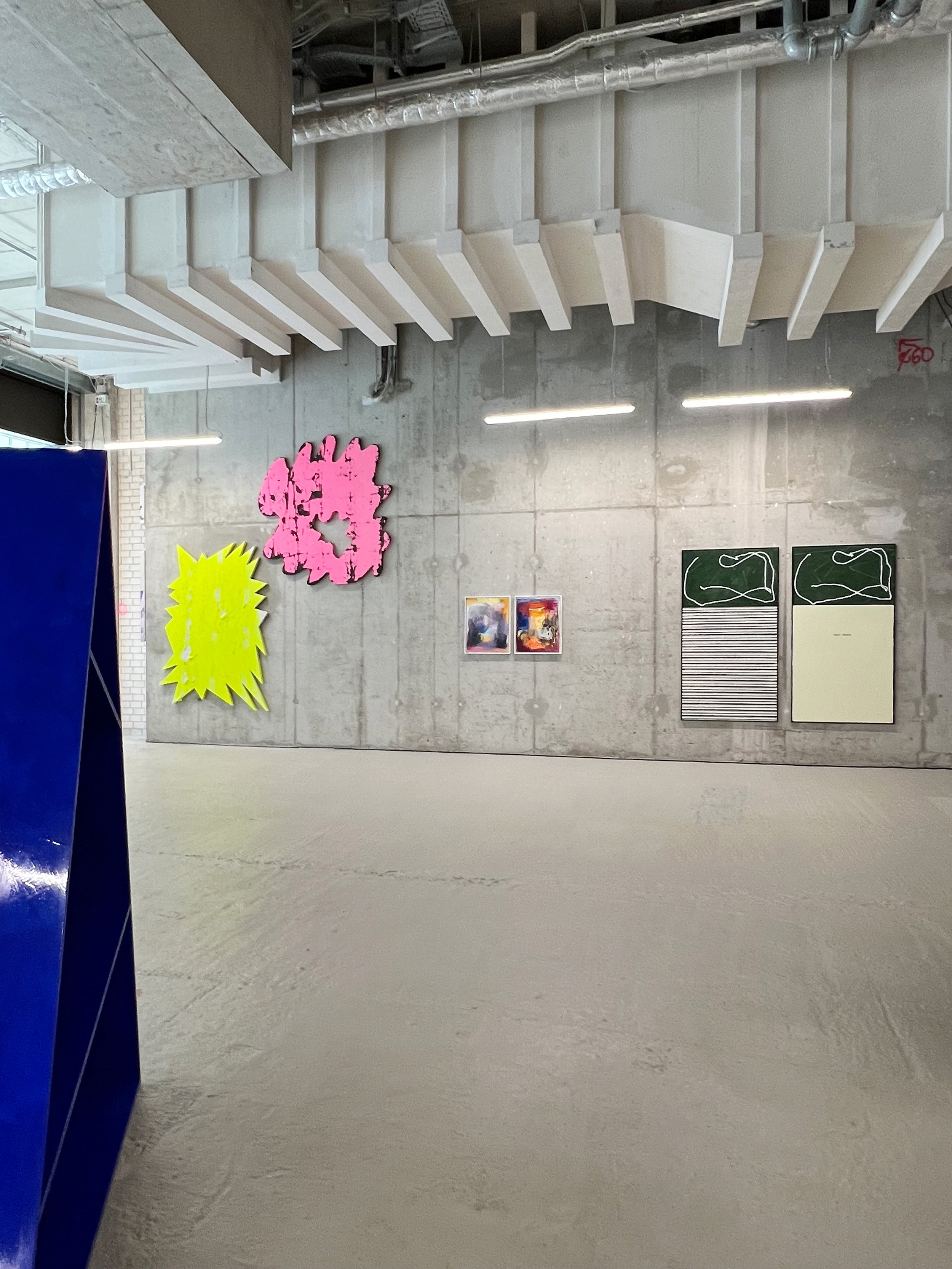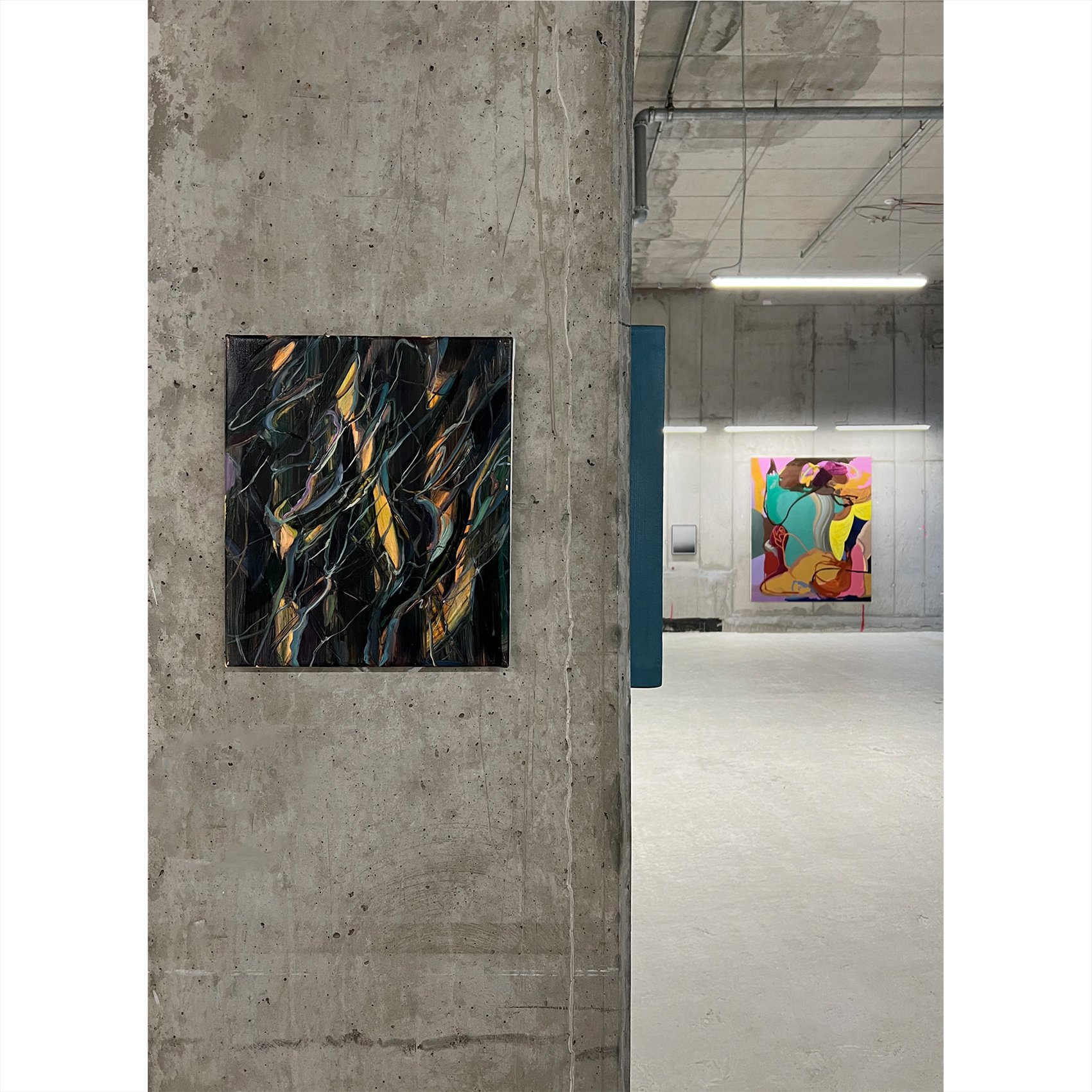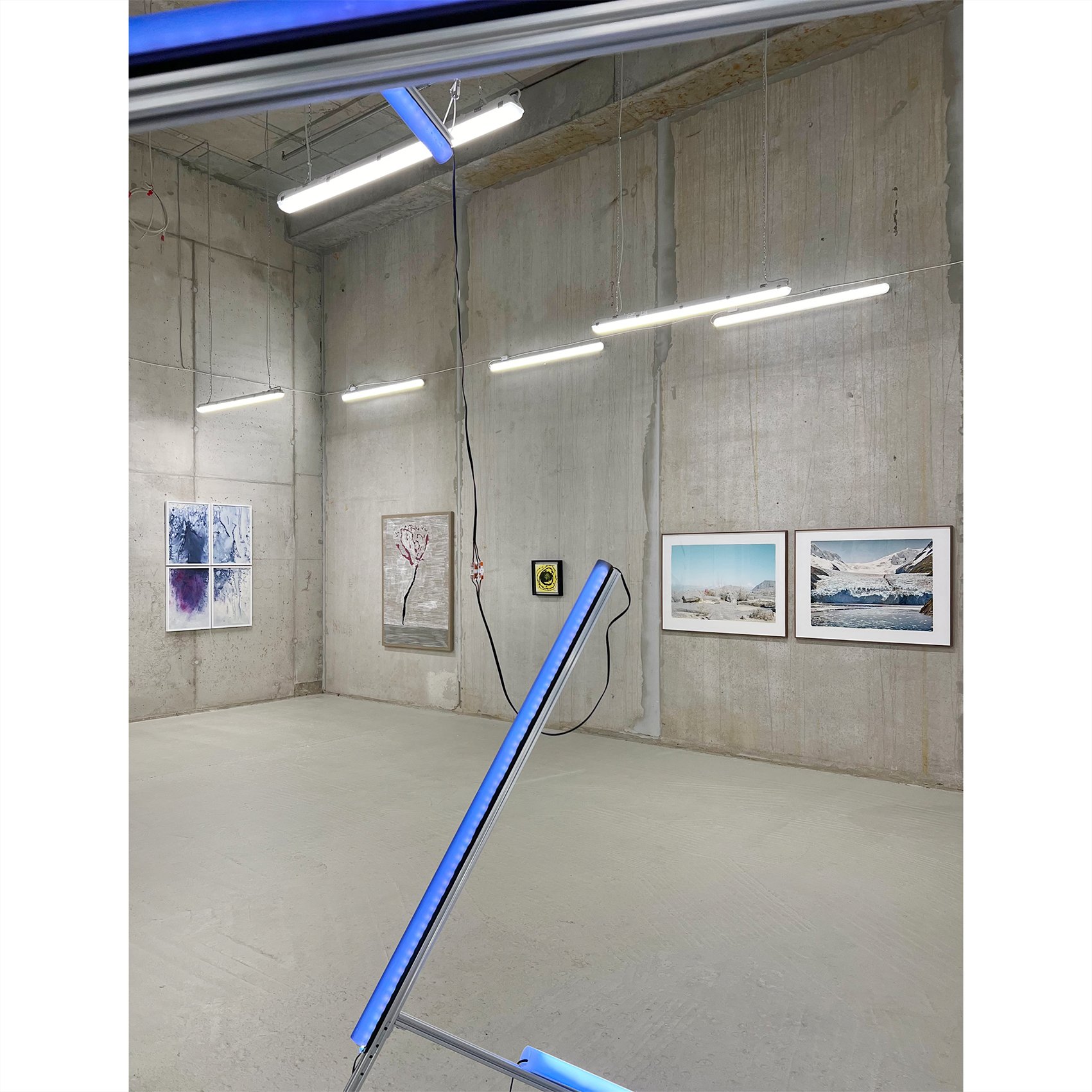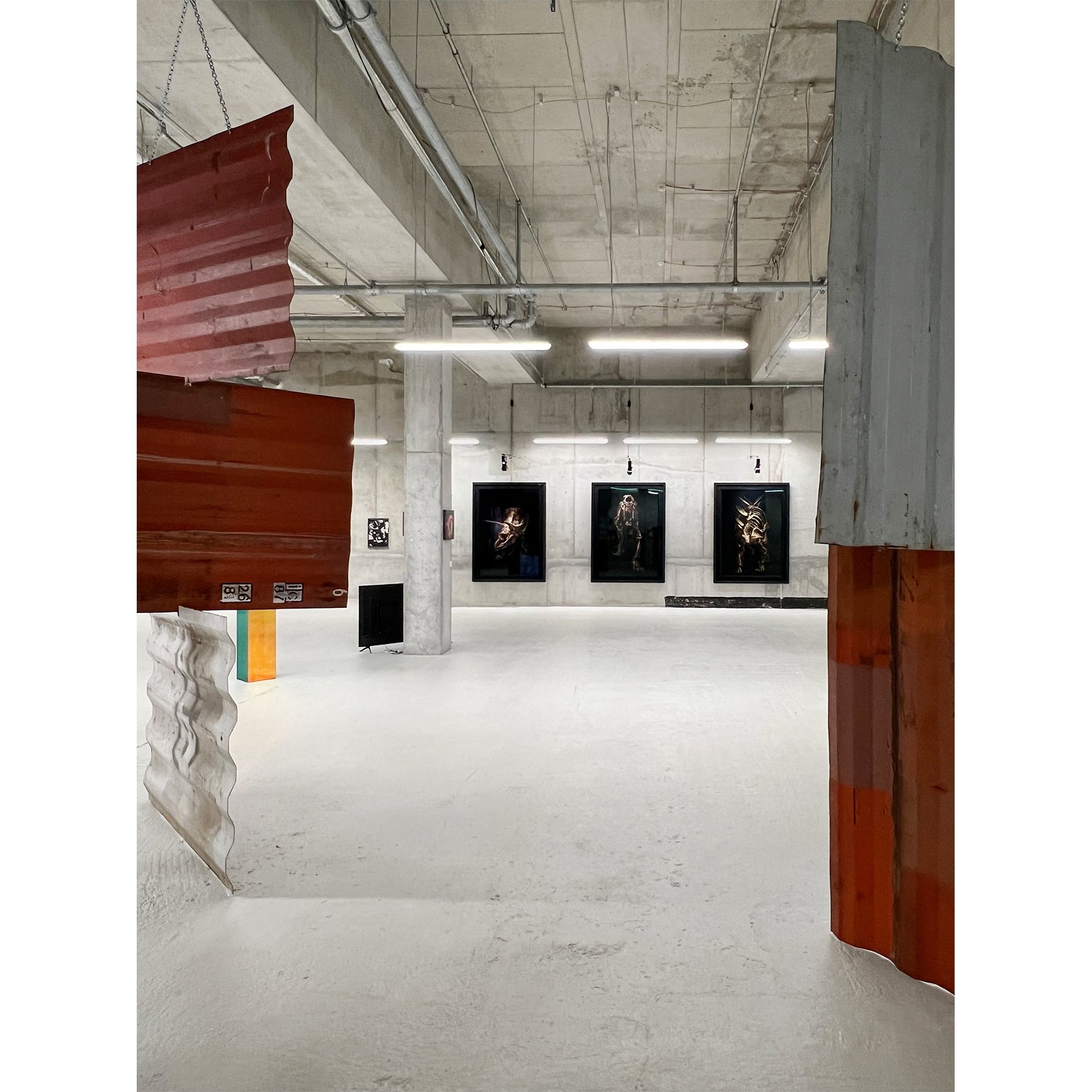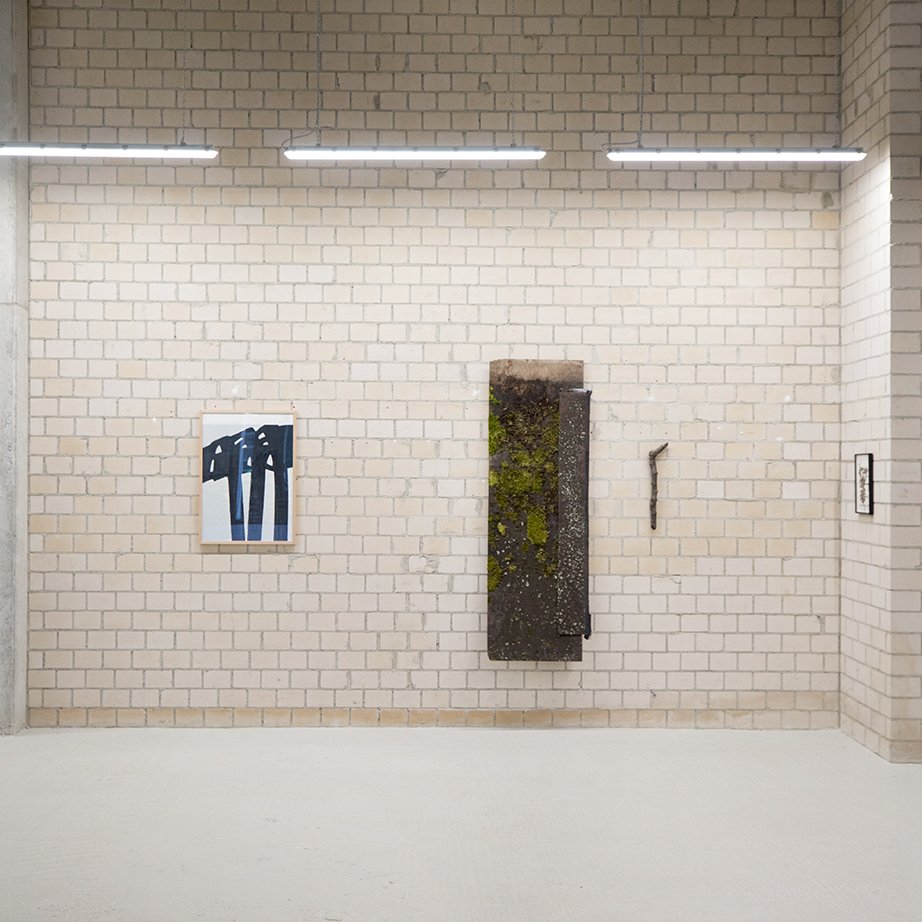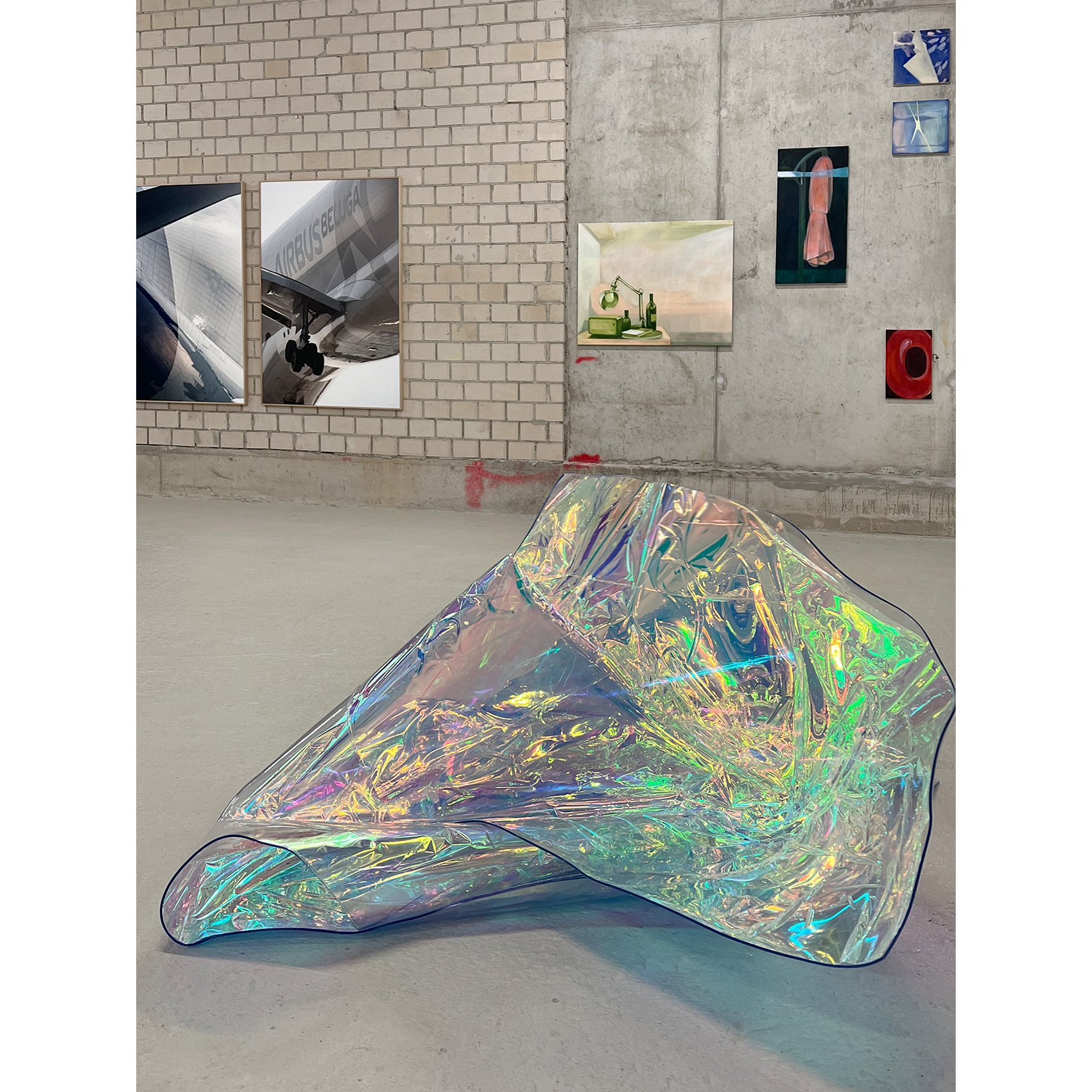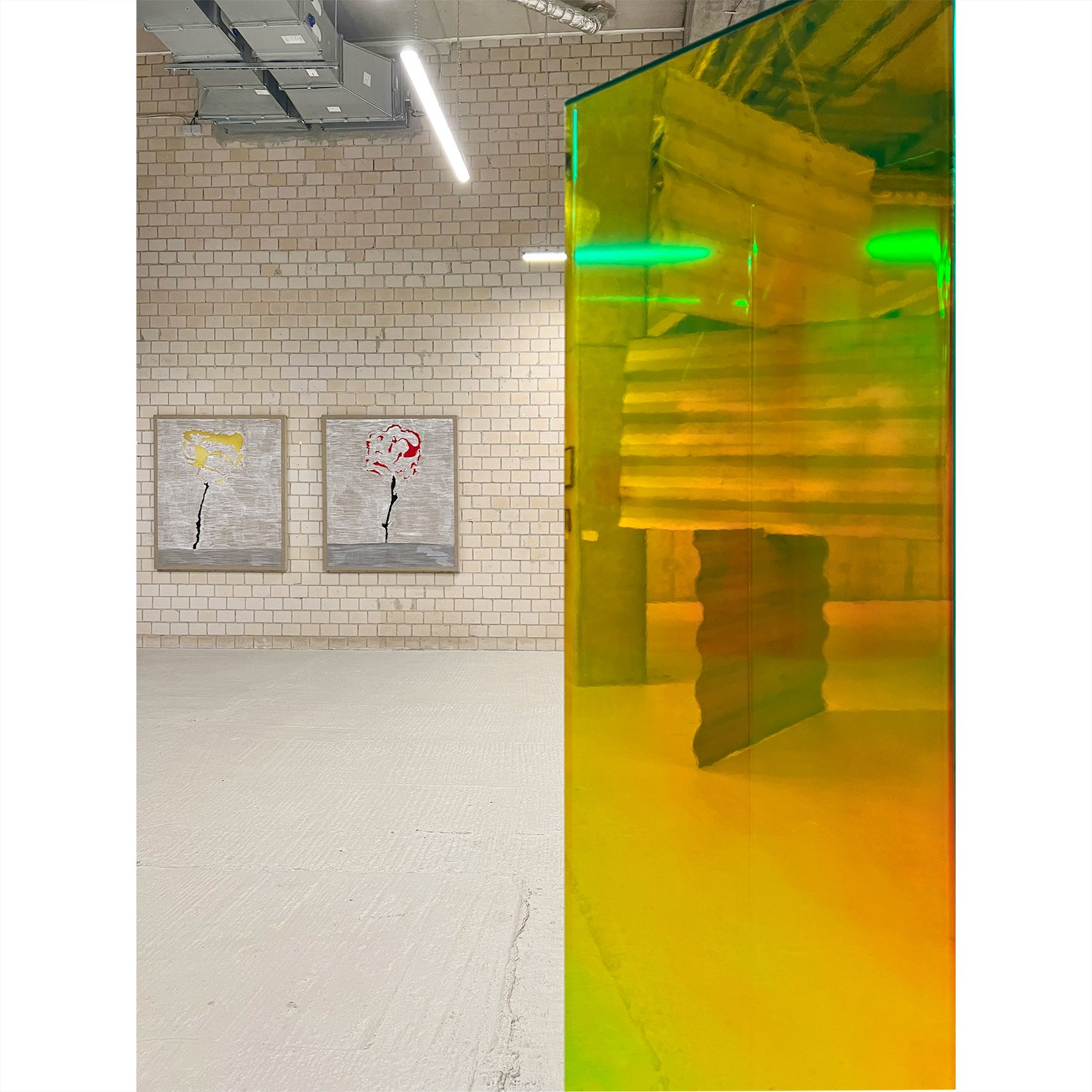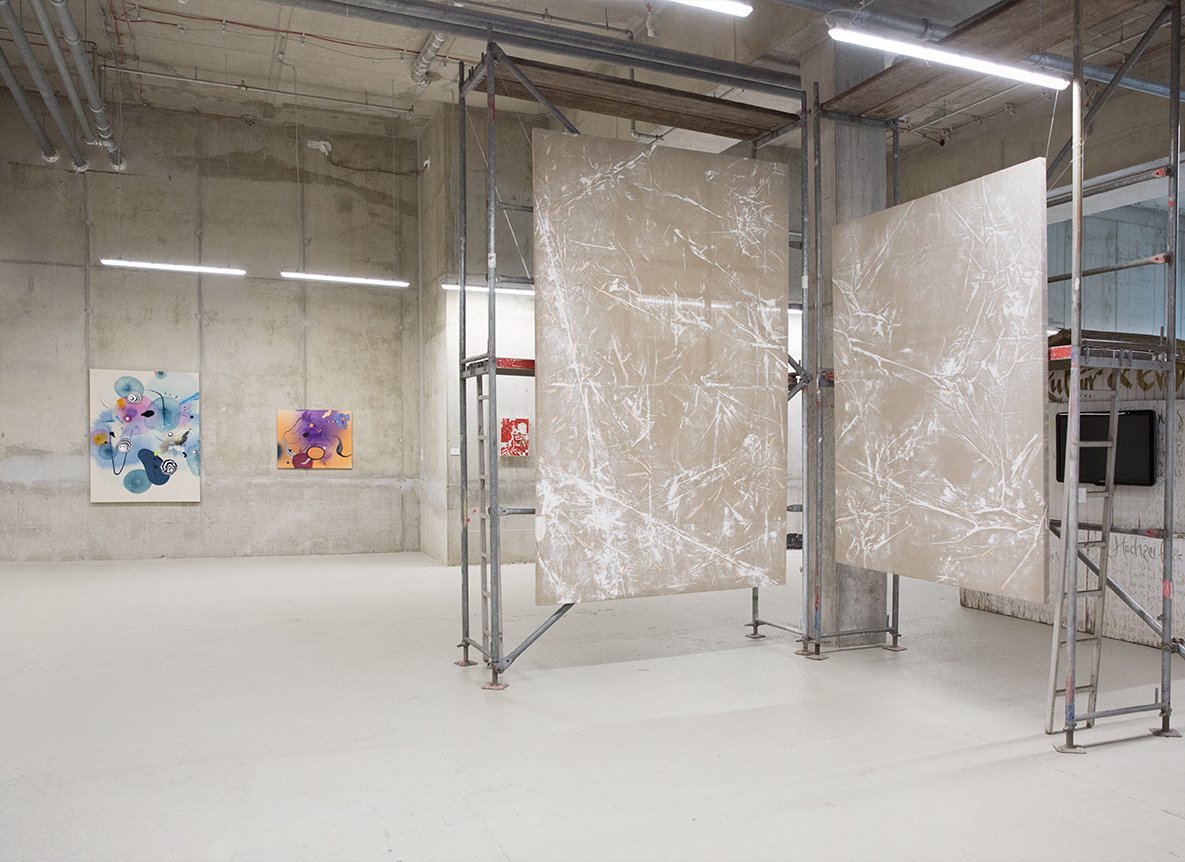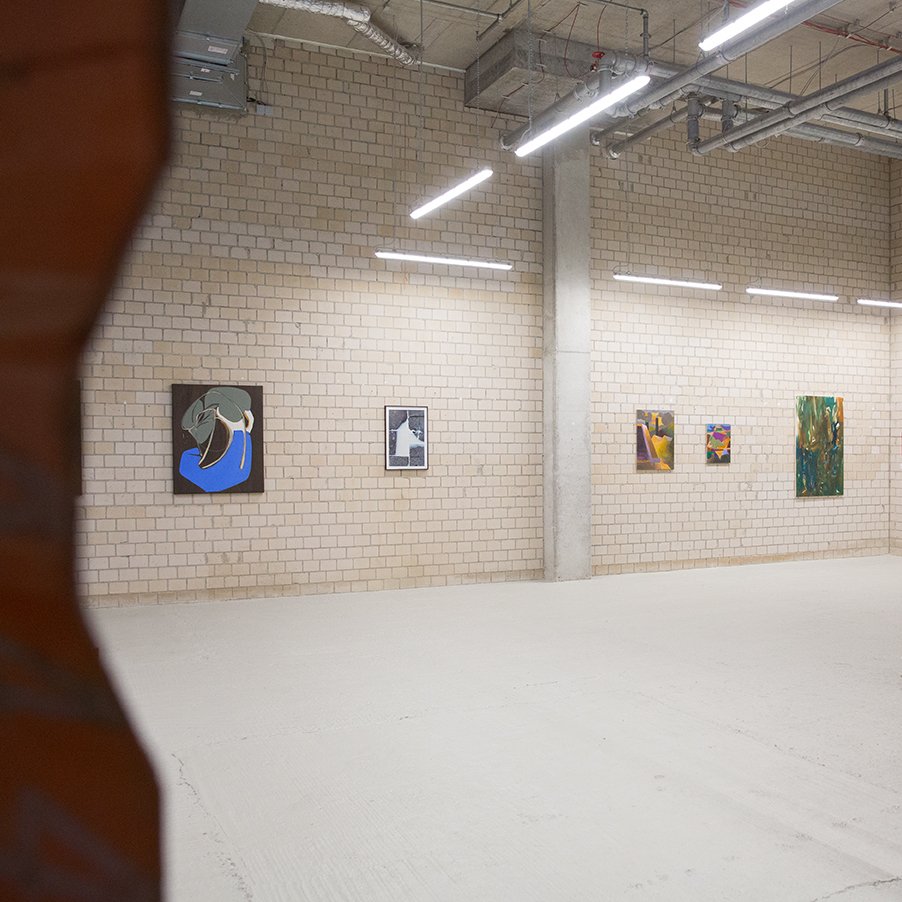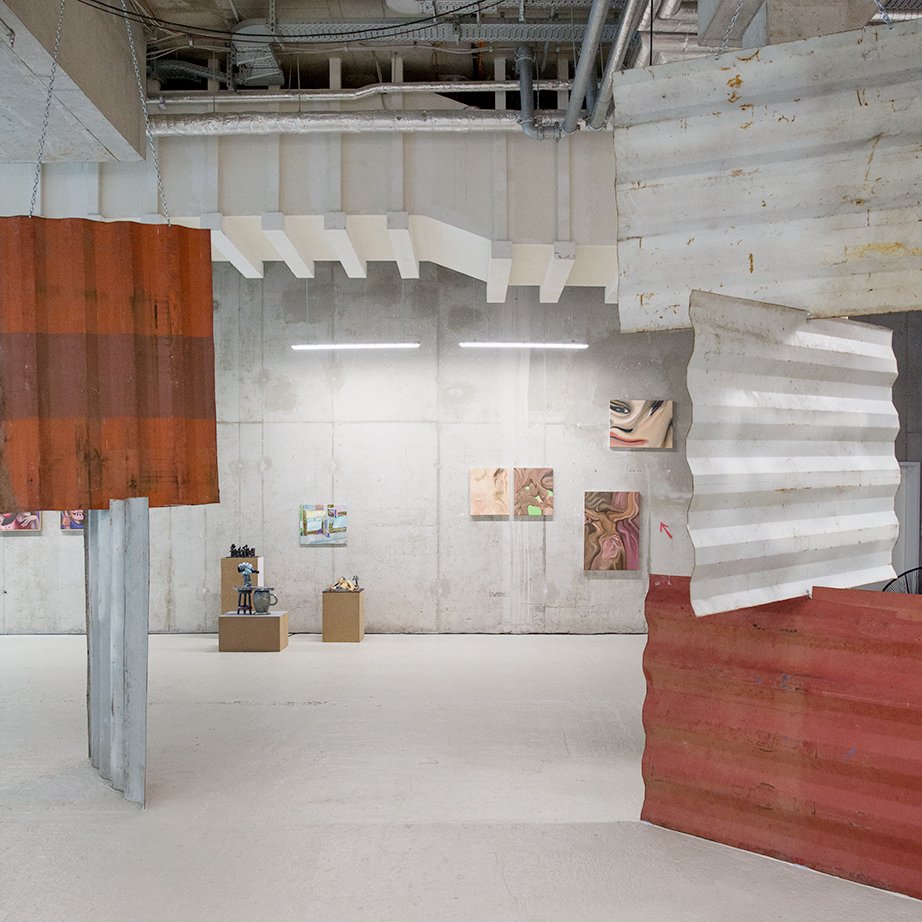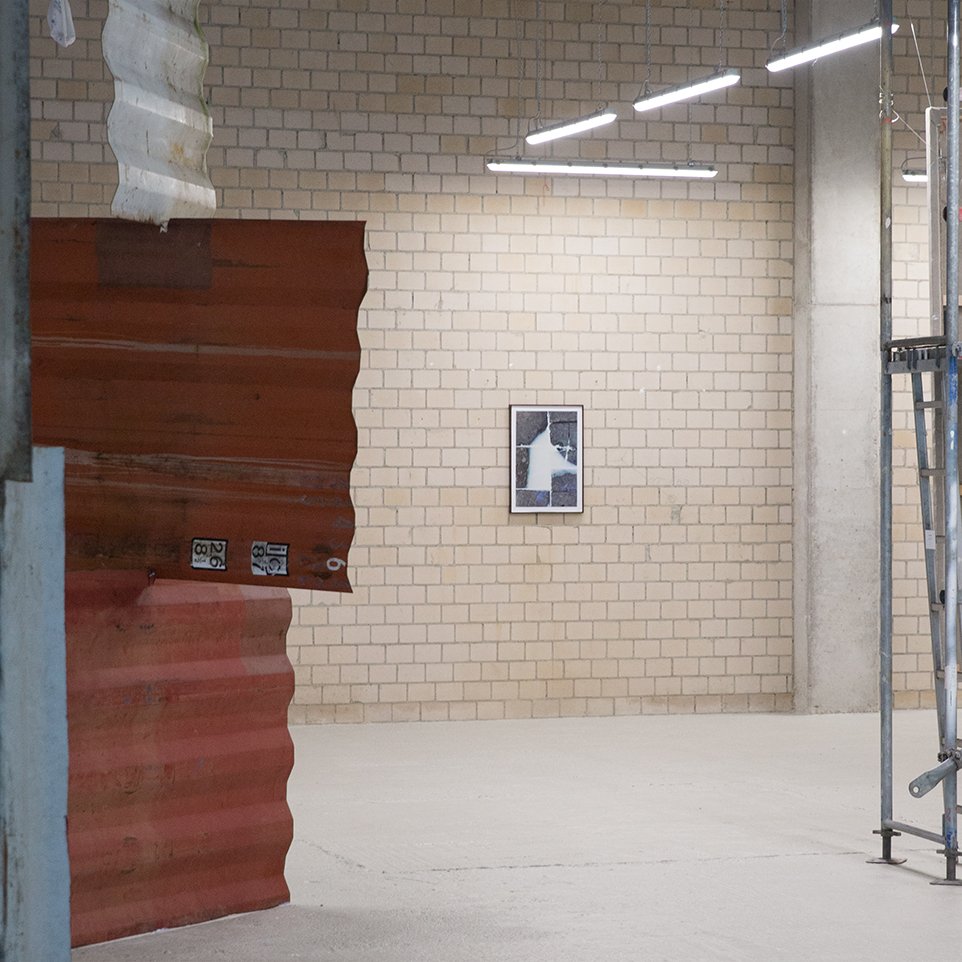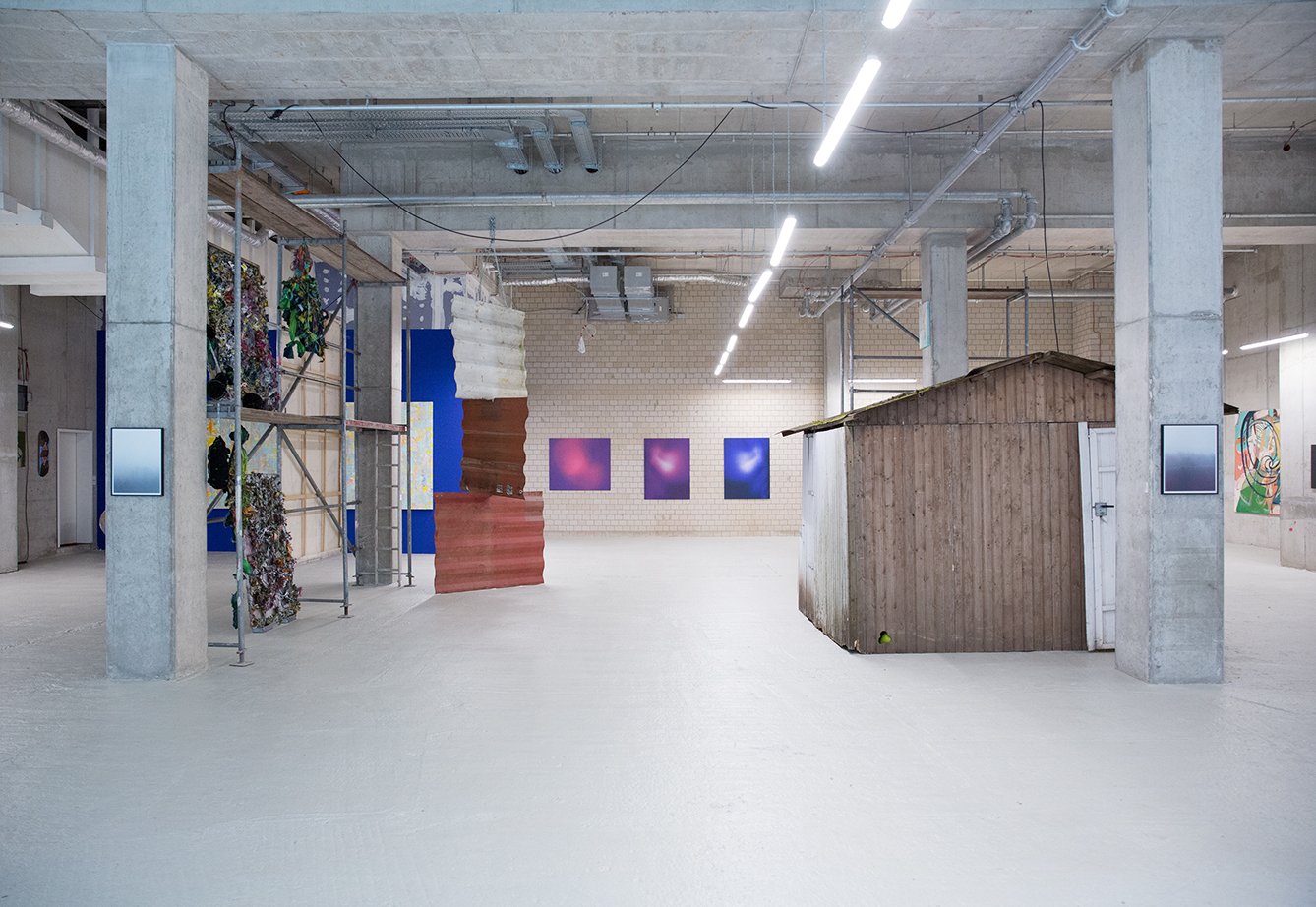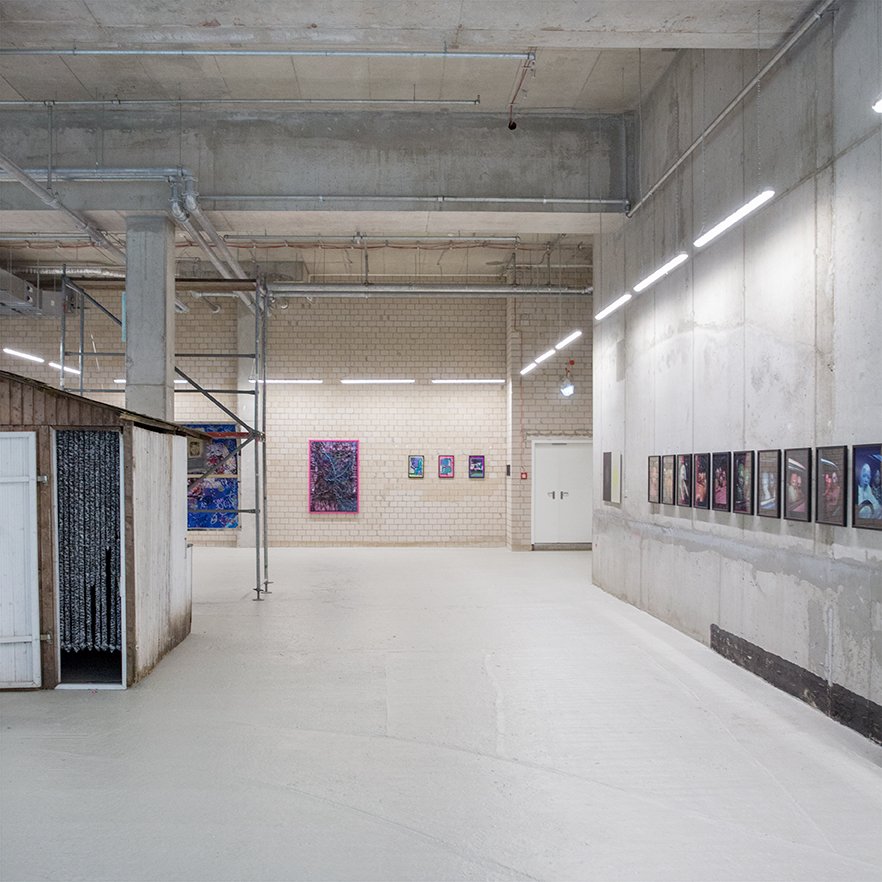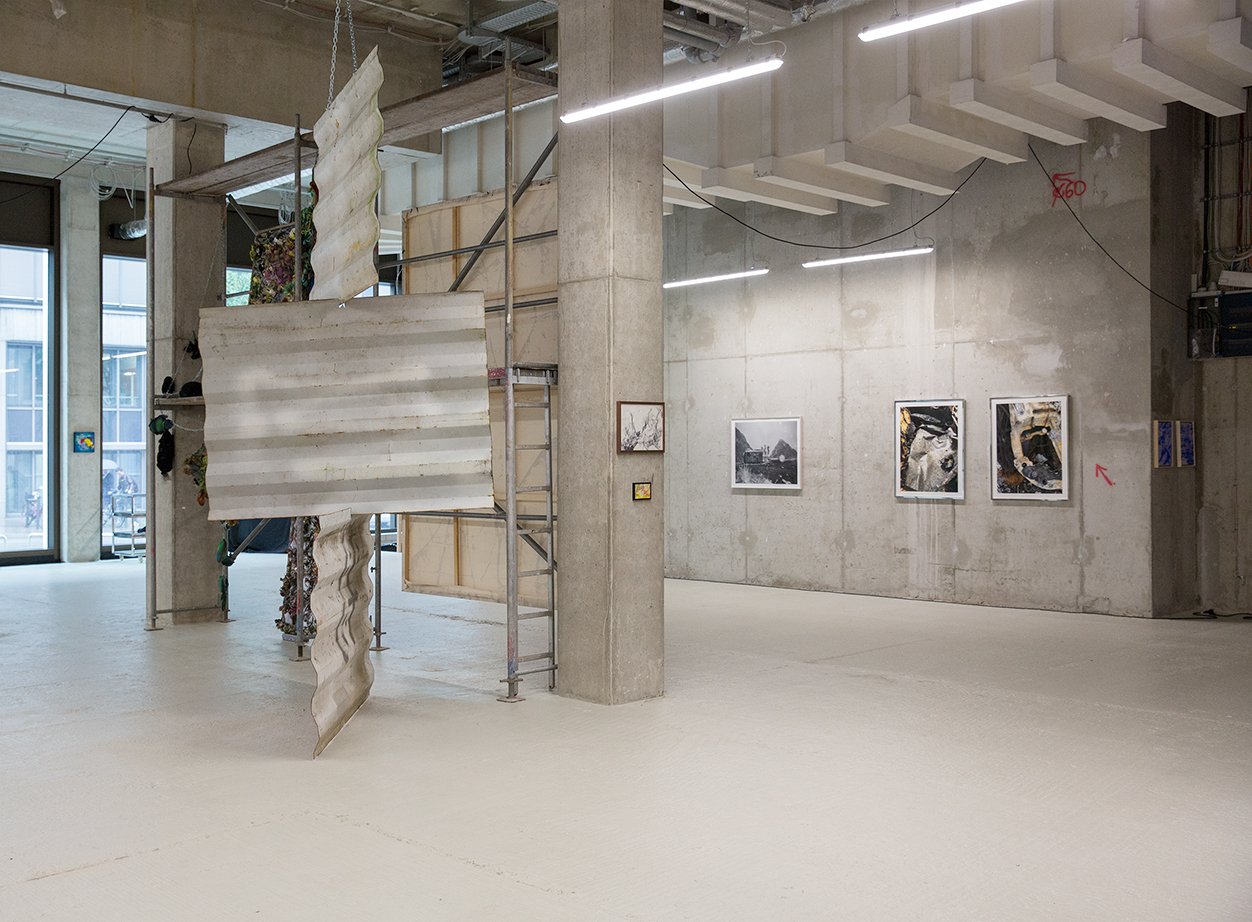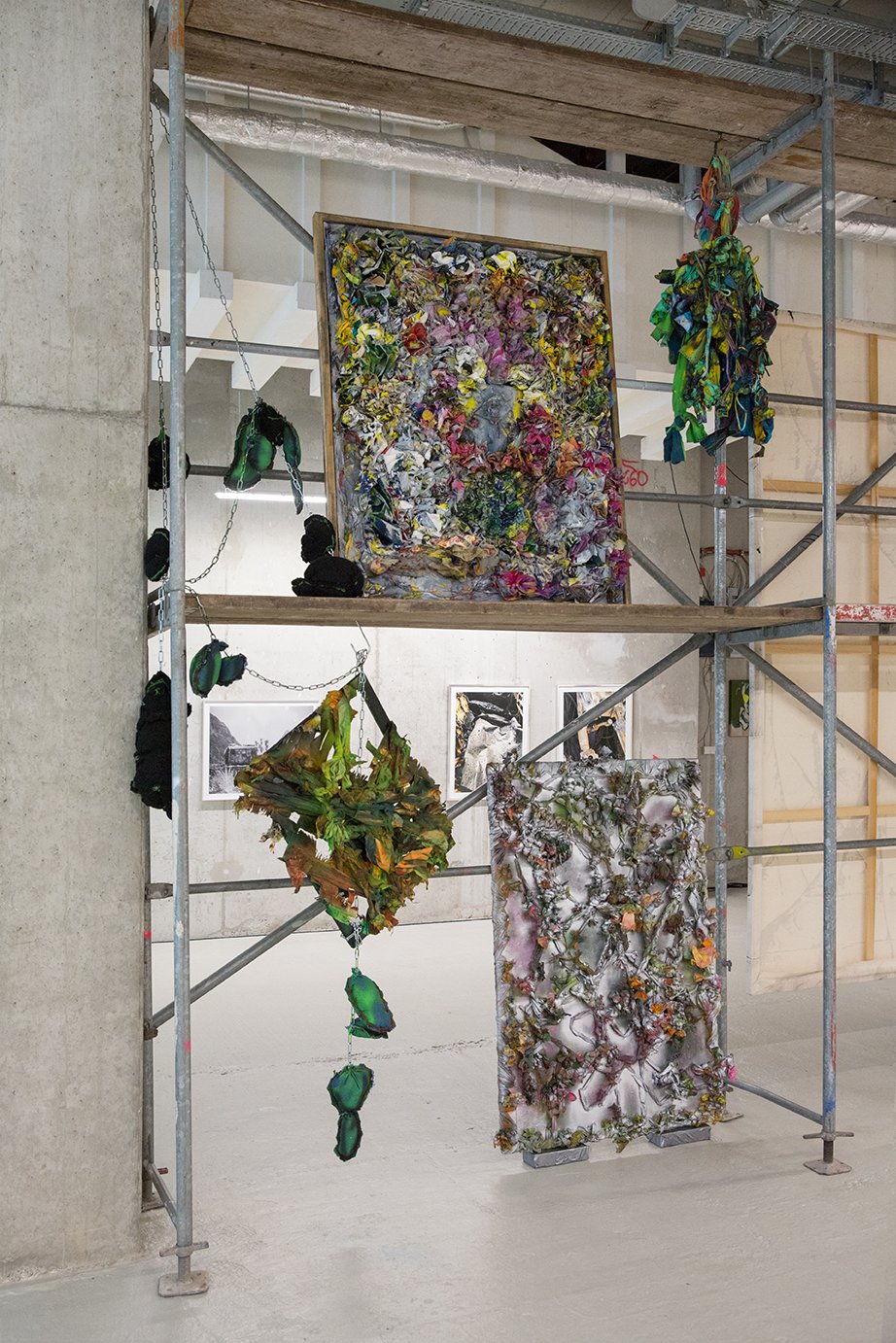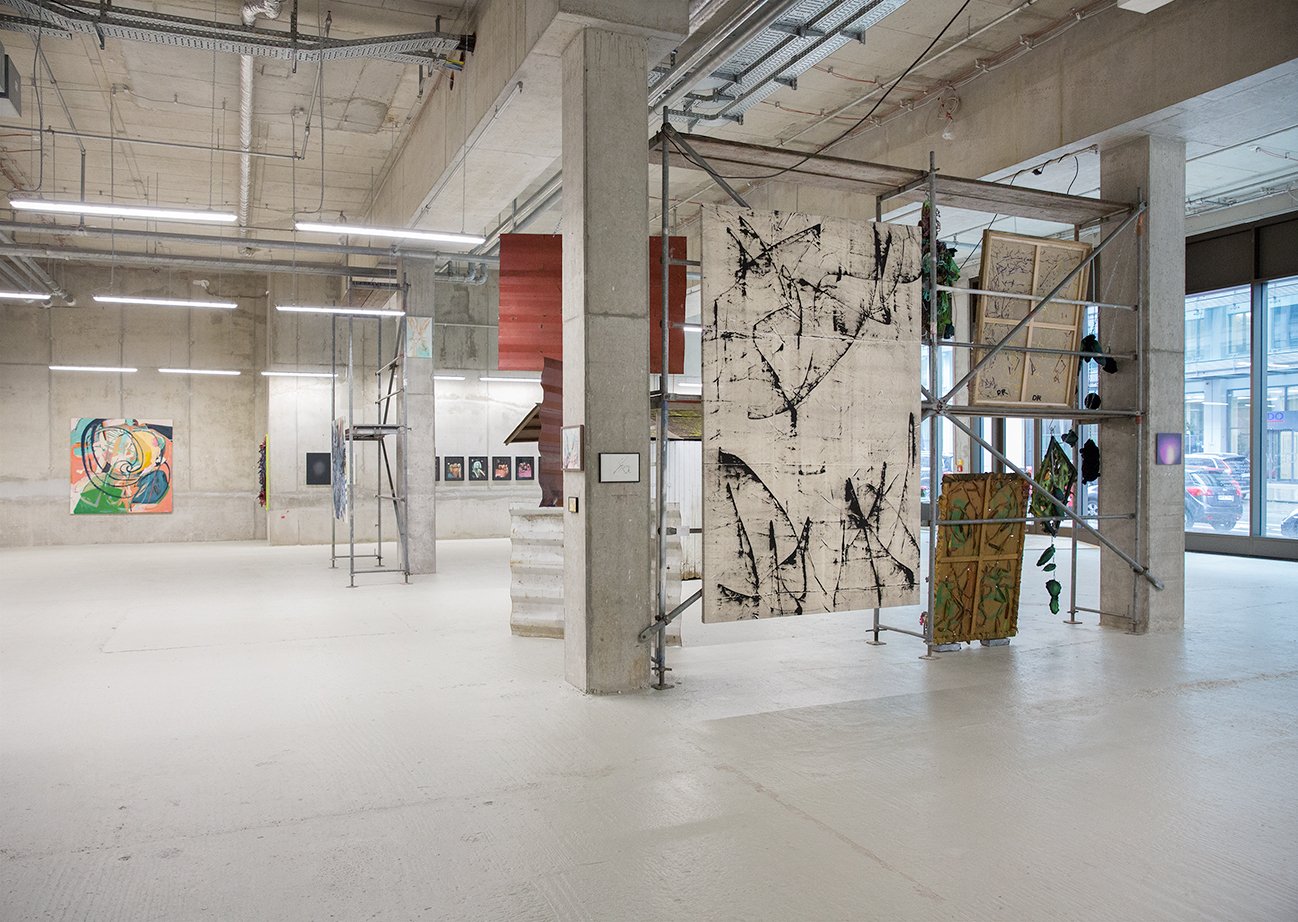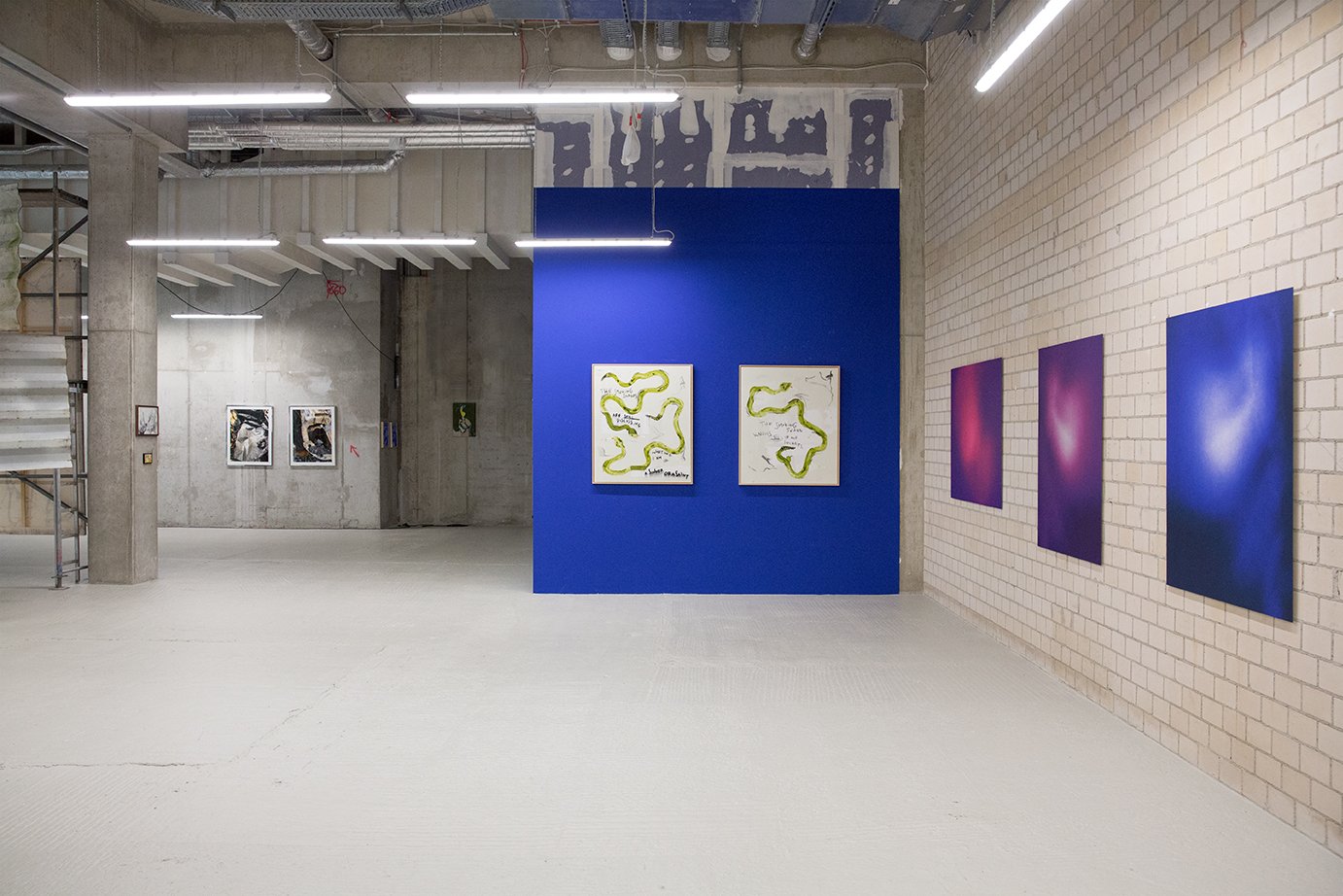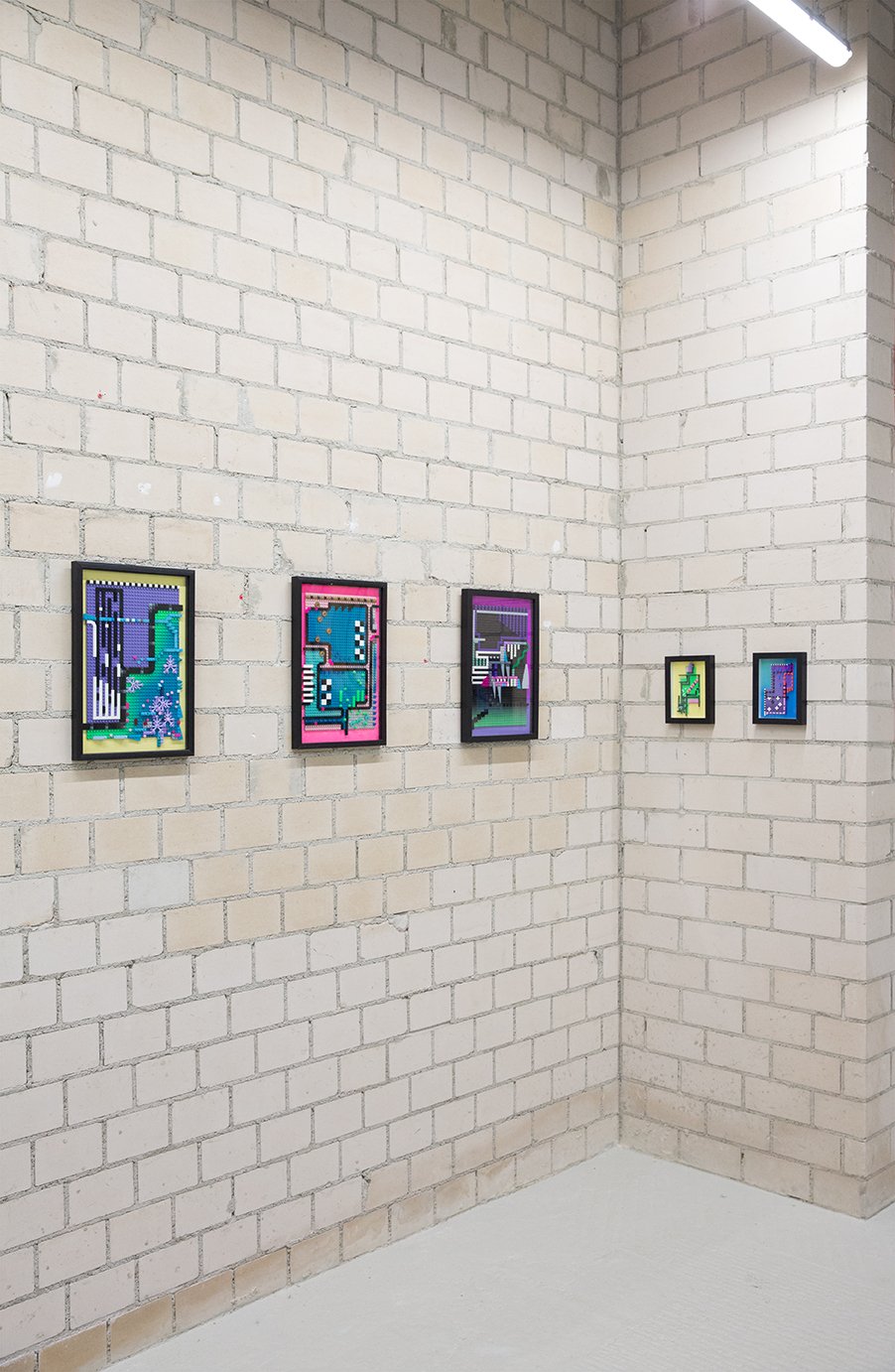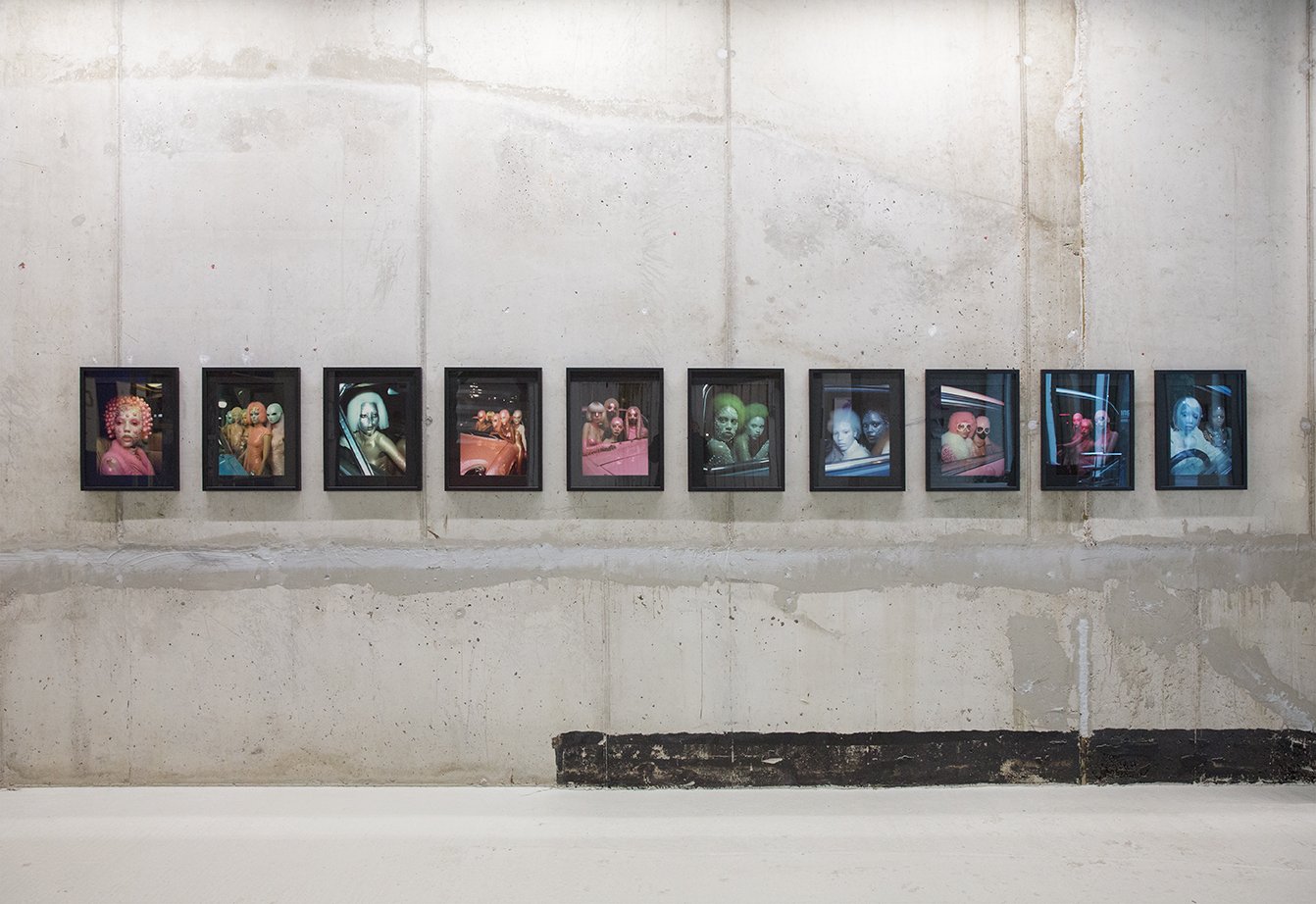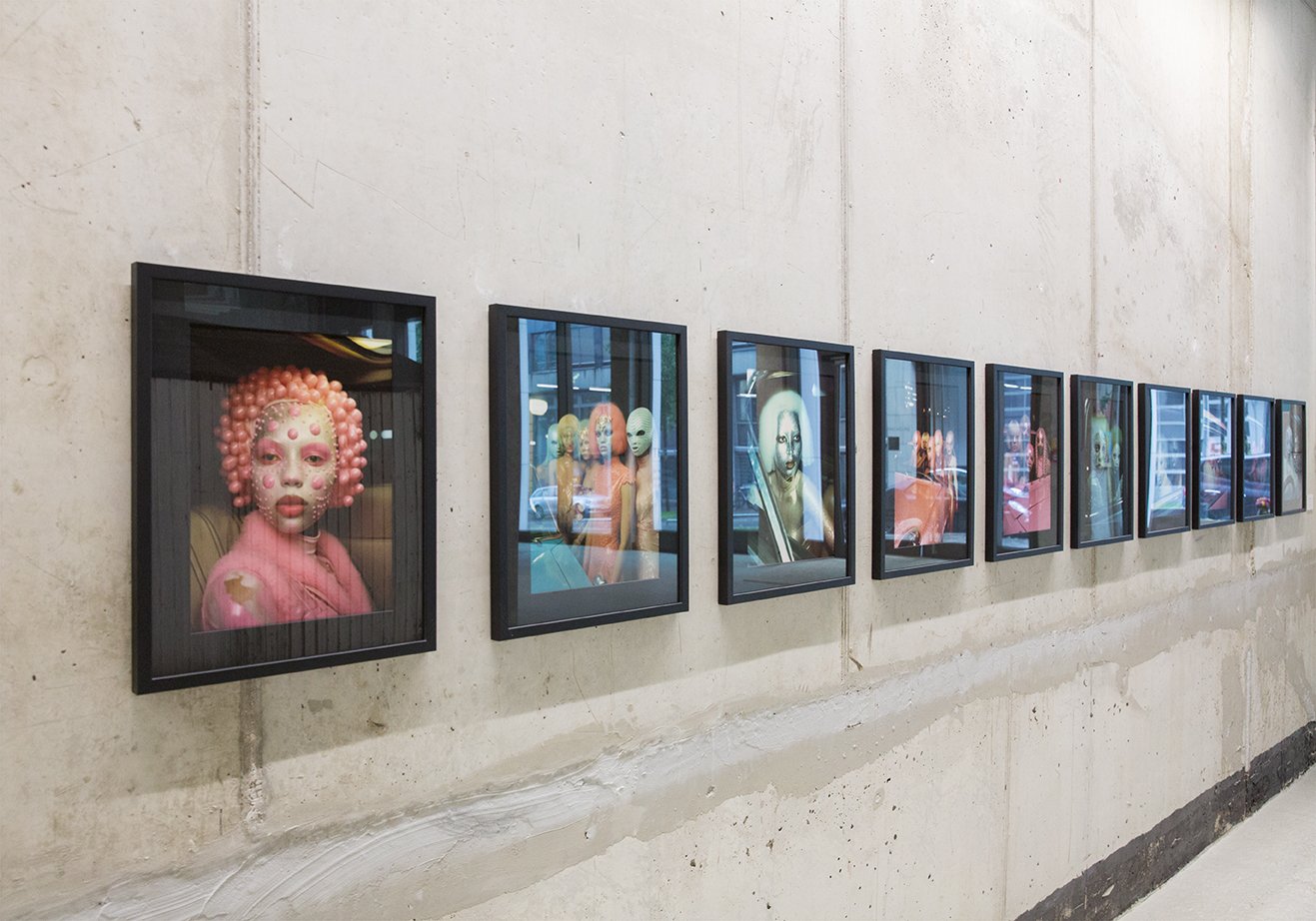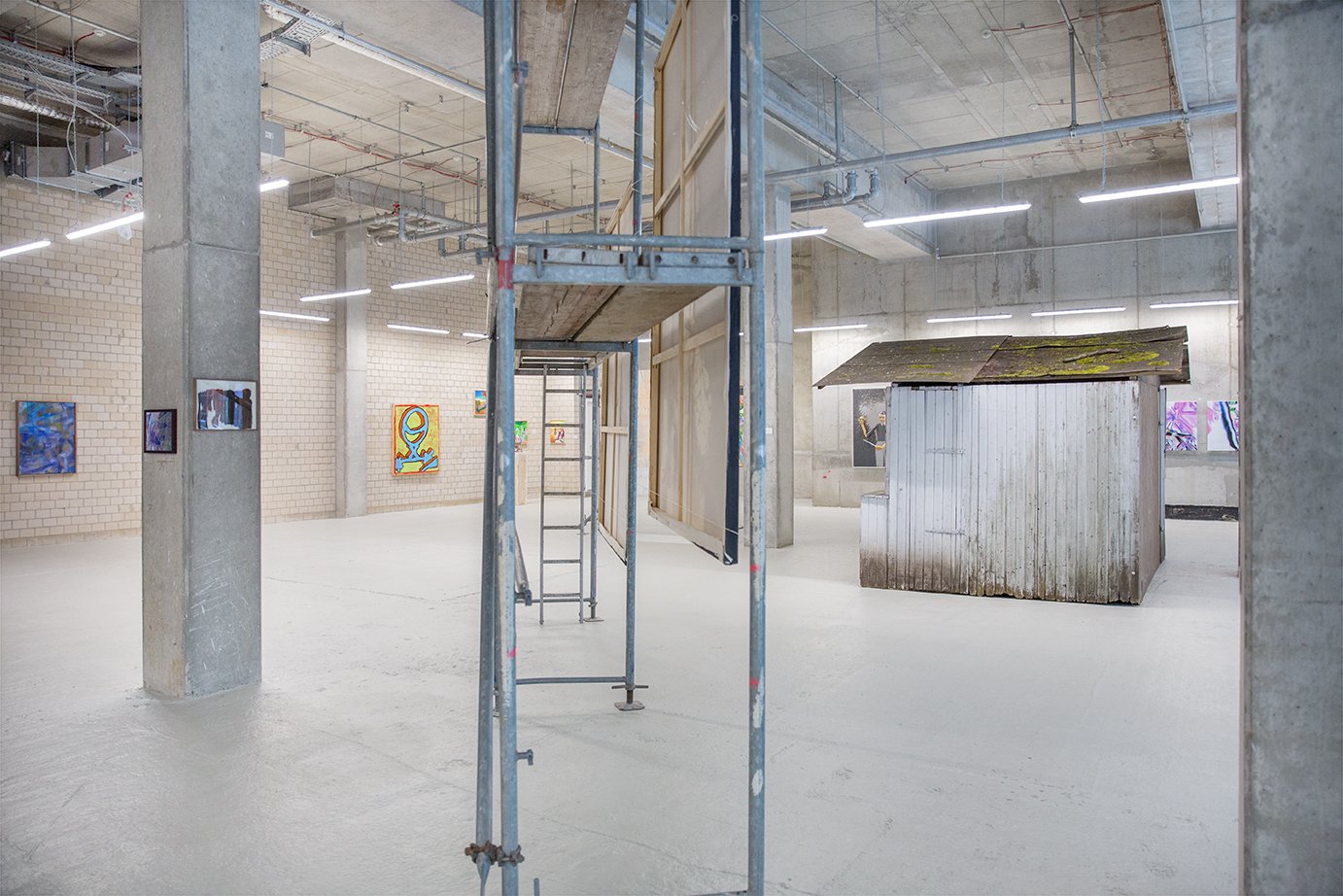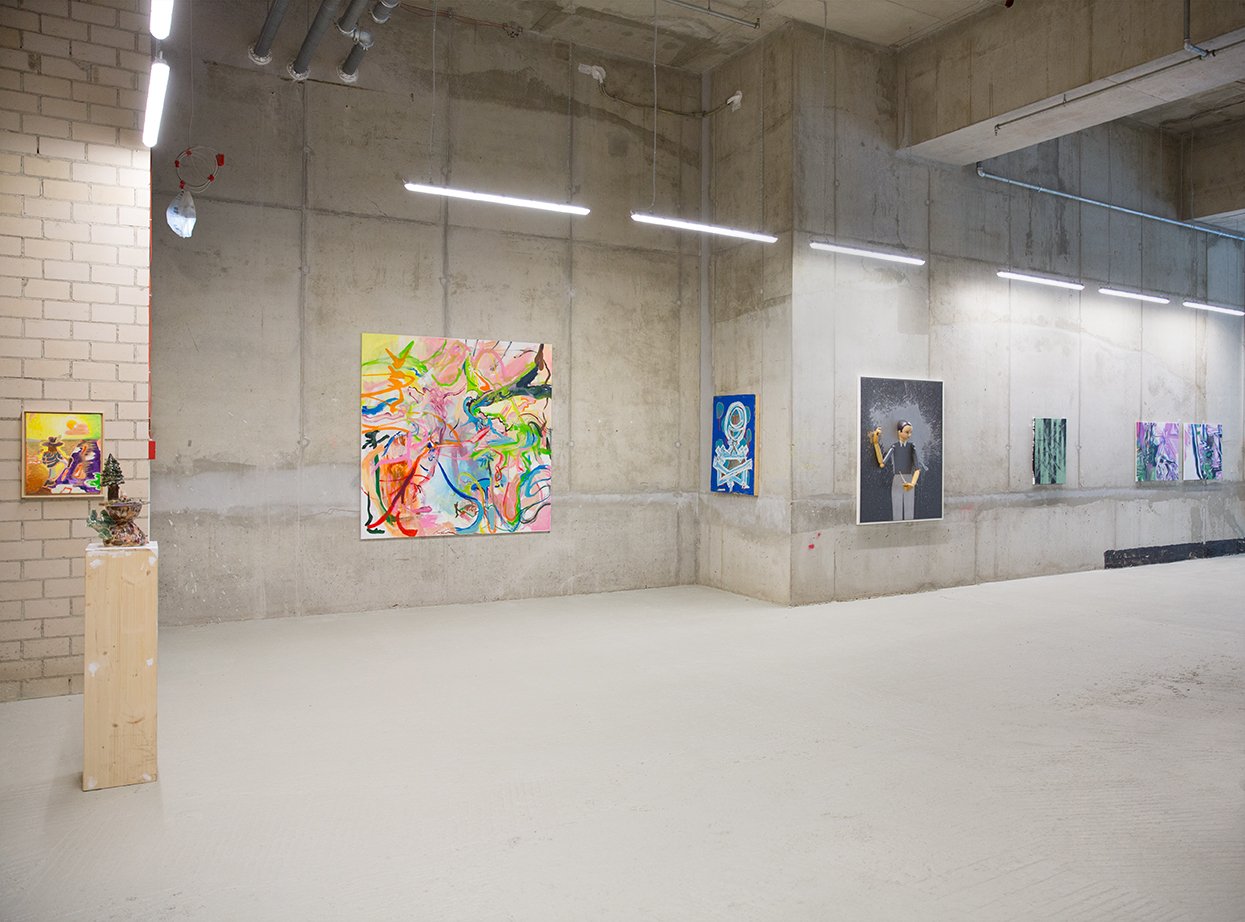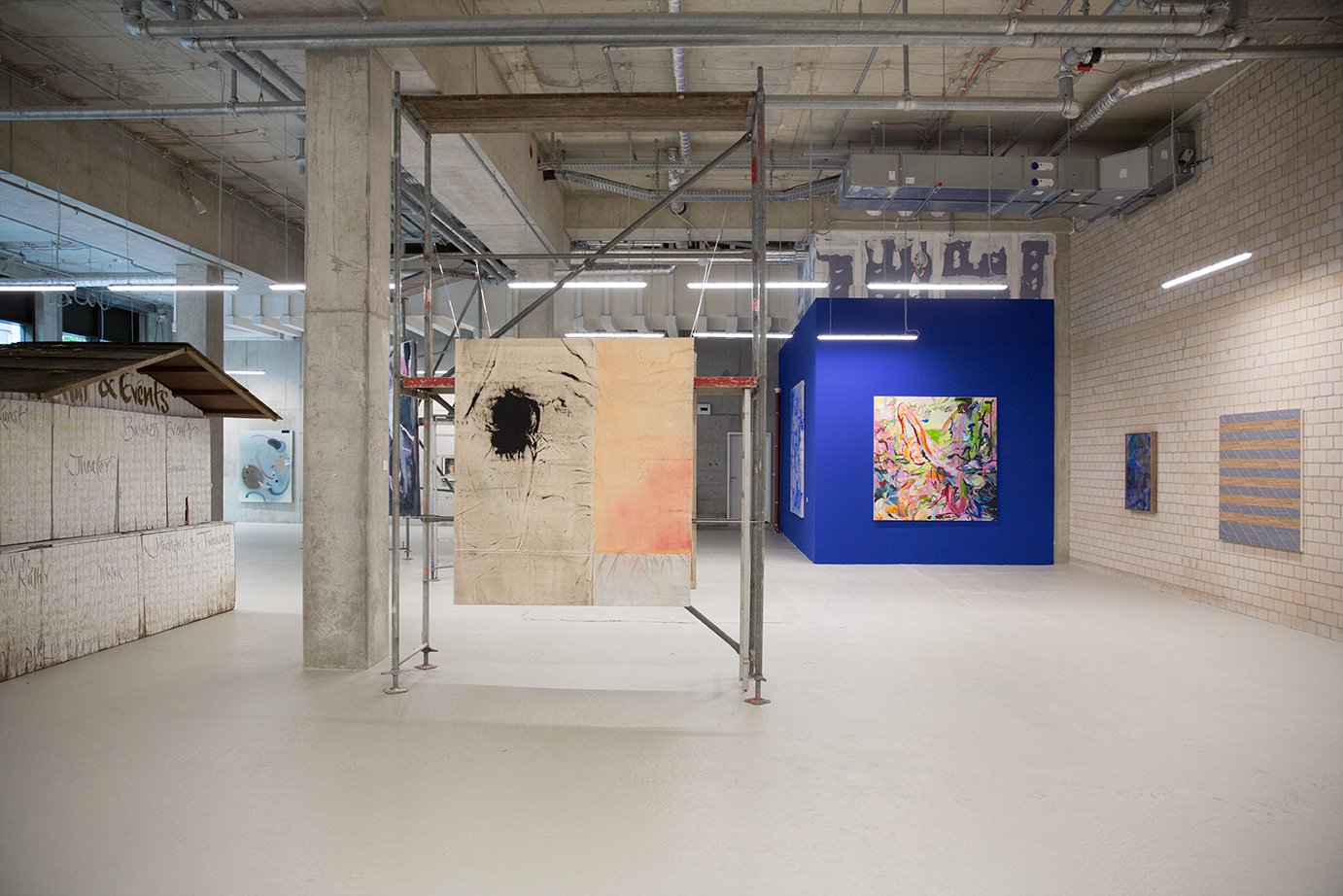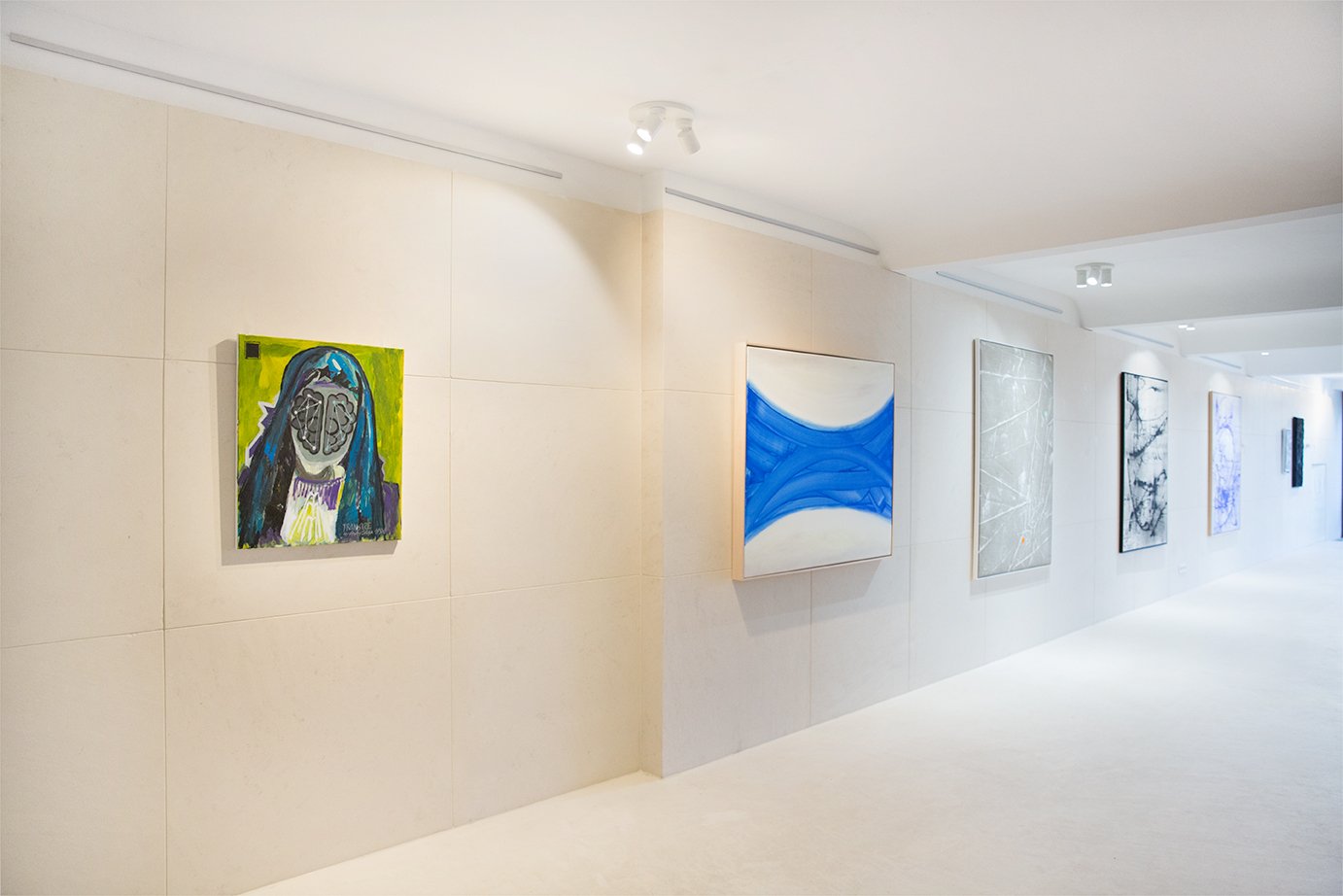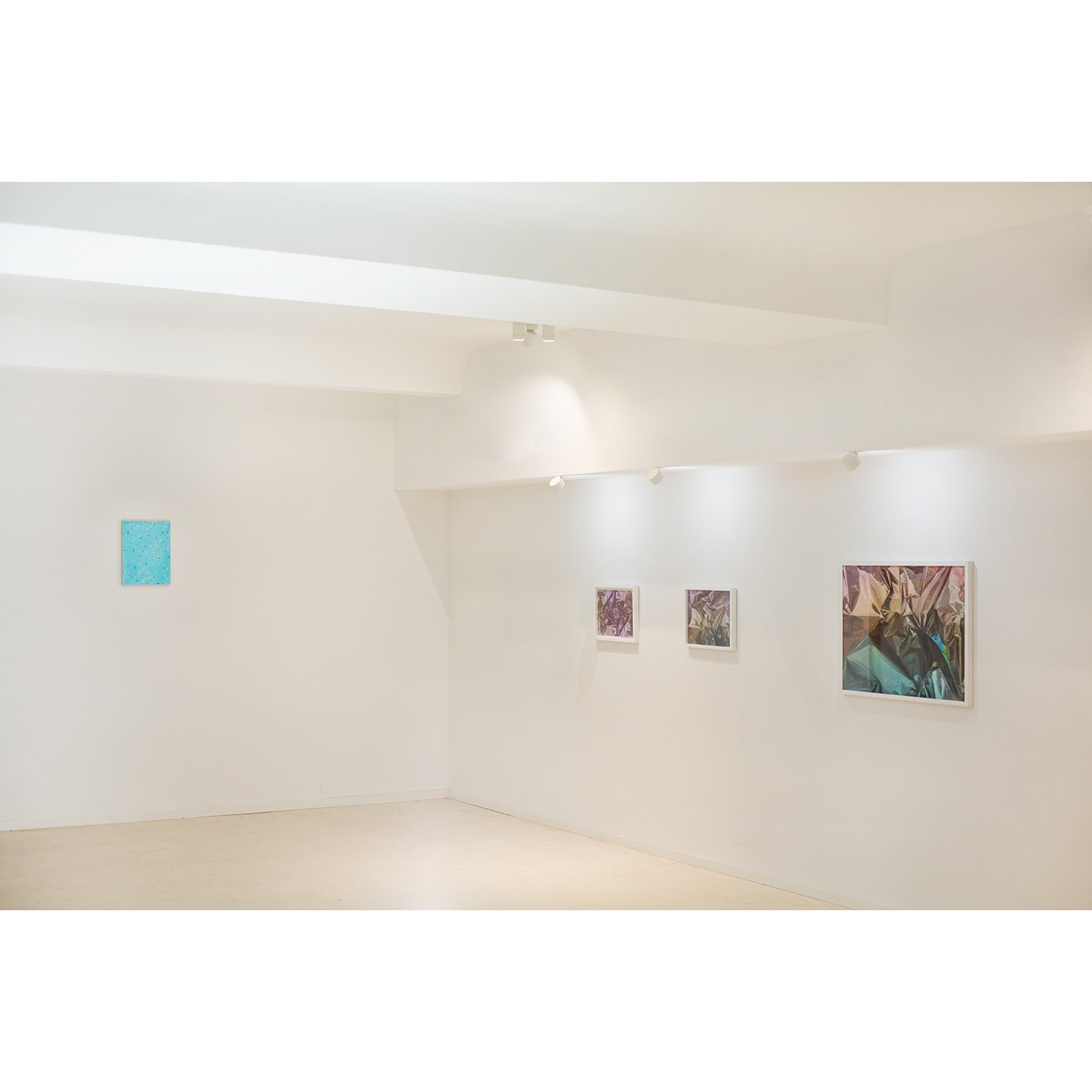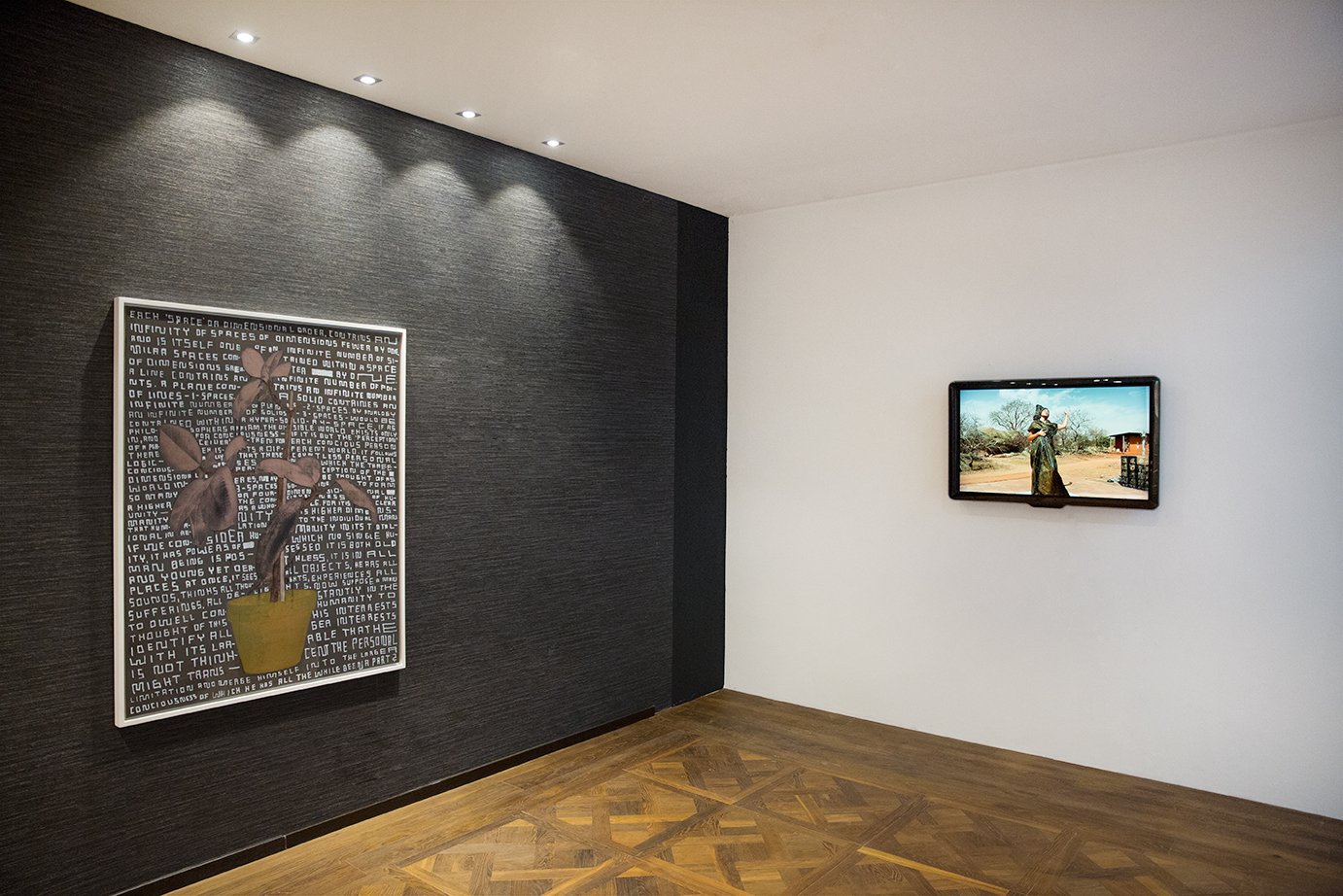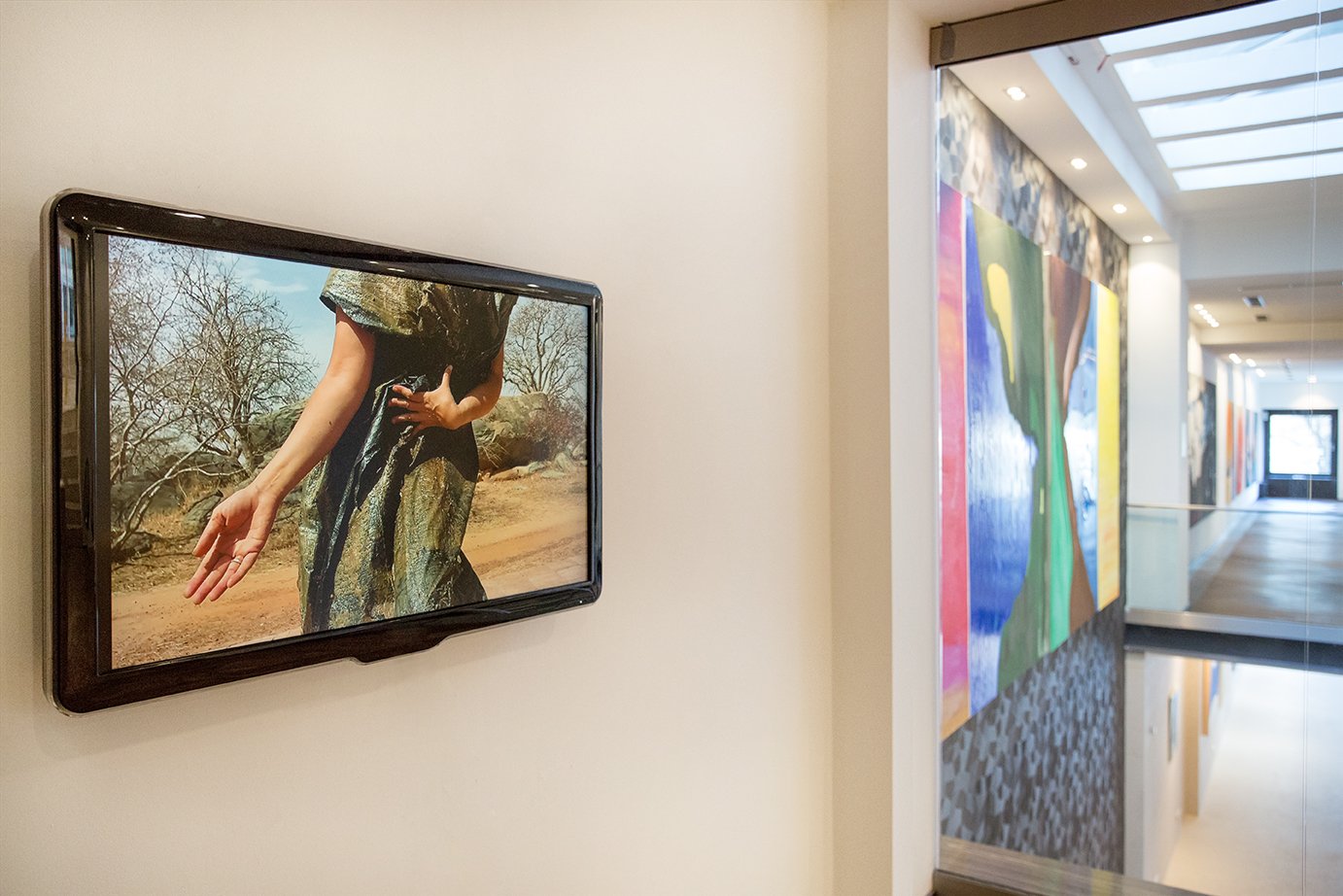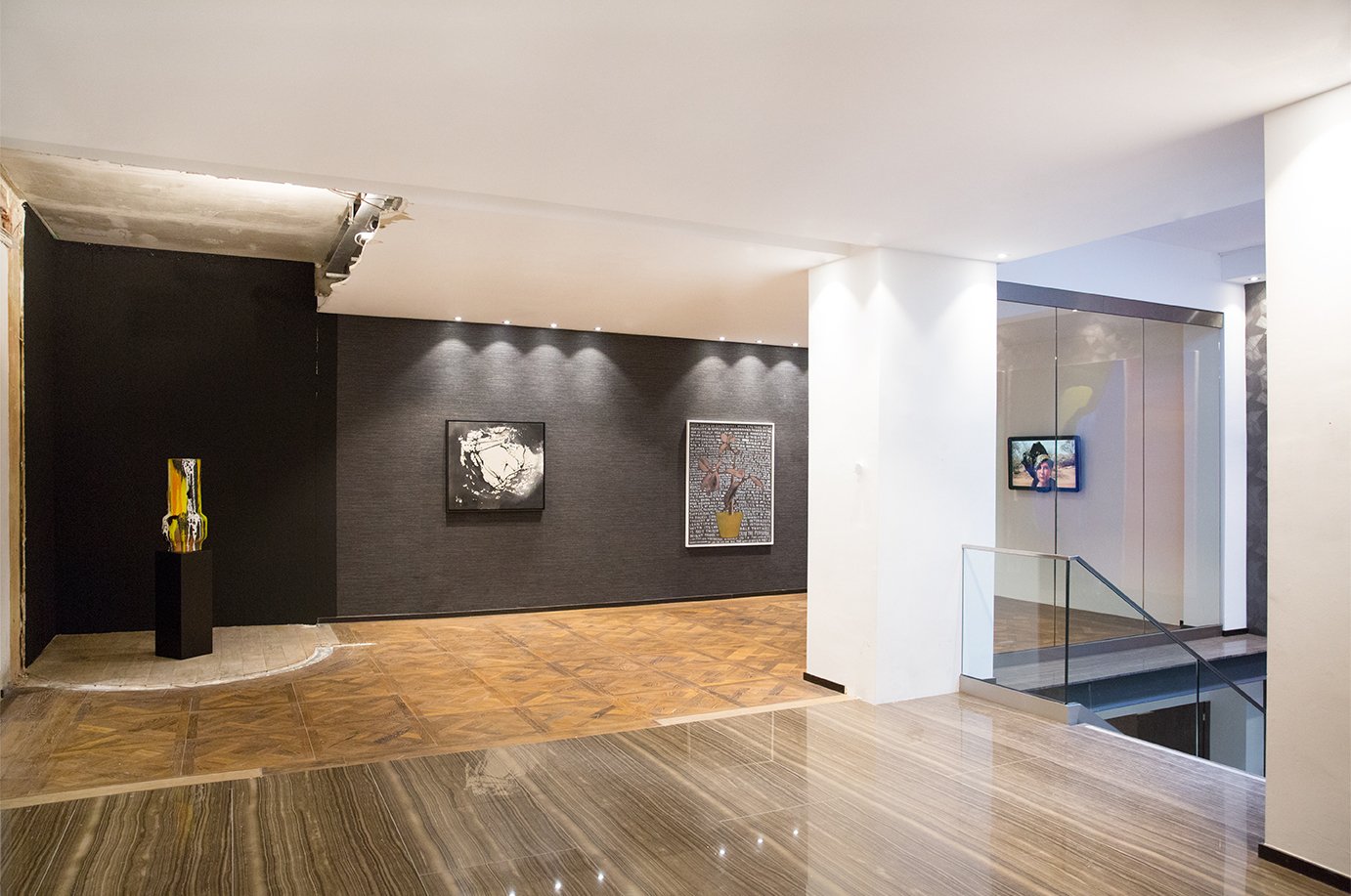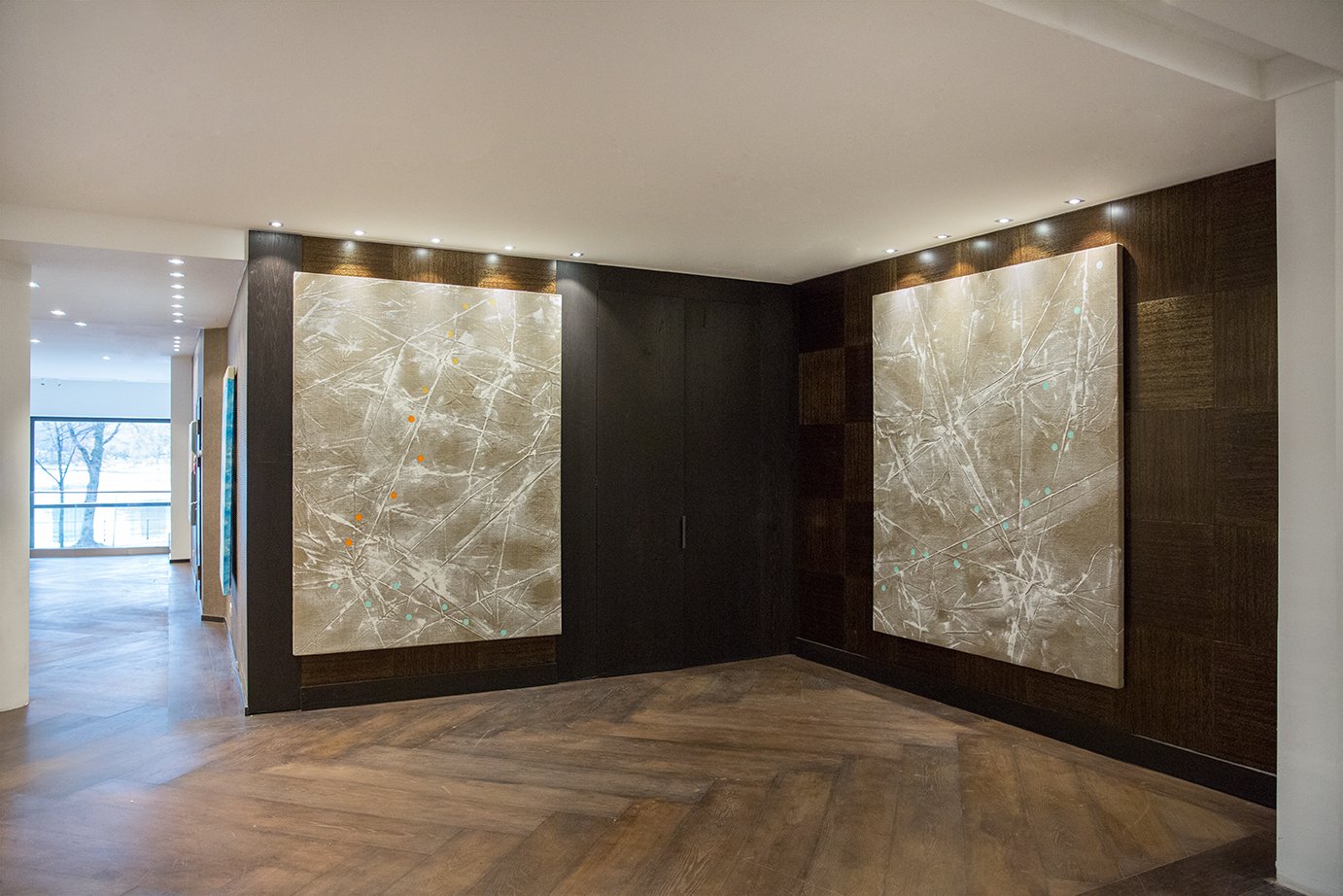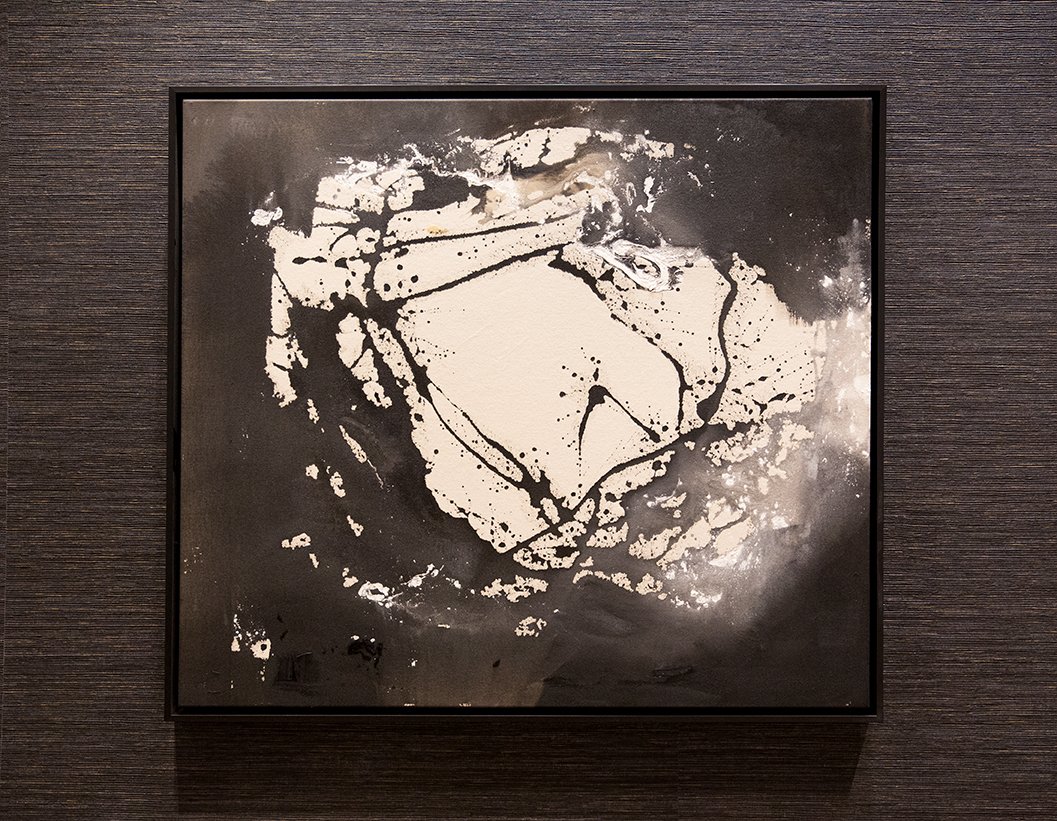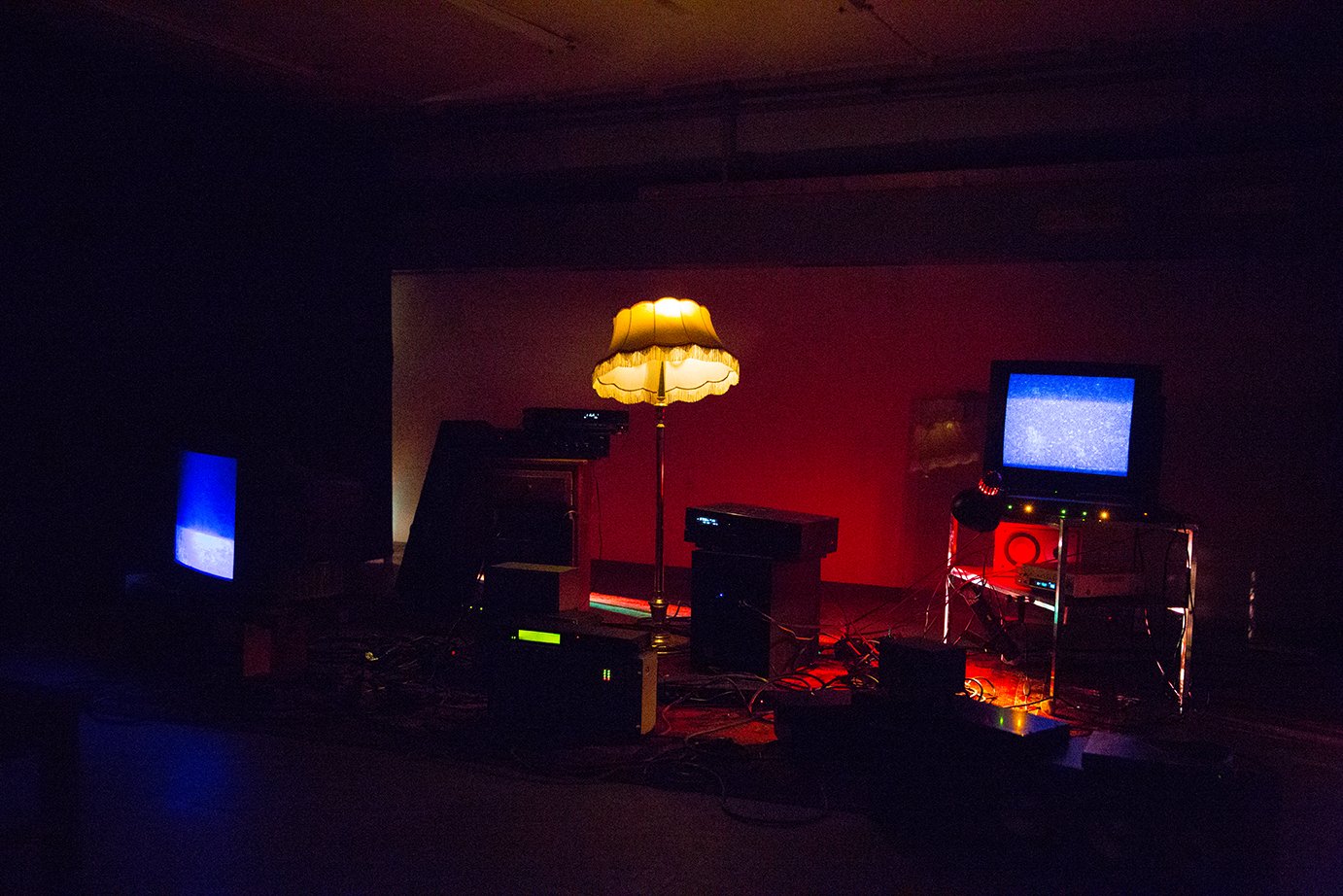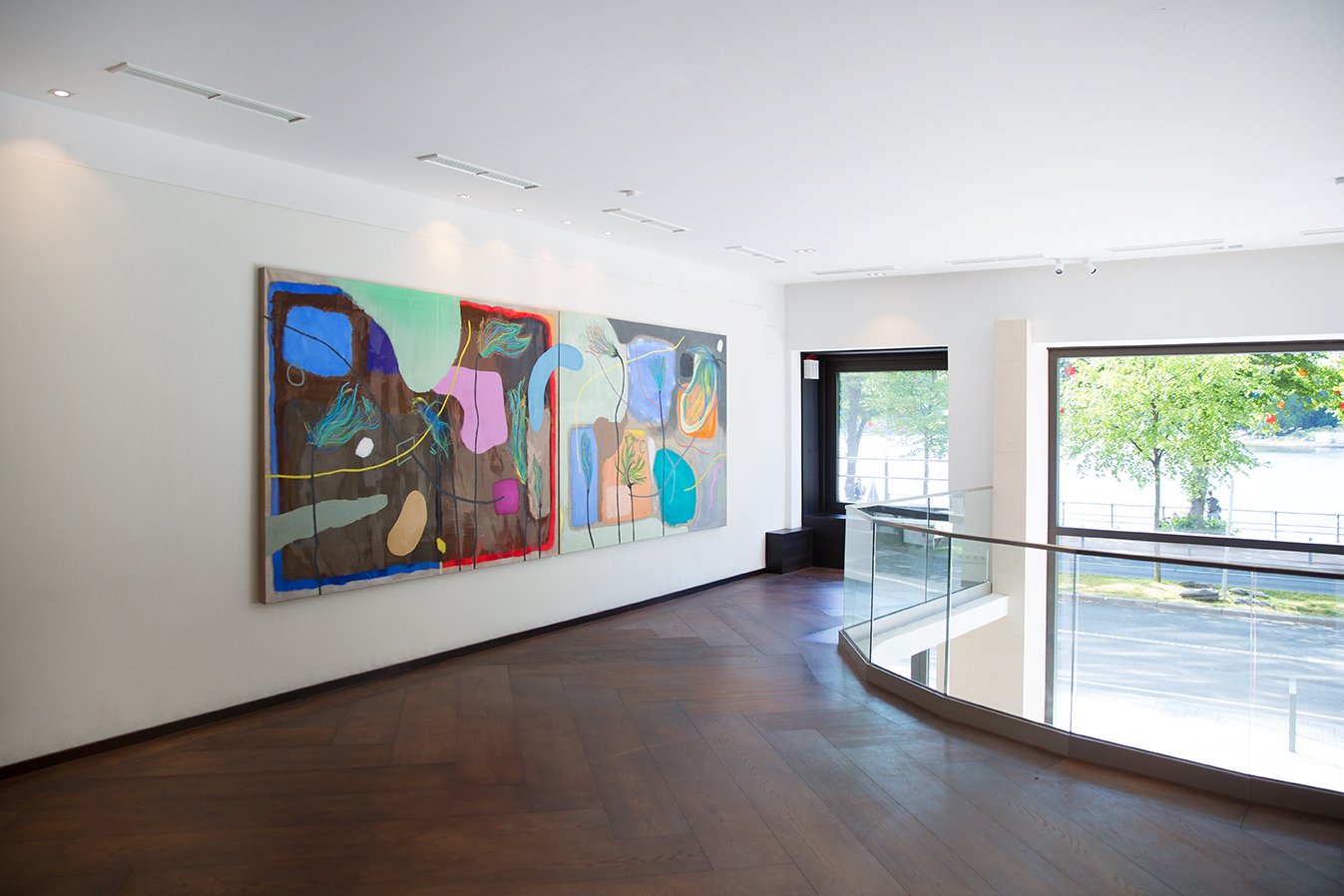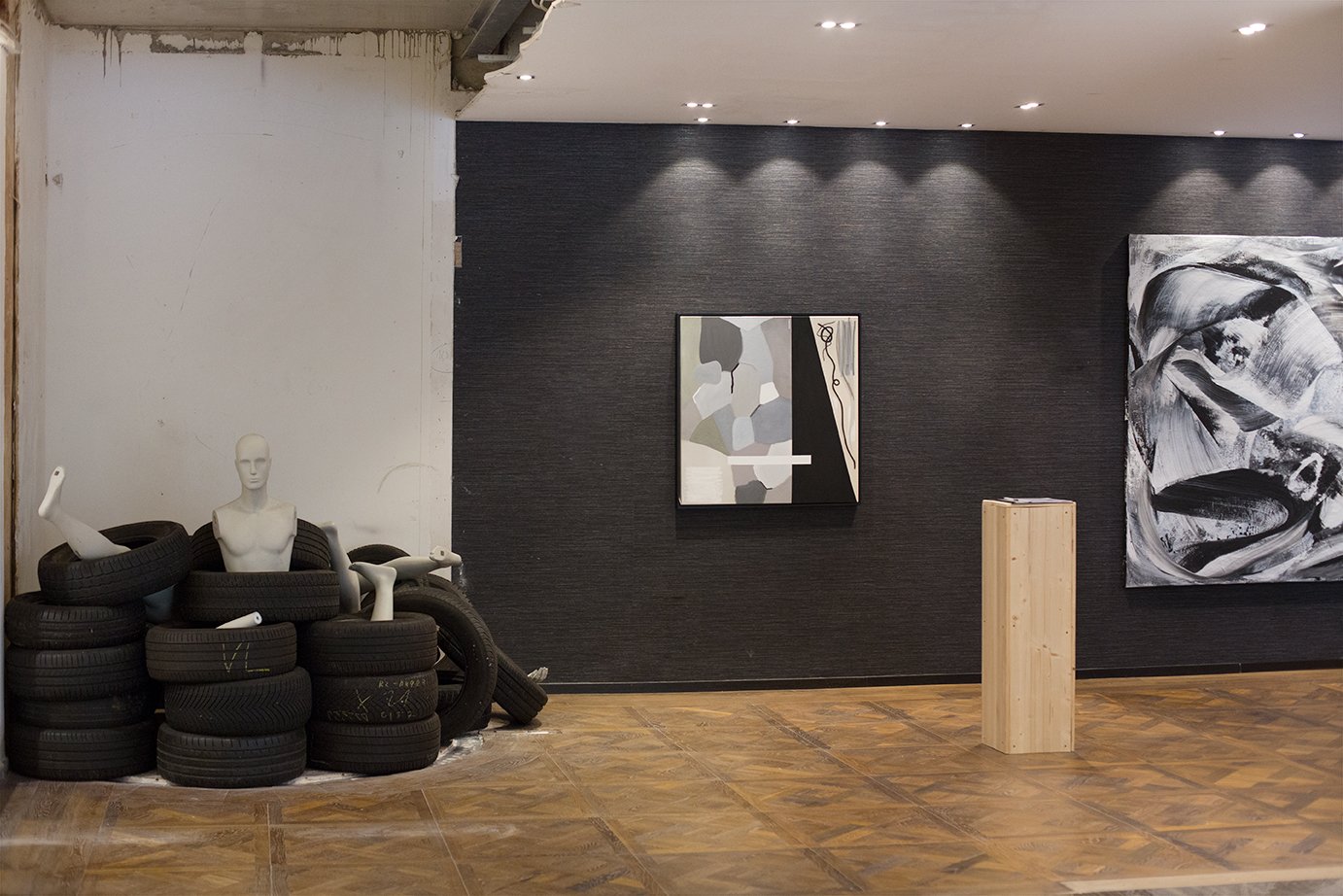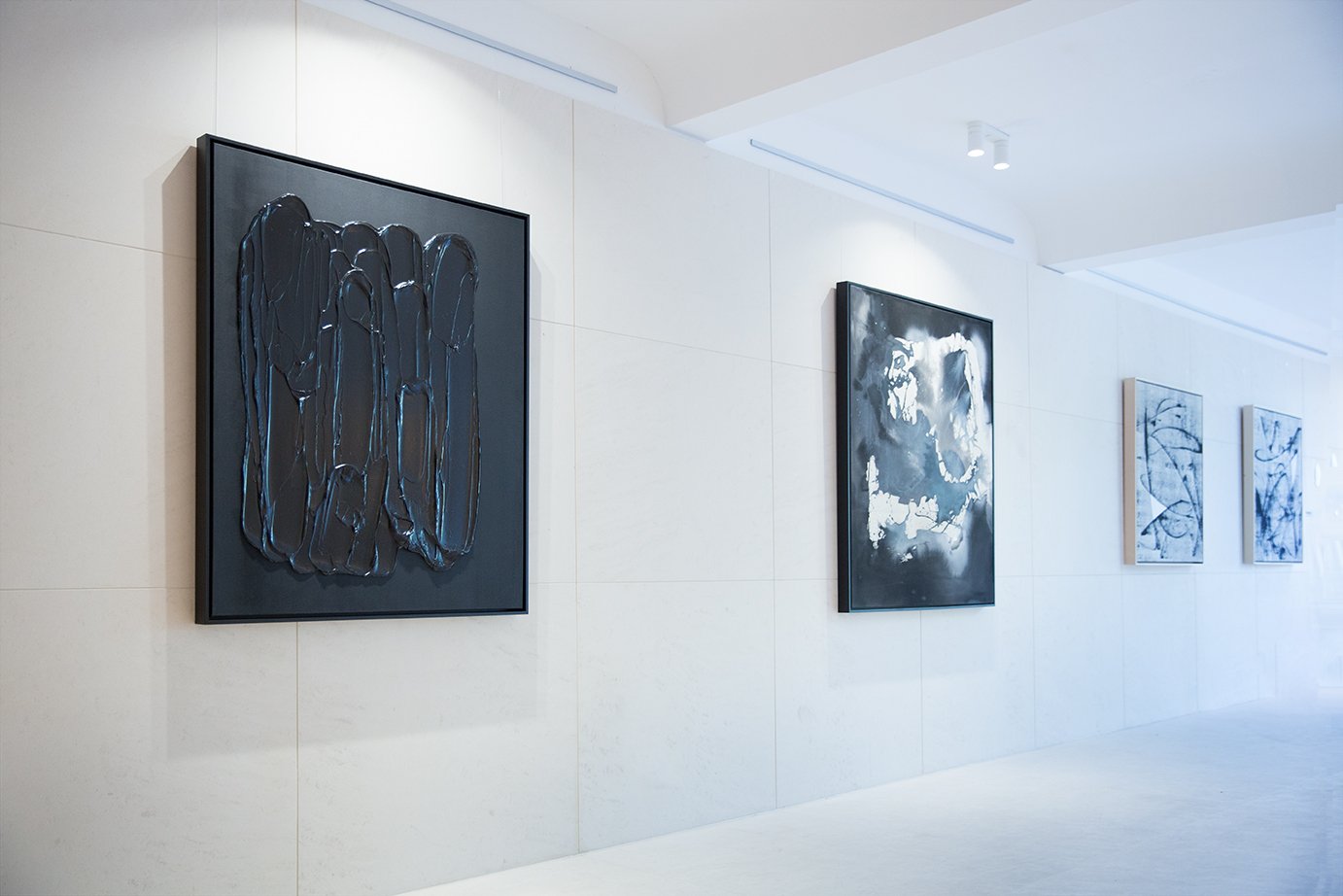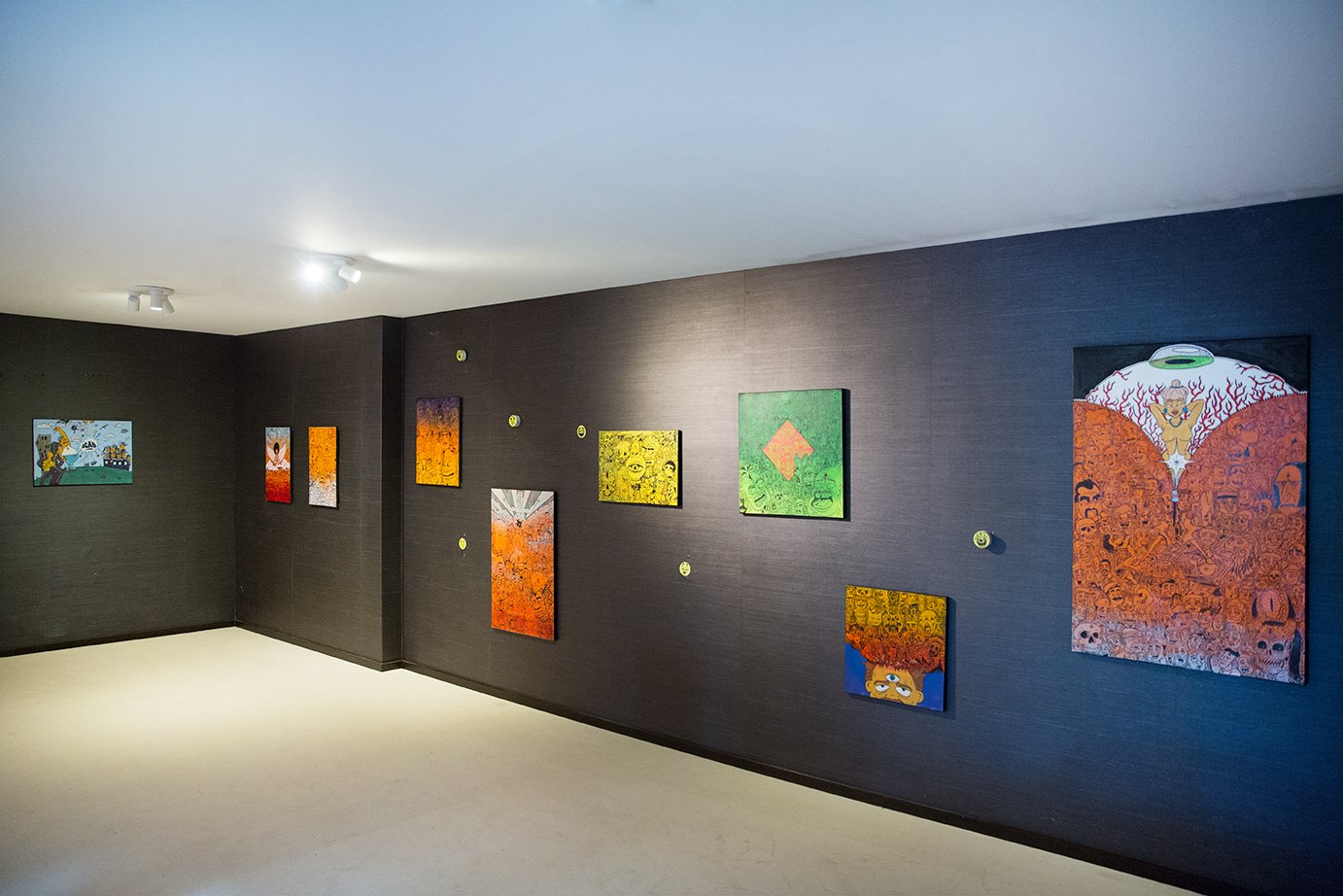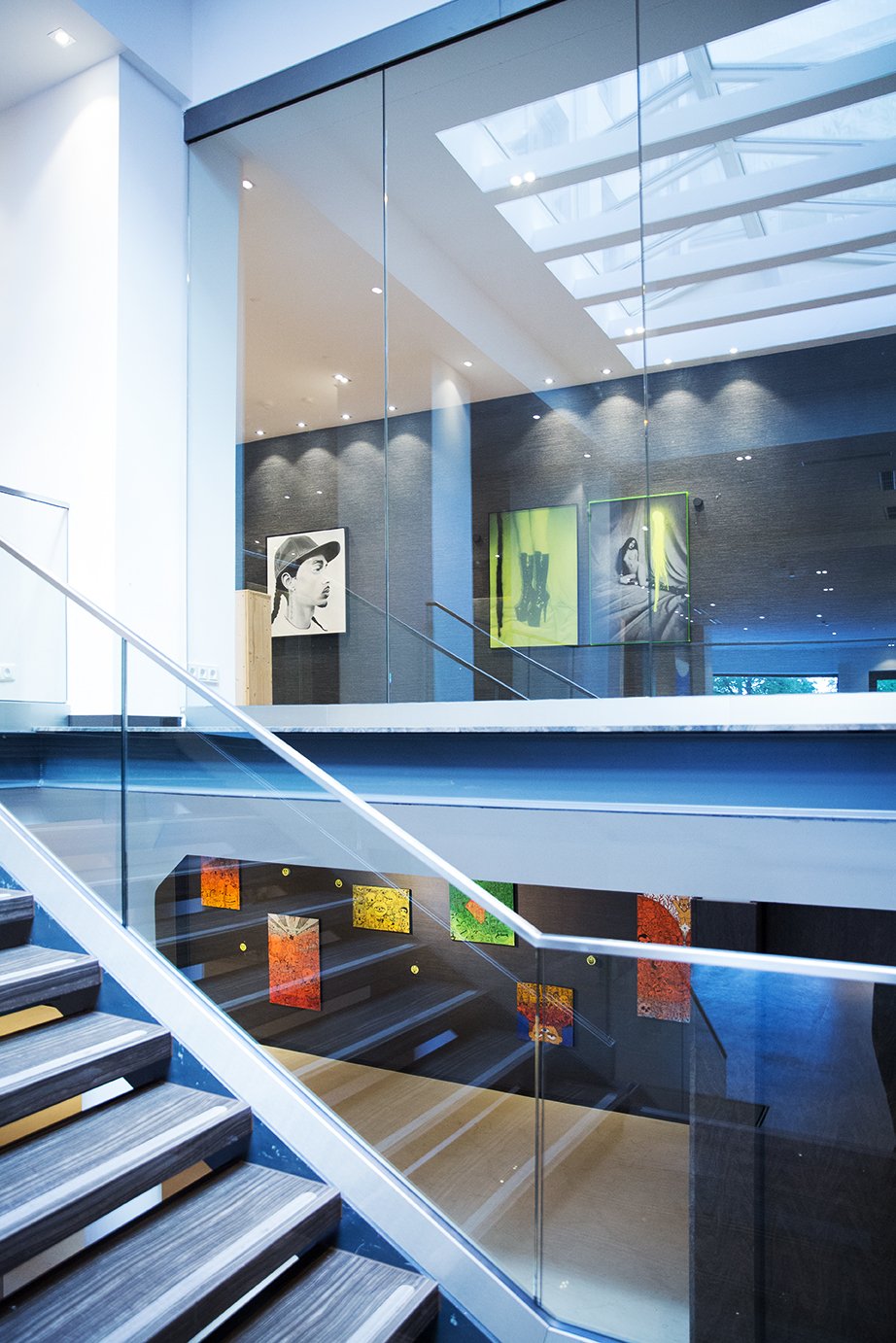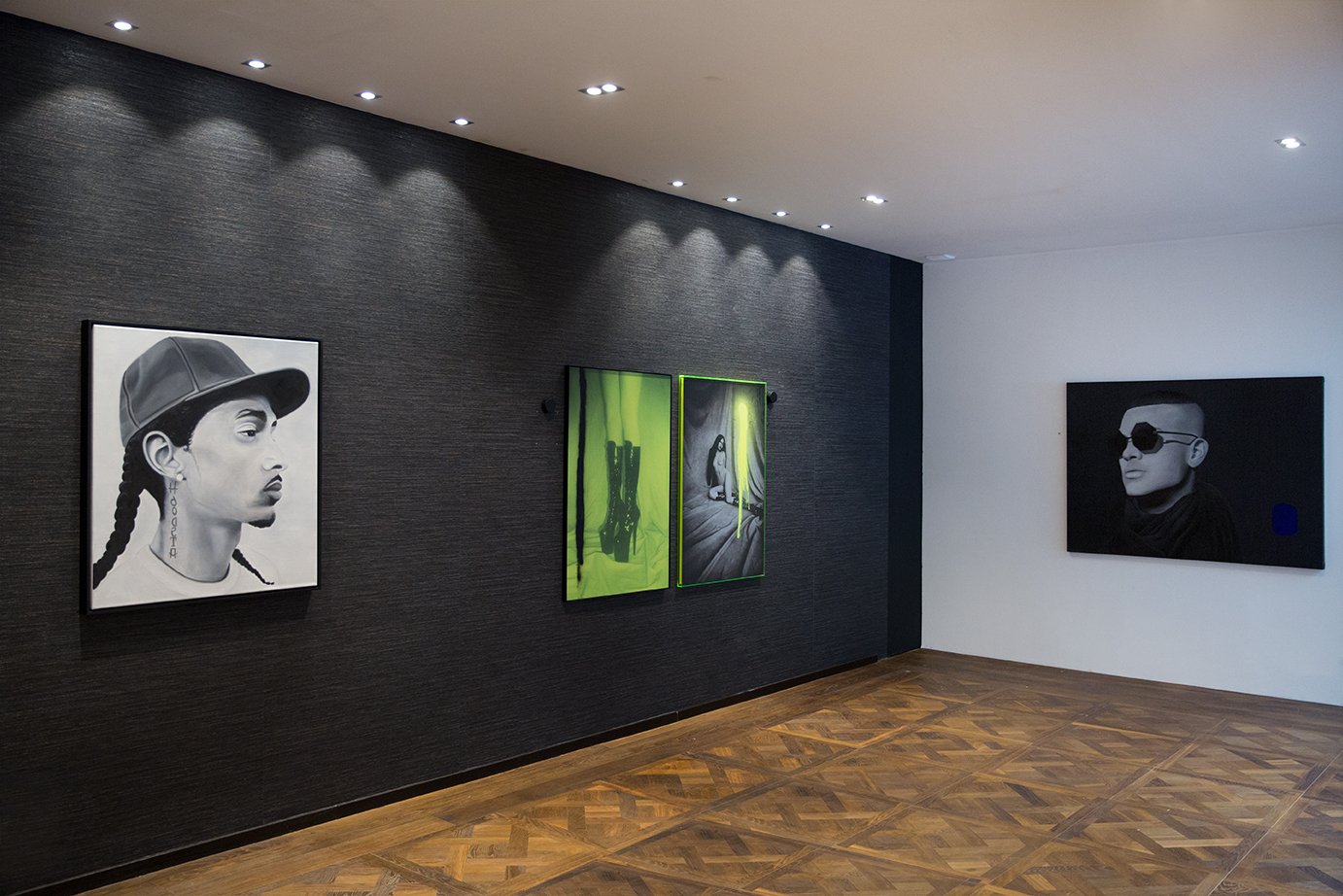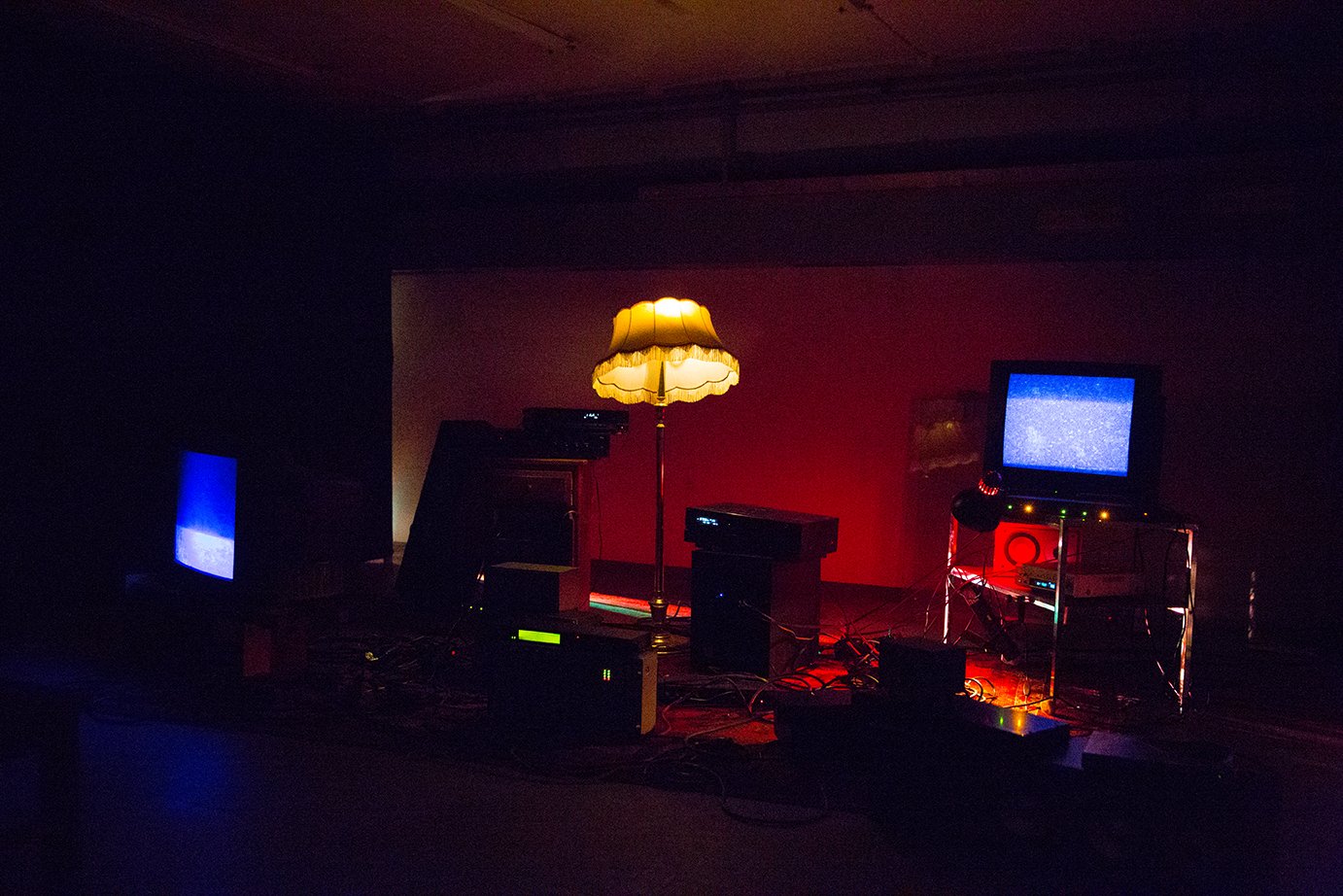THE SPACE //
presents
R E S O N A N C E
works and creative productions by
ANNA BOCHKOVA JULIAN KERKHOFF THOMAS SCHEIBITZ CHRISTINE BREY INNA LEVINSON THE SCHMIDT STEFAN WIENS SARICE BRUDET SHINOH NAM SIMON HEHEMANN HELEN HU JULIA NORDHOLZ ROBIN RHODE
21.08. – 14.12.2025
The exhibition „R E S O N A N C E“ brings together the work and creative productions of 13 international contemporary artists, presenting a diverse range of positions with a multi-layered subject matter. The exhibition explores how their artistic practices and research engage with cultural and social complexities in a global context to create a space for dialogue, raising questions about complex frequencies and power dynamics that shape our human worlds and surroundings.
TO RESONATE IS TO RELATE...,
TO REVERBERATE IS TO REMEMBER, REFORM, REIMAGINE AND RECLAIM.
In a time marked and fractured by dissonance - social, cultural, political, ecological and spiritual - the concept of RESONANCE offers a counter-narrative.
How can art open space for RESONANCE in a world overwhelmed by noise? How can creative practices and research foster dialogue, mindful engagement and peace, not as passive withdrawal, but as an active, resonant force for coexistence and repair?
Artistic practice is itself a resonant act. It begins not with the need to represent, but with the impulse to respond - to time, space, silence, and the trembling presence of others. To make art is to enter into a rhythm, a call and response between material and meaning, memory and moment. The studio, the street, the landscape, and the archive are not neutral sites but fields of vibration where the artist listens and intervenes. RESONANCE in practice means staying with instability, attuning to the unspoken, allowing ambiguity to shape form. It is not about illustrating a concept, but about inhabiting relation-feeling one’s way through the unknown, echoing back what is heard, absorbed, and transformed. In this way, artistic creation becomes not a solitary act, but a relational gesture - a means of entering the world differently and inviting others into that difference.
Overwhelmed by acceleration, fragmentation, displacement and ecological imbalance, RESONANCE emerges as both a curatorial gesture and a call to recalibrate how we perceive, feel, and relate.
An aesthetic and philosophical space for reorientation, it invites us to consider the echoing threads that connect humanity and cultural multiplicity. Rather than seeking control or mastery, the exhibition foregrounds a mode of resonant being - a condition in which humans engage with the world not as detached subjects, but as vibrating participants in a shared field of meaning, affect, and becoming.
Drawing inspiration from German sociologist and political scientist Hartmut Rosa, RESONANCE is understood as a mode of being in which the self and the world enter into a responsive, dynamic relationship. Unlike control or domination, RESONANCE arises from openness: a call and response between individuals, communities, nature, and the cosmos. In this sense, in a time when acceleration replaces reflection, and disconnection becomes default, RESONANCE is a political, ethical, and aesthetic act to transform. It is a refusal of indifference. It is the capacity to be affected, and to respond - vulnerably, attentively, and with care. A sociological and philosophical response to the silent alienation produced by modernity’s systems of efficiency, capitalism, and relentless pace.
For Rosa, RESONANCE is not harmony or sameness, but the capacity for mutual transformation in response to contact: to be touched, and to respond. This dynamic, which refuses flattening or instrumentalization, becomes the guiding rhythm of the exhibition. It proposes artworks as sites of vibratory relationality - moments in which viewers and works enter an unpredictable, affective dialogue.
While Rosa’s RESONANCE emphasizes relational reciprocity - being moved by the world and responding to it – Gaston Bachelard’s idea of REVERBERATION describes the internal, poetic consequence of that resonance:
Rosa asks: How does the world respond to our voice?
Bachelard asks: How does that response live on in us? What echoes remain?
It is here that French philosopher Gaston Bachelard’s (author of the Poetics of Space and Water and Dreams: An Essay on the Imagination of Matter) notion of REVERBERATION offers its poetic force. If RESONANCE is the world vibrating with us, REVERBERATION is what lingers inside, the echo that deepens, softens, and regenerates our psychic being. Bachelard reminds us that true transformation begins not at the surface of interaction but in the slow unfolding of inner space - in dream, memory, and elemental sensation.
“ The reverberation invites us to inhabit the image... to linger within its echo.”
In her book The Complex Answer, which contains a selection of texts aiming to enforce the idea that art is an intelligence that is influenced by ideas and the emergence of new notions but also thinking through experience, Spanish curator, art historian and writer Chus Martínez writes of art not as a solution in the traditional sense, but as a method of response that embraces complexity, ambiguity, and transformation. For Martínez, artistic research is not a tool for certainty, but a practice of becoming. RESONANCE, in this context, is not harmony but relation: the trembling contact between bodies, ideas, and realities. Following Martínez’s insistence on the poetic nature of thinking, RESONANCE does not ask for answers but cultivates a condition of response-ability. This is art's ethical and imaginative labour - to create zones where knowledge is felt rather than fixed, where relation is practiced rather than theorized. In such a space, the
act of RESONANCE becomes both an aesthetic and a political gesture: one that resists the noise of immediacy and dares to sustain a slow, resonant attention.
The artists in this exhibition move beyond representation to offer gestures of encounter. Some works vibrate with ecological sensitivity, while others dwell on diasporic memory, fractured identities, and the fragile architectures of belonging. Here,RESONANCE is not an echo of sameness but a chorus of difference, an invitation to engage with what cannot be easily contained or understood.
In this context, the ideas of Nicolas Bourriaud bring a critical artistic and curatorial dimension to RESONANCE. In Relational Aesthetics, Bourriaud proposes that art is not an object, but a meeting point, a platform for human encounters, a space of shared experience that fosters new ways of being together. Art becomes a micro-utopia - temporary, fragile, but real - where human relations are formed, questioned, and reshaped. In his book Inclusions, he extends this idea to address the complexities of identity and belonging in a globalized world. For Bourriaud, RESONANCE is found in acts of inclusion that resist standardization and affirm the heterogeneity of voices, cultures, and forms. Here, art is no longer an autonomous object but a form of inter-human, inter-species, and inter-world encounter. In Bourriaud’s terms, RESONANCE is a territory where the artwork acts as a portal - of shared experience, a threshold that hosts social energy, complicity, resistance, and repair.
In the spirit of Edouard Glissant’s Poetics of Relation, this exhibition resists the flattening of identity or the imposition of a singular truth and refuses to flatten history into a single narrative. Instead, it cultivates relations through opacity, difference, and multiplicity. Glissant writes, “To consent not to be a single being...” - an idea where understanding is not immediate or linear but born of entangled perception and affective attunement. Furthermore, opacity is not felt and seen as an obstacle to understanding, but as the condition of true relation in a plural world. Some of the works in the exhibition honour the unknowable, the in-between, the untranslatable and according to Glissant’s archipelagic thinking float in proximity- related not by fixed meanings but by the currents of relation, intuition, and shared nuanced subject matter and individual perspectives.
Drawing from Gilles Deleuze’s philosophy, in The Fold: Leibniz and the Baroque, the French philosopher explores a concept that moves beyond simple surface manipulation - it becomes a metaphysical structure, a way of thinking and inhabiting the world. The fold, for Deleuze, is not merely a physical gesture but a philosophical and ontological condition - a world composed of infinite folds, layers that contain inner spaces of becoming and transformation. Memory emerges as a resonant layer: a fold of histories and affect. It bends time, thought, material, and space into continuous transitions. Inspired by Leibniz’s Monadology, Deleuze envisions the world not as a flat plane of discrete things but as an intricate topography of relations where the inside continuously folds into the outside. The fold is a response to rigidity. It refuses linearity and finality, instead proposing multiplicity, depth, and interiority. In this sense, the fold becomes a symbol of subjectivity, where the self is never singular but an accumulation of inflections, resonances, and becomings. The subject is not a point but a series of internal reverberations - like a musical tone folding into another, generating chords of identity, memory, and affect. The fold becomes a relational principle and emerges as a gentle but radical form of resistance. It does not shout; it resonates. It does not impose; it listens. It does not resolve; it holds multiplicities together.
The exhibition „R E S O N A N C E“ would like to emphasize the concepts of RESONANCE and REVERBERATION not as a mere metaphor, but as a living principle, a relational force capable of nurturing peace, mutual responsiveness and restoring a sense of shared humanity. Humanity is not an essence, but a practice: the ongoing effort to remain in relation, in rhythm, even in the face of dissonance.
Sources:
Gaston Bachelard: The Poetics of Space
Gaston Bachelard: Water and Dreams: An Essay on the Imagination of Matter
Nicolas Bourriaud: Relational Aesthetics
Nicolas Bourriaud: Inclusions: Aesthetics of the Capitalocene
Gilles Deleuze: The Fold: Leibniz and the Baroque
Édouard Glissant: Poetics of Relation
Édouard Glissant: Kultur & Identität. Ansätze zu einer Poetik der Vielfalt
Édouard Glissant: Philosophie der Weltbeziehung. Poesie der Weite
Édouard Glissant & Hans Ulrich Obrist: The Archipelago
Axel Honneth: The Struggle for Recognition
Chus Martinez: The Complex Answer Hartmut Rosa: Resonance: A Sociology of Our Relationship to the
World Charles Taylor: Multiculturalism and the politics of recognition
THE SPACE // February - May 2025
presents
F R A G M E N T S A N D R E L A T I O N
works and creative productions by
JENNIFER BANNERT, SARICE BRUDET, CHIAU SYUAN CHAI, JOHANNES DANIEL, TRONJE THOLE VAN ELLEN, KARIN ELMERS, NICOLAS FISCHER, GREGOR HILDEBRANDT, DANIEL HÖRL, ARIANE HOSEMANN, FLORIAN HUBER, SIMONE KARL, RUDI KARGUS, JAEWON KIM, NADINE KLES, KAI LIETZKE, KENNETH LIN, CHRISTINE LIPSKI, ELISA MANIG, EDGARDO NAVARRO, RAKI NIKAHETIYA, ROBIN RHODE, JAKOB SCHEIDT, ANNA MARIA SCHMIDT, GEMMA SOLÀ SOTOS, THOMAS ZIPP, MARTHA ZONOUZI
27.02. – 28.05.2025
The exhibition „F R A G M E N T S A N D R E L A T I O N“ brings together the work and creative productions of 27 contemporary artists, presenting a diverse range of positions on themes of coexistence, cultural complexities, and the art of reconnection and bridging gaps.
Art has always been a space where fragments of history, memory, and identity are gathered, reconstructed, and reimagined. Fragments and Relation is an exhibition exploring how contemporary artistic practices engage with the complexities of coexistence, social structures, diversity, cultural richness and trauma. Through artistic research and practice, the artists in this exhibition serve as portals to unifying ideas and streams of thought - creating new and different forms of communication that transcend traditional boundaries, mindsets and ways of thinking. In a world marked by dissonance and fragmentation, this exhibition proposes that fragments are not merely remnants of something broken but pieces of a larger construct, elements that can be deconstructed, rebuilt, and reorganized into something new.
Throughout history, poets and philosophers have engaged deeply with themes of fragmentation and relation. Paul Celan’s poetry embodies the fractured nature of language and memory. At the same time, Walter Benjamin’s concept of the “constellation” in The Arcades Project offers a way to see history not as linear but as a collage of interwoven fragments. In „The Poetics of Space“, Gaston Bachelard argues that physical or mental space is shaped by memory and imagination, suggesting that artistic practice can act as a bridge between interior and exterior worlds. Memory fragments reveal the mental spaces humans inhabit, where past experiences reverberate and inform current realities.
The exhibition further engages with Chus Martínez’s essay „Clandestine Happiness: What Do We Mean by Artistic Research?“ in her book The Complex Answer, Martínez proposes that artistic research is an essential space of osmosis, a process that dissolves rigid separations between disciplines, between knowledge systems, and between experience and interpretation. She argues that the future of discovery lies in generating new communicative forms of meaning, a principle that underpins the relational and experimental approaches of the artists in this exhibition. Artistic research understands that artistic practice creates, catalyzes and generates concepts because of intuition and that the challenge lies in their formalization.
Drawing from Édouard Glissant’s „Poetics of Relation“, the exhibition embraces the idea that identity is not a fixed entity but an ever-evolving relationship between the self and the other. Glissant’s concept of “opacity” resists simplistic narratives, affirming that cultural trauma and difference should not be reduced to something easily understood or assimilated. Instead, these fragments of history, language, and memory are part of a larger living network that acknowledges past wounds while offering a vision of regeneration. His call for “archipelagic thinking” explores moving beyond singular perspectives towards a more fluid, interconnected understanding of culture and identity.
“All cultures need Relation. They do not need the universal. The universal is above. The universal tries to bring about order and clarity and the cultures must try to bring about Relation between them. We do not need the universal. The problem is that once the West is no longer dominating the world, we will no longerneed narrative either. I will not need a novel to understand culture. It will be able to come via prayer, a poem, a sing, an evocation, a silence… But it will always come via a poem.” Édouard Glissant.
Similarly, Kwame Anthony Appiah’s „The Ethics of Identity“ challenges rigid cultural categories, advocating for a more dynamic and pluralistic approach to selfhood. He argues that identities are shaped by complex influences, histories, and choices. This perspective resonates with the exhibition’s exploration of fragments as carriers of both past legacies and future possibilities.
As Nicolas Bourriaud argues in his books „Relational Aesthetics“ and „Inclusion“, art has the power to generate social interactions and forge new modes of togetherness. In his vision, artistic practice is not just about objects but about encounters, about forming relations that question and reconfigure our social fabric. In this sense, art becomes an open space where ideas, identities, and histories converge in an ongoing negotiation and renewal process.
This notion of reconstruction and transformation finds poetic resonance in the Japanese practice of „kintsugi“, where broken ceramics are mended with gold, emphasizing rather than concealing the fractures. Kintsugi is part of a philosophy of embracing human flaws and life's fragility. The “kintsugi” technique is an extension of the Japanese philosophy of „wabi-sabi“, which sees beauty in the incomplete and value simplicity. When applied to cultures, this philosophy suggests that the scars of history, the traumas and disruptions can be embraced as sites of beauty, strength, and new beginnings. Instead of erasing the past, the exhibition posits that by acknowledging and integrating the awareness of fractures, human beings can forge new narratives that honour complexity rather than erase it.
Fragments are not isolated remnants but rather pieces within a greater whole. Relational thinking suggests that understanding emerges through connecting individuals, ideas, and histories. The belief in an evolving, organic world mirrors the artistic impulse to reconstruct meaning from disparate elements, reinforcing the idea that fragmentation is not an end but a process of becoming. The ability to reflect on cultural complexity highlights the interplay between memory, displacement, and reinvention. Fragments of identity, history, or artistic form do not merely testify to rupture but serve as active agents in shaping new narratives.
The reverberations of history, artistic research, and experience echo throughout these works in thisexhibition. However, rather than being trapped in the past, the artists engage with fragments as tools of regeneration. Through their practices, they seek to open new channels of communication, form unexpected connections, and offer visions of a future shaped not by erasure but by an awareness of embracing complexity.
This exhibition is ultimately about possibilities. It envisions art as a field where the status quo is questioned and where social and moral structures are rearranged and rethought. It is about artistic practice as a space of dialogue, where diverse fragments come together not to be assimilated into a single vision but to exist in dynamic, evolving relation. By acknowledging and weaving together these fragments of history, memory, identity, and artistic practice, the exhibition „ F R A G M E N T S A N D R E L A T I O N“ offers a reflection on what it means to exist together, in relation, in a world constantly in flux.
Sources:
Kwame Anthony Appiah: The Ethics of Identity
Walter Benjamin: The Arcades Project
Paul Celan. Mohn und Gedächtnis. Gedichte
Chus Martinez: "Clandestine Happiness: What Do We Mean by Artistic Research?", in: The Complex
Answer
Édouard Glissant: Poetics of Relation
Édouard Glissant: Kultur & Identität. Ansätze zu einer Poetik der Vielfalt
Édouard Glissant: Philosophie der Weltbeziehung. Poesie der Weite
Édouard Glissant & Hans Ulrich Obrist: The Archipelago
Nicolas Bourriaud: Relational Aesthetics
Nicolas Bourriaud: Inclusions: Aesthetics of the Capitalocen
THE SPACE // Sept, Oct, Nov, Dec
presents
D R E A M J O U R N E Y S
works and creative productions by
BIRTE BOSSE, SARICE BRUDET, ZHIVAGO DUNCAN, JANINE EGGERT, NICOLAS FISCHER, PARIS GIACHOUSTIDIS, GREGOR HILDEBRANDT, JIGOO HONG, HENNING KLES, DANIEL LANNES, KAI LIETZKE, ANA SARAIVA, GEMMA SOLÀ SOTOS, TEMORSCHA ZOLTANI, MARTHA ZONOUZI
07.09. – 15.12.2024
The exhibition „D R E A M J O U R N E Y S“ brings together the work and creative productions of 15 contemporary artists presenting a diverse range of positions.
A dream, a journey, a vision to alter the status quo. A desire for change, rearranging, questioning and rethinking social and moral structures. The journey is often as significant as the destination. And a dream, imagination or vision a starting point for a creative endeaver and change.
This exhibition draws inspiration from the movement of Surrealism, the ideas and concepts of Chus Martinez’ “The Complex Answer”, Édouard Glissant’s “Poetics of the Relation” and Nicolas Bourriaud “Planet B – Climate Change and the New Sublime” to explore interconnected themes of identity, culture, the environment and globalization emphasizing the complexities of our ever-evolving and transforming world. In an era marked by rapid change and social upheaval, "Dream Journeys" wants to embark on an exploration of the surreal, contemporary consciousness as well as constructive and gestural abstractions; where the boundaries of reality blur and the subconscious reveals new streams of thought.
The rich tradition of Surrealism in art created a movement that has long sought to question the status quo and dismantle entrenched social structures and stereotypes. Through dreamlike imagery and unexpected juxtapositions, perceptions are challenged, urging to confront the complexities of existence and envision alternative realities.
Surrealist ideas were influenced by the rising popularity of psychoanalysis in the 1920s and 1930s and informed by the ideas of Sigmund Freud. Freud’s theories of the unconscious underpinned Surrealism’s emphasis on the creative possibilities of chance, desire and dream. The word ‘surreal’ is now commonly used as an adjective to describe the unusual or unexpected. Despite the term’s detachment from the original movement, methods and ideas generated in the context of Surrealism have endured and are recognizable in contemporary art practice.
Surrealism is a shifting term and at its core an interrogation. It refers not just to a historical moment but to a dynamic movement in the truest sense. It has traveled and evolved from place to place and time to time, and continues to do so in the now. Its scope has always been transnational, exceeding national borders as a unified call for liberation, while also taking on specific and local conditions. As a form of interrogation, Surrealism has questioned the stronghold of consciousness and control. Dreams are critical in this because, like hallucinations and delusions, they can reveal the workings of the unconscious mind. Sigmund Freud’s book The Interpretation of Dreams (1900) proved an early, vital stimulus for many artists’ approaches to Surrealism. Through case studies of his patients, Freud observed that dreams exposed emotions otherwise repressed by social convention.
Surrealism depends upon a collective body committed to going beyond what can be done by the individual in isolation, often in response to political or social concerns or to question the meaning of art, conventional ways of thinking, and cultural norms. Yet the subject of desire is a recurrent theme in art associated with the movement, and Surrealism has encompassed more fluid identifications of gender and sexuality. Against a backdrop of political and social upheaval, Surrealism has intersected with the realities of displaced peoples, exiles, and those of various diasporas. Viewed across time and place, this quality has manifested in group exhibitions, collaborations as well as broadly shared and circulated values. Through the power of fragmentation and juxtaposition, art drawn to Surrealism across different circumstances and times have found ways to operate in a multidimensional space between cultures and eras.
Chus Martínez further enriches this dialogue by emphasizing the role of art as a space for community building and dialogue. By fostering connections through artistic expression, Martínez highlights the potential for creativity to bridge divides and cultivate understanding among diverse groups. Martínez’s idea of the „Complex Answer“ underscores the importance of ambiguity in artistic practice. In a world increasingly defined by binary oppositions, Martínez advocates for embracing complexity as a means to foster deeper understanding.
The artworks in this exhibition resist easy interpretations and instead invite viewers to engage in an ongoing dialogue. Each piece becomes a question mark rather than a definitive statement, encouraging to explore our own interpretations and responses. Drawing on her expertise as a curator and art historian, Martinez examines the intersections between art, politics, and society, offering insights into the role of artists in addressing pressing social issues. She emphasizes the nuanced layers of meaning embedded within artworks and the ways in which they can provoke thought and inspire change. „Can artworks and exhibitions be more than the mere exposure to individual practices, cultural trends, or taxonomic ordering of contemporary patrimony?” She emphasizes that exhibitions are not only a place to show, but a surrounding to enact the values humans care for most and a place where these values of life are being protected.
„Being in an exhibition is, in other words, like walking on a future cloud. It may seem rudimentary, standardized, even boring and yet it allows for a physical superposition of materials and thinking logics that is effective and has a deep impact in our senses and memory. I trust exhibitions to give birth to energies able to ameliorate social polarization. I also trust exhibitions with the force that may activate a renewed sense of citizenship and social and community-based solidarity and empathy. “
Édouard Glissant’s notion of "The Poetics of Relation" serves as a foundational pillar for this exhibition. Glissant examines the concept of relationality and the ways in which individuals and communities are shaped by their interactions with others. His writings emphasize the importance of diversity and interconnectedness in shaping a shared future. Glissant's notion of "Relation" advocates for an understanding of identity that transcends borders and embraces multiplicity. In a time when division often prevails, his vision serves as a reminder that differences can be sources of strength rather than barriers.
“I can change through exchanging with others, without losing or diluting my sense of self.”
His belief in the interconnectedness of cultures and identities resonates throughout the works presented here. Each piece acts as a node in a vast network, inviting dialogue and fostering an understanding that transcends geographical and cultural boundaries. Glissant’s vision encourages us to embrace complexity and multiplicity, urging to see beyond singular narratives and engage with the rich tapestry of human experience. His call for a more inclusive approach resonates deeply within the context of climate change, where collaborative efforts across cultures are essential for sustainable solutions.
Nicolas Bourriaud's concept of "The New Sublime," as articulated in his work "Planet B - Climate Change and the New Sublime“ posits that contemporary art can serve as a driving force and powerful response for addressing today's pressing issues and existential threats posed by climate change and other global crises. He argues that art has the potential to create new narratives that inspire hope and resilience in the face of overwhelming challenges and rapid technological advancement. Bourriaud’s vision encourages to seek beauty amid chaos, suggesting that through artistic expression, anxieties about the future can be confronted.
The art in this exhibition harnesses surrealism and creative expression not only as a means of personal exploration but also as a tool for collective awakening. By presenting alternate realities that challenge conventional wisdom, these works invite to imagine a world where harmony with nature is possible—a world that transcends the destructive patterns of consumption and exploitation. The new sublime challenges traditional notions of beauty by embracing discomfort, uncertainty, and awe in our contemporary experience to create a contemporary feeling of appreciation and the awareness of fragility for here and now. Within this interactive dimension art is not merely an object to be observed; it fosters social interaction and community building transforming a space into a site of encounter.
"Dream Journeys", a dream, a journey, a wave of consciousness. This exhibition tries to challenge conventional narratives, perceptions and tries to inspire new ways of thinking about coexistence. A journey where art becomes a vehicle for transformation and creates dialogue to reimagine a world with its challenges and its boundless possibilities. Each piece serves as a portal into alternate realms where imagination reigns supreme, prompting to question not only our individual realities but also the collective dreams we share as a society.
Sources:
Surrealism Beyond Borders. The Met. Exhibition Catalogue. Edited by Stephanie D’Alessandro and Matthew Gale, 2021
Chus Martinez: The Complex Answer
Édouard Glissant: Poetics of Relation
Édouard Glissant: Kultur & Identität. Ansätze zu einer Poetik der Vielfalt
Édouard Glissant: Philosophie der Weltbeziehung. Poesie der Weite
Édouard Glissant & Hans Ulrich Obrist: The Archipelago
Nicolas Bourriaud: Relational Aesthetics
Nicolas Bourriaud: Planet B – Climate Change and the New Sublime
Nicolas Bourriaud: Inclusions: Aesthetics of the Capitalocene
Sigmund Freud: The Interpretation of Dreams (1900)
THE SPACE //
presents the solo exhibition
S P A C E W A L K S
by
SIMON HEHEMANN
07.09. - 28.02.2025
Simon Hehemann (born 1982 in Mettingen / Germany) lives and works in Hamburg. He studied at the Muthesius Kunsthochschule Kiel and at the Hochschule für Bildende Künste in Hamburg with Werner Büttner.
Hehemann is considered one of the most interesting and creative artists of the younger generation, whose artistic practice includes installations, sculptures and painting. He is known for spacious installations that reveal psychological inner worlds that combine technology with soul life to create their own organisms. His partly massive, partly filigree sculptures and paper works are metaphors for interior life. They serve him to find the truth and visualize what is happening in the rooms below, in the secret. His art is a vehicle to him, which is both meaningful and realistic.
In his spatial installations, you move through complexly structured spaces - through many-part landscapes of a world of its own, which consists of kinetic objects, images, movement, light and projections. By arranging wall and floor objects with hanging structures, partly stretched through the room with threads, fragile constructions with inherently resting regularity are created.
The artist creates location-specific paths through temporary world models that mix the partly surrealistic aesthetics in the dimly flickering light with the feeling of short and sketchy memories and dream sequences. Simon Hehemann generates spaces with playfully light appearance and sensual intensity. The smaller object frames as well as its walk-in boxes, large scale collage paintings and room-filling installations function like lookouts: they open up a magnifying view of fictitious microcosmic blueprints and overarching relationships of galactic proportions. An architecture of thought and ideas that have become objects enter a discourse with the viewer.
At THE SPACE // the artist presented his installation SPACEWALKS in collaboration with his gallery Feinkunst Krüger and supported my multiple foundations.
With Spacewalks, Simon Hehemann continues his ongoing exploration of space, perception, and movement. The installation can be understood as a continuation of his previous exhibitions Aus diesem Punkt and SINUS MEDII (Feinkunst Krüger), as well as his recent large-scale work Die Seele der weißen Ameise (THE SPACE //). Hehemann presents what may be his most ambitious and complex installation to date—an immersive composition with a distinctly museal character.
Upon entering the installation, visitors find themselves within a multi-layered landscape of light, structure, and suspension. Aluminium frameworks, translucent fabrics, and reflective surfaces respond subtly to movement, transforming the environment into a dynamic field of resonance. Sightlines open and collapse; fine traces on the ground evoke unseen forces, while delicate constructions float through the air with an almost choreographed precision.
Spacewalks is less a stage than a state—an experiential architecture where physical and mental orientation merge. Hehemann fuses painting, drawing, sculpture, and installation into a comprehensive spatial concept that turns architecture itself into material. The interplay of light, structure, and motion creates a poetic system reminiscent of life’s own fractal layering: from intimate personal experience to collective and universal relations.
This immersive environment offers more than a visual encounter; it becomes a choreography of perception, memory, and transformation. Spacewalks reveals space as a living resonance body—an active medium in which seeing, thinking, and being continuously intertwine.
THE SPACE // Juni, Juli, August 2024
presents
P E R C E P T I O N S
works and creative productions by
JULIUS BOBKE, SASCHA BOLDT, ZOE BORISOW, SLATER BRADLEY, LENNART BREDE, SARICE BRUDET, THORBEN EGGERS, DOUMORH EL-RIZ, IHAB EL-RIZ, NICOLAS FISCHER, BERKAY GÖRENEK, GIUSEPPE GONELLA, AMÉLIE VON HEYDEBRECK, GREGOR HILDEBRANDT, HELEN HU, STEFFEN JOPP, ANDY KASSIER, ANNA KUEN, KAI LIETZKE, LUKAS MAKSAY, MERLE PAPPELBAUM, ANSELM REYLE, FRANZ STEIN, LAURA THEURICH, MEGGIE WEINHEIMER, NICK WACHS, ZIXU WANG, LUIS LORENZ ZIMMERMANN, FAMILY OF PRIME (ZIPP/KABUL), TEMORSCHA ZOLTANI, MARTHA ZONOUZI
06.06. – 03.08.2024
This exhibition brings together the works and creative productions of 31 contemporary artists exploring streams of thought about “PERCEPTIONS” and the multilayered ways we perceive.
How do we come to know the world? Through the eyes, the body, the stories we carry, the air we breathe. “PERCEPTIONS” is an exhibition that invites to dwell in the layered, shifting spaces between sensing and understanding - where seeing is never neutral, where the act of perception becomes an act of creation, negotiation, and sometimes resistance.
Bringing together works that engage with visual, auditory, corporeal and emotional registers, this exhibition explores how perception is shaped by context: cultural frameworks, memory, language, trauma, gender, and geography. The artists on view dismantle the illusion of objectivity, revealing instead how perception is always entangled - relational, embodied, situated.
Drawing on Edouard Glissant’s call for an opacity that resists full transparency or legibility, many of the works in “PERCEPTIONS” hold space for the unknowable and the unspeakable. In doing so, they counter the Western Enlightenment’s obsession with clarity and domination through vision. Instead, these works embrace multiplicity, echoing Glissant’s Poetics of Relation - a world in which we exist through and with others, not despite our differences but because of them.
Philosopher Maurice Merleau-Ponty reminds us: “The body is our general medium for having a world.” In “PERCEPTIONS”, this becomes a call to inhabit perception not through disembodied reason but through the sensuous, vulnerable body. The artworks do not merely offer images to be seen, but portals to be felt, entered, and resonated with. This idea finds kinship in Hartmut Rosa’s theory of resonance, where perception is not the grasping of a fixed reality but a responsive vibration between self and world - a relationship marked by openness, an affective encounter and mutual becoming. Perception here is not a mirror but a medium of transformation. The artworks in this show act as catalysts for such resonances, offering experiences that awaken, attune, and sometimes unsettle.
In dialogue with Chus Martínez’s idea of “the complex answer” — the necessity of nonlinear, poetic, and sensuous approaches to knowledge — “PERCEPTIONS” emphasizes the epistemic power of art. The exhibition becomes a site of research and regeneration, where ways of knowing are felt before they are formulated. This curatorial approach resists the reduction of the world to data and invites instead a deepened attentiveness: to beauty, to rupture, to the invisible threads that bind.
Poetry here becomes not ornament but epistemology. Paul Celan’s elliptical language, born out of historical trauma, teaches us that perception sometimes occurs in the gaps — in the broken phrases, the silences, the unspeakable. His poetry “sings beyond the ruins,” echoing how art can bear witness without resolving. Rainer Maria Rilke’s words remind us: “Let everything happen to you: beauty and terror. Just keep going. No feeling is final.” Perception, in this light, becomes an ethics of being-with: a willingness to be transformed.
Yet perception is never innocent. As Frantz Fanon showed in Black Skin, White Masks, the act of seeing — and being seen — is deeply entangled with systems of power. Colonial and racial regimes of perception deform and discipline the gaze. Several works in this exhibition respond directly to such legacies, questioning who is seen, how they are read, and what it means to reclaim the right to opacity, to ambiguity, to self-determination.
We are reminded of Gaston Bachelard’s Poetics of Space, where perception is tied not only to the external world but also to the interior one. It reverberates through memory, in dreams, in solitude and imagination, the artists explore inner topographies that reconfigure how we see, hear, and feel. Perception, in this sense, becomes a site of transformation — a way to reorient the self and reimagine reality. It becomes a poetic act: one of reverie, of return, of regeneration.
The exhibition also engages with feminist, queer, and decolonial critiques that reveal how perception is politicized — how bodies are read, voices are silenced, and spaces are coded. From visual distortions and sonic dissonances to poetic interventions and haptic materials, the works challenge normative frameworks and open perception to other modes: intuitive, collective, radical.
Ultimately, “PERCEPTIONS” is a proposition — not for a singular vision of the world, but for many. For perceptions that diverge, intersect, and resonate. For practices that foreground the importance of sensitivity, attention, and care. For an aesthetics of listening, and for the possibility that perception itself can become a practice of relation and responsibility.
Curated in the spirit of transformation and multiplicity, “PERCEPTIONS” invites visitors to not only look, but to listen, to feel, and to question how we perceive — and how, through that very act, we co-create the world. This exhibition calls for perception as practice: tender, resistant, embodied, and ever in relation.
Sources:
Gaston Bachelard: The Poetics of Space
Gaston Bachelard: Water and Dreams: An Essay on the Imagination of Matter
Paul Celan: Selected Poems of Paul Celan
Frantz Fanon: Black Skin, White Masks
Édouard Glissant: Poetics of Relation
Édouard Glissant: Kultur & Identität. Ansätze zu einer Poetik der Vielfalt
Édouard Glissant: Philosophie der Weltbeziehung. Poesie der Weite
Édouard Glissant & Hans Ulrich Obrist: The Archipelago
Chus Martinez: The Complex Answer
Maurice Merleau-Ponty; “Phenomenology of Perception”
Rainer Maria Rilke: poem “Go to the Limits of Your Longing”
Hartmut Rosa: Resonance: A Sociology of Our Relationship to the World
THE SPACE // March, April, May 2024
presents
T R A N S I T I O N S
works and creative productions by
TJORG DOUGLAS BEER, MARIE BOISELLE, SARICE BRUDET, ELENA BULYCHEVA, CHIAO-HAN CHUEH, KYLE EGRET, DOUMORH EL-RIZ, ANNA LENA GRAU, CHEN GUO, DANIEL HAHN, GREGOR HILDEBRANDT, DANIEL HÖRNER, JAKOB HARMS, SIMON HEHEMANN, HELEN HU, FLORIAN HUBER, NANHEE KIM, SUJIN KIM, JAN KOSCHNITZKE, NICHOLAS MBOYA, TINA OELKER, STEFAN PFEIFFER, HUSSEIN EL RAYESS, IMAD EL RAYESS, JESSICA REES, ANSELM REYLE, ANTON SCHÖN, LENA SCHRAMM, ANNA STEINERT, NICK WACHS, PAUL WALLINGTON, CHRISTOPH WÜSTENHAGEN, THOMAS ZIPP, TEMORSCHA ZOLTANI
07.03. – 11.05.2024
The exhibition „T R A N S I T I O N S“ brings together the work and creative productions of 34 contemporary artists presenting a diverse range of positions.
The exhibition wants to explore interconnected themes of identity, culture, the environment and globalization emphasizing the complexities of our ever-evolving and transforming world. Contemplating the fluid nature of identity and the ways in which we navigate cultural shifts and transformations.
Transition, a change or shift from one state, conditions, subject, place, etc. to another. A metamorphoses - creating, developing, evolving something new or different from a pool of the already existing.
The exhibition draws inspiration from the ideas and writings of renowned thinkers Chus Martínez, Edouard Glissant and Nicolas Bourriaud.
Spanish writer and curator, Chus Martínez, has a background in philosophy and art history. Her book "The Complex Answer" is a compelling exploration of the complexities of contemporary art and culture. Martinez delves into the multifaceted nature of artistic expression and the ways in which art can challenge conventional thinking and spark meaningful dialogue.
Drawing on her expertise as a curator and art historian, Martinez examines the intersections between art, politics, and society, offering insights into the role of artists in addressing pressing social issues. She emphasizes the nuanced layers of meaning embedded within artworks and the ways in which they can provoke thought and inspire change. „Can artworks and exhibitions be more than the mere exposure to individual practices, cultural trends, or taxonomic ordering of contemporary patrimony? “
She emphasizes that exhibitions are not only a place to show, but a surrounding to enact the values humans care for most and a place where these values of life are being protected.
„Being in an exhibition is, in other words, like walking on a future cloud. It may seem rudimentary, standardized, even boring and yet it allows for a physical superposition of materials and thinking logics that is effective and has a deep impact in our senses and memory. I trust exhibitions to give birth to energies able to ameliorate social polarization. I also trust exhibitions with the force that may activate a renewed sense of citizenship and social and community-based solidarity and empathy. “
"The Poetics of Relations" by French philosopher and writer Edouard Glissant is a seminal work that explores the interconnectedness of cultures, identities, and histories. In this book, Glissant examines the concept of relationality and the ways in which individuals and communities are shaped by their interactions with others. He emphasizes the importance of embracing diversity and difference, advocating for a more inclusive and interconnected world and reflect themes of interconnectivity, hybridity, and multiplicity. “I can change through exchanging with others, without losing or diluting my sense of self.”
"Inclusions" by Nicolas Bourriaud is a thought-provoking exploration of the concept of inclusion in contemporary art and society. In this book, Bourriaud emphasizes the idea of creating spaces and experiences that foster connection, dialogue, and understanding among individuals from diverse backgrounds.
Drawing on the principles of relational aesthetics, Bourriaud argues that art has the power to bring people together and bridge cultural divides. By emphasizing collaboration, interaction, and exchange, he suggests that art can serve as a catalyst for social change and transformation.
Art has the ability to push boundaries and question established norms. Our exhibition TRANSITIONS would like to serve as a space for reflection and introspection, inviting the individual to consider the myriad perspectives and interpretations that art can offer and foster connections.
Sources:
Chus Martinez: The Complex Answer
Édouard Glissant: Poetics of Relation
Édouard Glissant: Kultur & Identität. Ansätze zu einer Poetik der Vielfalt Édouard Glissant: Philosophie der Weltbeziehung. Poesie der Weite Édouard Glissant & Hans Ulrich Obrist: The Archipelago
Nicolas Bourriaud: Relational Aesthetics
Nicolas Bourriaud: Plant B – Climate Change and the New Sublime Nicolas Bourriaud: Inclusions: Aesthetics of the Capitalocene
THE SPACE // Nov, Dec 2023, Jan 2024
presents
S H A P E D B Y T I M E
works and creative productions by
TJORG DOUGLAS BEER, SASCHA BOLDT, SARICE BRUDET, TIM BRUENING, ALEJANDRA CAICEDO, HYUNJIN CHOI, DANIEL ECKOLDT, LORENZ EGLE, CHEN GUO, GREGOR HILDEBRANDT, OLIVER KAPS, JAEWON KIM, SUJIN KIM, CLAUDIA KLEIN, LARA KOCH, KAI LIETZKE, CHRISTINE LIPSKI, TINA OELKER, EGLE OTTO, ANSELM REYLE, ANSELM REYLE, CAMILLE SCHAEFFER, CHRISTIAN SCHOPPE, CHRISTIAN VOIGT, PAUL WALLINGTON, MEGGIE WEINHEIMER, SORAYA WÜLLNER, THOMAS ZIPP, TEMORSCHA ZOLTANI, MARTHA ZONOUZI, SOUND BY RAWR
23.11.2023 – 27.01.2024
The exhibition „SHAPED BY TIME“ brings together the work and creative productions of 30 contemporary artists presenting a diverse range of positions.
The exhibition wants to reflect on the intricate relationship between time, culture and the environment emphasizing the complex and multifaceted nature of time and its influence on our lives.
As humans we navigate through different temporal dimensions – past, present, and future – encountering impermanence, decay and transformation as integral aspects of our existence.
This exhibition wants to encourage a dialogue with time - challenging our perception of time by highlighting the interdependence and dynamic interplay between time and nature. Emphasizing the delicate balance between human intervention and the forces of nature.
Edouard Glissant, a prominent Caribbean philosopher, believed in the importance of cultural diversity and the interconnectedness of all cultures. His concepts emphasize the constant exchange and blending of cultures, resulting in the creation of new identities and narratives. Through Glissant's lens, the individual can explore how time is not a linear progression but a complex web of interwoven stories, encounters and experiences. Our identities are shaped not only by our personal experiences but also by the historical and cultural contexts in which we exist.
In his seminal work, "Poetics of Relation," Glissant explores the concept of relational identity and its profound connection to the passage of time.
The Fluidity of Identity:
Glissant argues that identity is not fixed but rather fluid, constantly evolving through encounters with others and the world around us. Time acts as a catalyst for this evolution, allowing to transcend boundaries and embrace multiple perspectives. As we navigate through different temporal dimensions, we are shaped by the experiences, memories, and narratives that intertwine with our own.
Historical Contexts:
Identities are deeply rooted in historical contexts, which provide a framework for understanding ourselves and others. Time allows us to reflect on the legacies of the past, acknowledging both the triumphs and injustices that have shaped our present reality. By engaging with history, we gain a deeper appreciation for the complexities of identity formation and recognize the importance of inclusivity in shaping a more just future.
Cultural Diversity:
Time also plays a crucial role in shaping cultural diversity. As societies evolve over generations, traditions, languages and customs transform - reflecting the dynamic nature of human existence. Glissant emphasizes that embracing cultural diversity fosters dialogue and enriches our understanding of one another. Through time, we learn to appreciate the beauty and complexity of different cultures, recognizing that they are integral to our shared human experience.
Shapes, Marks, and Traces:
In contemplating the influence of time on our existence - shapes, marks, and traces that are left behind as testaments to the passage of time are of great significance. These physical imprints carry within them narratives of growth, decay, and transformation, embodying the essence of Edouard Glissant's concept of "trace" – the remnants of past experiences that shape our present identities.
Just as Glissant emphasizes the importance of acknowledging historical contexts in understanding ourselves, these shapes and marks serve as tangible reminders of our collective history. They bear witness to the struggles and triumphs of those who came before us, leaving an indelible imprint on our cultural landscapes. Through time, these imprints become part of our shared heritage, connecting us to a larger narrative that transcends individual experiences.
Nicolas Bourriaud, a contemporary art theorist, introduced the concept of "relational aesthetics." He argued that art should be seen as a social encounter, a platform for dialogue and interaction. By examining Bourriaud's ideas, we investigate how time is shaped through our interactions with art and how it can foster new perspectives and connections. His concept of relational aesthetics further expands upon Glissant's ideas. Bourriaud suggests that art has the potential to create social bonds and foster connections between individuals.
Shapes, marks and traces also connect to the concept of the new sublime. The new sublime challenges traditional notions of beauty by embracing the awe-inspiring power found in natural processes and phenomena. As we witness the erosion of rocks or observe how nature reclaims man-made structures over time, we are confronted with a sublime beauty that lies beyond human control. He argues that in an era marked by environmental crises and technological advancements, our perception of the sublime must evolve. The new sublime embraces the awe-inspiring power found in natural processes and phenomena, inviting us to reflect on our place within a rapidly changing world.
Art has the ability to use the transformative power of time and contemplates its impact on our individual and collective identities, our social interactions and structures. Time acts as a catalyst for change, molding our identities and existence through a constant interplay between past, present, and future.
Sources:
Édouard Glissant: Poetics of Relation
Édouard Glissant: Kultur & Identität. Ansätze zu einer Poetik der Vielfalt
Édouard Glissant: Philosophie der Weltbeziehung. Poesie der Weite
Édouard Glissant & Hans Ulrich Obrist: The Archipelago
Nicolas Bourriaud: Relational Aesthetics
Nicolas Bourriaud: Plant B – Climate Change and the New Sublime
Nicolas Bourriaud: Inclusions: Aesthetics of the Capitalocene
THE SPACE // Sept, Oct 2023
presents
S E N S E OF B E L O N G I N G
works and creative productions by
ARMIN BOEHM, SARICE BRUDET, ORNELLA FIERES, ISABELLE GRAEFF, GREGOR HILDEBRANDT, HELEN HU, THEO HUBER, LUDWIG KREUTZER, KAI LIETZKE, DAVID RODRIGUEZ MUNOZ, TINA OELKER, HANNAH PARR, JEANNINE PLATZ, ANSELM REYLE, NICK WACHS, DERK INSA WAGNER, IDAN WEIß, THOMAS ZIPP, TEMORSCHA ZOLTANI, MARTHA ZONOUZI, SOUND BY RAWR
10.09 – 26.10.2023
The exhibition „SENSE OF BELONGING“ brings together the work of 20 contemporary artists presenting a diverse range of positions. The exhibition wants to explore and reflect on the intricate and multifaceted aspects of belonging, exploring its significance in shaping our identities, fostering community, and nurturing a sense of purpose and a sense of self.
We live in a globalized, rather off-balanced and interconnected world defined by a correlation between the physical and virtual engagement with the surrounding where screens, interfaces and algorithms become a dominating factor. How does an entangled world and the status quo shape a sense of belonging on a global scale? How does a not static sense of belonging evolves and adapts to the changing world around the self? How do societal shifts, globalization, and technological advancements impact a sense of belonging and how can the self navigate and embrace new forms of connection and community?
Édouard Glissant, a French philosopher and poet who grew up in Martinique, emphasizes that a sense of belonging emerges from embracing diversity and recognizing the interconnectedness of cultures. His concept of "Poetics of Relation" points out the importance of dialogue, exchange, and creolization as means to foster a collective identity that transcends borders. Glissant's works, such as "The Poetics of Relation" invite to reflect on the power of cultural hybridity and the potential for a global sense of belonging. His theories bring up central questions about the construction of identity, memory, and the world humans strive to create. “I can change through exchanging with others, without losing or diluting my sense of self.” By examining the complexities of identity formation, the self can aim to foster a deeper understanding of how our unique characteristics contribute to our sense of belonging in the world.
Nicolas Bourriaud, a French art critic and curator, explores the notion of belonging through his concept of "Relational Aesthetics." He argues that art can create social bonds and generate a sense of belonging by engaging viewers in participatory experiences. Bourriaud's influential book, "Relational Aesthetics," challenges traditional notions of art as a static object, emphasizing instead the importance of human interaction and shared experiences. Through his ideas, the self can examine how art can foster connections and create spaces for belonging in our increasingly fragmented society. Bourriaud highlights the role of art in bridging gaps and creating a shared sense of identity. His works emphasize the transformative power of art in creating social bonds and fostering a sense of belonging within communities.
Charles Taylor, a Canadian philosopher, focuses on the politics of recognition as a crucial aspect of belonging. He argues that individuals need their identities to be recognized and affirmed by others in order to feel a sense of belonging. Taylor's seminal work, "The Politics of Recognition," explores the complexities of identity formation and the struggles faced by marginalized groups in their quest for recognition. By examining Taylor's ideas, we delve into the challenges and possibilities of creating inclusive societies that acknowledge and value diverse identities.
Through these unique perspectives, the exhibition aims to explore questions and streams of thought about the intricate relationship between identity, culture, and the feeling of belonging in today's diverse and interconnected world. Art in this context has the ability to contribute that an individual can live their authentic self.
Sources:
Édouard Glissant: Poetics of Relation
Édouard Glissant: Kultur & Identität. Ansätze zu einer Poetik der Vielfalt
Édouard Glissant: Philosophie der Weltbeziehung. Poesie der Weite
Nicolas Bourriaud: Relational Aesthetics
Charles Taylor: Die Politk der Anerkennung
THE SPACE // July, August 2023
presents
W A V E S
works and creative productions by
SARICE BRUDET, NICULAI CONSTANTINESCU, TRONJE THOLE VAN ELLEN, MICHAEL GRIEVE, MARLET HECKHOFF, AMELIE VON HEYDEBRECK, ARIANE HOSEMANN, CLAUDIA KLEIN, KAI LIETZKE, CHRISTINE LIPSKI, LUCKY BAMBINO, DAVID RODRIGUEZ MUNOZ, TINA OELKER, VIGDIS, TEMORSCHA ZOLTANI, MARTHA ZONOUZI, SOUND BY RAWR
27.07 – 31.08.2023
The exhibition „WAVES“ brings together the work of 15 contemporary artists presenting a diverse range of positions and wants to explore questions and streams of thought about the concept and idea of „WAVES”. We live in a globalized, rather off-balanced and interconnected world defined by a correlation between the physical and virtual engagement with the surrounding where screens, interfaces, algorithms and concrete walls become a dominating factor.
In physics, mathematics, engineering, and related fields, a WAVE is a propagating dynamic disturbance, (change from equilibrium) of one or more quantities. In other words or in a figurative sense: „ups“ and „downs“ sometimes striving towards a state of balance in a constant movement.
Édouard Glissant, a French philosopher and writer who grew up in the Caribbean, explored the concept of waves as a metaphor for the interconnectedness of cultures and the fluidity of identities. His ideas on archipelagic thinking were revolutionary. Glissant's archipelago thinking refers to his philosophical concept that emphasizes the interconnectedness and diversity of cultures, identities, and histories. It suggests that the world is made up of multiple islands, each with its own unique characteristics, but all connected through a network of relationships. An archipelago, literally, is a cluster of small islands. When Glissant uses the word, he imagines something which exists in opposition to the staid constraints of the continents; which, drifting, “must” encounter the realities of different, foreign places. His theories bring up central questions about the construction of identity, memory, and the world humans strive to create. “I can change through exchanging with others, without losing or diluting my sense of self.”
Glissant believed that embracing this diversity and recognizing the value of different cultures can lead to a more inclusive and harmonious society. He argued against the idea of a single, dominant culture or identity, advocating instead for a celebration of difference and a rejection of homogenization.
Archipelago thinking encourages to view the world as a complex tapestry of interconnectedness, where each individual and culture contributes to the overall richness and complexity of the whole. It invites to appreciate and learn from the diverse perspectives and experiences of others, fostering a sense of unity in diversity. His ideas inspire to reflect on the constant movement and exchange that shape our world.
Nicolas Bourriaud, a contemporary art theorist, introduced the concept of relational aesthetics, which emphasizes the importance of social interactions in art. Waves, in this context, can be seen as a representation of the dynamic relationships between artists, artworks, and audiences. Bourriaud defined the approach as "a set of artistic practices which take as their theoretical and practical point of departure the whole of human relations and their social context, rather than an independent and private space." Bourriaud explored the impact of climate change on contemporary art through the lens of the sublime, a notion defined in the 18th century by the philosopher Edmund Burke. The New Sublime refers to a contemporary approach to the sublime, where artists explore the awe-inspiring and overwhelming aspects of nature and technology. WAVES in all their different forms (in nature, physics etc.) with their immense power and beauty, but also with their danger and sometimes unpredictable transformation serve as this new sense of the sublime.
Bourriauds emphasizes that the awareness of climate change has modified the collective relationship to the earth in many ways, but it also impacts the human gaze. If humans used to regard the planet as merely a backdrop for their activities, a decoration - an environment - they now feel completely engulfed by its atmosphere, soils, and oceans, which have become potential threats. Within this context, the old notion of the sublime finds a new life in art.
Frequencies, vibrations, and energies are fundamental elements of WAVES. Art has the ability to use this transformative power of „WAVES“ and their impact on our senses and the self.
Sources:
Édouard Glissant: Poetics of Relation
Édouard Glissant: Kultur & Identität. Ansätze zu einer Poetik der Vielfalt
Édouard Glissant: Philosophie der Weltbeziehung. Poesie der Weite
Édouard Glissant & Hans Ulrich Obrist: The Archipelago
Nicolas Bourriaud: Relational Aesthetics
Nicolas Bourriaud: Plant B – Climate Change and the New Sublime
THE SPACE // May, June 2023
presents
B E G E G N U N G E N
works and creative productions by
CARLOTTA BARTELS, MARIE BOISELLE, SARICE BRUDET, CHIAO-HAN CHUEH, THOMAS HAUPT GREGOR HILDEBRANDT, HELEN HU, THEO HUBER, ALEXANDER ISKIN, KAI LIETZKE, PHOEBE MINOUCHE, ANSELM REYLE, JETTE ROPERS, SELASSIE, MILEN TILL, RUSCHA VOORMANN, NICK WACHS, THOMAS ZIPP, TEMORSCHA ZOLTANI, MARTHA ZONOUZI, SOUND BY RAWR
Vernissage, 11.05.2023, 6 -10 PM 12.05 – 30.06.2023
The exhibition “ B E G E G N U N G E N” brings together the work of 20 contemporary artists presenting a diverse range of positions.
The exhibition wants to explore questions and streams of thought about the essence of „encounters” in a globalized and interconnected world defined by a correlation between the physical and virtual engagement with the surrounding.
French writer and philosopher Édouard Glissant formulated the following phrase:
“I can change through exchanging with others, without losing or diluting my sense of self.”
His theories bring up central questions about the construction of identity, memory, and the world humans strive to create. Glissant had developed an experimental and transdisciplinary project, “a museum that seeks”, as opposed to Western museums that “have found”. The inventor of the concept of mondialité, defined his museum as “the place where places in the world are brought into contact with other places in the world”. Aiming for a great diversity of representations and a multiplicity of voices, emphasizing the individual sensibility of artists over the great universalist narratives.
Encounters pave the way to independent thinking and new situations arise from encounters between differences.
According to Hegel in order to be able to unfold their full power, an idea must meet another idea. A thesis alone cannot really be expressed without antithesis, without negation, without confrontation with it. The same applies to the individual. The confrontation with another consciousness is necessary in order to learn against its differences, to position oneself, to know one's own worth and to develop further. How are we supposed to know where we are and who we are without confronting the difference? Without an encounter with the other, an encounter with ourselves is not possible. An individual must experience being different in order to grasp their uniqueness. The objective recognition of oneself. Without the experience of being different the Self can’t know itself. In order to develop, the individual needs to encounter others.
Édouard Glissant says that culture is created through differences. Thinking about origins in order to create something new. Whenever different civilizations meet, friction creates domination, but also resistance and this creates something again. To understand or sense the world better, that's the goal when looking at art. If you go to an exhibition and don't have any questions afterwards, then it's probably not a good exhibition. According to Glissant digital technologies create worldwide connections at unprecedented speed, they destroy a central prerequisite for real encounters through their leveling means: the recognition that we always don't understand each other, that not everything is translatable. In his last essay, Glissant still insists on the concept of opacity: "Because you have the right to be incomprehensible, first and foremost to yourself." The unpredictability of encounters is therefore a source of hope.
Art has the ability to create new spaces of encounter, creating worlds and a dialog. Artists have always created worlds, even not in a technological sense. No matter what medium artists use, they are portals to world creation.
Encountering the other has the power to change something, shape the Now and to offer visions.
THE SPACE // 2022
The exhibitions at THE SPACE // are centered around the human mind, body and soul and explore how the Self is transformed and shaped by society, technology and its relation to nature and the cosmos.
How does the Self and the perception of the Self correlate with the outside and its surrounding in a seemingly unpredictable world shaped by globalization, technology and climate change?
How can the Self retain optimism to create change and disconnect from set and conditioned perceptions, preconceptions and prejudices in order to alter these perspective, question the status quo and self-limiting beliefs?
The artists explore notions and reasoning of contemporary consciousness, constructive abstraction, inner and outer worlds. Questions center around the intuitive mind vs the rational, resonance, energies and frequencies, concepts of time and balance, empathy and cultural diversity.
For Édouard Glissant (French writer, poet and philosopher) the "poetics of the relationship" (Poétique de la Relation) stands for a human identity that is defined by the variety of relationships and not by an ethnic one, namely descent. In this context, he distinguishes between “globalization” (Fr. mondialisation) and “globality” (Fr. mondialité): “What is called globalization is assimilation at the lowest level, the rule of multinational corporations, standardization and unregulated liberalism at the markets of the world. But for me it is just the flip side of a wonderful reality that I call globality.” Globality and globalization are two sides of the same phenomenon. By "globalization" Glissant means the capitalist project of multinational corporations and the associated cultural leveling (standardization). GLOBALITY, on the other hand, harbors productive potential through creative interactions between cultures. This is how complex cultures (cultures composites) arise.
The exhibitions would like to emphasize humanity as a practice and the optimism of GLOBALITY. Each exhibition explores different nuances of this subject matter and streams of thoughts.
The first exhibition in 2022 with the title AN (SICHT) EN was based on “ Change of Perspective” and the optimism of Gloabality in contrast to Glabalization.
Vernissage 30.06.2022 / Finissage 25.08.2022
The second exhibition IDENTITY explored ways and mindsets of defining identity detached from marginalizing, labeling and boxing concepts. Seeking ways of true identities to nourish complex and diverse cultures.
Vernissage: 08.09.2022 / Finissage 27.10.2022
The third exhibition DAS GE (FÜHL) ZU (FÜHL) EN centered around different perspectives what it means and implies “to feel” in a contemporary and interconnected world. Exploring balancing acts between rationality and intuition, balancing acts between different mindsets and perceptions.
Vernissage 17.11.2022
THE SPACE // Nov, Dec 2022
presents
DAS GE(FÜHL) ZU (FÜHL)EN Vernissage 17.11.2022 / Closing 30.11.2022
works and creative productions by
MARIE BOISELLE, SARICE BRUDET, NEZAKET EKICI / OPERNDORF AFRIKA, DANIEL ECKOLDT, GREGOR HILDEBRANDT, ANDY HOPE 1930, ARIANE HOSEMANN, HELEN HU, NANHEE KIM, KAI LIETZKE, ANSELM REYLE, NICK WACHS, THOMAS ZIPP, TEMORSCHA ZOLTANI
THE SPACE // June, July, August 2022
presents
AN (SICHT) EN Vernissage 30.06.2022 / Finissage 25.08.2022
works and creative productions by
SARICE BRUDET, KAI LIETZKE, JETTE ROPERS, NICK WACHS, EVA WOCHNER, TEMORSCHA ZOLTANI
THE SPACE // Sept, Oct 2022
presents
IDENTITY Vernissage: 08.09.2022 / Finissage 27.10.2022
works and creative productions by
LINDA BÖSE, SARICE BRUDET, NOAH KRAUS, KAI LIETZKE, CHRISTINE LIPSKI, NICK WACHS, TEMORSCHA ZOLTANI

